History of Religion :
In Search of the Way, the Truth, and the Life
Volume 1
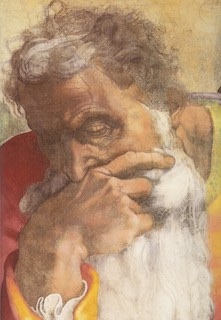


A strange sight was witnessed on the USSR Central TV on November 6, 1989: a deep-voiced, silver-haired priest of dignified appearance addressed viewers in a program called “Eternal Questions.” Such an event was unprecedented at the time, both for the Soviet audience and the state-run television alike. So much so that his ecclesiastical title—archpriest—was misspelled. What the audience could not have known at the time is that the speaker had been explicitly forbidden to use the word “God” in his 10-minute TV appearance. He spoke about a person’s inner world, the meaning of life, and eternal values. This first homily on the Soviet Central television can still be studied as a model of Christian kerygma, of how to express a man’s profound longing for higher meaning, something the priest has masterfully accomplished. The priest’s name was Fr. Alexander Men.
When religious freedom finally arrived in the Soviet Union, Fr. Alexander became a public figure, recognizable in every household throughout the USSR. Over the next two years, he delivered around 200 public lectures, speaking at Houses of Culture, universities, public schools, and even in stadiums. With his wide breadth of knowledge, he was able to get his message across to a broad audience of the Soviet people who were thirsting to hear the Good News, which had been largely out of their reach during their recent past dominated by Communist ideology. Still, the main audience in Fr. Men’s thirty years of priestly ministry was the Soviet intelligentsia—people of science, education, and culture.
On the early morning of Sunday, September 9, 1990, Fr. Alexander was on his way to Divine Liturgy when he was approached by a stranger. The stranger handed him a written note. (It is still a common practice in Russia to convey most intimate requests to a priest via a note.) Fr. Men put on his glasses, unfolded the paper and began to read. Suddenly, he was struck on his head with an axe by a second stranger from behind. Bleeding, he slowly continued on his way to church. “Who did this to you, Father Alexander?” asked a woman who came upon the bloodied priest. “No, it was no one. Just me.” He turned around and began walking back; as he reached the wicket gate of his house, he collapsed. His murder, unsolved to this day, sent shock waves across the whole country.
Alexander was born in Moscow in 1935 to secular, well-educated Jewish parents. His mother raised Alexander as an Orthodox Christian, after she had converted to Christianity and received baptism on the same day as her 6-month old son. It was the time of what became known as “the godless 5-year plan,” during which the Soviet authorities resolved to erase any mention of God. The anti-religious campaign was in full swing; even the calendar was transformed from a normal 7-day week into a 6-day week to make Sundays, along with religious holidays, fall onto work days. During that time, simply to believe was an act of bravery, and, since 1920s, a large portion of the remaining Russian Orthodox Church had gone underground in order to preserve their faith. From the early days and throughout his life, Alexander, through his mentors, stayed connected to the spiritual heritage of that part of the pre-Revolution Russian Orthodox Church best embodied by men such as the priest-saints Alexius and Sergius Mechevs and St. Nectarios of Optina. Already at the age of 12, young Alexander purposed in his heart to become a priest.
In 1953, the year of Stalin’s death, Men, who was fond of biology, began his university studies in the Moscow Fur-and-Down Institute. The Institute was transferred to the city of Irkutsk in Siberia in 1955. In 1958, when Alexander was set to graduate, he was expelled without a degree from the Institute because of his religious beliefs. The combination of Alexander’s outstanding intellect, superb social skills, and deep Christian faith was a bête noire for the Soviet system. Yet God’s hand was on the life of the future “apostle to the Soviet intelligentsia”: one month after he was expelled, Alexander was ordained a deacon; two years later, he graduated from the Leningrad Theological Seminary and was ordained a priest. In 1965, Fr. Alexander completed his studies in Moscow Theological Academy, done mostly through independent study, something he continued to pursue all his life, to his last day.
To put Men’s writings into context, we must understand what motivated him to become a voice for Christianity to his own people. The Soviet culture was categorically anti-religious, viewing any type of faith as its ideological adversary. All educational and social institutions upheld and coercively indoctrinated the materialistic creed that “science had proven that there was no God.” Materialism and atheism reigned uncontested in all quarters of society; any public mention of God, other than in a derogatory way, was considered scandalous. In the face of these universal anti-religious sentiments, there was Alexander Men, with his deep convictions, inner strength, wide erudition, and his unwavering belief in the power of Christ’s eternal message to reach his ideology-laden contemporaries.
Already as a college student, when Alexander had to take the State Examinations on political economy and Marxism-Leninism, he demonstrated his erudition and knowledge of these topics but refused to kowtow to the prevalent views or hide his Christian convictions. Needless to say, he had to suffer the consequences, but, providentially, his expulsion from the university solidified his path to priesthood and the life of ministry. During the 1960s, priests were limited to “church confines” with any activity outside the church walls strictly forbidden and all the happenings inside being closely monitored by the state security agents. The main focus of Fr. Alexander Men was to reach people with the message of Christ, for which he constantly sought new and creative ways. Fr. Alexander’s scholarship is marked by a deep understanding of the Christian message and how to convey this message to his main audience—people educated in the atheistic Soviet system. Because he could not publish in his home country, all his major writings were first published under a pseudonym abroad.
The breadth of Men’s views is sometimes confused with him being indiscriminate or insufficiently Orthodox in his convictions. However, Fr. Alexander’s living out the words of St. Paul, “I have become all these things to all, so that by all means I might save some” (1 Cor 9:22), points to the true source of his breadth. His numerous spiritual children and millions who have been reached with the profound message of Christianity remain a living legacy to his labors. Furthermore, the leading hierarchs in the Russian Church, men such as Metropolitan Anthony of Sourezh and Patriarch Kirill, highly praised Fr. Men’s works and his character as a priest.
Fr. Alexander’s own voice in his defense can be heard in his response to an anonymous critical letter by another priest. This response, given as an Appendix to Vol. 1, showcases Fr. Men’s scholarly approach to biblical studies and outlines his way of thinking by demonstrating that his approach does not constitute a novelty in the Church but, rather, extends the work of ancient Church Fathers in general and, in particular, the tradition of scholarship exhibited at the heyday of the Russian Church prior to the Bolshevik Revolution (and later continued by the Russian emigration, e.g., in St. Sergius Institute in Paris). Fr. Men’s works do not produce final answers to many of the questions being posed; he only exemplifies how to boldly engage the world with the goal of “unpacking” Christianity as a sanctifying force transforming humanity—an effort that requires prayerful and diligent work of today’s Christians. As such, Fr. Alexander Men was realizing Fr. George Florovsky’s famous thesis of “forward, to the Fathers!”
The first volume of History of Religion: In Search of the Way, the Truth, and the Life, this book, is a condensed version of Men’s magnum opus under the same title, which consists of seven volumes. Men’s original work was more academic in nature even though it was written for the broad Soviet audience in mind. Fr. Alexander always prized a broad education and had plans to publish a more accessible version of his History of Religion. His untimely death stood in the way of his plans; this work was continued by his friends and family who condensed each of the seven volumes into the seven chapters of the present book.
The second volume, The Paths of Christianity, provides a daring overview of the history of the Church in the first millennium, ending with the Baptism of Russia. In it, Fr. Men presents the history of the Good News spreading and taking root in medieval cultures. He does so without glossing over the more controversial aspects of Church history, adopting, so to speak, the vantage point of the Heavenly City of St. Augustine. The second volume is based on Fr. Alexander’s (incomplete) book The First Apostles (Chapter 1) and his notes on the history of the Church (Chapters 2 and 3) that he first prepared when he was still a young man, around the age of twenty. Similar to the first volume, Volume 2 acquired its final shape at the hands of Fr. Alexander’s friends who continued his work posthumously. As textbooks, both volumes are conceived to be accessible to entry-level undergraduate students.
As the translator, I felt that there was a considerable value in incorporating references to all the citations and expanding footnotes found in the original seven volumes and Men’s The First Apostles (but not available in the Russian edition of these textbooks). At times, when Fr. Alexander was paraphrasing rather than directly quoting his sources, a preference was given in this translation to quoting the original, indicating with square brackets and ellipses whenever the text was modified in some way. An index was also included to help those who want to use these books as a reference.
Since Fr. Alexander was a biblical scholar himself, who knew biblical languages and translated certain biblical passages directly from the original, none of the quotations of the Bible follow a particular English translation unless explicitly stated otherwise.
Fr. Alexander placed much importance on visuals to reach the audience with his message. Most of the illustrations found in these two volumes follow the Russian edition, but, in some cases, they have been replaced with thematically suitable alternatives. The original dating of some illustrations and artifacts has been changed to reflect the more recent sources for dating.
Like the Russian version, each of the two volumes has a section with suggested Further Reading. Whenever a suggested book was not available in English, this translation offers an alternative reading covering the same area. However, a more glaring gap exists in the reading list for the second volume, The Paths of Christianity, which, in its Russian version, includes the works of many excellent church historians of the pre-Revolution era and the first half of the 20th century (e.g., Vasily Bolotov and Anton Kartashev), experts in Eastern Church patristics (e.g., Archim. Cyprian Kern), and Soviet researchers of Byzantium (encyclopedias on Byzantine culture and writings)—the sources available only in Russian today.
On a personal note, as the translator, I have come to appreciate Fr. Men’s works in my own spiritual journey. My hope, as well as the motivation for taking on this task of translation, has been that these books will provide some wisdom and guidance in how to better navigate, reconcile, and integrate the deep spiritual heritage of humanity and of the Church with many of the challenges that face the modern world and society.
I want to acknowledge the help of many friends and family who contributed to improving this translation. Samuel Carthinhour, Waymon Lowie, and Maury Tigner spent countless hours poring over and improving my at times rugged translation. Holly Dzikovski, Matthew Andorf, and Gregory Fedorchak made many useful remarks on Volume 1. I am indebted to Hugh and Arlene Bahar for many excellent suggestions on how to improve both Volumes 1 and 2. Finally, this work would not have been possible without the continued love and support of my entire family: my wife Natalie, and sons Samuel, Alexander, and Matthew. Whenever any of the text reads fluidly, special thanks go to Natalie, whose graceful touch has enlivened not only this translation but imbues every day of my life with meaning and color.
Ivan Bazarov
May, 2021
Alexander Men’s scholarly legacy is striking in its versatility and breadth of scientific outlook. When looking back at his work in the areas of biblical scholarship, religious studies, cultural history, and literature, one cannot but be amazed by the vast volume of his writings. A prominent figure of the Russian Orthodox Church, a biblical scholar, a theologian, and a preacher, he accomplished in his short life the amount of work that rivals that of a group effort.
His deep academic research was combined with his active life as a preacher. He lived his life at its fullest: serving as a parish priest, writing books and articles, lecturing at schools and universities, and appearing on radio and television. Fr. Alexander gave himself fully to serving God and people.
The future pastor was born in 1935. Even in his early youth, Alexander already realized his calling to become a priest. During his school and University years, he voraciously acquired and broadened his religious knowledge. We should not forget that his youth was lived in a time of rampant atheism when believers were under extreme pressure from both the state and society. Preserving and protecting faith under those conditions was nothing short of a moral feat.
All of Alexander Men’s scholarship and priestly activities were distinguished by his inner dignity. A man of encyclopedic knowledge, he was always open to the great Truth. The main work of his life is a series of books on the history of religion, as well as a book about Jesus Christ, The Son of Man. In them, Fr. Alexander traces a spiritual history of mankind—its search for the meaning of life. In his works, he showed that these searches are essentially an ascent to Truth, that is Christ.
A prominent biblical scholar, Alexander Men was dreaming of writing a textbook on the history of religion. The priest’s tragic death in 1990 put an abrupt stop to his plans. The ambitious project was never completed, but Fr. Alexander’s books and his priceless scholarly archive have remained. The work to create the textbook was continued by Alexander Men’s friends and family.
The textbooks, presented to the readers under the general title of History of Religion, are based on the materials of the books written by Fr. Alexander. The compilers considered it their duty to preserve his inimitable style—so memorable to everyone who had the good fortune of hearing this remarkable man speak.
The first book, In Search of the Way, the Truth, and the Life, explores the origins of religion and early beliefs—from prehistoric mysticism to the idea of a living God. The book recounts the emergence of the ancient Israel’s religion that gave the world the liberating fire of Light and Truth, the coming of the Messiah, His earthly life, and the victory over death. We learn that the spiritual quest of humanity was embodied in the person and teachings of Jesus Christ, that His birth, for the most profound reasons, was the beginning of a new era—the era of the triumph of Truth.
The second book, The Paths of Christianity, covers the first millennium AD. It outlines the spread of Christianity, the missionary activities of the disciples of Jesus, the first Christian Empire, the Church Fathers, the causes of the Great Schism, and the Baptism of Russia. The author reveals the mystery of thousands upon thousands joining the Church through love, which is extremely important today for the spiritual revival of Russia.
Alexander Men does not idealize Christianity—he shows the real picture of the Church’s life, without glossing over its dramatic sides: dissenting views, schisms, heresies, and outbursts of fanaticism. The author’s moral principles compel him to present a fair and unprejudiced account of these topics.
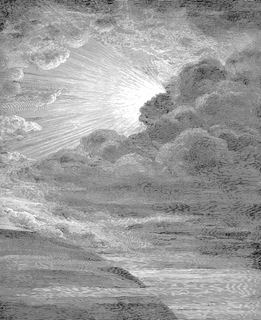
Religion has always been at the core of human spirituality. In search for God, humanity had trod many paths—from world-denying mysticism to God-denying materialism. At the end of this journey came, using the words of the Bible, “the fullness of time”:[3] the world approached the Revelation of the greatest mystery, and humanity was granted the path to a perfect life.
Yet, people were granted the freedom to choose whether to accept the Gospel or to reject it. This freedom remained inviolable, sealed by the historical humiliation of Jesus of Nazareth, His death on the cross, and His utterly paradoxical teaching, all of which required an act of faith to be embraced.
In vain, people sought to impose their own standards onto Christianity: some demanded signs, others—philosophical proofs. But the Church spoke through the mouth of the Apostle Paul: “We preach Christ crucified, to the Jews a stumbling block and to the Greeks foolishness” (1 Cor 1:23).
And yet the Gospel entered the history of mankind not as a human but as a Divine message. Having won over many, it has remained a stumbling block and foolishness to others. Some, having received it, stumbled afterwards. Yet the world had nowhere else to turn but back to myths and illusions that had captivated the human spirit in the pre-Christian era. A departure from Christ inevitably meant a return to Buddha or Confucius, Zarathustra or Plato, Democritus or Epicurus.
The author of Ecclesiastes was right when he wrote, “There is nothing new under the sun” (Eccl 1:9). When one examines any of the teachings that have emerged over the last twenty centuries, it becomes evident that they are merely a repeat of what came before.
Relapses into pre-Gospel consciousness are common even among Christians. Such reversions manifest themselves in detached spiritualism,2 authoritarian intolerance, and magical ritualism. This is easy to understand: two thousand years is not nearly enough time to overcome “paganism” and accomplish the goals that the God-Man has set before humanity. And these goals are truly absolute and inexhaustible. It can be said that the “leaven”[4] of the Gospel has just begun its transformative action.
∗∗∗
History does not know a single nation that has been completely devoid of religious beliefs. Even atheists cannot be considered unbelievers in the true sense of the word. The ideological myths that they take for granted are essentially a religion in disguise. As a result, atheism has its own “beliefs” that aspire to bring some sense into the apparent absurdity of life, with the goal of reconciling people to an emptiness that they by their very nature cannot accept.
There is something both tragic and mystifying in the atheist’s aspiration to hide from the abyss of the indifferent Universe, from the cold and empty heavens. The atheist experiences not only fear and anxiety, but also an unconscious pull toward the very things that materialism vehemently denies—Meaning, Purpose, and intelligent Provenance of the cosmos.
The human soul has always sought beauty, goodness, and divine qualities that are worthy of worship. Should this be dismissed as a meaningless self-illusion? Isn’t it more natural to admit that, just as a physical body is connected to the material world, so the soul gravitates toward an unseen Reality? And is it not significant that when a person turns away from that Reality, superstitions and secular3 “cults” take religion’s place instead? In other words, turning away from God inevitably leads to some form of idolatry.
It is bad enough when places of worship are vacant, but it is even worse when the buildings are full while the hearts of those who come remain empty. Keeping external rituals is not always the best indicator of a faith’s well-being; nor does low attendance, in itself, signal a decline of the faith. Moreover, outward forms of church life have always changed in the past and will continue to do so in the future.
Even having lost God, people passionately seek the absolute. Religion remains the most personal form of human activity. This is precisely why it is in religion that the human spirit, lost in the labyrinths of civilization, again and again finds a solid foundation and inner freedom. The true self, as the highest manifestation of what it means to be human, will always find a stronghold in the Sacred.
The famous physicist Max Born, speaking of the abyss into which civilization is heading, stressed that only religious ideas can restore health to human society. “At the present time,” he wrote, “fear alone enforces a precarious peace. However, it is an unstable state of affairs, which ought to be replaced by something better. We do not need to look far in order to find a more solid basis for the proper conduct of our affairs. It is the principle that is common to all great religions and with which all moral philosophers agree; the principle which in our own part of the world is taught by the doctrine of Christianity.”[5]
Those who speak of the “death of religion” are either short-sighted, intentionally blind to reality, or simply misinformed.
Today, more than ever, the words of the Apostle Paul, spoken two thousand years ago, ring true: “We are considered as dying, and yet we live on” (2 Cor 6:9).
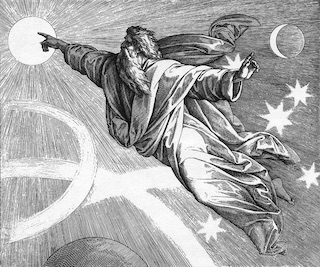
What is faith? Scientists and theologians have defined it differently and often in contradictory ways. For example, religion has been associated with a sense of moral duty (Kant), a sense of dependence (German theologian Schleiermacher), and even with the fear of the unknown (English thinker Russell).
We will not entertain the ideas of the Lumières (“Enlighteners”) that religion is the product of deliberate deception. Atheists themselves have long abandoned this view. But much more stubbornly they held on to another 18th-century concept: that religion is the product of ignorance of primitive men who did not know the laws of nature. Such statements are still commonplace in anti-religious literature. However, faith lives on even when human knowledge about nature deepens; it is practiced by those at the highest rungs of the intellectual ladder.
The specific beliefs of a people group are largely influenced by historical, geographical, and ethnic factors. Yet religion transcends them: this explains the remarkable spiritual unity that often arises among peoples separated by psychological, racial, and historical barriers. Conversely, nations can share ethnic, economic, historical, and geographical commonalities and yet differ significantly in their spiritual outlook. “The ultimate barriers between people,” writes the English philosopher and historian Christopher Dawson, “are not those of race or language or region, but those differences of spiritual outlook and tradition which are seen in the contrast of Hellene and Barbarian, Jew and Gentile, Muslim and Hindu, Christian and Pagan. In all such cases, there is a different concept of reality, different moral and aesthetic standards, in a word, a different inner world. Behind every civilization there is a vision—a vision which may be the unconscious fruit of ages of common thought and action, or which may have sprung from the sudden illumination of a great prophet or thinker. … But while an intellectual or spiritual change will produce far-reaching reactions upon the material culture of a people, a purely external or material change will produce little positive effect unless it has some root in the psychic life of a culture. It is well known that the influence of the material civilization of Modern Europe on a primitive people does not normally lead to cultural progress. On the contrary, unless it is accompanied by a gradual process of education and spiritual assimilation, it will destroy the culture that it has conquered.”[6]
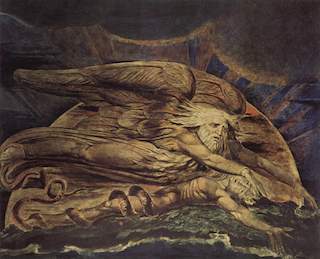
A culture that abandons its religious foundations invites decay. True cultural flourishing, by contrast, is impossible without a vibrant spiritual life.
What would the history of Israel be without the Bible, or what would European civilization be without its influence? What would Western culture be without Catholicism, Indian culture without its religions, Russian culture without Orthodoxy, Arab culture without Islam? Crisis and decadent phenomena in culture, as a rule, are associated with a weakening of its religious impulse, which leads to degradation and stagnation in creativity.
Most definitions of religion speak almost exclusively of the psychological prerequisites of faith, but we are interested in its core essence.
Religion is the mind’s response to Existence; the whole question is how to define Existence itself. Materialism reduces it to unintelligent causes, whereas religion sees an ultimate Divine Essence as its foundation and recognizes itself as a response to the manifestation of this Essence.
Material existence is apparent to us—but how can we apprehend the Existence of the Divine? Since the Ultimate Existence cannot be seen or heard, how can we know whether It is real?
Faith is assurance of a reality experienced internally and intuitively, not based on external facts or formally logical proofs.
The study of nature in many ways relies on intuition; the role of intuition is even greater when it comes to understanding the essence of existence itself. The great Catholic thinker Thomas Aquinas said that if man’s path to God had lain through abstract philosophical thinking, then faith would have been accessible only to the tiniest minority. In reality, we observe that spirituality is inherent to both an illiterate peasant in India and a scientist in Europe who has reached the pinnacles of modern knowledge. This is possible precisely because spiritual knowledge is a product of a living intuition.
In its most general terms, religion can be defined as an experience connected with the awareness of the presence of a certain Highest Principle in our lives that guides our existence and gives it meaning. This experience is acquired through a direct awareness of the Supreme, which reaches the same level of authenticity as self-awareness. And this experience cannot be distilled into notions and symbols unless it is first processed intellectually.
Plotinus, an eminent philosopher of the Hellenistic world, put it like this: our awareness of God comes “not by way of reasoned knowledge… but by way of a presence superior to knowledge.”[7]
Religious experience cannot be reduced to any other dimension of human existence and is best defined as a sense of awe. Einstein once said: “the most beautiful thing we can experience is the Mysterious…. He to whom the emotion is a stranger, who can no longer pause to wonder and stand wrapped in awe, is as good as dead…. To know what is Impenetrable to us really exists, manifesting itself as the highest Wisdom and the most radiant Beauty—this feeling is at the center of true religiousness.”[8]
The most important thing is that a person through and in oneself can discover an “other” type of existence, distinct from nature. And the more intense and perfect is the process of human self-discovery, the more authentic this unseen world emerges being. “To mount upward to God,” said the French philosopher Gabriel Marcel, “is to enter into oneself, moreover, into the depth of oneself—and to transcend self within.”[9]
Our spiritual “self” is a window into the world of the universal Spirit. Just as harmony with nature is the basis of one’s life on earth, so, too, does connection with the Supreme determine one’s spiritual existence. Henri Bergson (French philosopher, 1859–1941) saw the mystical experience not only as a means of a breakthrough to the union with the Divine, but also as a key to further development of humanity.
The question of the origin of the Universe has always captivated mankind, especially people of science. Jean-Jacques Rousseau (Enlightenment thinker, 1712–1778) wrote over two hundred years ago: “The mind is confused and lost amid these innumerable relations, not one of which is itself confused and lost in the crowd. What absurd assumptions are required to deduce all this harmony from the blind mechanism of the matter set in motion by chance! In vain do those who deny the unity of intention manifested in the relations of all the parts of this great whole, in vain do they conceal their nonsense under abstractions, coordination, general principles, symbolic expressions, whatever they do I find it impossible to conceive of a system of entities so firmly ordered unless I believe in an intelligence that orders them. It is not in my power to believe … that blind chance has brought forth intelligent beings, that that which does not think has brought forth thinking beings.”[10]
Einstein is known to have admitted: “My religiosity [is] deeply emotional conviction of the presence of a Superior Reasoning Power, which is revealed in the incomprehensible Universe.”[11]
The materialists put in the place of this Superior Reasoning Power something they refer to as “matter.” But if reasoning power is inherent to this “matter” then it is no longer matter.
At first, the technical advances and scientific theories of the 19th century purported to confirm materialism—invariably the view of science communicators, philosophers unversed in science, and scientists who knew little philosophy. In the 20th century, materialism had to make a concession under the influence of discoveries in physics and biology: “matter” became a term to describe any objective reality.
But the main inner “nerve” of materialism remained unchanged. That nerve was the denial of God. To the forefront came the emotional pathos of theomachism, or God-fighting, rather than problems of science and philosophy.
Marx’s protest against religion was motivated by his political struggle, inasmuch he identified religion with extreme conservatism. Lenin’s atheism was just as highly emotional, devoid of any “scientific” character.
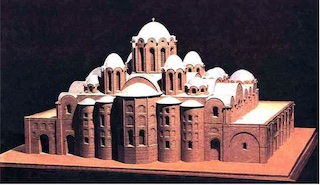
The “scientific worldview” referred to by atheists is in itself a rather contested phenomenon. There is no evidence that all of existence is amenable to scientific analysis. One’s worldview always has its roots grounded in faith or conviction that goes deeper than the scientific level.
No longer do people look for answers to questions concerning chemistry or geology in the Holy Scriptures, nor does Christianity make itself dependent on constantly changing scientific insights. People sought God at all times: first, when they considered the Earth to be flat, then, as a planet anchored at the center of the solar system, and later, when they put the Sun in that central place.
The main point of contention between materialism and religion—the question of the origin of the Universe—lies outside the realm of experimental science. Materialists claim that the Universe is infinite in both time and space. But what scientific experiment can possibly penetrate that which is infinite and unoriginate? Are we simply to accept the materialists’ claim that a creative Origin outside spacetime could not have possibly been the cause of the infinite Universe?
Since the Middle Ages, some theologians have expressed the opinion that the Universe might not have had a “beginning” in time, for God’s creative act must be timeless4 by nature.
The more natural science progresses, the clearer it becomes that learning about the very foundations of the world lies beyond science. It is not surprising, therefore, that the majority of the foremost scientists who enabled scientific progress found the idea of God, the Creator of the Universe, full of deep meaning and vital significance.
Personal spiritual experience, paths of reason, and advancement of science can all lead to the highest Reality.
“The most immediate proof of the compatibility of religion and natural science,” wrote Max Planck (German physicist, 1858–1947), “is the historical fact that the very greatest natural scientists of all times—men such as Kepler, Newton, Leibniz—were permeated by a most profound religious attitude.”[12]
Carl Linnaeus, the creator of biological taxonomy, stated that he saw the power of the Creator in the diversity of living beings. Lomonosov (Russian polymath, 1711–1765) called faith and knowledge the two “daughters of one Almighty Parent.”[13] Pascal, Newton, and Faraday were all theologians. Pasteur professed that he used to pray in his laboratory, and Francis Bacon believed that “a little philosophy inclineth man’s mind to atheism, but depth in philosophy bringeth men’s minds about to religion.”[14]
The Divine Reality remains intimate and does not overwhelm people with overbearing evidence, thus preserving our freedom before God. Getting to know God is a gradual process that takes place in strict accordance with the person’s readiness for the mystical Encounter. God, as it were, remains hidden from direct perception. Step by step, He comes into people’s consciousness through nature, love, the sense of mystery, and the experience of the Sacred. This also explains the historical diversity of religions, which reflects the various stages and levels of knowing God.
Nevertheless, it is appropriate to discuss the properties shared by various religions. These reflect both the unity of human nature and the kinship of experiences that evoke the sense of the Supreme and the thought of Him. Although faith can be obscured by egoism, self-interest, and primitive fear, its true core—the sense of awe—is shared by both a heathen and a follower of one of the world’s major religions. At some point in life, even an atheist partakes of this feeling and experiences a closeness to an “unknown God” (see Acts 17:22–23).
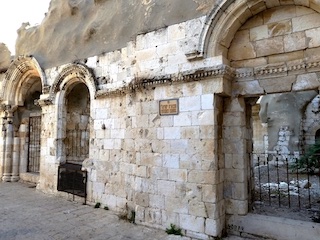
A special spiritual and moral inner preparation is necessary in order to come into contact with the Divine. “Never can the soul have a vision of the First Beauty unless it itself be beautiful,” Plotinus wrote, “Therefore, first let each become godlike and each beautiful who cares to see God and Beauty.”[15] That is why the great saints were “God-seers”—their souls became an instrument for knowing God. And millions of pure hearts who sincerely loved the Truth have followed in their footsteps. The difference between knowing God for religious geniuses such as Francis of Assisi, Teresa of Avila, Meister Eckhart, Seraphim of Sarov, and the Optina elders on one hand, and ordinary people on the other, is as follows: the former sought the Divine life with their whole being and became its bearers; whereas the latter experienced encounters with God as occasional flashes of lightning, separated by long periods of darkness. The former rose to such heights of contemplation that were beyond all power of words to describe. Therefore, when they attempted to convey what they had comprehended, they were able to express only a tiny part of their actual experience.
An encounter with God takes place in the life of every person, and religious experience is therefore a universal theme. The outcome of this encounter differs depending on whether a person is ready for the opportunity or passes it by. The calling of the Unseen is often perceived through a prism of prejudices and distrust of anything that falls outside the everyday life experiences. Sometimes this call is heard by a lethargic and limited soul or one subject to primitive interests and goals; in both cases this call is to remain the “voice of one crying in the wilderness” (see Mt 3:3; Mk 1:3; Lk 3:4; Jn 1:23). For, indeed, the soul that did not respond to the Divine call is a spiritual desert.
“I had lived only when I believed in God,” wrote Leo Tolstoy in his Confession, “Then, as now, I said to myself: as long as I know God, I live; when I forget, when I do not believe in him, I die.”[16] A drastic change in the mindset of a believer due to his encounter with Eternity is reflected in his entire being and his every action. The Prophet Isaiah or Buddha, Muhammad or Savonarola, Gus or Luther, and other spiritual leaders radically transformed their social milieu, and these changes have endured for centuries.
“The history of all times and nations,” said Max Planck, “teaches us that exactly in the naïve, unshakable belief, furnished by religion in active life of believers, originate the most intense motives for the most significant creative performance, not only in the field of arts and sciences but also in politics.”[17] Indeed, it is impossible to overestimate the inspiring role of faith in the lives of great thinkers, poets, artists, scholars, and reformers.
The believer does not close his eyes to the evil of the world, but at the same time, he refuses to recognize it as invincible. He can confidently say along with Albert Schweitzer (protestant theologian, 1875–1965): “My knowledge is pessimistic, but my willing and hoping are optimistic.”[18] This is why, in spite of everything, our simple human life can sparkle with colors of eternity.
The word “religion” comes from the Latin verb religare, which means “to bind.” It is the force that binds the worlds, a bridge between the created and the Divine spirits. Strengthened by this connection, a person becomes a co-participant in the creation of the world. God does not enslave people, nor does He coerce them to go against their will, but, on the contrary, He grants them complete freedom, including the ability to reject Him and seek their own ways.
The fullness of existence, not abject subservience, is brought about by union with God. The historian of religion Otto Pfleiderer wrote: “Man is not afraid that, by this free obedience or surrender to God, he will lose his human freedom and dignity; but, on the contrary, he is confident that, in the alliance with God, he will achieve freedom from the limitations and fetters of surrounding nature, and those worse limitations and fetters of nature within us…. As Seneca said long ago: to obey God is to be free.”[19]
Life in faith is inseparable from the struggle for the triumph of good, the struggle for all that is light and beauty; it should not be a passive expectation of “manna from heaven,” but a courageous confrontation with evil. Religion is the true foundation of moral life. We find no foundation for ethical principles in nature.5 According to a witty remark by the biologist Thomas Huxley,[20] the thief and the murderer follow nature just as much as the philanthropist (and the former to a greater degree!). An objection could be made that morality is dictated by one’s duty to society. Yet the very realization of this duty is, in turn, nothing more than a moral conviction. On the other hand, the denial of meaningful existence, the denial of God, paves a path to the triumph of unbounded egoism and infighting.
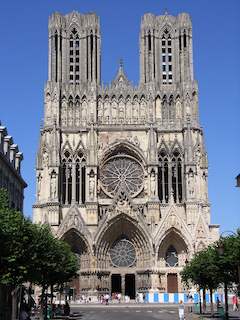
Often, people pose a painful question: why is there so much evil in the world? How do we reconcile the revelation of the Creator’s omnipotence and God’s goodness with the evil reigning in the world? Pain and death, to which all living creatures are subject, imprint their terrible mark on all our lives. Death engulfs life. Chaos overwhelms orderliness. Processes of creation are being constantly undermined by the forces of destruction.
Christianity agrees that existence itself bears the traits of imperfection and that cosmogenesis6 is inseparable from the conflict of the two polar opposing principles. The Bible, however, when speaking of the world as God’s creation, views the Universe as something dynamic, something being brought to perfection. The Old Testament knows about the forces of Chaos, but it does not deify them. Instead, it sees only a created principle in them that opposes the Creator’s intent. According to the Bible, God cannot be the source of evil. Evil is a violation of the divine plan by the creation, and not merely “a delay on the road to perfection”[21] as Ephraim Lessing (German author, 1729–1781) put it.
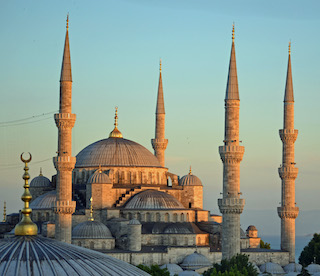
The images of the monsters of Chaos and Satan, which we find in Scripture, signify that a catastrophe has occurred in the spiritual world. It was there that the hotbed of demonic “self-will” arose, a revolt against harmony, which echoed throughout all nature. The apostle Paul says, “The whole creation groans and labors with birth pangs together until now” (Rom 8:22). “For the creation was subjected to futility, not willingly, but because of him who subjected it” (Rom 8:20). These words point to the dependence of the present state of nature on the universal Fall. Could the irreversible nature of physical time itself with its relentless cruelty be the affliction imposed on the Universe? After all, the Apocalypse predicts that there will be no time in the coming Kingdom (Rev 10:6).
This view may seem to be a denial of Divine Omnipotence. But Christianity teaches that any act of God in relation to the world constitutes self-limitation on His part or, as the Church Fathers put it, the kenosis (“emptying”) of the Absolute. It is precisely this kenosis that leaves room for freedom in the creation without distorting the image of the Creator.
The Russian religious philosopher Nikolai Berdyaev writes: “A non-religious mindset might question the deed of God and seize upon this, that it might have been done better, had God happened to enforcedly create the cosmos, creating people incapable of sin, all at once to bring being into that perfect condition, in which would be no suffering and death, and people would incline only towards the good. This rational sort of plan to creation dwells wholly within the sphere of human limitedness and it does not raise into awareness the meaning of being, since the meaning is bound up with the irrational mystery of the freedom for sin. A forced and compulsive outward extirpation of evil from the world, along with the necessity and inevitability for the good—this would ultimately be in contradiction to the dignity of every person and to the perfecting of being, hence a plan, not corresponding to the intent for Being as absolute in all its perfections. The Creator did not create amidst a reinforced necessity a perfect and good cosmos, since such a cosmos would neither have been perfect nor good at the core of its foundation. The foundational basis for perfection and good—consists in freedom, in the freedom of love towards God, in the freedom of a co-uniting with God, and this character trait of every perfection and good, of every being renders inevitable the world tragedy. In accord with the plan of the creation, the cosmos is given as a task, as an idea, which freedom of the creaturely soul ought to creatively realize.”[22]
Creation is Logos7 overcoming Chaos oriented towards That-which-is-to-come. Thus, struggle is the law of the creation of the universe, the dialectic of its coming into being.
According to the views of many ancient peoples, the Creator is a craftsman shaping utensils necessary for life with His own hands. For example, some Egyptian reliefs depict the god Khnum making man with the help of a potter’s wheel. In India and Greece, the world was believed to be born out of the depths of the Deity.
Only biblical teaching has opposed all shades of paganism and pantheism8 with the idea of creation as an act of Divine Will, Reason, and Love. This act is a link binding the Absolute with all of creation. According to Scripture, the creative power of the Word of God, having summoned the creation from nonexistence, constantly nourishes it and maintains its existence.
The Bible pictures cosmogenesis as an ascent from the lower to the higher state, from inorganic matter to highly organized beings—humans. Naturally, this concept of the Universe’s origins was expressed in a form that corresponded to the level of knowledge and mentality of that distant era when the book of Genesis was being written. However, the creation imagery is not simply a reflection of ancient modes of thought: the sacred author was expressing a mystery, which by its very nature is best conveyed symbolically. “In the beginning God created the heavens and the earth.”[23] These words are not a statement of scientific fact, but rather are a representation of reality using the language of Myth in the highest and most sacred sense of the word. In order to convey the incomprehensible, abstraction must give way to picture, image, and symbol—elements inherent to the language of all religions.
Intuitive insights in the form of a myth often anticipate the development of science. It is in the Bible, rather than in Greek, Babylonian, and Indian writings, that we encounter for the first time the concept of the world as History, Becoming, and Process. The myths and philosophical systems of Antiquity essentially stood outside the categories of past and future; they viewed the Universe, replete with gods, humans, and lower beings, to be in an eternity of repetitive cycles. It was in the prophets of the Bible that the world’s inner yearning for perfection first came to light.
When Darwin’s theory of evolution came onto the scene in the 19th century, opponents of religious faith enthusiastically adopted Darwinism as their credo, vehemently attacking the biblical “days of creation.” As a result, Darwinism became something of a bugbear to pious believers provoking panic among them.
One of the first to realize the genuine religious significance of evolution was none other than the grandfather of Charles Darwin—the poet and naturalist Erasmus Darwin. “The world itself,” he writes in his Zoonomia, “has been gradually produced from very small beginnings, increasing by the activity of its inherent principles… What a magnificent idea of the infinite power of the great Architect! The Cause of causes! Parent of parents! The Being of beings! For if we may compare infinities, it would seem to require a greater infinity of power to cause the causes of effects, than to cause the effects themselves.”[24] These words aptly sum up the essence of the Christian approach to evolution. According to the Bible, the very existence of the world depends on the Creator who sustains the Universe by His creative power; hence the concept of the “ongoing creation.”
According to the Christian understanding, evolution is not simply a movement forward, but also a return of the created order to the ways originally set out by the Creator. It reveals the purpose of the evolutionary development aimed at creating humanity whose calling is to spiritualize the world, opening it to new creative acts of God. This is the meaning of true progress from the point of view of faith. Science, on the other hand, can only study the forms and stages of nature’s formation, and as such, it is still a long way from unravelling the entirety of factors governing evolution.
Following the emergence of the basic building blocks of matter, the second miracle of nature was life, which Erwin Schrödinger (Austrian physicist, 1887–1961) called “the finest masterpiece ever achieved along the lines of the Lord’s quantum mechanics.”[25]
The third miracle made manifest was humankind itself, which became an even more miraculous upheaval than the emergence of life. For the first time in the history of our planet, the Force that moves the worlds, the Cosmic Intelligence, hidden behind the world of phenomena, was reflected in a personal, sentient being. The Universe—both inanimate and animate—had been blindly and unconsciously following the evolutionary path until the first human beings appeared, that moment when the Universe received a soul, an intelligence, and a creative gift in humanity, opening the way for creation to rise to its highest point.
Anthropogenesis9 is a unique phenomenon: all contemporary humanity constitutes a single species. It is hardly possible to establish how this qualitative leap took place. It appears that the evolution of the psyche alone cannot fully account for the gap between the mind of the higher animal and the personal intellect of the human being. This step, as Pierre Teilhard de Chardin (Jesuit priest and paleontologist, 1881–1955) correctly noted, “could only be achieved at one stroke.”[26] Of course, the development of the mental capacity of primates had to prepare the ground and conditions for this revolution. But, in and of themselves, the human spirit and the self-consciousness of an individual—things that make humans human—are miracles in the natural world.
Science can retrace evolutionary stages in the development of the brain, but it can go no further than that. The brain itself, serving only as an indispensable tool capable of detecting the subtlest vibrations of the non-material side of reality, was to become a vehicle for the soul.
Only at the moment when the light of consciousness first burst into flame in a creature that acquired human form, when that creature became a personal self, only then were the two universal realms joined, i.e., nature and spirit. “The dust of the ground,” as the Bible refers to the psychophysical nature of man, became a bearer of a “living soul” (Gen 2:7).
“So God created man in His own image; in the image of God He created him; male and female He created them” (Gen 1:27). The Bible always speaks of God as Unseen Origin. Over the centuries, the topic of human God-likeness has attracted the attention of many theologians, philosophers of various schools, and scholars of the Holy Scriptures.
Although all matter carries an imprint of its intelligent origin, intelligence in nature is much like an unfinished “program”—it is faceless, “diffuse,” and dispersed. Only at the human level, this intelligence takes on the true “image and likeness” of its Creator. The universal Divine Reason, the Logos, manifesting itself in the evolution of the world, is most fully reflected through personal intelligence and conscious volition of man. The Divine is revealed to people as a Principle that transcends mechanical causality of the world, as supreme Freedom and Creativity—the two qualities that are also inherent to human nature.
God, as absolute Perfection, calls on humans to partake in the eternal perfection. This partaking goes beyond a small segment of our temporary existence: the pledge for attaining God-like perfection lies in the immortality of human personhood.
Christian anthropology discerns three levels in humans, which correspond to the threefold structure of reality and the ways of knowing it. The first level, most strongly connected to the external nature, is the body; the second, positioned at the borderline, is the soul or psyche; the third, and the deepest, is the spirit. The spirit forms the human “I” and those more exalted characteristics of human nature that reflect the “image and likeness of God.” The first two levels are common to both humans and other living organisms. But of all the creatures known to us, only humans have spirit. Body and psyche are subject to study by means of the natural sciences (the body, at any rate, entirely so); the spirit reveals itself primarily through the process of intuitive understanding and self-knowledge.
The first characteristic of the spirit is that it is realized through the self as personhood, capable of developing relationships with other persons. The Christian doctrine recognizes the infinite value of each person; it also stresses the importance of unity of individuals forming together a sublime spiritual Whole. In Christianity, this is called koinonia or sobornost, that is such a state of the Whole, in which all the parts retain their individuality and value with no detraction.
Another characteristic of the spirit is self-aware intelligence. It is this very capacity that enables us to deduce and comprehend the general laws of nature and society, cause-and-effect relationships, and the meaning of the processes occurring in the world. Conscious, rational activity distinguishes humans from nature so much so that the term “noosphere”10 is used to designate mankind.
The third characteristic of the spirit is freedom. Only humans can be the “masters of their own actions” and be held responsible for them. Animals are not free to choose—only people make choices. Moral assessment of one’s actions is a prerogative of human beings.
Of course, let us not forget that man’s willpower and his ability to rise above deterministic factors of nature are closely linked to the level of his spiritual development. A person can realize his potential for freedom only by the development, training, and cultivation of his higher spiritual abilities. Otherwise, this gift, as it were, is forfeited: being weighed down by his own base instincts and social pressures, man becomes unable to counteract them. After all, intellect, too, is a potential ability, and unless it is nurtured and trained, its capacity remains rudimentary. Children raised by animals are an example of this. Several such cases have been documented and studied. The great gift of reason in these children is like a seed thrown into the soil and left devoid of moisture and nutrients.
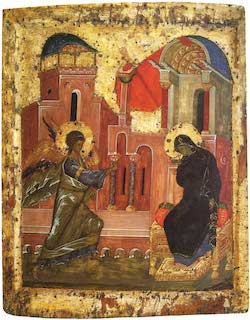
Thus, the formation and development of an individual are necessary conditions for revealing the person’s higher nature. One of the main traits of humanity, as indicated by our aspirations unparalleled in the animal kingdom, is in our ability to overcome purely biological boundaries. Human nature is such that the abundance of earthly blessings does not satisfy our desires or restrain our passions. We seek fullness and perfection, which biological existence alone cannot give us—neither can society or “public relations.” As people become acquainted with true freedom, they begin to develop higher and supernatural interests and yearnings. This capacity is a pledge of inexhaustible development of humanity.
The desire for freedom in humanity is so strong that even Marxists, who are inclined towards determinism, dream about a “leap from the realm of necessity into the realm of freedom.”[27] Moreover, Marx argued that this realm “lies beyond the sphere of actual material production.”[28] Despite that, he continued to view social and economic restructuring as the “basis” of freedom. While there is no doubt that the search for an optimal social system can serve the cause of true freedom, experience has repeatedly shown that without recognizing the rights of an individual and the spiritual foundations for these rights, the idea of liberation turns into its very opposite—dictatorship, violence, and slavery.
Such degradation also stems from the fact that the human need for freedom is accompanied by a fear of it. Without a focus on the Eternal, freedom can be frightening and instead give way to longing for slavery. According to Jean-Paul Sartre (French philosopher, 1905–1980), “Man is condemned to be free”[29]—a hidden terror can be sensed in these words. And yet genuine faith is unafraid of freedom: aware of all the difficulties that come along with this gift, it joyously embraces it, despite the fact that some representatives of religion have turned freedom into a cozy prison cell, thus corrupting true faith. Emmanuel Mounier (French philosopher, 1905–1950) once said, “Comfortable atheism and comfortable faith both meet in the same morass. For the one who remains faithful to the Gospel, the Apostle Paul’s precept ever lives: ‘You, brethren, have been called to freedom’ (Gal 5:13).”
The yearning for creativity, inseparable from the history of human culture, is also a realization of the spiritual dimension. Nikolai Berdyaev in his book The Meaning of the Creative Act considers creativity to be the principal distinguishing characteristic of humans which allows them to break “beyond the limits of the immanent world… towards another world.”[30]
In the creative process, a person becomes a partaker of the spiritual dimension of the world, and in this his God-like essence manifests itself with extraordinary power. That is why Michelangelo, working on his frescoes, saw his work as a divine service guided by the Spirit of God. According to Gustave Flaubert (French novelist, 1821–1880), artists are the “organs of God,”[31] by means of which He Himself reveals His Essence. Adam Mickiewicz (Polish poet, 1798–1855) in his work felt a “strength, beyond human.” Beethoven testified that in moments of musical inspirations, “God Himself spoke into his ear.” Aleksey K. Tolstoy (Russian writer, 1817–1875) dedicated a poem to the Divine nature of creative inspiration: “In vain, oh artist, you fancy yourself as the source of your works….”
The value of a genuine work of art lies primarily in the fact that its author has created a new world of its own. Colors and shapes, sounds and words become the language of the spirit.
It is no coincidence that creativity has a cosmic significance for Christianity: in it, humanity, as it were, continues the Divine act of creation. It is no longer “Earth” or “Water” with their insentient existence, but conscious beings, who create their own “second cosmos” and thereby become co-authors in the creative act of God.
That is precisely why the creative process lends itself to being perfected without limit. And that is why each master experiences dissatisfaction upon finishing his work, which spurs him on to a new creative search.
All our earthly creativity is a joy intertwined with a deep longing for perfection and the ideal. We sense great potentials within ourselves, which we are unable to fully realize: the horizon and aspirations are limitless, yet human life is but a moment of time. And this applies not only to our creative potential but also to those of freedom and intellect.
So why is there this discrepancy? Is this mismatch an unrecoverable tragedy of the spirit? If our yearning for truth, goodness, and creativity had only this fleeting nature of things for its foundation, then it would not have gripped humanity so powerfully. And since these impulses are inherent to us, they must have room for realization. Only in the perspective of an unending development of human personality, far beyond the present conditions of our existence, can this realization acquire its genuine latitude. Only then can intellect, conscience, freedom, and creativity lead human personhood to the heights of authentic God-likeness. In other words, the question of human potential is a question of human immortality.
Throughout time, people have possessed an awareness of the spirit's indestructibility, a sense as old as humanity itself. The remains from ritual burials of Stone-Age hunters speak to the early stages of belief in immortality. As a modern example, the “primitive” Bushmen, who still maintain a hunter-gatherer lifestyle, have a definite concept of immortality. According to their religion, the spirit of the deceased lives on at his grave for some time and may occasionally appear and talk with the relatives while remaining unseen. This view, for all its seeming naivety, already contains the foundations of the doctrine of immortality, which is characteristic of most world religions.
The universal prevalence of the belief that death does not entail a complete destruction of personhood is a fact deserving attention. It bears witness to the almost innate sense, albeit not always clearly conscious, of the immortality of the self. Sometimes attempts are made to link it with the instinct of self-preservation, and, of course, some kind of connection does exist. However, one’s notion of immortality is not purely a biological phenomenon. First and foremost, it is a manifestation of the spirit, which intuitively senses its own indestructible nature.
One common argument against the notion of immortality is that such a belief weakens the will and distracts one from earthly tasks. To a large extent, this critique is generated by a distortion of the very idea that it disputes. Indeed, it is no coincidence that the Old Testament and the Gospels speak so sparingly about the afterlife: a person is called to fulfill his or her calling in this world, and not just passively await a life beyond the grave. The horizon of immortality is meant to widen the perspective and make one’s labors more meaningful. Only a misconstrued doctrine of eternal life can undermine human creativity here on Earth.
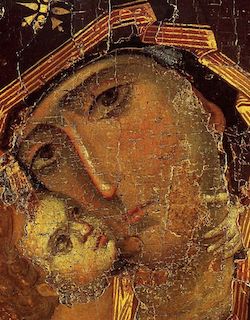
Materialists often link faith in immortality with primitive scientific views of earlier eras. They assume that for people millennia ago, belief in immortality stemmed from ignorance of nature’s and society’s laws. The biological causes of death were not then known, and thus it was not possible to provide a scientific explanation of human consciousness. It remains unclear why advancing knowledge failed to utter refute the notion of immortality. It is implausible to suggest that defenders of the idea of immortality such as J.J. Thomson, the discoverer of the electron, or Erwin Schrödinger, the creator of quantum mechanics, knew the laws of nature any less than the caveman or the ancient Egyptian.
Many of the greatest minds in human history have been adherents of the doctrine of immortality and have developed philosophical foundations to support it.
The death of the body allows consciousness to transition to another form of existence. Materialists usually say that the consciousness “fades away” with death, but this is nothing more than a bad metaphor. After all, even in purely physical terms, “extinction” does not mean annihilation, but only a transition of one form of matter and energy into another.
It is quite possible to conceive of the spirit, capable of exerting an enormous influence on the life of the body, as a force which uses the central nervous system as its instrument. The brain, in this case, would be something remotely resembling a transformer or an antenna.
When the electrical circuitry of a radio receiver breaks down, it does not mean that radio waves and electrical energy have “dispersed” or “vanished.” Something similar occurs, it seems, in the relationship between the brain and the spirit. Of course, death and decay break the contact between the brain and the spirit. Yet, does it actually mean that the spirit no longer exists? Does the “silence of the graves” prove this?
The biosphere as a single organism grows, overcoming death, but its cells, being replaced, die off one after another. Immortality in the noosphere is a different matter. In the noosphere, the parts are just as important as the whole. It acts not as a faceless mass but as a unity of thinking individuals.
Death catches up with the animal seizing it as a victim; in humans, it is only the animal that dies. The human spirit, in the words of Teilhard de Chardin, “escapes and is liberated.”[32] The fact that the spirit is able to overcome the disintegration of the body is an integral part of the larger pattern of the cosmos transcending the natural and visible worlds.
But if immortality is such an important property of the spirit for evolution, if it is so desirable by humanity, then why are our ideas about the destiny of the self after death so unclear and short of detail? There can be two answers to it. According to one perspective, humanity is still destined to penetrate deeper into these secrets, which have been little explored so far but are, in principle, rationally knowable. According to the other, more likely point of view, the barrier that separates this side of existence from the afterlife is fundamentally impervious to us. As it is impossible for an embryo to understand all the complexity and multifaceted nature of human life, so it is difficult for us to envisage other worlds in our present limited mode of existence except by means of symbols. And yet, the development of the self while here, in this life, does bring it closer to the contemplation of the supersensory world. The astounding achievements of human thought can already serve as a premonition and a foretaste of immortality: they are like rays of light illuminating and guiding both the individual soul’s journey and the history of all mankind. The very essence of our spirit gives us hope for eternity despite our realization of the imminence of death. When we sense our own immortality and connection with the Universe and God, the small time period that we have here on earth is expanding into eternity. We can labor knowing that all things of this life that are true and beautiful will find their highest realization in the world to come.
It is impossible to imagine life after death as some meaningless inactivity, a monotonous and futile “wandering in the gardens of paradise.”[33] Instead, it will be a process of uninterrupted coming-into-being and ascending to eternal perfection.
“My conviction of our survival results from my view of energy,” said Goethe, “for if I work without rest to the end of my days, Nature is bound to assign me another form of existence, since this one can no longer contain my spirit… And may the Eternal One not deny us new activities, akin to those in which we have proved ourselves! If to these he should paternally add memory and an after-taste of the Right and Good that here below we have willed and achieved, we shall assuredly be but the better prepared to take our place as cogs in the cosmic mechanism.”[34]
These words of the great poet and thinker remind us that the afterlife is closely connected with the entirety of life on earth, just as someone’s birth and life are affected by heredity and the conditions of the development inside one’s mother’s body. Earthly existence is given to us neither randomly nor without a purpose. By forging our spirit on the paths of life, we prepare it for eternity. And this preparation should be expressed in our actions on earth. The philosophers of India and Greece long ago realized that, apart from physical laws, there also exist spiritual and moral laws, and that these work in a well specified sequence. Everyone takes to eternity what he has himself prepared here. A seed with a wormhole will never produce a healthy plant. Evil and spiritual insolvency on earth will be echoed in the life beyond. That is why every person here on earth is called to strive for the “salvation of one’s soul”—to become a partaker in the Divine Life. We should not view the person’s seeking the salvation of one’s soul as something selfish, rather, it is an expression of a deep drive innate to human nature, one that is diametrically opposed to selfishness. On the contrary, it is self-centeredness that becomes an impediment to the person’s partaking in the Divine Life.
Yet the Bible reveals to us something even greater. The symbol of the Tree of Life, which appears on its first pages, stands for the potential immortality of the whole human being, and with it, the entirety of nature. According to Scripture, the human being is a spiritual-corporeal unity. Therefore, our role in the Universe cannot be limited to the mere preservation and improvement of the spirit while surrounded by the general decomposition of matter. A transformed existence beyond this earthly life is therefore key to the full realization of that invisible energy embodied in the human spirit.
Through their bodies, humans are fused with the natural cosmos. The evolution of the biosphere is a flight from death; the history of humanity, on the other hand, is a journey towards resurrection and the filling of matter with spirit. Consequently, the indestructibility of the spirit is only a stage and not the pinnacle of creation’s progress. This idea was expressed by Nikolai Berdyaev with paradoxical sharpness: “Faith in an essential immortality is itself per se sterile and empty; for this type of faith there cannot be any sort of tasks to life and all the better thus it would be the sooner to die, have the soul depart the body in death, and be rid of the world. The theory of an essential immortality leads to an apologetics justifying suicide. But the great task of life becomes apparent in the instance wherein immortality should involve the result of the world salvation, if my individual fate should depend upon the fate of the world and mankind, if for my salvation there is the need to prepare for the salvation of the flesh.”[35]
Although there are obviously debatable points in these words, they rightly point to a higher human vocation than a mere egress from the material world. The cosmic task of the noosphere is to overcome the inertness of matter by the strength of the spirit, to transform and to raise matter to a higher stage of development. And the crown of the noosphere’s aspirations is the victory over physical death in nature. Humanity was created to find the path to immortality and become “the firstborn from the dead”[36] in the Universe.
But this is not what has happened. Only the spirit escapes disintegration; as before, death maintains its hold over the noosphere, breaking down the human body like any other structure.
What, then, inhibited the process and fatally impacted the spiritual life and history of the Universe? Christianity calls this catastrophe original sin or the corruption of human nature.
Though the Bible extols Man as the “master of the created order” (see Gen 1:26–28), it stops far short of idealizing him. It equally refuses to lower him to a mere animal or to deify him in a false humanistic fervor. The Bible links the apparent duality of human nature, expressed in the poetic formula: “I’m king—I’m slave—I’m worm—I’m God,”[37] with a spiritual illness that befell humanity at the dawn of its existence. It was this illness that weakened and partially paralyzed the forces originally invested into the noosphere, alienating people from God and setting them at odds with nature and themselves. The harmonious course of human development was thus disrupted, which explains much in history and the present state of humanity.
Our sad human reality now includes world wars claiming tens of millions of lives, massacres of civilians, totalitarian regimes that emerge now and then fueled by the herd instinct, unprecedented brutality, and discrimination based on social class and race. The words of Tyutchev (Russian poet, 1803–1873) come to mind: “Today it’s not the flesh—the spirit is laid bare.”[38] The nihilists of the 19th century mocked the Book of Revelation, calling it “the work of a madman.” Could they have imagined that the very epoch they were so eagerly awaiting would instead be recounted later using the imagery taken from that prophetic book?
Individuals, whether they are aware of it or not, always face a choice. Semyon Frank (Russian philosopher, 1877–1950) wrote about it as following: “Would we agree to having been created by God from the very beginning in such a way that… we would automatically without reflection and without free rational choice fulfill His commandments? And in that case would the meaning of our life be realized? But if we did the good automatically and were rational by our very nature, if all the things around us automatically and with total compulsory certainty bore witness to God, to reason and the good—then all things would at once become absolutely meaningless. For ‘meaning’ is a rational realization of life, and not the working of a wound clock; meaning is the genuine disclosure and fulfillment of the mysterious depths of our ‘I’, and our ‘I’ is inconceivable without freedom. This is because freedom and spontaneity require the possibility of our own initiative, and the latter presupposes that not everything runs smoothly and ‘automatically,’ that creative activity and spiritual power are needed to overcome obstacles. A kingdom of God which would be given ‘for free’ and which would be predetermined once and for all would by no means be a kingdom of God for us, for in the true Kingdom of God we must be free participants in the Divine glory, sons of God, as opposed to functioning not even as slaves but rather as a dead cog in some sort of necessary mechanism.”[39]
Using the freedom given to them, humanity has not only betrayed their calling but consciously opposed it. The Bible depicts this as the encroaching on the fruit of the “tree of the knowledge of good and evil” (Gen 2:17) and identifies the motive for breaking the commandment as a desire to “be like gods” (Gen 3:5). This is a symbolic portrayal of human history as it has unfolded and, perhaps, above all—our own modern history. The Fall—human will opposed to that of the Creator—did not turn humans into gods. Instead, it sapped the energies that had first endowed humanity, by separating it from the Tree of Life. The law of disintegration and death overtook and subdued mankind.
The drama of primeval man is being acted out again before our very eyes in our powerlessness before sinful passions, our “will to power” that torments the human spirit, and our false self-assertion. Is not the prehistoric Fall reflected in our proud dreams of creating a world according to our own plan and design? And is not the rebellion of Ivan Karamazov—the confidence that we could have made the world better than God—nothing but a faint echo of the Rebellion that took place before the dawn of the Universe? Do we not hear in our ears the serpent’s hissing, as in the early days: “you will be like gods?”[40] A tree is known by the fruit; the father of lies by his effect on people.
The entire history of humanity has become a quest for the lost innocence, but one that requires an active use of humanity’s own powers and abilities. First there was a struggle between chaos and order, life and death, and now it is a struggle between good and evil. The doctrine of the Fall enjoins that the sin of the forefathers is an archetype of sin for all ages.
Yet, as with the birth of the cosmic order, the forces of Chaos could not stall all development, and mankind has not been fully subject to demonism and evil. The distortion of the path did not lead to an ultimate demise. A healthy root remained in Man, a thirst for perfection and knowledge, an aspiration for good, and a longing for God. Along with the partial loss of his early gifts came a promise of the further advancement of Adam’s race. The Divine Logos accomplishes His creative purpose even in this imperfect and grief-stricken world, despite the fact that our life is a “vale of tears” and the world “lies in evil” (1 Jn 5:19). Suffering and disharmony themselves elicit protest in humanity and spur people to seek ways to overcome them, and in doing so the human spirit is being forged.
Christianity does not regard suffering as something good in itself. Christ comforted those who suffered and healed the sick. Yet in the mysterious ways of Providence even evil can be transformed into good. No wonder many thinkers say that only in the “limit situations”—in the face of death, despair, or panic—is the real human revealed. The greatest triumphs of the human spirit were born in the crucible of suffering. God does not leave Man alone on this path, but strengthens him, and brightens his labor and his struggle by the light of His revelation. And eventually, the creative Logos Himself enters the world and through Incarnation unites Himself with Adam. He suffers and dies with him in order to bring humanity to the Paschal victory.
“Be of good cheer, I have overcome the world,” says Christ (Jn 16:33). “This is the victory that has overcome the world—our faith!” exclaims the Church through the lips of the Apostle John,[41] as he beheld the first fruits of the Kingdom of God.
Who could not notice the amazing change that occurs in nature with the onset of night? This change is especially felt in the summer forest.
In the daytime the air is filled with the polyphony of chirping birds; a gentle wind caresses the branches of birch trees occasionally revealing the cloudless blue sky, the sun’s glare frolics on the mossy floor, slipping through the shadows of green leaves. Glades resemble the alcoves in a quiet and majestic temple. The bright speckles of butterflies and flowers, the drone of grasshoppers, the scent of lungwort flowers—all merge into a joyful symphony of life that captivates us, filling us with peace and tranquility.
Yet the same forest looks very different at night. The trees acquire ominous and bizarre outlines, the voices of night birds resemble plaintive cries, every rustle scares and alarms us, everything is permeated with secret threat and hostility, and the pale moonlight gives this picture a nightmarish or delusional tint. Nature, so harmonious and friendly in the sunlight, as if suddenly having turned against us, is ready to strike like an ancient monster from which an enchantment spell has been lifted.
This contrast could serve as a metaphor for the change in outlook that occurred in our distant ancestors at the dawn of humanity. The gateway to the mystery of the world had been shut before them and their clairvoyance and spiritual authority over the natural domain had abandoned them. Suddenly, they found themselves alone in a vast hostile “universal forest,” doomed to a lifetime of hardship and adversity.
The solemnity and grandeur of the history of humanity’s search for lost God lies in the fact that humans have always remained unsatisfied, never quite forgetting (albeit unconsciously) the “heavenly homeland” of which they were bereft. When humans first gained self-awareness in this world, they were able to “see God face to face” (Gen 32:30). But soon after, this direct line of communication was broken. A spiritual catastrophe erected a wall between people and the Heavens. Still, humans have not altogether lost their God-likeness, retaining their ability to know God at least to some degree. The perception of the Divine Oneness was still clearly present in the early days of the primeval knowledge of God. Many primitive tribes who have preserved the way of life of their distant ancestors, too, have retained traces of an early monotheism.11
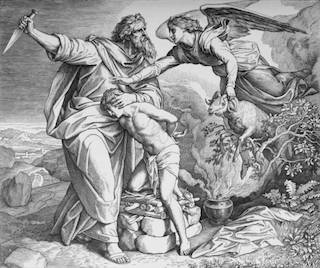
The original beholding of the One “face to face” became no longer possible following the Fall, and instead religion—restoring the link between humanity and God—began in the history of mankind. It is no coincidence that the Bible puts sacrifice at the heart of all religious behavior—the religious worship or cult. It reflects a keen albeit vague desire to atone for sin and to restore the original communion with God. By sacrificing a portion of their sustenance to the Unseen, sustenance which was earned with great difficulty, people were essentially declaring their readiness to follow the commands of the Higher Will.
Yet regaining the original harmony proved harder than losing it: gradually, God grew more distant and impersonal in the consciousness of primitive humans. Instead, they were increasingly turning their attention to the natural world.
In the mind of the primitive human there lived a sense of kinship of all living things.
The idea of brotherhood between people and animals has found its expression in widespread myths, according to which human ancestors possessed a mix of human and animal traits. Likewise, Native Americans believed that these creatures could easily shape-shift between human and animal forms. As a result, “Animal-human” hybrids became a well established concept in the analysis of such legends.
This belief had a tremendous impact on the ancient social order. It explains the emergence of such a peculiar phenomenon as totemism. A totem is usually an animal that is considered to be the ancestor and the patron of a given tribe.
The origin of totemism is a belief in spiritual unity with nature. The traces of totemism, once widespread throughout the world, can still be found among the primitive tribes of Asia, Africa, and America. Its echoes can still be felt today even among civilized peoples: for example, the Indian ban on killing cows goes back to ancient times when these animals were sacred totems.12
Primitive humans perceived all things to be animate or alive: tree trunks, forest animals, the motions of clouds. For them, the interconnectedness of all things in this world was not only the interconnection of the visible, but simultaneously—and most importantly—the interconnection with the invisible. In the murmuring brook, in the flame of fire there dwelt spirits, either hostile or friendly, and sometimes neutral.
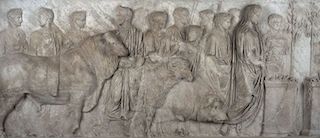
Here are the roots of that strange belief known in science as fetishism. Fetishes, i.e., sacred objects, accompanied the primitive human from birth to death. A fetish could be a stone, a tooth of an animal, or even a skull of a relative: spirits dwelt in them, and a person with the fetish enlisted their support. However, like totemism, belief in fetishes does not yet constitute a religion, even though some researchers initially supported this hypothesis.
The fact that a sacral13 significance is attached to an inanimate object stemmed from the universal belief in the animate nature of the world. Most often fetishism was associated with belief in totems. Sometimes a fetish acquired the significance of a talisman: it could counter force with force pitting its own protective influence against some other malicious power. Belief in the value of such amulets runs throughout human history.
Gradually, fetishes acquired a human-like appearance. They began to incorporate human traits of an ancestor or the appearance that had been ascribed to a spirit. Such figurines, which served as prototypes of future idols, were especially common among African nations. Yet the attempts to establish contact with the spiritual world were not limited to talismans, fetishes, or totem images. There was another, a mystical way of communicating with spirits, that formed the main and enduring interest in primitive religion.
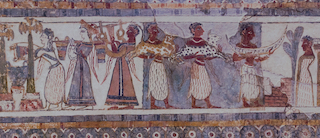
As centuries went by, the spiritual intuition of primeval people weakened, and instead individuals with a special mystical and occult14 aptitude began to emerge. They were entrusted with the role of intermediaries between the human race and its surrounding world of demons and spirits.
Every religion consists of three basic elements: a worldview, a set of life principles, and a mystical sense that finds its outward expression in a cult (religious practice).
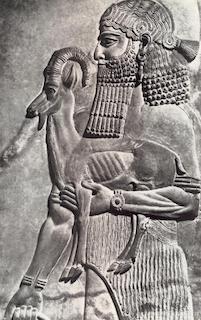
Of course, we ought to interpret the word “cult” very broadly here. There still exists some form of “cult” even in those religions that reduce their external expressions to a minimum. It is in human nature to associate one’s inner experiences with certain exterior actions, i.e., to “vest” them into something. Hence the meaning of the word “ritual” as an act of “putting on of vestments”15 or “dressing” an intent or meaning into an exterior form. For example, people cannot avoid using even the simplest rituals when communicating with one another. Rites and ceremonies can help not only with human interactions, but also with our aspirations towards the Higher Being.
In their efforts to regain the previous fullness of the direct contemplation of God, people sought to revert to their original state by means of ritual dances, rhythmic music, and religious group ecstasies. It was an attempt, as it were, to storm the fortress of the spirit.
As people were whirling to the beat of primitive drums, all things ordinary ceased to exist, and it seemed as if one’s soul, freed from its oppressive fetters, was flying off to a far-away place. In essence, it was an attempt to mechanistically secure spiritual freedom and power. Yet what is touching in this attempt is that unquenchable thirst for all things sublime in life, the thirst which did not allow people to wallow in their half-animal state. Perhaps the pandemic16 of ecstatic dancing in our days is a grotesque reflection of spiritual dissatisfaction and the desire to reach out past the ordinary.
The next stage of spiritual development that we observe with the majority of indigenous peoples is shamanism. The elect, those attempting to pave the way to superhuman powers, came to the foreground here. The ecstasy of a trance turned the shaman into a medium17 and a clairvoyant, who his fellow tribe members deferred to for a solution to their life problems. He would unmistakably point out the location of the missing stag in the forest or where to go for a successful hunt.
Shamanism was not a mere superstition but rather an attempt by the ancient world to reconnect with the lost Eden. Most of the time, however, these efforts led to the slippery slope of the occult, and humanity, while seeking to gain control over the realm of the spirits, instead found itself firmly in their grip.
No clear boundary existed for early humans between the supernatural and the natural realms: there was one world where both visible and invisible forces were inseparably intertwined. Could we perhaps stand to learn some wisdom from this holistic ancient worldview? For example, most people view the sun rising in the morning as something completely natural, whereas a contact with a deceased person would be regarded by them as utterly supernatural. However, nothing in the world can be called supernatural in the fullest sense of the word. A set of laws, successfully used to explain some aspect of reality, can become inadequate when applied to a different plane of existence. Physicists, for example, have shown that the micro-world behaves very differently from the macro- and mega-worlds.18 It is easy to imagine that other dimensions of the universe, transphysical19 and spiritual, should be characterized by their own distinct set of properties. What we refer to as a miracle can be viewed simply as a collision between these different planes of existence.
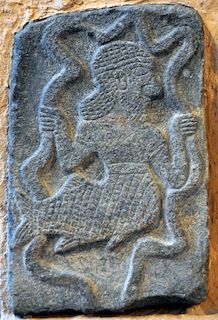
Our primary interest with ancient magicalism, however, is not to examine the relationship between the nonmaterial aspects of reality and the laws of nature, but to understand the inner motives that inspired the prehistoric enchanter.
There is a hidden spiritual disposition present in magicalism, which is rooted in humanity’s original sin, a desire to put oneself at the center of the universe and force its powers to serve him.
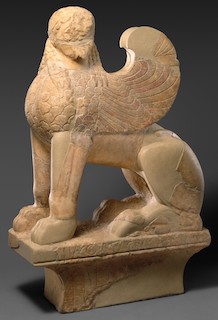
That is why magicalism is markedly concerned with this-world-only. Its highest virtue is earthly well-being. The ultimate goal of magical thinking is earthly prosperity. And if the belief in immortality does enter the magical worldview, it acquires an exclusively grossly-sensual character.
The magician would often stand in opposition to the priest, and it is easy to see why. The inner directions of the magical and the religious worldviews remain diametrically opposed. The priest is primarily a mediator between people and the spiritual world: he communicates with the Divine by his prayers. For the magician, however, the joy of mystical communion with God is an empty phrase. He is focused on amassing power for everyday life—for hunting, agriculture, and fighting the enemy. This antagonism persisted even when magicalism subsequently grew intertwined with religion.
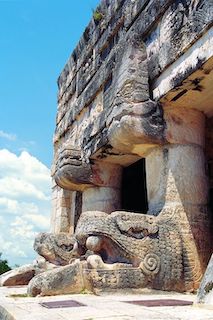
All magicalism wants is gifts from Heaven. It seeks to enslave Nature (including the unseen forces) and enshrines violence in human societies. Tribe and power take precedence over the spirit. An individual coalesces with the clan, falling under the hypnosis of “collective thinking.”
Victims of the “collective thinking” of magicalism did not dare to challenge even by a single iota the established canons for thousands of years. This resulted in a paralysis of creative energy and religious genius, for the highest calling of humanity—to be an image and likeness of the Creator of the Universe—can only be realized through personal responsibility and spiritual freedom.
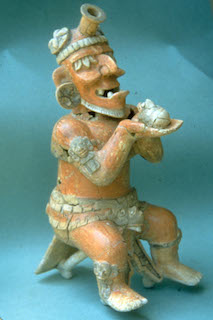
Egypt in the 4th–3rd millennia BC
Magical thinking can wield tremendous power over the human soul. The remarkable stability of the primitive worldview, buttressed by magicalism, becomes less of an enigma when we take this significant fact into account.
During the long prehistoric period, humans must have felt closest to nature. They imitated natural cycles in their rituals, and by doing so, they were experiencing the natural world from within, viewing themselves as an integral part of nature.
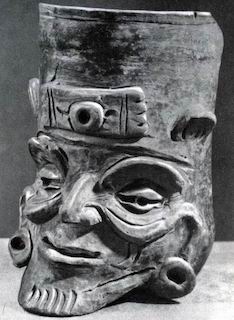
A sudden change occurred about six thousand years ago. Dormant powers of spirit made the first attempt to free themselves.
The massive relocations of tribes occurring at this time was probably an important external factor contributing to this change. The migrants, who also often happened to be conquerors, found themselves in new environments facing unknown peoples and beliefs. Such encounters always bring a fresh stream of ideas into one’s outlook. Things considered immutable and enduring from time immemorial are revealed as transient and illusory in the new setting.
The first great civilizations most likely appeared as a product of these same tribal migrations. Suddenly three great lights emerged in the haze of the prehistoric night—the cultural centers that sprang up on the banks of the Nile, the Euphrates, and the Indus.
Our picture of life in Mesopotamia, Egypt, and India—places of the most ancient settled civilizations—becomes fairly clear only beginning with the 3rd millennium BC.
Here the town was first born—a cluster of dwellings, huddled together as if in fear, and typically enclosed by a wall. It is the town or city, the two-faced and tragic brainchild of ambivalent human history, which stands at its source: the “urban revolution” marks a watershed between the historical and prehistoric worlds.
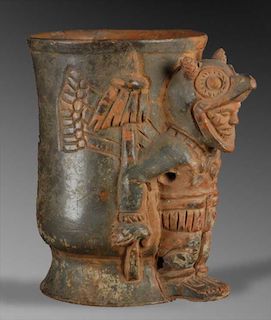
Whereas in a cave, a hut, or a hide tent humans still lived in the midst of nature, it was inside the city walls that they for the first time created a world of their own. The city helped humans grow in self-understanding. It helped to liberate Individuality. It has become both a curse and a blessing throughout history. The city walls separated humans from the world, but they also provided an opportunity to take a fresh look at it. It was in the city where humans became repressed by the monotony of the anthill they themselves had created, and it was also the city where the inner wealth of human spirit was brought to light. Socrates and the Apostle Paul, Shakespeare and Dostoevsky—they are all sons of the city.
The “urban revolution,” however, did not lead to a “revolution of the spirit.” The founding of cities and the great migrations must have been accompanied by major upheavals in the traditional ways and thinking of all those involved. But as soon as city life became established, the old ways made a comeback. This can be clearly seen in the example of ancient Egypt.
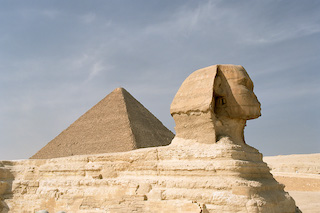
Egypt, which is at the boundary between Africa with its fetishes and sorcerers and the Mediterranean world, has always been the hotbed of great spiritual movements. The population of Egypt, too, was composed of inhabitants from the two continents. The Egyptians expended tremendous efforts to cultivate the Nile Valley and to make its wetlands and unhealthy habitats fit for life. The inexhaustible energy of the Egyptians and their neighbors, the Sumerians, in their struggle with nature is truly striking: they managed to conquer it in locations where modern-day efforts occasionally fail.
There was one area, however, where the Egyptians were unable to make a genuine progress: they remained trapped by their own primitive views and beliefs.
The Egyptians lived in a world of mysterious creatures that peered out at them through the eyes of cats, owls, rams, and crocodiles. They sought to harness the inner power of these creatures and use it for their own purposes: those who had fully mastered all the subtleties of sorcery wielded tremendous influence over the crowds.
Their spiritual leaders, the priests, not only failed to free Egypt’s religion from polytheism and magicalism, but instead enshrined the then social system as the immutable and sacred order of things. Power in ancient Egyptian society came to be viewed as divine, going all the way back in its succession to the first superhuman beings.
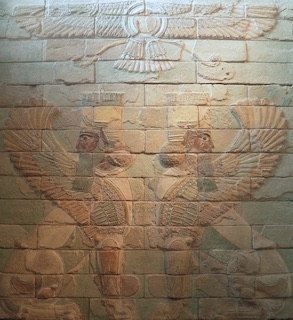
The Great Sphinx of Giza is believed to be a symbolic image of the son of the Sun—the divine king. If true, then it is one of the most emphatic symbols of regal autocracy. And the people themselves willingly consented to this divine authority. Even though the dynasties were sometimes overthrown, the belief that a person at the top of the social pyramid held the key to the happiness of his subjects remained inviolable. Not only the power of Pharaoh was considered a part of the cosmic order, but the entire social order of Egypt, too, received, as it were, the highest sanction. The class hierarchy became unconditional; this conservative order was preserved in political, social, and religious life for the next three millennia.
The Egyptian religion persisted as a strange mix of sublime insights alongside the most primitive paganism. All attempts to overcome paganism in ancient Egypt had failed. Meanwhile, another great civilization was born to the northeast, between the Tigris and the Euphrates (in Mesopotamia).
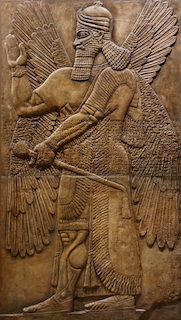
States in Mesopotamia between 4th and 2nd millennia BC
The Bible speaks of the “land of Sennaar,” or, more correctly, the “land of Shinar,” as a place where the first human civilization emerged. According to Scripture, this was the place where the ancient city of Babylon was built (see Gen 10:10). For many centuries, the word “Shinar” signified very little to those who were reading the Bible, along with places such as Ur, Erech, and Accad, or other cities of Sennaar. About a hundred years ago it was discovered, however, that the biblical “land of Shinar” could in fact be called the cradle of modern civilization. From the haze of some thirty century long oblivion, emerged the peoples who lived on the banks of the Euphrates in the area called Sumer. One of these ethnic groups were the Sumerians who were believed to have come from the Persian Gulf. Another group were the Semitic Akkadians, the shepherds-nomads, who settled in the northern part of the Tigris-Euphrates Valley several centuries after the Sumerians. By the year 2000 BC both tribes completely merged into one. And although the centralized state in Sumer appeared later than in Egypt, the primacy of the Sumerians with respect to their impact on history presently remains undisputed.
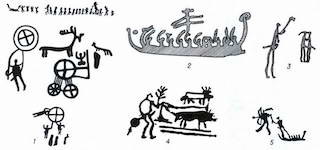
The Sumerians and the Akkadians, through their successors, the Babylonians, transmitted to the Greeks, Jews, and other nations the fundamentals of their science, literature, and culture, their ideas about the Universe and certain religious concepts.
The modern names of the days of the week and the division of the circle into degrees, Greek legends, and biblical symbolism—they all can be traced back to ancient Sennaar.
Egypt was well protected by the desert and the sea. Sennaar, on the contrary, was open to attacks by steppe nomads and warlike mountaineers. As a result, the character of the “urban revolution” in Mesopotamia was particularly intense: cities of the newcomers, as soon as they appeared, immediately turned into military fortresses.
Each city with its small surrounding area was essentially autonomous and had its own local gods, who were considered to be its true masters. The gods lived in temples or on the top of a ziggurat—a stepped tower.
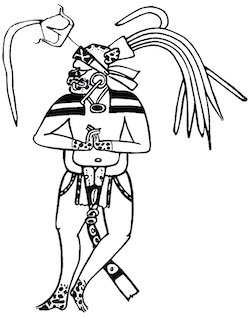
How did a resident of Sennaar understand the position and role of the human in the Universe?
Gods came first; then humans were created to serve gods with their sacrifices. A human is a lower being, a bondslave, whose destiny has been sealed once and for all. The human, an ephemeral creature, comes into the world for a moment only to then disappear forever in the dark Underworld. There was a deep conflict between the spiritual character of this people—resourceful, hardworking, and creative—and their concept of the purpose of human existence.
Neither the Sumero-Akkadians nor the Babylonians could resolve this tragic contradiction. This great ancient culture, despite all its technological advances, eventually arrived at a deep incurable pessimism.
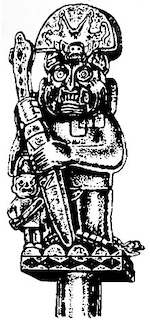
Standing out vividly against this bleak background are the first gleams of light into the world of Divine Revelation, the awakening thirst for God, and a living prayer, so unlike the enchantments of magic. Whatever the name of the god to whom those people stretched out their hands—Enlil, Shamash, or Sin—this was the true god.
“Begetter, merciful (and forgiving) in his disposing, who holds in his hand the life of the whole land,” proclaims the text inscribed on a tablet from Ur, “O Lord, thy divinity fills the wide sea with awe, as well as the distant heavens… Thy word causes truth and justice to be, so that the people speak the truth.”[42]
It was through this type of personal religiosity that people found an escape from the hegemony of demons and precepts, sorcerers and kings, death and decay, senselessness and despair. Yet by and large, Mesopotamia, like Egypt, was unable to overcome the burden of ancient paganism. The glimpses of monotheism there remained no more than mere traces.
c.2000–1700 BC
At the dawn of the second millennium BC, the entire civilized world was thrown into turmoil when hordes of pastoral peoples appeared at the borders of their states. Nomadic Amorites from the Arabian deserts flooded Mesopotamia, Hittites appeared in Asia Minor, Achaeans invaded the Balkan Peninsula from the north, and Aryan pastoral tribes appeared along the border of India.
This epidemic of invasions could not go unnoticed. It deeply shocked the old civilizations and challenged the old ways of thinking. Nations, previously confined to a narrow world of their peculiar customs and ideas, and having often coexisted in isolation, suddenly found themselves confronting each other.
It was during this period of widespread migrations around 2000 BC that the Aryans descended from the Iranian Plateau and made headway southward in search of new grasslands for their flocks. They had been aware of a wonderful land resembling a magical garden found beyond the ridges and dazzling peaks of the Himalayas. The path to it took the travellers through perilous ravines and arduous mountain passes. As the Aryans were moving towards their cherished destination with their herds, carts, and horses, they found themselves in the heart of the Himalayas, the world’s highest mountain range, surrounded by eternal snow, avalanches, and clouds.
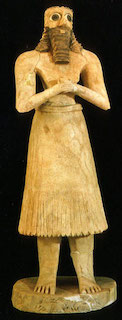
The Aryans took root in Kashmir, after which they moved south to Punjab, and finally, following many years of bitter fighting, became the sole rulers of North India. Some of the indigenous inhabitants were enslaved by the Aryans with the remainder of the population either destroyed or driven out further south.
Despite the fact that archaeology has not revealed any evidence about the Aryan way of life from that period, some traces of their culture have been fortuitously preserved through an ancient hymn book called the Rigveda.
Aryans were people of music who loved singing. Their singers and storytellers commanded special popularity within each clan or tribe. These folk poets, known as rishis, composed religious hymns, legends, and moral tales. Rishis were not merely poets, they viewed themselves as prophets and clairvoyants who had received revelation of the highest form of knowledge (“Veda”20 —knowledge or insight).
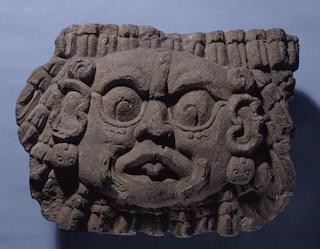
The hymns of the Rigveda are strikingly disparate and at times even contradictory in their nature. Sudden spiritual ascents and fiery impulses toward God and truth are interspersed with primitive sorcery, gross sensuality, and marked polytheism. The Rigveda mentions more than three thousand gods, many of whom have characteristics of the Supreme Being—as if these gods take turns being God.
The strange mixture of these two religious mindsets is best explained by the fact that the Vedic hymns were recorded in the era of decline and decay of monotheism. They can be compared to a beautiful temple that has been reduced to a residential building by a corrupter’s hand. Here and there we can find traces of the former splendor, graceful chapiters, sculptural remains, and surviving columns. They are all parts of the temple, which itself is no longer there. Similarly, in the Rigveda, we discover the remnants of the original faith in one God.
Even though God grew increasingly elusive in the consciousness of the adherents of the Vedic religion, it does not mean that a living religious sentiment was extinguished among them.
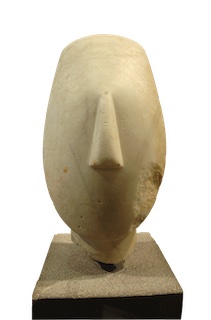
The rishi is entreating God with a touching trust, contritely lamenting his addiction to wine, gambling, a propensity for violence and licentiousness.
How much, it would seem, such an inspiration has to offer! We are enveloped in a joyful anticipation: could it be the beginning of the very journey that was to take humanity through “hardships to the stars”? But it is too early to celebrate. Strange shadows loom ahead. Bizarrely shaped spirits, beckoning and grimacing, suddenly block the way. Enchanted by them, people’s vision grows dim. Unable to find the strength within, they succumb to these alluring and enticing physiognomies. Surrounded and trapped, people have lost their way.
India, 1700–1500 BC
After the Aryans’ initial triumphant advance to the south, their progress eventually slowed down. They were met with the native tribes of Dasyu, whom they failed to destroy completely, if only because the natives greatly outnumbered them. Gradually settling in the conquered country, they mingled with the Dravidians and other Indian tribes, adopting their customs, beliefs, and traditions.
Judging by some of the hints in the Rigveda, the times when the Aryans were content with simple altars under the open sky had become a thing of the past. The first colonnades of Indo-Aryan temples were erected on the conquered land, and the people bowed their necks before the first sculptures of deities.
Yet it was not on this path that humanity was destined to regain its way to the lost unity between Earth and Heaven. Salvation was to come neither from pagan cosmism nor from the mystics who had risen to the heights of Super-Existence. The greatest revelation in the history of humankind was being quietly prepared not there in India, but to the West, at the crossroads of three continents.
Mesopotamia – Canaan, c.1850–1800 BC
The voice of the Spirit can be the quietest of voices, and most unnoticeable events are often among its greatest deeds.
At the time when the hordes of Aryans fought their way through the Indian lands, and the Amorites began to establish Babylon on the Euphrates, a group of shepherds in multicolored clothes was moving along the roads of Syria, driving their herds of sheep and goats. From northern Mesopotamia where the Aramean tribe had resided, the shepherds set out westward, through the desert regions, to the land of Canaan. These people were led by their chief Abraham. They were a little over three hundred in number (Gen 14:14), and their departure was hardly noticed by anyone.
This seemingly inconspicuous event, however, marks a new chapter in the history of humanity’s search for God. Abraham and his kin, who could hardly have foreseen the future awaiting their people, are to become the new heroes in our story.
In one ancient text, Abraham is called “haibri.” It is possible that the name “Hebrew” (Ibri), which began to be associated with the Abrahamic tribe who had by then lost their identity as the Arameans, is connected to “Habiru,” the nomads mentioned in documents of Egypt, Palestine, and Mesopotamia. Long was their journey before they finally saw the green vineyards and montane grasslands of Canaan. There they were faced with the danger and hardships associated with their wandering lifestyle, forced to sojourn among foreign and possibly hostile tribes.
The newly arrived aliens drew courage from their faith in a special divine patronage. This faith was not a theory or an abstract philosophical acceptance of monotheism. At the core of their belief was their loyalty to Elohim—the one and eternal Creator of the world—the God who had chosen them. From the outside, it might seem as if theirs was merely a religion fit only for a specific group of people—a clan or a tribe. However, the faithfulness of Abraham and other patriarchs21 to their God already contained a kernel of the universal religion of Echad (“the One”).
The religion of Abraham took the form of a Union (berit) or a Covenant with God. According to the Bible, God promised that the time would come when the descendants of Abraham would no longer live as exiles in a strange land, but having formed a nation, they would take possession of the land of Canaan.
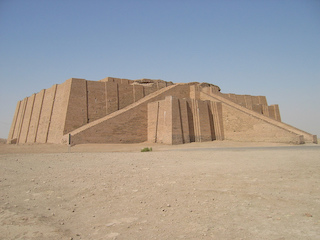
Unlike most pagan prophecies, however, this promise extended beyond the narrow tribal confines. The greatness and glory of God’s chosen people was inextricably linked to the good of all tribes and nations. “And in you all the tribes of the earth will be blessed,” (Gen 12:3)—this was one of the most startling prophecies in the ancient world.
Invisible threads stretch out from the tents of Canaan to the shores of Jordan on which some eighteen centuries later the following words would be uttered, “He who believes in the Son has everlasting life” (Jn 3:36).
Thus, in the twilight of polytheism, arose a point in history, a beginning, which was to grow, expand, and eventually turn into the Covenant people, the people of God, the Old Testament forerunner of the Church.
Perhaps nothing illustrates the unshakable foundation on which the Old Testament religion was established as vividly as the story of the sacrifice of Abraham.
One day, as the Book of Genesis narrates (Gen 22), God said to His chosen one: “Take your only son, Isaac, whom you love, and go to the land of Moriah, and offer him there as a burnt offering on one of the mountains.”
Abraham did not waver. He was determined to make the sacrifice with the same resolve as when he was looking death in the eye during his military campaigns. His faith in his God was too great for him to turn away in cowardice.
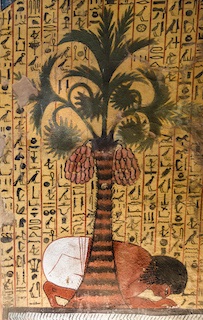
And so they arrived at the place of sacrifice, the father and the son. “My father,” Isaac asked, “the fire and the wood are here, but where is the lamb for the burnt offering?” “God Himself will provide the lamb for the burnt offering, my son,” Abraham replied. “So the two of them went together. Then they came to the place of which God had told him,” the Bible recounts, “and Abraham built an altar there and placed the wood in order; and he bound Isaac his son and laid him on the altar, upon the wood.” And as the patriarch was about to strike a fatal blow, he heard the voice of God: “Do not lay your hand on the lad, or do anything to him; for now I know that you fear God, since you have not withheld your son, your only son, from Me.”
In the story of Abraham’s sacrifice we ought to see a reflection of the fervent devotion to God and the faith inherent to Abraham and his people—devotion unafraid of any sacrifice.
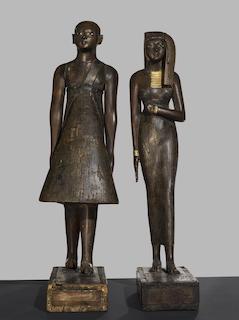
In a confrontation with the giant sphinx of nature, the God-seeking chosen people were able to defend the independence and freedom of the spirit. The paganism of the East and the West perceived the world as something fixed and static; likewise, magicalism encased it in the perpetual ring of cycles. However, the structure of the Universe as Formation, Dynamics, and Development was first revealed in the religion of Abraham’s descendants.
Canaan – Egypt, c.1750–1680 BC
The second “exodus” or the new relocation of Semitic herdsmen from Mesopotamia is one of the first more or less verifiable events in early Hebrew history. A new Aramaic wave started out from the north around 1750 BC. The patriarch of this clan was Jacob, who also had the name of Israel. Tradition considers Jacob to be a descendant of Abraham, an heir of his promises. Be it as it may, he had adopted the faith of Abraham, and upon entering Canaan he ordered the idols, which his clan had been constantly carrying with them, to be disposed of. Jacob gravitated to places where Abraham once had lived and made sacrifices to God: Shechem and Bethel.
Jacob was the head of the unified clans or tribes22 who called themselves Bene-Israel, i.e., the Sons of Israel.
For the most part, the existence of Bene-Israel was peaceful. Daily life was inextricably linked with livestock management. They continued their nomadic lifestyle for the sake of their flocks; sheep were their primary source of wealth, providing food and clothing, as well as gifts and dowries. A beautiful lamb without blemish was considered to be the ideal sacrifice to Heaven.
From time to time the entire tribe would migrate in search of new pastures.
Music and singing were constant companions of the Hebrew shepherds. They sang about God, their Unseen Father, His mercy and justice, and that all prayers should be directed to Him alone.
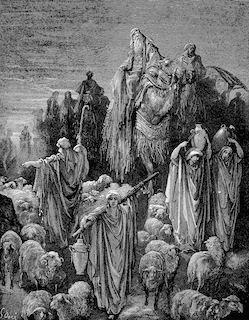
Around 1700 BC, battle cries resounded across Canaan: hordes of heavily armed Amorites appeared within its borders. These Asians were on their way to Egypt, drawn by its rich and fertile lands. Their swift onslaught met no resistance. Arabian war horses, unknown until that time to Egyptians, carried fearsome horsemen across the land of the Pharaohs. The foreign light chariots broke the lines of the confused Egyptian troops, villages were set on fire, the walls of ancient temples had been destroyed: stunned Egyptians were looking upon all this with fear and bewilderment. It was the end of their state’s independence. An unknown tribe of proud and implacable adversaries established their rule over the country. The Egyptians called them Heqa-Khaset—“the rulers of foreign lands”—from which the invaders received their name “Hykses” or “Hyksos.”
After the Hyksos had passed through Canaan, the unwarlike shepherds no longer felt safe there. Their future was uncertain: many surrounding villages had been wiped off the face of the earth, crops had been destroyed, and pastures had been trampled under the hooves of Hyksos horses. As a final blow, a severe drought began, and the Sons of Israel found themselves on the brink of starvation.
They had only one last resort: to follow the path laid out by the Hyksos and seek shelter in Egypt as Abraham had done during his years of famine.
There had long existed a custom in the land of the Pharaohs to settle “peaceful barbarians” who had suffered disasters in their own homelands at Egypt’s borders. A similar strategy, too, was employed centuries later by the Roman Empire in order to safeguard its own vast frontiers. The Hyksos rulers of Egypt in particular sought to promote border settlements populated with fellow Asiatic tribesmen upon whose support they could usually rely.
According to tradition, Patriarch Jacob himself led the resettlement to the “Land of Mizraim” as the Hebrews called Egypt. The Israelites were granted the region of Goshen, or Gessen, in the eastern part of the Nile Delta, which was famous for its vast meadows and where herds of the royal household were kept. A portion of these herds were transferred to the aliens, who, thus, were enlisted in the service of the state.
According to the Bible, this favorable treatment had a peculiar origin. During those years, the Pharaoh’s prime minister was an Israelite named Joseph.
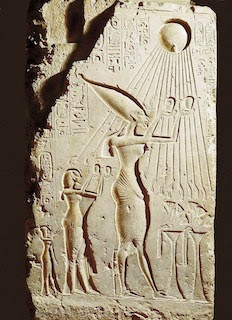
According to tradition, Joseph was sold by his brothers to Palestinian merchants, and, after a series of vicissitudes of fortune, he was received into the royal court and promoted to a position of great authority. Such rapid career advancements for commoners and aliens were probably characteristic of the time of the Asian dynasty reign.
When drought and famine brought the Israelites to the borders of Egypt, Joseph did all that was required to settle them on the royal pastures.
We can easily picture this crucial moment in the history of Israel.
The Israelites, having entered the Egyptian territories for the first time, should have felt estranged, vulnerable, and abandoned in a large hostile world. But instead, they believed that the blessing of God, the God of their fathers, dwelt on them and that the unseen Spirit protected and guided them. They associated this faith with the figure of Abraham, legends of whom had been passed down from generation to generation.
Sitting at the entrances to their tents during starry nights, they listened to stories about Abraham and his sons, their military exploits, wanderings, romance, rivalry, and friendship. Those were the times when the inhabitants of Heaven often visited people, when one could behold a ladder by which they descended to earth.
Egypt, c.1580–1406 BC
All great powers sustained only by the force of arms sooner or later become unstable and fall apart. The same fate awaited the kingdom of the Hyksos: it gradually weakened and lost control over the conquered territories. The semi-independent kings of Thebaid—Southern Egypt—gradually gathered enough strength to challenge the Hyksos.
The Egyptians, like the Hyksos, now had their own war chariots. Having fully mastered the tactics of the Hyksos, the imposing army of the Egyptians, numerous and disciplined, moved against the Asians in 1578 BC. Under their blows, the Hyksos abandoned the capital and retreated to the east. The victory inspired the Egyptians: it was their moment—the Hyksos domination had ended and the time for an Egyptian expansion had come.
Sharuhen, the last fortress of the Hyksos, was taken following a relentless siege that lasted for three years. The chariots of the Pharaohs now controlled the hills and valleys of Syria, pushing their adversaries further north.
Egypt became an empire composed of numerous nations of Africa and Asia. Egyptian rulers and native kings loyal to Egypt were installed in leadership positions across the land. Even a slightest resistance led to violent reprisals. Thus, Egypt’s fight for its own independence transitioned into the enslavement of other nations.
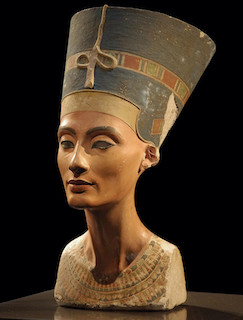
With the rise of Thebes, the Theban god Amon increased in its prominence. This local god became identified with the god Ra and thereby elevated to the rank of a national deity. With this development, Theban priests began to have an appreciable impact on political life.
The dominance of the national religion seemed indisputable: the entire country, from the Pharaoh to the least of its inhabitants, was permeated with its spirit. And no one could have expected that a rebellion against the triumphant god would begin right in the royal palace, in the house of “the beloved son of Amon.”
There was not a more controversial and complex figure in the history of Egypt than the king-reformer Amenhotep IV (reign: 1353–1335 BC). It is fair to say that Amenhotep was a man of great talents, perhaps even a genius. None of the wise priests and clairvoyants of Egypt prior to him had dared to revolt against polytheism and its magical belief system with such determination. In the era of bloody wars and genocide, he proclaimed the equality of all tribes and countries before God.
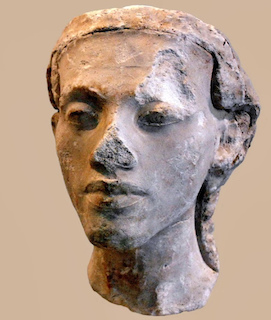
The pharaoh distanced himself from all adherents of the old religious cults: only like-minded people were allowed to be near him; gone were the priests and the aristocrats of old. He considered himself to be a prophet of the Sun, a preacher of the new true religion, the high priest of the one supreme God, whose living embodiment was the solar disk—Aten. And his wife, queen Nefertiti, completely shared his views.
The king changed his name as a sign of his complete break with the past. From now on he was no longer Amenhotep but Akhenaten, which means “Pleasing to the Sun.” He ordered the destruction of old sacred symbols and inscriptions throughout the land, which included not only the name of Amon but the very mention of the word “gods.” All animal and human-like idols were outlawed and the temples of gods were shut down. The capital of Egypt was transferred from Thebes to a new city—Akhetaten or “the Horizon of the Sun”—built from scratch according to the plan of the reformer king.
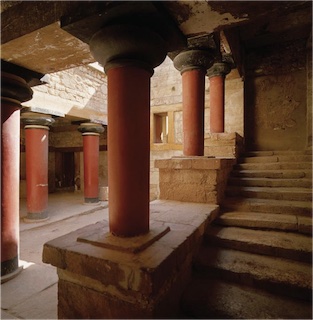
Infatuated by his own reforms, the preoccupied king grew less attentive to his surroundings. Perhaps he was also a poor judge of other people’s character. He was increasingly surrounded by scheming meddlers and liars who ostentatiously lauded the “king’s doctrine” and zealously praised the new deity to gain the pharaoh’s trust.
Akhenaten died a young man in the eighteenth year of his reign. Leaving behind neither sons nor devout successors, he probably realized the failure of his life’s mission right before his death.
The tragedy of Akhenaten lies in the fact that despite his rejection of the magical belief system, he failed to abandon one of its fundamental principles—the deification of power. He was convinced that his word alone was sufficient for the “truth” to triumph. However, the preaching of faith, when backed by the authority of the throne, cannot elicit a genuine response in the heart of the listener because it is based on threats and rewards stipulated by the divine sovereign. And yet we sympathize with Akhenaten as someone who, having discerned the living breath of the one true God, dared to challenge the age-old realm of polytheistic gods.
The Island of Crete, c.1600–1400 BC
The resettlement of the Achaeans, the ancestors of the Greek people, in the northern Balkan Peninsula coincided with the emergence of Aryan and Semitic tribes on the horizon of history. The Achaean migration to the south unfolded over several centuries. Prior to that, the southern part of the peninsula was controlled by Crete, whose culture greatly influenced the nascent Greek civilization. Therefore, before discussing the Greeks, we must first consider their predecessors, the Cretans.23
The island of Crete is a bridge between Europe and Asia.
The first states in Crete emerged around 2000 BC. Isolated from one another by mountains, their unification took decades. The Greeks later recounted in their legends that Crete was unified under the rule of the cruel king Minos.
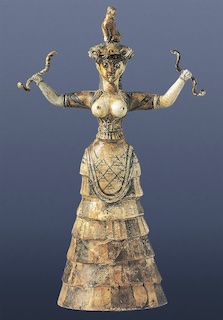
The kings of the Minos dynasty were not afraid of invaders and did not build maritime fortifications. Instead, their formidable fleet, docked in harbors around the island, served as a secure barrier. Moreover, the Labyrinth by and of itself was no worse than any fortress. This bizarre structure, first built around 2000 BC, was destroyed by an earthquake two hundred years later and then was rebuilt again. In one of the frescoes of this palace we can see the king himself. His figure stands out against a crimson background. He is an athletic young man without a beard, with long, almost waist-length wavy hair. What is he doing? What moment of his royal life did the artist want to capture? The king is walking among tall sugarcane-like plants with butterflies hovering over them. One hand is pressed close to his chest and his other arm is stretched far back. What is happening? Is the king engaging in field work? If so, where is his scythe or basket for grain? However, they are nowhere to be seen. Instead, we witness a representation of a symbolic act.
The lord of Crete is neither sowing nor reaping: he is only imitating the work with his movements. According to the consensus of researchers, this is a depiction of a magical ritual. Similar to the African sorcerers and the Egyptian pharaohs, this king-priest, who lived in the luxury of his Labyrinth surrounded by an army of obedient slaves, would for a brief moment become a peasant himself. He was performing a magical ritual that was supposed to bring fertility to the ground.
Humanity has always searched for a visible embodiment of the higher powers. This yearning gave birth to the god-kings of Egypt and Akkad, it surrounded the dynasty of Minos with a mystical aura; from there, it stretches in an uninterrupted line through the Spartan kings to the “great high priests”—the title applied to Roman emperors. These ideas lived on in medieval Europe. Suffice it to recall that the French kings allegedly boasted the “royal touch”—a hereditary gift of healing. This theme recurs to this day, albeit in a superficially different form. Today, it is manifested in the blind trust that nations place in their leaders, a deep and universal conviction that nothing escapes rulers who will invariably lead the society to prosperity. This sad 20th century phenomenon is rooted in earlier times when people believed that their well-being and the fertility of the ground depended on the good will of the king-priests.
About 1400 BC the Achaeans subdued Crete and formed a new state with the citadel of Mycenae at its center. However, this did not eradicate the Minoan culture, for it was on the ruins of Minoan civilization that the culture of ancient Hellas eventually flourished.
Greece before 1400 BC
Greek tribes relocated to the Balkans around 2000 BC, in the same era as the great Semitic and Indo-European migrations. Originally from lands inhabited by the ancestors of the Aryans, the Iranians, and the Hittites, they moved to invade the Peloponnesus and Thessaly by two different routes: via the northern mountain roads and by way of the Aegean Islands.
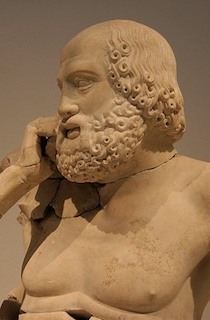
Although virtually no legends from that time have reached us, it is obvious that the natives initially mounted a desperate resistance to the Greeks. Who were these natives? The fact that they did not belong to any of the Hellenic tribes was apparently realized by the Greeks themselves, who referred to them as Pelasgians.
On their way, the Greek settlers encountered two ancient sanctuaries: that of Delphi and of Dodona. In Dodona, enchanters used to inquire of an ancient Pelasgian deity near a huge centenary oak. The sound of the rustling leaves and the crackling branches served as an answer that the enchanters would interpret. The Greeks did not destroy this sanctuary.
An oracle at Delphi was dedicated to the Mother Goddess. It was in the hands of the diviners or sybils, who, in a state of frenzy, would utter the will of the deity.
Although the Hellenes had subjugated the Pelasgians and other local tribes, they for a long time remained powerless before the Minoan nation. Unlike the Minoans and their kings who ruled the seas at the time, the Greeks had a deep-seated fear of the sea.
Nevertheless, the Achaeans eventually did become seafarers, and soon they were able to strike a mighty blow against the military power of the Minoans. Greek ships appeared off the coast of Crete around 1400 BC and Labyrinth’s domination came to an end. From this point forward Crete became a Greek province.
The Achaeans made an ambitious attempt not only to triumph politically over the entire Aegean region, but also to free themselves spiritually from Cretan and Pelasgian influence. The Achaean kings were not sorcerers as those of Crete, but rather tribal chiefs who shared their power over the clans with warlords and elders.
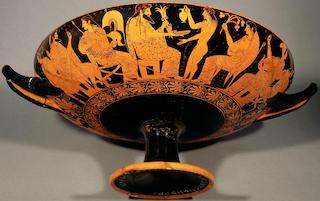
The deities of individual clans and localities, the Olympians, were always thought of as completely distinct entities. In this they bore no resemblance to the Indian pantheon,24 whose members could be seen as many faces of the same God. Perhaps this can be attributed to the peculiarities of the Greek mentality: it was more receptive to the concrete and the isolated rather than the general and the unified. The natural environment could have also played a role here. The Semite formed his knowledge about God against the background of the silent desert, while the Indian living in the realm of the tropics experienced everything as being intertwined into a single many-faced and many-voiced whole. In contrast, the horizon of the Greek was always limited by the mountain ranges; his whole country was like a network of isolated little worlds cut off from each other by hills, rocks, and bays. Therefore, the Achaean was first and foremost inclined to worship his local deity, whereas his neighbor’s god seemed to him to be as freestanding as his own native valley, which was cut off from all the others.
Greece, c.1400–1200 BC
The emergence of Zeus and the Olympian gods was much more than a simple replacement of chthonic25 deities—those of nature’s elements—by their tribal counterparts. The new pantheon marked the most important milestone in Greek religious history: reason, clothed in the likeness of a perfect human being, began to shine through the swirling clouds of the primitive night. A god of azure radiance, piercing the darkness like lightning, became embodied in the figure of “provident Zeus.” The birth of a new, more enlightened ancient religious consciousness was captured in the well-known myth of Titanomachy—the war between the gods and the Titans. The Achaeans underwent a major paradigm shift in their understanding of God: from chthonic or nature-like to more rational and in accord with human nature.
The Zeus religion had its greatest impact on world history through its proclamation of the primacy of light, reason, and harmony over darkness, irrationality, and chaos. In this regard, it is a direct predecessor to the doctrine of the Logos, sharing with it the belief in a rational creative foundation of the Universe. However, the advent of this view in Greek consciousness was first preceded by anthropomorphism.26 The human nature in Olympians was idealized and elevated to a cosmic principle. This was a major step forward, but at the same time one that was fraught with great danger. Discerning the rational principle in the Divine, the Achaeans nevertheless introduced a variety of purely human limitations and weaknesses into it.
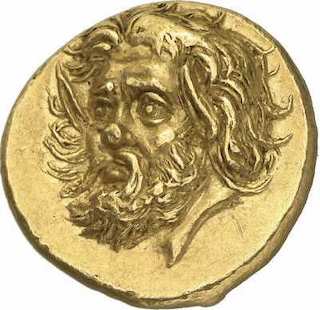
Their keen quick minds, with a penchant for humor and colorful pictures, could not resist the temptation to paint the lives of their gods after the pattern of the restless and riotous living of their renegade heroes.
One shortcoming of the Zeus pantheon, and a particularly serious one at that, was its lack of clear ethical principles. From the most ancient primitive times, ethics has always accompanied religion. The moral ideal of the Olympians, however, was so shaky that in only a few generations it gave rise to ridicules and criticism among the Greeks themselves.
Unlike the countries of the East, where religious revelations always came by way of the spiritual elite, the Aegean world for ages drew from the religious consciousness of its masses. That is why the Olympian religion became thoroughly permeated by the spirit of magicalism, which ultimately outlasted it.
A magical approach towards prayer and sacrifice in Greece first developed during the Mycenaean era. True, the Greek priests never constituted as powerful a caste in their society as what they had become, for example, in Egypt. But their importance gradually increased. The Hellenic priests were mainly characterized by being “the cult ministers” in the narrowest sense of the word. Whereas the Egyptian clergy became the breeding ground for theological thought, medicine, and mathematics, and the spiritual elite in Israel waged a battle for the moral character of their people, the Greek priests primarily went about their business of organizing sacrifices.
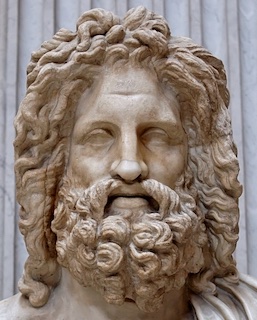
Nowhere was the art of divination so developed as in Greece of the classical antiquity period. Oracles and soothsayers had become a constant presence in the lives of kings, peasants, warriors, and merchants. The key to divining the mysterious will of the gods could be found anywhere: from dreams to the flight of birds.
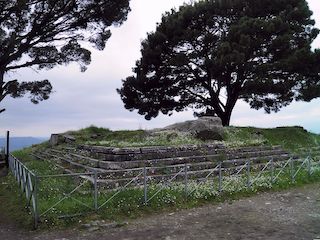
Magicalism, as a rule, is markedly for-this-world-only, placing the greatest emphasis on this life and viewing wealth, health, and well-being as the ultimate good. Such a mechanistic picture of the world is the polar opposite of all things spiritual and mystical; its understanding of the value of existence is deeply materialistic. Likewise, a strong belief in an afterlife, whenever it did occur in cultures associated with magicalism (e.g., in Egypt), was concerned with the version of the afterlife that was a mere replica of their earthly existence.
Egypt, c.1300–1230 BC
History is too often viewed as a purely natural phenomenon where certain causes must inevitably bring about deterministic consequences. Whereas we are indeed dealing with such immutable laws in the world of physical phenomena, something entirely unexpected, at times, transpires in history, which can contradict everything that has taken place prior to that point. The twists and turns in the history of monotheism are a good example of this.
The tribes of Bene-Israel had been dwelling on the marshy meadows of Gesem (or Goshen) for almost four centuries. Countless herds that belonged to the Great House27 were roaming the fields of Gesem. It was the Israelites’ job to look after them: to drive them to new pastures, to report on their condition and numbers to Egyptian officials, and to arrange the timely delivery of livestock to the royal court. This arrangement originally began with the Hyksos and probably continued under the rule of the new dynasty.
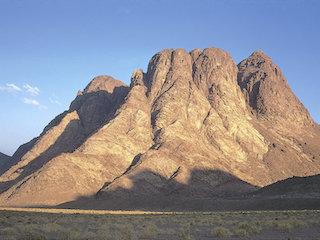
Did the inhabitants of Gesem manage to preserve their unique spiritual heritage—the ancient faith of their ancestors? The fact that the legends of Abraham and the patriarchs had been passed down to generations serves as an indirect evidence that the Israelites had not forgotten the Promise given to their forefathers.
Some elements of paganism, however, did infiltrate their religion. For example, when the Israelites guarded their flocks, they were dreading the scathe that could be brought about by evil spirits of the desert. According to their view, these horrendous creatures—malicious and vindictive—lurked behind the swamps and were responsible for sending pestilence and plague. To the Israelites’ imagination, they appeared as satyr-like demons commanded by a goat-faced god Azazel.28 To avoid harm to themselves and their flocks, the shepherds diligently placated these horned phantoms by offering sacrifices and enchanting protection spells.
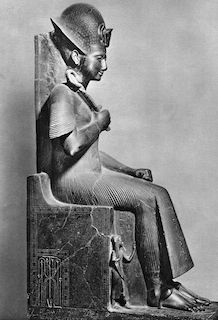
Apparently, the introduction of written language among Israelites coincided with the period when they began to adopt a settled way of life.
No matter how far removed from the affairs of Egypt, the Israelites could not but feel the repercussions of the events happening with the rest of the country. It was the time shortly after the political decline associated with the “heretic of Akhetaten” when the new and final rise of Egypt began. As before, the troops of Pharaoh marched to Palestine, and new national building projects got under way in the Egyptian land. The shepherds of Gesem had been ordered to the construction sites, being forced to cut stones, make bricks, and haul heavy materials. The calm period in the life of Bene-Israel had ended, and, instead, their children suddenly found themselves in the “House of Slavery.”
The national memory captured this period as an oppressive nightmare, which became especially hard for the Israelites during the reign of Ramses II (1301–1334 BC).
Ramses, who originally hailed from from Lower Egypt, made the Delta his permanent residence; it was there that he decided to build a large fortified city.
Taught by bitter experiences with uprisings and riots, the Egyptian rulers spared the natives from the most arduous work. No such mercy was shown to slaves and aliens such as Israelites.
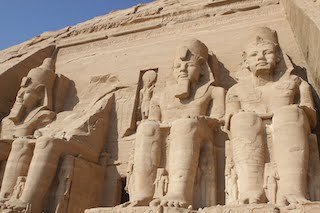
As free shepherds, the Israelites, were not accustomed to forced labor in cities. It is widely known that small nations can dwindle down quickly when the inexorable laws of the “civilized world” rudely invade their lives. The Israelite slaves began to realize with horror: the excessive corvée imposed on them by Pharaoh had the eradication of their tribe as his ultimate goal. Thus, the peaceful existence of the Gesem settlers was permanently disrupted. Yet oppression tends to unify those who are oppressed: the Israelites’ national identity awakened in the face of cruel repressions. They remembered that they were but aliens in the land of Egypt and that their ancestors originally had come from the East. They began to look with longing to the lands beyond the Sea of Reeds and the Bitter Lakes where their free kinsmen dwelt. But where could they find their salvation? In Canaan? Canaan itself was in the hands of Egyptian henchmen. Perhaps farther north, alongside the Hittites? But according to Pharaoh’s agreement with the Hittite king, all fugitives would be captured and brought back to Egypt. The Sinai Peninsula, with its untamed mountains and waterless deserts, was their only remaining option. The mere thought of these harsh and lifeless conditions would terrify the inhabitants of the well-watered Delta.
A rumor spread one day among the Israelites about some unknown agitators who would appear now and then at construction sites or among the settlers of Gesem. They were urging the people to leave the “House of Slavery” and travel to the desert to worship the God of Abraham, the God of their fathers. These men were Levites—an Israelite tribe closely associated with the Egyptians; many of them had names of Egyptian origin. Their leader himself had an Egyptian name “Mesu,” or Moses—he even looked and sounded like an Egyptian.
This is how the man whose name was to become associated with the rise of the Old Testament religion appeared on the stage of history.
The story of Moses was first recorded only in the 10th century BC. Initially historians believed it to be entirely woven from legends, but it later became evident that the core traits of the biblical narrative about him could in fact withstand the bright light of historical criticism.
Moses’ upbringing was associated with Egypt. It is difficult to imagine that the tradition would have invented this detail. The Bible says that the future leader of Israel never forgot about his Asian origin despite his Egyptian background. When he saw an Egyptian taskmaster beating an Israelite at the construction site he, in a fit of anger, killed the tormentor. He had to flee as a result, and having crossed the border (which was not easy to do at the time), he went into hiding in the only territory inaccessible to the Egyptians—the Sinai desert.
During his wanderings in the wilderness he encountered Midianite semitic tribes. They were nomadic herders who organized merchant caravans to Egypt and Palestine. They lived near the sacred Mount Sinai in the southern part of the peninsula. Moses was warmly welcomed by the Bedouins; their sheikh, the priest Raguel-Iothor (Jethro), gave shelter to the fugitive, and Moses was able to fully experience the charm of the serene life of a free pastoralist. He married the daughter of the sheikh and herded his flocks on the slopes of Mount Horeb; it was there that a mysterious event transformed him into a leader and a prophet.
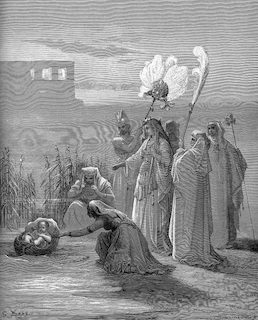
What exactly the Egyptian fugitive experienced amidst the silence of the Horeb Mountains will always remain a mystery. We know, however, that from that point he became a faithful servant of the Unseen God, the God who is the Master of human destinies, the God who entrusted him, Moses, and his people with an explicable historical mission. This was the same God to whom people had prayed from time immemorial. Faith in Him was reverently practiced by Israel’s ancestors: He was the God of the forefathers, the same God revealed Himself to Abraham. He abided above all creation and life. He was the Existent One; His name was Yahweh.
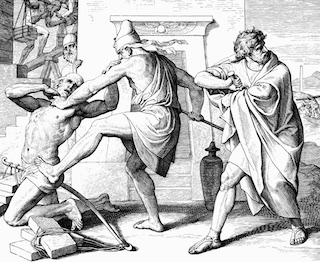
The Bible tells that Moses once wandered far into the mountains and reached an ancient sacred site. There, from the midst of a thorn-bush, engulfed in a wondrous fire yet remaining unconsumed, he heard the voice of God calling him to ministry. Confused and frightened, Moses tried to hide himself, but the voice commanded with authority that he should go as a messenger of Heaven to his own oppressed people and free them from their slavery. He was to bring the Hebrews back to this holy mountain, and Yahweh would give them a new land flowing with milk and honey.
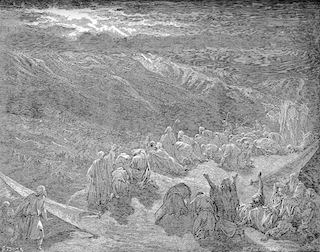
Egypt – Sinai, c.1230 BC
Around 1230 BC, in the third year of the reign of Pharaoh Merneptah,29 Ramses II’s son, Moses made his appearance among the Israelite slaves. He spoke of the God of the Hebrews, whom Abraham and his ancestors had worshiped when they had still been free, and announced that God had promised to deliver them from the “House of Slavery” and bring them to the land where their fathers had once lived. He called on the people to leave Egypt “for a three days’ journey” deep into the desert and to offer there a great sacrifice to Yahweh, the God of Israel.
Moses was met with outright distrust and even hostility. The unrest caused by his preaching resulted in the increase of the Egyptian oversight and more cruel slave labor conditions.
The bitter struggle of the fearless Levite against the Egyptian authorities is surrounded by poetic legends; one can conclude from them that he, however, had very little success at first. Then destiny itself came to the aid of Israel in the form of an epidemic that disrupted public order and led to anarchy.
Moses signaled that the time to leave Egypt had come. Having hastily performed a traditional ritual, the Israelites, their herds, and fellow slaves of mixed origins moved out from the vicinities of Raamses and Sukkot.
Moses did not lead them directly to Canaan, because chains of Egyptian fortifications were positioned everywhere along the “Philistine Highway.” Having studied that area before during his own wanderings, he skillfully avoided the border posts in that desolate terrain and led the tired fugitives to their first station near the Etham fortress. The way forward turned out to be blocked, and the only escape was to break camp and move even deeper into the desert to the shores of the Sea of Reeds. Their flight lasted the entire night.
When Merneptah learned that Israel and other Hebrew tribes had vanished to the east, he immediately ordered the chariots to the shores of the Sea of Reeds. Israel’s location was apparently reported to him from Etham. Now the desert “shut” the Hebrews in. On one side there lay impassable reed swamps, while the chariots of Pharaoh were quickly approaching from the other.
There were screams of horror as the fugitives were hurling accusations at Moses: “Because there were no graves in Egypt, have you taken us away to die in the wilderness?”[45] But their leader believed even at that desperate moment that Heaven would deliver his people. “Do not be afraid, and you will see the salvation of Yahweh,”[46] he shouted, and immediately led the way for the Israelites across the swamps.
The Egyptians continued their pursuit despite the gathering clouds and the approaching storm. Perhaps they would have managed to overtake some fugitives, but their advance slowed down as it became increasingly harder to wade in the thickening gloom. Their heavy chariots became mired in the viscous silt; the storm raged on, and the wind direction had now changed, driving the waves against the pursuers themselves. Only then did the Egyptians realize the danger that they faced and hastily turned back. The waters, however, overtook them.
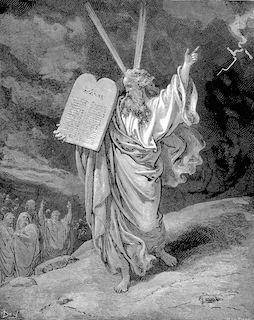
The Israelites, who in the meantime were standing on a dry hill, witnessed the desperate attempts of the horsemen and could not believe their eyes. Something just happened that neither the Hebrews nor the Egyptians had expected. Just an hour earlier, the Israelites had been at the brink of death. The pursuers would have mercilessly dealt with them, but Yahweh had delivered His people and stopped the formidable enemy. Undoubtedly, this was a miracle, even though, on the face of it, ordinary forces of nature had been at work.
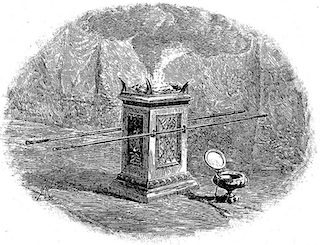
Does the modern person have the right to look down on this belief of the fugitives in the special protection of Heaven? The history of a small tribe that miraculously survived all the vicissitudes of fate and became the bearer of Monotheism among the pagan peoples is truly fascinating. For those who choose to deny the inner meaning of the destiny of nations, the events at the Red Sea were just another extraordinarily happy coincidence. Christianity, however, assesses the Old Testament history from a different viewpoint, seeing in it the manifestation of that Unseen Reason, who guides the course of the Universe, the human history, and the destiny of each individual.
The entire subsequent journey of Israel across the arid plains and mountains was fraught with fears and unexpected joys alike.
Their caravan entered a barren area at the border of the desert of Sin, at the foothills of the Horeb Mountain Range, and then continued on its way encountering neither a well nor a stream for a long time. The wayfarers were tormented by thirst. Murmurs of discontent turned into an open indignation. There came a moment when stones were about to be hurled at Moses. It was a critical point: the control over the rebellious crowd was slipping from the leader’s hands.
At this difficult moment, God once again came to the aid of His chosen one. Moses ordered to hammer away with poles at limestone, and when, after long efforts, a cavity was formed, he struck it hard with his staff and spring water gushed from the opening. The crowd cheered—the travellers had been saved.
All these seemingly insignificant events played an enormous role in the fate of the children of Israel whose existence was continually hovering between fear and hope.
Sinai, c.1230–1200 BC
What was Moses’ ultimate goal? He resolved to go to the same location where he had herded the flocks during his years of exile, the place where he had heard the voice of God. There, at the holy mountain, he hoped to breathe a new spirit into Israel, breathe in faith, energy, and courage. He wanted to bring his fellow tribesmen at the foot of Sinai as if saying, “O God! These are the people You called on me to save whom I have now brought back to You.”
A few days after stopping at Sinai, the leader ordered to make preparations for a great moment: the people were about to enter into a solemn union with God. This was something entirely unheard of, for in the mind of the Easterner, humans were viewed as absolute nonentities compared to the Divine, and a covenant between such two parties would be considered an unimaginable insolence.
Yet the Lord of life Himself declared the conditions of this striking agreement through the mouth of His prophet, “If you will obey My voice and keep My covenant, then you shall be My own possession from among all peoples; for all the earth is Mine. And you shall be to Me a kingdom of priests and a holy nation” (Ex 19:5–6).
Thus a nation of the Covenant, a people of God, was born; out of the seed of Abraham emerged the first as yet weak sprouts of the Old Testament Church, the foremother of the Church Universal. The history of religion from now on would no longer be only a history of longing, vexation, and searching, but it would become the history of the Covenant, a dialogue between the Creator and humanity.

Biblical tradition paints a magnificent picture of the making of this sacred Covenant.
The people left the camp and approached the foothill of the mountain. All were gazing in terror at its top enveloped in the dark clouds: lightnings flashed among them, and the rumble of thunder echoed across the clefts with a trumpet-like boom.
Meanwhile, Moses separated himself from the people and began ascending to the peak of Sinai. There he disappeared among the cliffs, venturing where both the thunder and the storm were raging—the place of thick darkness enveloping the divine Mystery.
Next, we see Moses back in Israel’s camp. He announces God’s Covenant to people who are standing in solemn silence and sprinkles them with sacrificial blood as a sign of making the Union.
The commandments, inscribed on two stone plates—the tablets, read:
How seemingly simple are these words! Even if they appear to us as something to be taken for granted, they arrived to the ancient world as an unprecedented revelation. To understand how remarkable these sacred commandments appeared to their contemporaries, it is sufficient to recall the kind of relations that existed at the time between humanity and gods of Egypt, Babylon, or Greece. These two inconspicuous, roughly hewn stones had immeasurably greater significance for the spiritual history of humankind than thousands of elaborately decorated Assyrian and Egyptian artifacts.
Moses’ greatest contribution to humanity was that he, not being intimidated by the opposition and misunderstanding, dared to proclaim the lost Law and open the forgotten ways that led back to God. His words were addressed not only to Israel but to the entire world and its future generations.
Moses realized that his people needed an external sign of the Divine presence, a representation of God that would go before them, instilling them with confidence (Ex 32:23).
The Bible directly states that the idea of creating such a symbol was given to the prophet as an inspiration from above (Ex 25).
So one day, the leader ordered a sacred Ark of the Covenant to be built. It was transferred to a special tent, the Tabernacle, which was set up outside the camp.
The Ark looked rather modest on the outside: it was a box made of wooden planks, a little more than a meter in size. It was overlaid with metal, and the wings of kerubs, or cherubs—fantastical creatures with the body of a lion, the face of a human, and the wings of an eagle—stretched their wings above the lid. They were prostrating over the Ark, covering their heads with the wings, which served as a throne on which the God of Israel was invisibly sitting. The kerubs were probably a depiction of the spirits of storm which Israelite poetry usually associated with Theophany.
When the people broke camp or marched to battle, the Levites would go in front carrying the Ark using poles inserted into its side rings.
The time finally came to leave Sinai. Now Israel faced a new task: to take over the land where Abraham had dwelt long ago. A band of nomads turned into a military camp.
Moses made a decisive move. He sent out spies to the east to determine whether the invasion could be counted on as a success. The scouts returned, carrying lavish fruits of the Promised Land. The nomads looked in fascination at the huge bunches of grapes, pomegranates, and figs. Yet the spies also struck fear into the hearts of the people by their description of the inhabitants of Palestine, their strength and courage, their impregnable fortresses, and the nomads’ panic grew into an insurgency against Moses.
Following many years of wandering, around 1200 BC, Moses finally decided it was time to launch an offensive to the north.
All that remained was to cross the Jordan—that sparkling and winding boundary, beyond which lay the desired Canaan! Here, however, the curtain of history comes down concealing from us the mighty figure of Moses.
Mysterious shadows are hovering over the prophet’s grave. He did not die of sickness or old age. The place of his burial remains unknown to this day.
Canaan, c.1200–1125 BC
Soon after the death of Moses, the Israelites felt that they could no longer live in Transjordan. The tribes crowded one another; the narrow strip of land, bounded by the Arabian steppes on one side and the Dead Sea and the Jordan on the other, could no longer sustain the masses of the nomads and their cattle. Did not Moses promise to lead his people into the land “flowing with milk and honey”?[47] Was not Canaan given in possession to Israel by Yahweh Himself? The time now came and it was necessary to make a move.
Following the death of Merneptah, Egypt was overcome with anarchy. The power of Egypt in Canaan was at its minimum; the local population was weakened by strife and wars. The moment was ripe for Israel’s military campaign to the west.
The Canaanites were close relatives of the Hebrews and the Phoenicians. Apparently, just like the Israelites, they had once come from the desert and by then had lived in Palestine for over a thousand years.
Excavations showed that Canaan was a typical land of syncretism30 in terms of their art and religion. There were no national gods here, instead the inhabitants primarily worshiped those of their neighbors. The figurines of Horus, Hathor, and other Egyptian gods, as well as depictions of the Babylonian Ishtar were discovered among the ruins.
Joshua, the son of Nun, who became the head of the Israelites after the death of Moses, deeply believed in the divine promise that the wanderers would finally obtain their coveted home. The people, too, shared his confidence. Although the stature of the new leader was incomparable with that of Moses, Joshua was, nonetheless, recognized by the majority of the tribes.
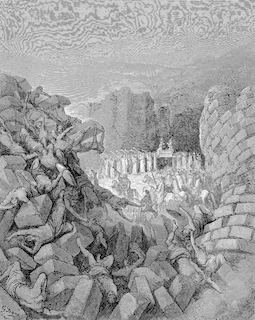
Jericho was the main obstacle they had to overcome on their way to Western Palestine. Its cyclopean walls towered among the palm groves some two-hour walking distance from the Jordan. There was no hope of passing it without a fight.
Joshua did not hesitate for long. One day, at his signal, the Ark was lifted, the tents were rolled up, and the Israelites moved west across the banks of the Jordan.
It still remains a mystery how such a well-fortified city could fall. A poetic legend is recorded in the Bible about its walls collapsing at the sounds of Israelite trumpets. Perhaps here, as well as at the Jordan, an earthquake occurred, suddenly opening a breach in the wall. It is easy to imagine the kind of impression a ground jolt splitting the wall would produce if it happened at the very moment when Israel was making its approach.
The events unfolded quickly and the triumphant march of the Ark continued.
Palestine, c.1125–1025 BC
The promise made to Abraham finally was fulfilled: the land that the Egyptians and the Hittites had owned for so long finally became the land of Israel. The main difficulties, however, still lay ahead. Having become essentially one people with the Canaanites, the Israelites—yesterday’s nomads—gradually began to adopt the civilization and the beliefs of the natives. Thus, like the Aryans in India, the victors nearly ended up themselves in the position of the vanquished.
Life alongside the Canaanites quickly led to the spread of paganism among the people of Yahweh. That’s how double faith first emerged, so characteristic of peoples of a low culture, who embrace a higher religion.
It is unclear how the spiritual history of Israel would have evolved if it were not for the new turmoil that shook all the tribes.
There appeared new contenders for the land “flowing with milk and honey,” and this time they were no match for any of the inhabitants of Canaan. These were the Philistines.
A warlike and energetic tribe, the Philistines had already mastered ironworking. They were engaged in sea piracy and fishing. Around 1080 BC they began a decisive military campaign to the east, pressing on Israelite and Chaldean tribes alike.
Who could stop that wave? The poorly armed peasants would flee as soon as they heard the roar of war chariots or saw the enemy helmets decorated with feathers. The Philistines imposed tribute on nearly all of Canaan, and the only thing left to the conquered was a guerrilla warfare tactics of unexpectedly attacking the Philistines or setting fire to their crops.
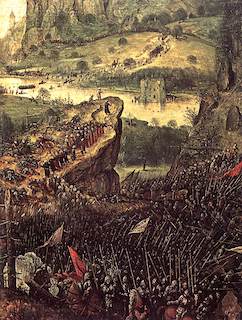
The rule of the Philistines grew stronger and all but total. Enemy garrisons were set up in all the cities, and tribute collectors operated throughout the land with impunity. Israel, which was already in a state of deep spiritual crisis, lost its political independence as well.
All these events served as an external impetus, contributing to the emergence of a new religious movement, at times peculiar, but thanks to which Israel recovered from the state of decline and spiritual demise.
The followers of this movement were called Benei ha-Nevi’im, “the Children of the Prophets.” The word “navi” signified a messenger of God’s will. Whereas clairvoyants and soothsayers formerly appeared as lonely messengers of Heaven, the new prophets began to assemble in groups for worship who walked the roads of the country, singing battle hymns and calling on people to be faithful to the God of their fathers.
Very little is known about the activities of the Children of the Prophets and the individuals who headed their movement, tradition connects them to Samuel, the last great Hebrew leader of the era of the Judges. In one place the Bible directly portrays him as a leader of the community of the prophets (1 Sam 19:20).
Samuel undoubtedly considered the spiritual rallying of the Israelites to be his main task.
According to tradition, the seer even achieved a nationwide repentance and an oath to banish the pagan gods. The idols were thrown out, and from that time “the sons of Israel began to serve Yahweh only” (1 Sam 7:4). The religious Covenant, however, proved to be too weak a rallying point for the Israelite tribes. There was a demand for a “strong hand” of a secular type. The elders raised before Samuel the need to appoint a king, and around 1025 BC, Samuel chose a ruler for Israel at their insistence.
Palestine, c.1020–950 BC
The entire Bible is permeated with the spirit of dissent against autocracy. The free union of the faithful for whom the law of God is the only authority has been the political ideal of religious teachers of Israel beginning from the times of Moses. This ideal is theocracy31 in the special sense of a direct jurisdiction of God rather than a rule by clergy. The theocratic rule established by Moses already contained the first sprouts of a new type of community, the Old Testament Church, and at the same time the kind of society that was built on the constitution and law rather than the arbitrariness of a monarch. For the commandments of Yahweh were equally binding for all: simple peasants and citizens, leaders, principals, and kings. In this regard, the Bible stood in stark opposition to almost the entire ancient Near East: monarchy was accepted in the Old Testament only as a tolerable evil, as an imperfect institution born of people’s sins and frailties.
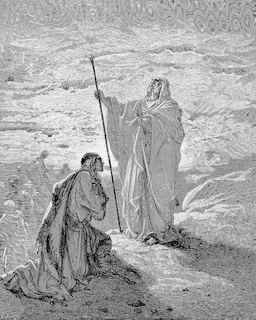
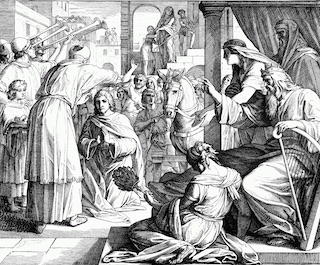
However, the political situation at the time and the threat of Philistine invasion undoubtedly influenced Samuel and convinced him of the need to appoint a king. Yet he intended to nominate the candidate himself. When a young peasant Saul from the tribe of Benjamin came to him for advice one day, he decided to install him as “a commander over the people” (1 Sam 9:16).
Saul’s nomination received general acclaim. However, Samuel, as the Bible says, warned all Israelites that their well-being would be staked on their continued devotion to Yahweh, their Supreme King, and His Covenant. “But if you persist in doing evil, both you and your king will perish” (1 Sam 12:25). In other words, the king was made equal to all of his subjects before God.
A special place in the Old Testament religion belongs to David, Saul’s son-in-law and his successor on the throne. Although neither a prophet nor a teacher of faith, David was destined to have an enormous impact on the entire history of Israel. A great religious poet and psalmist, he became the founder of Jerusalem as the spiritual center of Israel. His name is also inextricably linked with the emergence of biblical Messianism, which has been at the heart of Sacred history.
Saul, the first “commander over the people of God,” perished on the battlefield, and the thirty-year-old David was proclaimed the new king over all the tribes by the people’s assembly in Hebron around 1000 BC.
David’s army had by then gained considerable combat experience. When the Philistines appeared in the Valley of Rephaim, David’s soldiers were able to attack the enemy from the rear and inflict a heavy defeat on them. The Israelites pursued their assailants all the way up to Gezer. This victory put an end to the period of the Philistine domination of Israel. Several subsequent Israel’s campaigns to the west completely undermined the Philistines, compelling them to peace.
David’s military successes led to the creation of an empire that united not only the peoples closely related to the Israelites—the Ammonites, the Idumeans, and the Moabites, but also the new territories of the Aramean-Syrians. The neighboring Phoenicians to the north, too, entered into a friendly alliance with David.
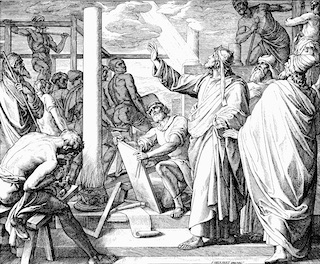
But David’s greatest achievement was the creation of a nationwide capital. The king turned his attention to the formidable castle of Zion, towering on the high rock over the stream of Kedron. The castle was named the “City of David,” while its surrounding town took back its ancient name of Jerusalem.
The Ark had remained in private hands all those years. David finally decided to transfer it to the new capital, thereby making Zion into the Holy City.
The solemn transfer of the “Throne of Yahweh” to Jerusalem took place around 995 BC. Reinstating the tradition from the nomadic era, David did not bring the Ark into a building, but set it under the shadow of a marching tent.
The transfer of the Ark of the Covenant to Mount Zion was of exceptional importance as it signified the founding of the spiritual center of the Old Testament religion. Over time, Jerusalem would play an important role: it would become the Holy City of God’s people and subsequently the Church. And although Jerusalem had existed five hundred years prior to David, it was made into what it would eventually become by his transferring there the Ark of the Covenant.
In one ancient text attributed to David, God entered a new covenant with the “ruler of the people.” The covenant required of the leader uprightness and the fear of God, and, in return, God’s promise spoke of an ideal king from the offspring of David—the One who would become the founder of the Kingdom of God on earth. This belief in the Coming King and His Kingdom would grow more enlightened and spiritualized over the centuries. And when some ten centuries later Jesus of Nazareth was to appear among the people, he would be referred to as the Anointed One—the Messiah—the son of David.
David, one of the most gifted and prominent men of Israel, died in 961 BC. Despite belonging in many ways to the narrow and limited world of superstitions and blood feuds, he contributed to the creation of the people of God by giving them the Holy City.
David’s son Solomon bore little resemblance to his father. Having grown up in luxury and not having experienced life, he ascended to the throne when he was not even twenty years old. He knew not wars, nor difficulties, nor dangers. His mother had a great influence on him, and he frequently deferred to her. He also heeded the voice of the prophet Nathan, who helped his accession to the throne. And it seems that it was only in the days following Nathan’s death that he made up his mind to fulfill his father’s dream: to build a Temple of Yahweh in Jerusalem.
The construction took several years and the Temple was consecrated in 950 BC. Its structure was distinct for its noble simplicity of forms, made of hewn stones, inlaid on the inside with precious wood covered with golden leaves.
As a visible and earthly abode of God, the Temple represented the Universe. The golden lamps stood for stars; the two main pillars of copper with molded capitals symbolized the power of vitality and growth; the cornices were decorated with reliefs of flowers, fruits, animals, and cherubs (spirits representing nature’s elements).
It should be noted that all these details of the Temple organization were inspired by Phoenician and Egyptian art. However, the most striking feature of Solomon’s Temple was not in its decorations derived from neighboring cultures. The uniqueness of the Temple was that it contained no image of the Deity.
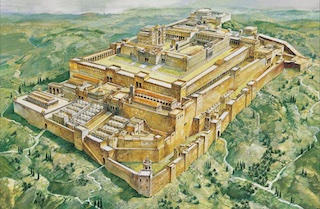
The Temple was built on Mount Moriah near Mount Zion. The translation of the Ark to the House of God was turned by Solomon into a day of national celebration.
Tradition says that a shining cloud—a sign of God’s presence—filled the House of the Lord during its consecration.
The Kingdom of Israel, 950–930 BC
Literary life blossomed during the reign of Solomon. This flourishing was a vivid testimony to the new phase in the intellectual and spiritual development of the nation. It was during these years that the foundations of the faith of God’s people, their understanding of humanity, the world, and God, were articulated for the first time.
History itself served as the main evidence of Divine Providence for the nation, beginning from the time when God revealed Himself to Israel in the events of Exodus, their wanderings in the wilderness, and the conquest of the land. Therefore, Israel’s symbol of faith takes on the form of a historical narrative, first as an oral, and during the reign of Solomon, as a written tradition. We do not know how this early Sacred history was called or who was its God-inspired author. He is commonly referred to in biblical studies as the Yahwist, since he preferred the God’s name of Yahweh and believed that it had been known long before Moses.
The writer of the Yahwist source of Genesis was one of the apostles of the Old Testament. In addressing his contemporaries, he communicated the sublime truths, but he did so in a language accessible to the widest circles. One can hardly find an equally amazing blend of folk literature combined with deep spiritual insights on all the pages ever written by a human hand. That is why Genesis has been called a book suitable for babes and sages alike.
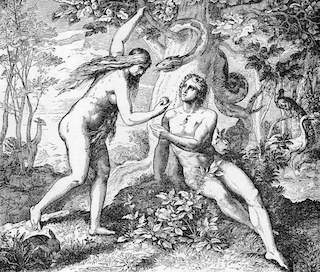
For the Yahwist, Sacred history is a drama playing out between heaven and earth, between God and humanity. He asserts the primacy of humanity in Creation. First, God creates a human, whereas the Garden of Eden and all the animals are created for him later.
On one hand, the human being turns out to be merely a part of the earth, but on the other, he is God’s special spiritual creation. This twofold human nature is emphasized many times by the writer of Genesis. Man is placed in Eden not as a slave or an idler but in order to preserve and cultivate it. In the middle of Eden stand tall the Tree of Life and the mysterious Tree of the Knowledge of good and evil.
To the Yahwist, the Tree of Life primarily embodies the source of immortality. God does not block the human from accessing it, thus continuing His special patronage over him. He only forbids the human to eat of the fruits of the Tree of Knowledge, warning that it would lead to humanity’s demise.
Having created animals “out of the ground,” i.e., from the same substance as the human, Yahweh brings them to him “to see what he would call them” (Gen 2:19). In the vernacular of the ancient Near East, giving a name signified authority over someone. The victorious kings usually gave new names to their conquered counterparts. Thus, the royal power of humanity over nature is clearly established. And not only power. After examining all the animals, man did not find “a helper comparable to him” (Gen. 2:20). This was an emphatic way of expressing humanity’s uniqueness in the entire cosmos.
Only a human being can be equal to another human. And therefore, Yahweh creates him “a helper” out of himself. “This is now bone of my bones, and flesh of my flesh,” (Gen 2:23),—proclaims the man when he sees the woman. The story is concluded with the words of the Yahwist that sanctify love and marriage: “A man shall leave his father and mother and be joined to his wife, and they shall become one flesh” (Gen 2:24).
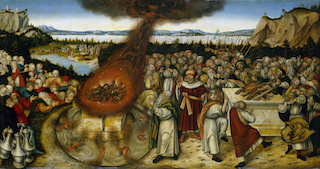
In the words of the Yahwist, the first woman is “the mother of all living” (Gen 3:20). This brief formula refutes any doubts about the oneness of the human race.
The Yahwist decisively rejects the notion that evil was created by God. On the contrary, everything in creation is beautiful and harmonious even though it is not complete. The earth is barren and deserted, waiting for its human-creator, and then Eden appears on it—the beginning of the world’s flowering. Humanity is not only the master of nature that surrounds them, but also the masters of their own nature. Their carnal, elemental and sensual life develops naturally and harmoniously. This is evidenced by the nakedness of the first people who had nothing to be ashamed of. The Tree of Life, which the humans have not yet tasted from, awaited them. And if we recall the multifaceted meaning of this symbol, then we can conclude that it promised not only everlasting life, but also the initiation to the highest wisdom.
Enveloped in divine blessing, called to be the master of the world, the human, according to the Bible, receives a warning from Yahweh. He will face death if he tastes of the Tree of Knowledge of good and evil. This commandment is like a touchstone for testing the devotion of humanity to the will of the Creator.
God as the object of envy, God the rival, God as something alien—this is what is born in the consciousness of humans darkened by sin, which pushes them to trespass the commandment. The fact that this downfall in humanity’s perspective towards God occurred at the very beginning of human existence is corroborated with magicalism, which has parasitized on religion from the early prehistoric period.
The Yahwist is aware that humans committed their transgression under the influence of hostile forces. But what are these forces? Admittedly, the Yahwist could not find a more suitable guise to describe them other than that of a serpent.
The serpent seduced Eve to break the prohibition. Their dialogue is conveyed with such inimitable liveliness, such subtle knowledge of human psychology, that it has remained the archetypal image of seduction and fall for all ages. The serpent causes the woman to doubt the truth of what the Creator has said, and she makes the choice to trust the serpent over God.
From now on, the Garden of Eden is off limits to humans. A cherub and a flaming sword guard the way to the Tree of Life (Gen 3:24). Cherubs were a personification of storms, and their statues would be placed as guardians of palaces and shrines. Likewise, the “flaming sword” refers to atmospheric fire guarding the forbidden realms. These ancient near-eastern images must signify that humans have been deprived of communion with God and eternal life.
Work is often portrayed as a consequence of the Fall. But in fact, as we have seen, even in Eden the human led an active and creative life. Falling away from God subjected the earth to a curse, and working turned from being something joyous into a tortuous and arduous activity. Nature has turned against the human who is now compelled to provide for himself “in the sweat of his brow” until he returns to the dust out of which he was taken (Gen 3:17–19).
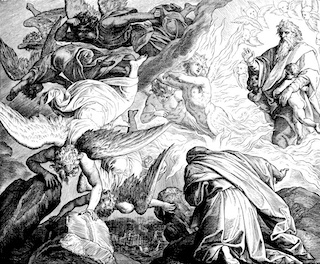
Following the first tragedy, Sacred history narrates about the second one: a fratricide. Whereas the first rebellion was directed primarily against God, now man has turned against man.
The corruption of religious consciousness manifests itself even in this crime. When Cain and Abel brought their offerings, Yahweh favorably accepted Abel’s gift while rejecting Cain’s sacrifice. Cain was vexed, “and his countenance fell” (Gen 4:5). (The reason for God preferring Abel is not stated but it was undoubtedly contained in the lost part to the story.) Overcome with anger, Cain decided to kill his brother, who allegedly stole his blessing. After all, with the death of Abel, one of the only two sacrificers present, Cain could count on a special favor from God. As to the murder, he hoped to hide it from Yahweh. Therefore, Cain’s sin is rooted in the naive notion that heavenly gifts can be obtained by deception and violence. This belief, so characteristic of magicalism, is denounced by the Yahwist who emphasizes all-knowing God who can penetrate into the depths of the human heart and see the true motives behind the person’s actions. Even before the fratricide, Yahweh warned Cain that “sin lies at the door” and that he must “rule over it” (Gen 4:7). Thus, in relation to God, each person ought to be guided only by sincerity and honesty.
In the sixth chapter of Genesis, the Yahwist talks about marriages between people and superhuman beings. A remarkable feature of that story is that humans begin to act completely independent from God. Whereas Cain still spoke with Yahweh face to face, this was no longer the case. By that time, all of the characters, the “sons of the gods,” women, and their offspring—the giants—were operating with full autonomy, as if God never existed. Corruption took hold of the human race, and evil had triumphed.
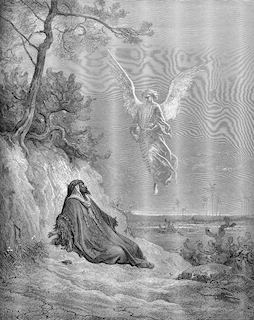
At the same time, the writer of the Book of Genesis points to the universal law of requital. Transgression is inevitably followed by punishment: Adam is denied the Tree of Life; Cain is cast out into a barren desert; neither can the giants and the corrupted human race escape the retribution.
The biblical author speaks of an impending catastrophe permitted by Heaven on account of the human atrocities. Noah and his family are saved not due to some whimsy or rivalry of the gods but because he was chosen as the only righteous man among the universal corruption of the human race.
Was the flood global? Those looking for geological facts in the Bible will be disappointed; here the poetic shell of the tale obscures the external details. In addition, the idea of the “world” for the ancients was very limited and did not extend beyond the Mediterranean Sea and Mesopotamia. It should also be noted that the Bible often uses the word “earth” and even “all the earth” to refer only to a given local area.
According to the biblical narrative, the descendants of Noah became the ancestors of the three main linguistic and tribal ancient groups: the Semites, the Japhethites, and the Hamites.32 To the author of the Book of Genesis, the entire humanity was limited to those three tribes.
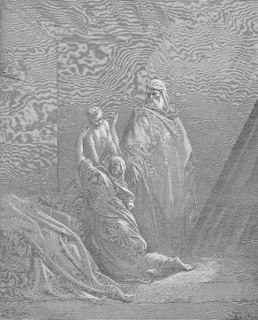
The tale of Noah’s sons ends with the final act of this God-fighting drama: the founding of the city of Babylon and the construction of its Tower, an unequivocal symbol of empires that seek to subjugate people by the use of violence. Rather than rallying humanity in and through God, the builders of “Babel” choose to rely on external, purely humanistic unity. It is for this purpose that they erect their giant Tower. From the times of the Babylonians, the pharaohs and the Assyrians, the Persians, the Macedonians and the Romans, all the way to our own century, the fragments of these unfinished imperial towers are rising along the road of history.
The empire tower symbolizes an attempt to “settle down on earth without God.” Time after time the builders busy themselves, preoccupied with the task of “organizing” the society (“lest we be scattered across the face of the earth”), but the Lord descends time and again “to look over the city and the Tower” (Gen 11:4–5), and the fruits of demonic pride invariably crumble as if made from sand.
And just when he finished the story of the Tower, the author of the Book of Genesis for the first time speaks of the possibility of the salvation of humanity. Not arguing as a theologian and not daring to talk about things yet hidden from him, he merely professes his faith.
The Yahwist and his followers rejected the pagan concepts of the Universe’s endless cyclicality, shattered the myth of a static Universe, and saw the world and humanity as history, drama, and becoming—a prelude to the Kingdom of God. This teaching would eventually be deepened and spiritualized by the great prophets of the Bible.
Israel and Judea, 930–850 BC
In the final years of Solomon’s reign, the Northern regions became a hotbed of incessant unrest. One of the most significant uprisings was inspired by the prophet Ahijah from Shiloh, who prompted Jeroboam the Ephraimite to revolt against Jerusalem.
Pharaoh, who was in union with Solomon, died, and now Shoshenq I reigned (935–914 BC). The troubles in the Hebrew kingdom gave him high hopes for success.
A series of fratricidal wars began, and Palestine once again fell prey to her neighbors. The unity of the kingdom of Israel came to an abrupt end. Shoshenq I did not miss the chance to meddle in the struggle of the North and the South. He invaded Palestine, probably called to the aid by Jeroboam, received a rich ransom from Judah’s king Rehoboam, and then marched as a victor through the lands of his former ally. The Syrians of Damascus, too, took the advantage of the weakening of Israel.
Jeroboam I (922–901 BC) became the head of the northern kingdom of Ephraim or Israel—a country much larger than Judea, where the majority of the peasant population resided.
Yielding to the pagan instincts of the crowd, Jeroboam reduced Yahwism to the level of a primitive agricultural religion. A wooden bull covered with leaf gold was turned into an actual idol that people were rendering divine honors to.
However, no matter the speed of this pagan epidemic, its opposition emerged even faster. The communities of the prophets reappeared, called as before the Sons of the Prophets. Among them was Elijah the Tishbite.
He hailed from the East, from the outskirts of the desert. His appearance shocked everyone who met him: a swarthy face framed by a shaggy mane, a simple shepherd’s sackcloth; his movements were swift: he was harsh, impulsive, and vehement, as if enveloped in fire and storm.
His name meant “My God is Yahweh.” These words constituted the creed of the mysterious wanderer, the alpha and the omega33 of his doctrine.
Elijah made a great impression on his contemporaries, perhaps the biggest since Moses. He is surrounded by a halo of legends and mysteries. The people looked at him with superstitious fear. Centuries later, he still continues his journey on earth. It is rumored that he would appear to anoint the Messiah as king. The Jews would leave a special place for him at their sacred meals; he is looking at the world from the Byzantine frescoes and the Russian icons.
Elijah has been preserved in the memory of people as a defender of the persecuted against the powerful of this world, as a prophet of the humiliated and the oppressed. This gave immortal glory to his name.
Elijah was the second Moses in Israel’s religious history. At the pivotal moment, when the threat of paganism was the most dire, he dealt it a crushing blow.
The giant figure of Elijah stands tall like a beacon at the junction of two eras. He was an adamant warrior who raised the banner of Moses high, and by his struggle he cleared the way for the great Hebrew prophets.
Yet neither Elijah nor the prophets who succeeded him a century later can be regarded as merely isolated domestic phenomena. All of humanity seemed to wake up around that time after a long period of enchanted sleep, preparing to break free from the demonic powers that oppressed the world. The authors of the Upanishads and Buddha, Lao Tzu and Zarathustra, Anaxagoras and Socrates simultaneously with Amos and Isaiah were preparing to reveal to the world new paths of knowing God.
China, 8th–6th centuries BC
A tall yellow-faced old man with a long beard, thick black eyebrows and a bare knobby skull—this is how Chinese artists have portrayed him. He is often depicted sitting on an ox, which is carrying him off to unknown distant lands. According to a legend, the last person to have seen the old man was an official in charge of the border crossing, who received from him an amazing book On the Way to Virtue. After parting with him, the sage set out to the wilds beyond the western frontier. His figure vanished like a ghost among the mountain passes, and he was never heard of again.
He is known under the name of Lao Tzu, which means “old child” or “old sage.” Many consider 604 BC to be the year of his birth.
The philosopher expounded his doctrine in Tao Te Ching, which is translated as “On the Way to Virtue.”
Lao Tzu was born in a country whose very name had long been synonymous with everything conservative, traditional, and motionless.
Similar to other paganistic cultures, China preserved traces of the early monotheism. The Chinese people remembered a certain Supreme Principle known as Tian (Heaven) or Shangdi (the Lord). This Supreme Principle was revered as the founder of their nation and, as it were, the head of the immense Chinese family. As such, It deserved to be treated with the same, if not greater, reverence as a wang34 —the head of the clan or the eldest in the family. This reverent attitude was expressed, among other things, through sacrifices made to Heaven. As a descendant of the Supreme Ruler of Heaven, the emperor fulfilled the role of the high priest. His entourage and the heads of clans also assumed priestly faculties and performed rituals dedicated to gods and spirits. This obviated the need for a separate priestly class.
The 8th century BC marked the beginning of turbulent times in China; their ancient songs are replete with complaints of turmoil and strife. A rivalry between feudal princes, cruelty and wantonness, rising crime and terrible natural disasters—these were all distinctive characteristics of that era.
Such were the times when the “old sage” Lao Tzu appeared in China. Without loud proclamations or the insistence characteristic of pompous pundits, he shared with the whole world the mysteries of existence revealed to him, as if whispering them into its ear.

“There is something, chaotic and complete,” he writes, “which existed before Heaven and Earth. Oh, how still it is, and formless, standing alone without changing, reaching everywhere without suffering harm! It must be regarded as the Mother of the Universe. Its name I know not. To designate it, I call it Tao.”[48]
The Tao literally means “the Way,” but this Chinese word has the same multifaceted meaning as the Greek term “Logos.” It signifies law and order, meaning and principle, sublime spiritual Essence and life permeated by this Essence.
Since the Tao is a spiritual principle, it cannot be perceived by sight, hearing, or touch. All visible existence is infinitely beneath it, and, therefore, the philosopher dares to refer to the Tao as Non-Existence. It does not exist the same way as do mountains, trees, and people, for it surpasses the reality of all things that are earthly and tangible.
“Tao eludes the sense of sight, and is therefore called colorless. It eludes the sense of hearing, and is therefore called soundless. It eludes the sense of touch, and is therefore called incorporeal…. Ceaseless in action, it cannot be named, but returns again to nothingness. We may call it the form of the formless, the image of the imageless…. All things under Heaven derive their being from Tao in the form of Existence; Tao in the form of Existence sprang from Tao in the form of Non Existence.”[49]
A sage can contemplate the Tao without leaving his house: “One may see the Way of Heaven without [ever] looking out of the window.”[50] Introspection and spiritual purification are the requirements for “attaining the Tao”: “Only one who is eternally free from earthly passions can apprehend its spiritual essence.”[51] One who attains contemplation of the Divine is, in turn, united with It, finding eternal peace. “He who acts in accordance with Tao, becomes one with Tao,”[52] as if resting in the bosom of life, enjoying the ineffable silence and experiencing how Eternity itself flows into one’s soul.
People are tormented by greed, envy, and ambition. Rulers oppress their subjects, compete with one another, and mobilize troops to seize foreign lands. The philosopher appeals to kings and generals trumpeting their every military triumph: “When he conquers, he [should] not be elate. To be elate were to rejoice in the slaughter of human beings…. He who has exterminated a great multitude of men should bewail them with tears and lamentation.”[53]
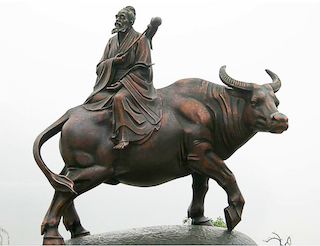
For Lao Tzu, all human activity is a fruitless pursuit of vanity: people are always in a hurry, restless, scurrying around. Divine serenity, on the other hand, only abides with the Tao, which moves without moving and creates without doing.
As for human knowledge, science and education, traditions and the social norms of civilization—Lao Tzu unequivocally rejects them all.
Some followers of Lao Tzu were said to have left for mountains where they immersed themselves in contemplation and silence. They would stay motionless among rocks for many years: their faces awash by rain, their hair ruffled by the wind, their hands resting on their chests, their bodies entwined with plants and flowers.
According to a legend, the Old Sage was once visited by Confucius. Lao Tzu sought to convince the astonished Confucius, who had devoted all his life to the promotion of ancient rituals, that all his attempts to improve society through man-made regulations were futile and doomed. In order to achieve perfection, one must instead rise above everything fleeting and calmly sail along with the flow of the great River of Life. “The snow-goose does not bathe everyday to make itself white.”[54]
Perhaps, Chinese people of art became the most direct spiritual heirs of the Tao Te Ching. In the atmosphere of moderation and common sense, having thrown off the shackles of vanity, the Chinese poets were able to remain true to the sacred irrationality bequeathed to them by Lao Tzu. They heeded the Tao and surrendered themselves to its enchanting whisper. Likewise, the Chinese artists sought that sacred “naturalness” in the beauty of nature, depicting it with a genuine religious reverence: bizarre rocks, bamboo shoots, colorful butterflies, goldfish, and birds. To this day, these paintings possess the power to transport the viewer into the world of peace and transcendence.
These amazing masterpieces can serve as the first step for the Westerner seeking to discern the most precious element in the essence of Chinese culture. They, more than any other aspect of Chinese culture, offer a key to the universal spirituality that can transcend our alienation and fragmentation so prevalent in today’s world.
China, 551–479 BC
The name Confucius is a Latinized form of the Chinese Kung Fu-tzu, that is, Master Kung. He was born into an old aristocratic family in the state of Lu around 551 BC.
Confucius was always a public servant in his heart—an honest official constantly concerned with how to avert public unrest in the country. Based on what he had seen during his civil service, what he had learned from the old books, he became convinced that only a return to the ancient way of life could keep public life, long fallen into a state of perpetual crisis, from becoming completely unraveled.
Questions about the meaning of life, God, and immortality did not occupy Confucius. He did not concern himself with the secrets of nature or philosophical reasons for the tragedy of human existence. His main focus was on finding the way to the peaceful and prosperous well-being of society.
When asked about immortality of the soul, Confucius would evasively reply: “While you do not know life, how can you know about death?”[55]
Confucius believed that a person should learn how to readily follow the rules of humaneness and etiquette without the fear of punishment. Humaneness and etiquette strengthen the family; strong family values, in turn, create peace in the state, and a state that runs smoothly brings happiness to its people.
Thus, we have before us the first attempt in human history to develop an autonomous morality that does not rely on religion and revelation. This, as it turns out, was the Achilles heel of the Confucian philosophy. Speaking against those who wanted to build a society only on violence and fear of punishment, Confucius wanted to establish his social order purely on ethical principles, which themselves lacked a firm foundation in Confucianism. Instead, he believed that humans were naturally predisposed towards goodness rather than evil, which is why he had high hopes that his preaching of morality would be successful in bringing about a character improvement in people.
Whereas Lao Tzu advocated for “non-action” and primordial simplicity, Confucius insisted on the need for active intervention in the course of events.
Confucius constantly pointed to the need for moral authority of the government. “To govern means to rectify,” he once said to a prince, “If you lead on the people with correctness, who will dare not to be correct?… If you, sir, were not covetous, though you should reward them to do it, they would not steal.”[55]
How can the moral duty be enjoined on the government itself? Confucius had an answer to that: the ruler ought to have a savant at his court to direct his actions and serve as the voice of his conscience and the guardian of traditions. Confucius naturally intended himself for this role of the counselor.
Gradually, Confucius came to realize that the princes were least of all interested in his instructions. This is when he finally knew his “Decree from Heaven”: though Confucius never became a prime minister, he would find a way to become a minister of a different kind to the Chinese people.
Then came the years of wanderings. Confucius was accompanied everywhere by a large crowd of disciples who shared with him all the hardships of their vagabond lifestyle.
Upon his death, Confucius’ disciples buried him with all the rigors of an ancient funeral ritual. Subsequently, a temple was erected at his burial site, where subsequent generations would bring offerings before his memorial plaque.35
The Confucian ideal is not merely some exotic philosophy but rather the first attempt to formulate the doctrine where humanity’s ultimate goal lies entirely in the earthly plane of existence, morality can be improved independently of religion, the highest longings of the spirit can be effaced from consciousness, and the tragedy of life can be adequately addressed by the creation of a harmonious society. Needless to say, such a philosophy is a temptation characteristic of the entire human race and not merely a Chinese creation.
In summary, China put forward two polar opposite approaches to solving the problem of human existence. On the one hand, Lao Tzu announced to the world the secret of Ultimate Existence and called for mystical contemplation. Confucius, on the other hand, declared earthly existence to be of the highest value and saw humanity’s salvation in a stable social order.
India, c.800–600 BC
At the time when the prophet Elijah fought Baal36 in Israel, and Homer wrote his epic poem about the Trojan War in Ionia, crowds of queer inhabitants began to appear in the forests surrounding Indian towns and villages. They had emaciated faces and were practically naked, covered only with long locks of matted hair. The new inhabitants of the jungles seemed more like forest spirits, creatures spawned by strange tropical woods. Indians called such hermits muni.
The most vulgar form of idolatry was spreading throughout India at that time: horrendous graven images brought about by someone’s morbid imagination were being erected above the altars.
Whereas blood sacrifices had been rare during the era of the Rigveda, now those who presented unfit cows to the gods were being threatened with hell. When offering a sacrifice on the altar, the person addressed the deity with the words: “You give me something first, then I give back to you; you reward me first, then I pay you back,” thus entering into a “contract” with the spirit realm.
As we have seen, this was a malady typical of all ancient religions. In many cases, the ruinous magicalism would bury the fountain of the spirit under the myriad of rituals. Occasionally, however, the thirst for truth would manage to break out through all the dead layers. It was this thirst that brought the young Indian hermits into the jungle.
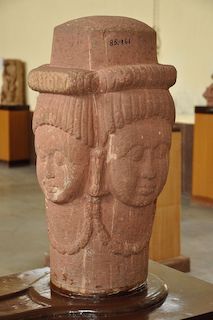
Endless strings of acolytes flocked to the hermits’ huts, and there, far from earthly passions and commotion, in the dreamlike realm of tropical thickets, the “gurus”37 conducted their long conversations with the young God-seekers.
What was the essence of the munis’ wisdom, for the sake of which their followers would forsake their social life with its pleasures?
We would never have known about this had the Indian gurus not kept records of their conversations, reflections, parables, and mystical poems. They were subsequently made part of the Vedas under the general name of the Upanishads.
Laying claim to the knowledge of all the mysteries of the Universe and human nature, the authors of the Upanishads tended to neglect reason. No matter how deep the power of intuition may be, it always requires the help of reason as the crystallizing principle to complement that which has been revealed through contemplation.
The pages of the Upanishads are replete with ever multiplying questions. Sometimes they seem to represent the voice of humanity itself, questioning and scrutinizing, to whom the entire world appears as a mystery.
There are two central, most troubling dilemmas behind all the questions of the Upanishads. First, is there any point in human existence? Second, if the reason for human existence extends beyond this fleeting life, what is the relation of mortals to the Immortal and the Eternal? After all, it is only through such a relation that a person can hope to become a partaker of true life.
The Reality outside all things visible and finite is revealed to the mystic eye. Lao Tzu called this Reality the Tao, Buddha—Nirvana, the Kabbalists—Ein Sof,38 and the Christians—the Divine Essence or the Godhead.
The Upanishads raise the question: what is the foundation of the Universe? And they provide the answer: Brahman39 alone, albeit this fact remains hidden to the Universe itself. The ascetic Aruni explained this to his son by resorting to a comparison with a tree. “And as these juices have no discrimination, so that they might say, I am the juice of this tree or that, in the same manner, my son, all these creatures, when they have become merged in the True (either in deep sleep or in death), know not that they are merged in the True.”[56] Unconsciousness or trance—this is what leads the world and humanity to their true origin, a motionless divine Substance.
The Upanishads view the creation exclusively as birth, emanation, or outpouring from the depths of the Absolute. “As the spider creates and absorbs, as medicinal plants grow from the earth, as hairs grow from the living person, so this universe proceeds from the Immortal.”[57]
Thus, the line that separates the Absolute from the creation is obscured, making them identical in their essence.
Here we see the fundamental difference between Brahmanism and the biblical revelation that affirms the miracle of the creative act as the basis for the relationship between God and the world. It was the Word of the Creator that summoned the Universe from nonexistence. The world in itself is not divine, and that is why an encounter, a union, a dialogue is made possible between the Uncreated and the creation. Brahmanism has no place for this mindset because everything is inseparable from God.
Yet the world has been created by Reason and Love, and, therefore, it is endowed with freedom. And even if the creation moves away from God to non-existence by abusing this freedom, it still remains within the realm of Divine Love. “God so loved the world that He gave His only begotten Son…” (Jn 3:16). The highest love retains its creative power even over the fallen world.
This is not how the mystics of India understood the principles and reasons for the creation of the world. Intoxicated with the sacred obscurity of ecstasy, having once tasted the mystical cup, they became unable to comprehend the true purpose of the seen world. To them, it lost all its value.
Instead, a person must forever reject everything that binds him to this world and, equipped with the methods of contemplative yoga, climb the steps of ecstatic mysticism. As a fully detached individual, he no longer has need of rituals. Not only that, but he has moved beyond the categories that ordinary people live by: hate and love, good and evil. Such a person becomes infinitely removed from the weak and the ignorant, transforming himself into a superhuman.
It is only natural, therefore, that the Brahmanic religion could not extend its reach beyond the hermits’ abodes.
India, c.600 BC
The constant dullness of everyday life bears down upon the human mind; most of us cannot escape its yoke for the vast majority of our lives. The sense of ordinariness is the greatest lie that obscures our vision. This gray poison distorts the true picture of the world; those steeped in it lose their sense of awe, their sense of the miraculous; they stop feeling the breath of Eternity, losing sight of how near it actually is. We just as readily immerse ourselves in the bustle of everyday life as we tend to forget that our earth is but a planet zipping through the icy void of the Universe. Who knows whether this sense of ordinariness emerged as a defense reaction of the weakening spirit in the face of the mighty rush of the higher realm of existence? Perhaps, we have grown unable to endure its unyielding light? And so our spiritual vision has been impaired, our intuition has dulled, radiant figures and living spiritual powers have all but vanished as the gray veil descended and ordinariness set in. Still, our spirit awakens from time to time making desperate attempts to free itself from the deceitful illusion of ordinariness, to regain that lost perspective where bland things once again become alive and begin to sound anew with music full of wonder and meaning. Like flashes of lightning, these momentary flashbacks of our spiritual vision illumine our bleak path. If death caught us at such a moment, how insignificant and how painless its sting would be! We are unafraid of death in our moments of spiritual enlightenment. Then again, who of us can boast of such enlightenment as always accompanying him? Even the greatest of saints experienced its loss from time to time.
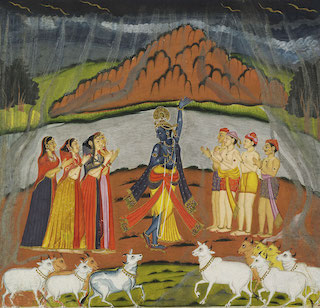
And so we strive, attempting to avoid our downfall, summoning all our powers of reason and will for help, as we continue our journey in the dark between brief moments of illumination by an otherworldly light.
The answer to this soul’s cry, this yearning for God, came in the form of a new religious movement in India associated with the name of Krishna Vasudeva. His life is usually dated to the 6th century BC. Though none of Krishna’s writings have been preserved, his teachings were immortalized in Bhagavad Gita—“The Song of God”—one of the greatest works of religious poetry of all time.
What is the difference between Krishnaism and Brahmanism? According to Krishna, the path to perfection consists of more than just mystical detachment but also of Bhakti—love, awe, and faith.
Anyone who resorts to God with a trusting heart will not perish, whoever he may be:
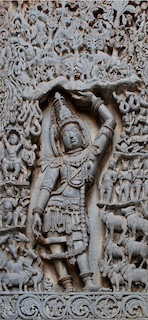
This is truly the voice of God! Love is not in vain; prayer is not without effect; hope is not lost.
Sublime is the teaching of the Gita on saving faith, on a personal loving God; noble is its call to action and selflessness—a touching warmth breathes through its lines, so much so that these passages are sometimes called “the Indian Gospel.” Still, none of this should obscure the fact that these were only sparse lights in the darkness of a pagan night. And nowhere does this darkness manifests itself with such force as in the Gita!
The Super-Existent Principle, which continuously cycles the world as if on a potter’s wheel, makes its appearance in the Gita alongside the portrayal of the supreme good God. In one aimless cosmic game of circulation, the Universe constantly springs into existence from Silence, then disappears in it again. This world, having emanated from the Immutable One, is plunged back onto the wheel of karma, and woe betide anyone who dare rise against this divine cycle. Why and for what purpose does this cycle keep on going? There is no end, meaning, or purpose to existence; nothing can be changed.
The teachings of the Gita did not mark the beginning of a spiritual revolution in India. Even though we now admire many of its quotes, we should not overestimate its positive role in religious history. Those of unpretentious and simple faith have not come to monotheism through Krishna. Mythology, as before, continued to pile up monsters and fill temples with ugly idols: this is how Hinduism would gradually emerge—an eclectic religion of modern India in which the ideas of great mystics and poets have been hopelessly intermingled with deviant popular superstitions.
Northeast India, c.530 BC
Hermits, seen as bearers of spirituality and wisdom, sought true life while rejecting any kind of falsehood. That is why, one day, a young man came to join them, whom they began to call “Shakyamuni,” or “the Shakya hermit-sage.” His given name was Siddhartha, and his family name was Gautama. He was born around 563 BC near the Himalayas, on the border of Nepal. In Lumbini, near the city of Kapilavastu, a monument has been preserved to this day with the inscription: “The Enlightened One was born here.”
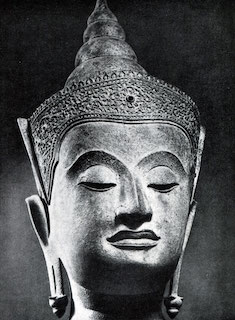
Suddhodana, Siddhartha’s father, was the Raja of a semi-independent kingdom. Siddhartha’s mother died a few days after his birth. The Raja, who was madly in love with her, transferred all his feelings to her son. The father was perplexed by the child’s personality from his early age. As a young boy, Siddhartha liked to indulge in vague imaginings and dreams while resting in the shade of the trees; he used to enter deep contemplation and experienced moments of extraordinary enlightenment. Those sweet moments remained indelibly etched in his memory for his lifetime. A legend says that the gods, invisibly encompassing the Exalted One, inspired him to a life of mystical endeavors.
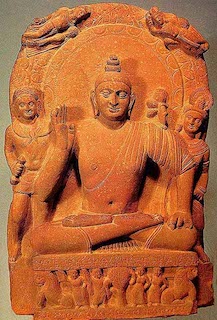
Suddhodana was determined to take his son’s mind off the mood and thoughts that preoccupied him, sparing no expense to that end. “At my father’s residence,” the Buddha later recalled, “lotus ponds were made just for my enjoyment: in one of them blue lotuses bloomed, in another red lotuses, and in a third white lotuses. I [only wore fine cloth] and my headress, jacket, lower garment, and upper garment were made of [fine linen]. By day and by night a white canopy was held over me so that cold and heat, dust, grass, and dew would not settle on me. I had three mansions: one for the winter, one for the summer, and one for the rainy season.”[59]
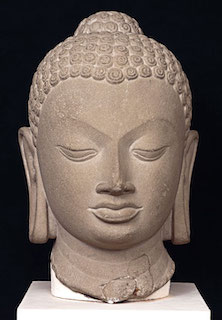
In those rare cases when the prince had to leave his gardens and palaces, all the poor and the sick were driven away from his path on the orders of Suddhodana: his subjects had to wear their best clothes, greeting Siddhartha with happy faces.
Was it really possible to hide life from a young man who became accustomed to contemplating the mysteries of existence from his early age, to conceal from him the sad reality of the world full of suffering? Suddhodana’s worrying only made his son’s soul more tender and vulnerable. The legend continues that, one day, the prince was taking a ride with his charioteer Channa when he suddenly saw a frail old man, and, struck by his appearance, he began to question his servant about old age. He was shocked to learn that this was the fate of all people.
The prince was disillusioned: nothing could bring back the serenity of his childhood. The world and life itself became unacceptable to him. It was a rebellion against the very foundations of the Universe, a rebellion of superhistorical significance.
“Later, while still young,” Buddha continued, “a black-haired young man endowed with the blessing of youth, in the prime of life, though my mother and father wished otherwise and wept with tearful faces, I shaved off my hair and beard, put on the yellow robe, and went forth from home life into homelessness, having gone forth in search of what is wholesome, seeking the supreme state of sublime peace.”[60]
He was in his thirtieth year at the time.
Having studied the philosophical systems and realized that they could not help to resolve the problems that tormented him, Gautama decided to turn his attention to practicing yogis.
He lived among them for a whole year witnessing their superhuman exploits, conversing with them and reflecting on their remarkable path. Certain things he really liked. Yet one thing he could not understand: why so many hermits, constantly exhausting their bodies, strove for a better ensuing rebirth or a temporary bliss among celestial ranks rather than the ultimate freedom from all suffering. Those other goals seemed unworthy to him.
Having left his yogic mentors, Gautama entered seclusion in the jungle in order to fearlessly press forward on the path of self-mortification.
This was a true act of heroism for a pampered aristocratic youth. He was determined to stop at nothing in order to attain enlightenment and to experience the true way of salvation. For six long years, he wandered in the thick forests eating almost nothing; his face began to look dreadful, turning black and incredibly bony; his skin parched and his hair gone—he now resembled a moving skeleton.
And then one day when Gautama tried to stand up after many hours of immobility, his legs refused to hold him, much to the horror of his friends present at the scene, and he collapsed to the ground as if he were dead. Everyone thought that this was his demise, yet the muni simply fainted from severe exhaustion.
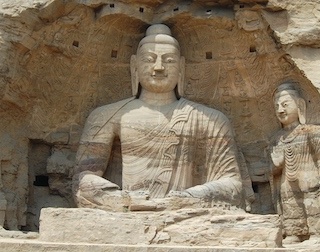
From that point, Gautama made a decision to abandon fruitless self-mortification.
A happy occasion helped him. The daughter of a shepherd took pity on the ascetic41 and brought him some rice soup. Gautama accepted her offering and, for the first time in a long time, satisfied his hunger. From that moment on, he would always refuse extremes of asceticism and regard only its moderate forms as useful.
One day, he rested in the shade of blooming trees on the river bank, and when the sun was setting, he made himself a bed among the roots of a huge Bodhi tree to spend the night there.
And then the most significant event took place in the life of Gautama. His thoughts and anguish, his yearnings and self-denial, all the inner work that had greatly refined and sophisticated his soul—all this seemed to come together and yielded its fruit: the long-awaited “enlightenment” finally arrived. Gautama suddenly saw, with an extraordinary clarity, his whole life and felt the universal connection between humanity and the unseen world. The entire Universe seemed to emerge before his eyes: he saw transience and fluidity everywhere; nothing was at rest and all things were carried away into an unknown distance; everything in the world was interlinked, one thing to another. A mysterious unhuman impulse time and again destroyed and revived all things. Here it was, the torturer of the world! Here it was, “the house-builder!” It was Trishna—the thirst for life, the craving for existence. Siddhartha saw himself as if present there as Trishna again and again called into existence things long gone. He finally knew what he needed to confront in order to attain deliverance from this terrible world full of tears, pain, and grief. From now on, he became a Buddha—an Enlightened One.
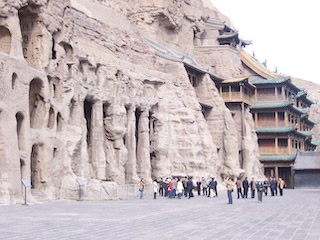
From this moment until his last days, we witness Gautama’s phenomenal influence on people’s souls. His most incredible claims, his proudest epithets about himself, proclamations of his own holiness and perfection—all this not only did not cause an outrage among the majority of his hearers, but, on the contrary, they welcomed it as something particularly charming and attractive.
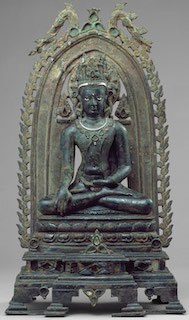
One time the Buddha was asked about the posthumous fate of a great ascetic. He only stated that for someone who had fully banished from himself all cravings for psychophysical existence (nama-rupa), there could be neither birth nor death. Thus, the main emphasis of the Buddha was on the fact that a person can acquire a passion-free state, find peace and enlightenment already in this life, i.e., attain Nirvana.
Can we say with confidence what exactly the Buddha himself meant by the word “Nirvana”?
The Buddha likened Nirvana to “peace and wisdom,” and his mastering of passions and attaining “wondrous immortality” was considered by his followers to be the greatest achievement of their teacher.
So, the only worthy goal for a person is liberation, freedom from all things including oneself. To this end, the Buddha has offered his “Eightfold System.”
What is this “Eightfold Path”? It consists of:
Mastering these principles was seen by the Buddha as a series of gradually ascending steps.
At the top of the ladder leading to Nirvana, we find higher consciousness, the state of sambodhi (samadhi), when all that is human disappears in the person: his consciousness fades away, his whole body grows numb, he is no longer subject to any laws, for he becomes fully immersed in the incomprehensible “windlessness” of Nirvana. The goal is then completely achieved: the stream is over, the ever-burning fire has been extinguished.
And it is here that the chilling “discovery” of Buddhism is made bare: a human is all alone, inexpressibly forsaken in this life. All is empty and meaningless. There is no God above us, “no path in the sky,” no one to pray to, no one to trust, no one to infuse strength into a failing person trudging down his gloomy path. No help is coming your way; you must save yourself! But is it not an empty statement, for can one really pull himself up by his bootstraps?
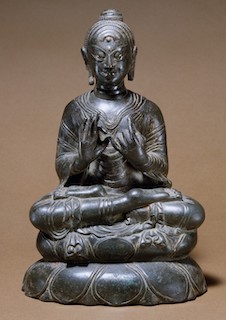
The Buddha promised salvation and attaining Nirvana only to ascetics who had left their home and freed themselves from all attachments. In addition to the commitment to self-improvement, the monks were obliged to engage in intense proselytism of the teacher’s ideas. Naturally, they could not enlist into their order every single person who expressed some interest and sympathy. Thus, arose the problem of lay Buddhists.
The Buddha solved this problem quite simply. Monks were to remain his true followers, whereas the “upasakas” or the laity who accepted his teachings found themselves in the position of “catechumens,”42 so to speak, who were preparing for consecration. Unlike the monks, the laity was given a simpler ethical code of Pancha Shila (Five Precepts), which consists of the following:
In addition to these commandments, similar to those that Moses had proclaimed eight centuries earlier, the “upasakas” were to be loyal to the Buddha, his doctrine, and the order.
The love of tidiness must have been instilled in Gautama from his childhood, for he revolted against the ascetics of his time who used to walk around in perpetual filthiness. The travelers in our own day are often dismayed by the appearance of these untamed individuals, covered from head to toe with ashes, cow dung, and mud. The personal hygiene of the monks in the Buddhist order, on the other hand, was strictly monitored, and the rooms where they lived were constantly kept in perfect order and exemplary cleanliness.
These well-managed colonies, where people lived in contemplation, reflections, and instructive conversations, attracted all the tired and oppressed. Buddhist monasteries seemed to many to be a promised land in which one could finally find peace and freedom.
The last hours of Gautama’s life were marked by an atmosphere of the inevitable tragedy. He did not die as Socrates did, who believed in immortality, nor as a martyr who triumphs over the evil by sealing the truth of his teachings with his own blood, but, rather, as a person who recognized the world’s evil and surrendered to it. Everything is transient; everything flows! Take your consolation in this fact; here is what you get!
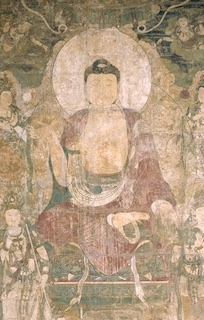
The energetic missionary efforts of the monks brought many new converts to Buddhism. The people were increasingly drawn to this new religion that promised salvation regardless of caste, did not overburden its followers with an excess of rituals, advocated kindness and gentleness.
Gautama sought to expose this passing life, portraying it as a kingdom of suffering, death, and deformity. His followers, on the other hand, would devote themselves to caring for others and their earthly well-being. Their efforts would eventually bring about a new Buddhist culture.
Having rejected God the Creator, the Buddha arrived at the conclusion that nature and humanity are but an aimless rotation of specters, flickering “Dharmas”43 in their endless and meaningless succession. And he was right, for if there were no Living God, the Universe would be fit for destruction: its life and all self-aware individuals would deserve no better fate than to disappear forever.
This is the main reason why a religion as exalted as the Indian one could not live up to being the runner-up to the Gospel.
Yet, the life and preaching of Gautama remain among the greatest moments in the history of human spirit.
The import of the Enlightened One is by no means exhausted by the moral or philosophical content of his teachings. The greatness of the Buddha and his predecessors lies in the fact that they proclaimed salvation as the main purpose of religion.
A sage imbued with compassion for the whole world, he is indeed worthy of humanity’s affection and gratitude, even though he himself was never able to bring about their salvation. But then again, what human could possibly accomplish a feat of that magnitude?
Greece, 10th–5th centuries BC
The thinkers of ancient Greece developed a distinctive worldview and formulated general laws underpinning human behavior characteristic of their time. The Hellenistic world would become the first mission field when the apostles would turn to the Gentiles with their preaching of the Gospel. The Word of God that came out of the land of the Bible was received by the people of classical antiquity, and it was in this cultural milieu that the Universal Church would grow stronger. Most martyrs and apologists, teachers and the Church Fathers were sons and daughters of the Greco-Roman world. The Fathers of the Church used to say that God had been revealing the truth gradually to humanity. In this respect, the ancient philosophy of the Greeks and their search for new ideals, precipitated by the discontent with the pagan beliefs, have become the principal achievements of the classical antiquity period.
What was the essence of the ancient Greek religion, and why did the worshippers of Zeus, Athena, and the other Olympians eventually develop a desire for a change in their spiritual outlook?
The most ancient cults among all world nations were associated with the worship of Mother Goddess along with elements of nature. Inevitably, a turning point would come in the history of most ancient religions when people, having realized the sacredness of the laws of the Universe—harmony and reason—would begin to contrast them with the irrational forces of chaos. This moment is captured in the myths of theomachy—gods battling one another. The human-like deities, seeking to create a new harmonious hierarchical world order, would wage war against the elemental demons of earlier societies. According to the views of the Hellenes, the victorious gods subsequently settled on Olympus, which, rather than being a mere mount, came to represent a heavenly realm. The residents of Olympus were conceptualized as beings similar to humans in all respects except for immortality. Myths colorfully depicted their life amidst wars and rivalries, intrigues and feasts, affection and hatred. The victory of the Olympians over the dark forces of the Earth Mother is evocative of the proud self-perception by humans as conquerors, as agents of change and proactive organizers of their own way of living, who had by then achieved their superiority over nature. The triumph of the human-like gods asserted the belief, albeit in a primitive form, in the supremacy of the rational and spiritual dimension of human nature.
The victory of Olympus, however, remained incomplete: having slain the Titans and monsters, the gods did not dare to challenge the Mother-Earth Goddess herself. She retained the ultimate power. Inescapable Fate, which cannot be comprehended, overcome, or reasoned with, continued to play the role of the Mother Goddess, dominating over the Universe. It is here that the root of that fatalistic44 sentiment lay that gave birth to the ancient tragedy, which paid tribute to the futile struggle of humanity with the Unknown.
Many generations of the Greeks drew their religious concepts from Homer’s Iliad and Odyssey, which played the role of encyclopedia to them. The main trend of the Homeric religion—the humanization of the gods—was very well received by the denizens of the Greek poleis or city-states.
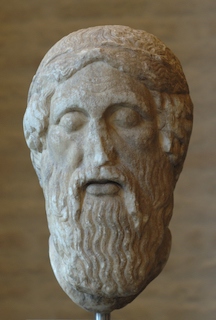
The Olympic giants were on their way to becoming no different in their essence than ordinary mortals, despite their mind-boggling power or immortality sustained by the magical drink. The ancient Greek religion, still destined to rise above mere anthropomorphism, first had to overcome its tendency of placing the human element at the center of its worship.
The convergence process between the two worlds, Olympus and the race of mortals, can be traced in the Greek religious art of the 7th–5th centuries BC.
The temples, which appeared at the beginning of this period, were modeled after houses and were relatively small in size. By building them, the Greeks wanted to provide Zeus or Poseidon with a “home” within their city. By erecting these dwelling places, the Greeks hoped to make the gods patrons of their polis and thus bring immortality to their fellow citizens. For the Greek, the indwelling of a god in the temple was one of the means of humanizing that god and keeping him or her in the polis (almost forcibly). There were even cases when the statues of gods were chained to prevent them from leaving their dwelling place.
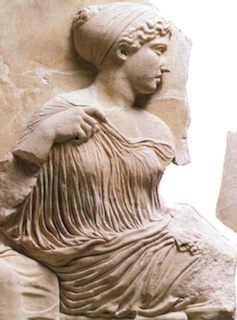
The same trend of blurring the boundaries between the divine and the human appeared in the religious imagery of that period. Whereas the old primitive idols had an air of something mysterious and supernatural about them, the subsequent religious forms tended to become increasingly earthly, relatable, human.
The deity, carved from stone, endowed with the beauty of an earthly face, living in its own house, was considered by the Greek to be his friend, protector, and neighbor. Olympus and the city stood side by side; it was not for nothing that myths constantly talked about love and marriages between immortals and humans.
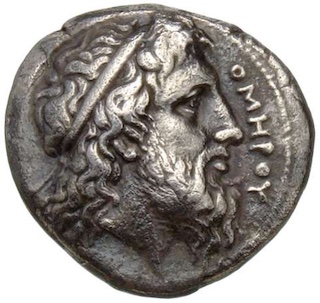
Such humanized gods, not too different from mortals, could not have risen to the level of being a true ideal for humanity. For we cannot truly worship our equal, as was the case with Homeric gods, without lowering our dignity. Therefore, it was only natural for the prying eyes of the thinking Greeks to try to penetrate the mysteries of heavens stretching above Olympus.
Yet what could they find there? They knew from Homer’s poems that the gods were powerless before Fate, which therefore ruled the world. The universal order was that of complete subjugation: slaves were subordinate to their masters, humans were a toy of gods, and gods were controlled by Fate. The lot of humans is slavery, not only physical but also spiritual; they stand as subjects before gods not out of humility but rather enslavement. Humility is born out of trust in the goodness of higher powers, yet no sign of Moira’s45 goodness can be found in Homer. Her ways are but a whim, having no purpose or meaning, reducing the world and human actions to absurdity.
Behind the colorful images of the Homeric epics, one can discern a latent message of doom for all individuals and countries. Troy’s defense is in vain—its lot is predetermined; Achilles knows of the inevitability of his early death; Odysseus knows about the sorry fate of his comrades. It comes as no surprise that the same poet who extols powerful princes suddenly breaks into a mournful exclamation:
Even the poet Anakreon, who gained acclaim with his playful poems, let it slip, as if unexpectedly:
Thus, the Greeks came to the conclusion that earthly life is a vale of sorrows.
This notion was foreign to the Egyptians and the Indians who believed in their personal immortality. Homer’s religion, on the other hand, when describing the dreadful Hell awaiting people after their death, instilled them only with anguish and horror. In the face of death, at the edge of the abyss, the Greeks could not help feeling helpless, and therefore many of them would cease from being active members of society.
European Greece, c.650–550 BC
The ancient Greeks loved to repeat: “Observe due measure; moderation is best in all things.” Could it be that their frequent appeals to “moderation” were a direct consequence of them sensing the raging forces, opposed to reason and order, deep down in their souls?
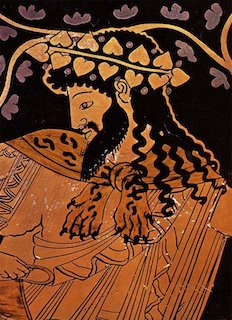
The era we are referring to was a time of spiritual fermentation and emerging spiritual thought. For the Greeks, this period (7th–6th centuries BC) was marked by heightened interest in various mystical cults. A person traveling through Hellas at the time could not help noticing that something strange and inscrutable was taking place throughout the countryside. Singing and shouting would occasionally break out in the mountain forests: throngs of women, dressed in animal skins with flowing hair and ivy wreaths placed on their heads, would be frantically running among the trees. They indulged in frenzied dancing to the music of a primitive orchestra while holding thyrsi—sticks entwined with hops—in their hands: flutes were trilling and hand drums were being beaten as intoxicating smoke was rising from burning cannabis and resins.
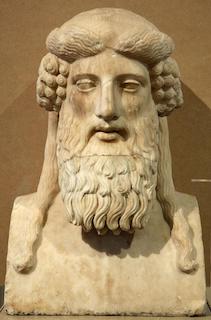
At night, the flickering light of torches illuminated the surreal sight of these orgies: half-naked young women, with their eyes glazed over, were tearing the flesh of quivering animals with their teeth. Women who had been locked up and enslaved by the city for too long let off their steam at these wild forest revelries: the harsher the social laws were to them, the more enthusiastic they became in their riotous frenzies. As soon as they heard the rallying cry, they ceased to be mothers, daughters, and wives; they would leave their family hearths and spinning wheels and, from that moment on, completely give themselves over to orgies in honor of Dionysus (Bacchus).
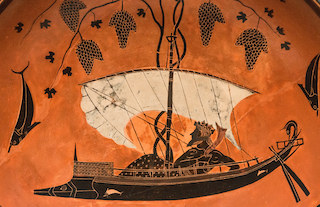
The Cult of Dionysus revealed that beneath the ostensible cover of common sense and orderly civic religion, monstrous flames were raging on, ready to break out at any moment. People believed that the dancing of Bacchantes would bring fertility to their fields and vineyards. These followers of a potent god enjoyed special protection and respect from people during the days of their religious ecstasy.
Adherents of Dionysus, once again, felt themselves to be the children of the Earth Mother, like their distant ancestors, rather than members of the polis. The Dionysian cult sought a fully immersive union with nature: the dancing to the sound of music among the forests and valleys drove the participants of the Bacchanalia into a state of frenzy; they were bathing in the waves of cosmic ecstasy with their hearts beating in harmony with the entire Universe. This is when they would reach a state of intoxication by the world as is, along with its good and evil, its beauty and ugliness.
Everything a person sees, hears, perceives, or smells is a manifestation of Dionysus. The divine can be found in all things: in the stench of carnage or a sleepy pond, in icy winds or the scorching heat, in delicate flowers or a loathsome spider. Our reason cannot come to terms with this reality, for it rejects and approves, sorts and discriminates. But what are its judgments worth when “the divine madness of Bacchus,” brought about by an exhilarating dance under the blue sky, or at night under the light of stars and torches, reconciles all things! The difference between life and death vanishes, and humans no longer feel cut off from the Universe: they become one with it, and, therefore, with Dionysus.
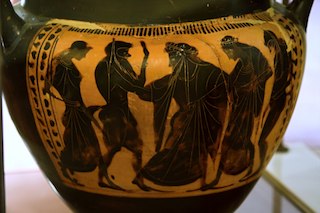
Here we see a distorted manifestation of the indelible thirst of humanity for the Divine. And the less able are the ideas of our time to satisfy this thirst, the stronger its outbursts tend to be. If the soul is kept back from realizing its true high calling, its spiritual impulses will take on the most shocking and ugly forms.
The mysticism of Dionysus was born out of the desire to find eternal life and salvation in nature. In the end, however, it could only reduce humans to the level of animals. In fact, this is only partially true, for there can be no complete return to the state of dumb beasts for humans. That which is natural for animals often turns into a malady, madness, and perversion in humans. We are not given the right to violate with impunity our reason, conscience, and spirit. There remains only one path open to humanity—the path of ascent, and any attempt to settle for a purely animal way of life can bring us only an illusion of liberation.
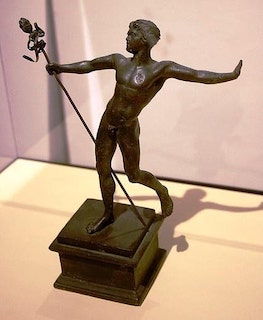
Athens, c.6th century BC
The Orphic hymns that came down to us were written in the 5th century BC. A new religious doctrine is outlined in these texts, one that tries to reconcile harmony and the blind forces of nature and to discern the supreme Oneness. These hymns tell us about the mythical hero Orpheus, Apollo’s devotee. It is said of him that he received a magical gift from his mother, the Muse Calliope: his lyre-playing and signing could tame the elements. During his expedition with the Argonauts, he subdued the waves and the wind, enchanting them by his wondrous music.
It is said that Orpheus once descended into the Underworld seeking to bring back to earth his wife Eurydice who had died from a snake bite. And even there, his lyre worked miracles: the mouths of monstrous beasts were shut, the fierce Erinyes were pacified, and Orpheus was able to win over the ruler of Hades himself. He agreed to release Eurydice but on the condition that the musician must walk in front of her without ever gazing back. Yet Orpheus, overcome with a sudden influx of emotions, could not control them and turned around: Eurydice was immediately carried back into the abyss, this time for good.
Inconsolable, the singer wandered on the face of the earth, not finding rest. And soon he himself met his end: a crowd of mad Bacchantes who met him in Thrace tore Orpheus to pieces in a fit of frenzy. The weeping Muses gathered up the dismembered limbs of his body and buried them in Leibethra. Only the head of the singer fell into the sea along with his inseparable lyre, and the waves carried them off to the island of Lesbos, and there, placed in a cleft of the rocks, his head would utter prophecies.
The Orphic doctrine builds on the fact that there are two opposing principles at work in the world: Apollo and Dionysus. The first personifies unity and harmony, and the second—variety and fragmentation. The idea of supreme Oneness, too, is present in Orphism, albeit in its pagan character, in the form of deified forces of nature—the eternal Universal Womb. In some texts it is called Chronos, or Time. Chronos spawned the bright Aether of the sky and the swirling Chaos. These two gave birth to the Cosmic Egg, which contained all the rudiments of the Universe: gods, Titans, and humans. Such imagery is characteristic of ancient polytheism, which taught that the world, rather than being created, gave birth to itself.
When the World-Egg split, the Orphic tale goes on, a radiant Protogonos (the First-Born) came out from it—a god encompassing in himself all the variety of nature.
During the battle of the gods and the Titans, the First-Born was swallowed up by Zeus who became the world’s only Deity. He then made an alliance with the Underworld, begetting from its queen a son, Dionysus-Zagreus. This was not a new god, but rather a hypostasis of Zeus—his power and “raining might”; hence, the Orphic formula: “Zeus, Hades, Helios-Dionysus are three gods in one godhead.”
The myth tells us that at some point the Titans turned against Dionysus, who tried to escape from them through shapeshifting. When he took the form of a bull, his enemies overtook him, tore him apart and devoured him. Only his heart, the carrier of the Dionysian essence, remained intact. Received back into the bosom of Zeus, it was revived to a new form, while the thunderbolts from the sky incinerated the mutinous Titans.
From their ashes, which contained a mixture of the divine nature and that of the Titans, emerged the first humans. Thus, Orphism always viewed humans as combining two opposite natures in themselves.
Undoubtedly, this was a reflection of the Dionysian religion. The dormant “Titan’s nature” would awaken in humans during the moments of their “divine madness” when people reverted to a beastly state and succumbed to their carnal desires. Such subjugation to the flesh is the downfall of humanity, which can only find its bliss in the winged soaring of the spirit.
Hence, a revolution took place in the Greek consciousness as their view of human nature began to approach that of the Indian beliefs. The soul, previous regarded as something unsteady, weak, and inferior as compared to the body highly praised by Homer, now came to be universally declared as the superior entity in humans.
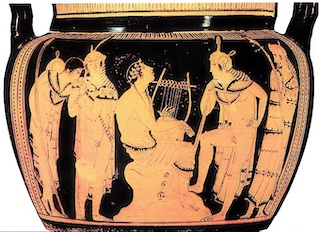
According to the Orphic religion, the body is a prison house of the soul, which subsists in abject misery within its narrow bodily confines. The soul can never be freed from the grips of the body’s Titanic nature, not even in death. This base nature causes the soul to return back to the earth, with no end to the suffering of the spirit—that Dionysus’ spark—in sight.
Orphism, similar to other ancient religious myths, embodied one of the greatest premonitions from the pre-Christian world—that of a suffering deity. Of course, the myths about the death and resurrection of a god were a projection of natural cycles on the religion. At the same time, they contained a vague intuition that the world, which had alienated itself from God, was not abandoned by Him to suffer on its own. Instead, these beliefs anticipated that the Godhead, full of compassion to His creation, would lower Himself and share in its sufferings, bringing the creation back to true life.
Orphics taught that people had to make sacrifices in order to become followers of Dionysus the Savior. The sacred mysteries, kept in the strictest secret, facilitated the efforts of the faithful. In their daily lives, Orphics sought to develop the kernel of good contained in their human nature, learning at the same time how to oppose its evil or Titanic counterpart. Special principles of asceticism, including various food restrictions, the so-called “Orphic lifestyle,” were developed to assist them in their task.
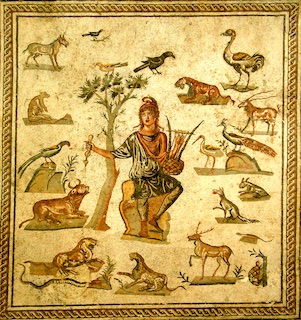
Southern Italy, 540–500 BC
The first religious thinker of Hellas Pythagoras (570–495 BC), who was something of a prophet, appeared around this time towards the close of the 6th century BC.
He began to expound his doctrine and founded his Community or guild in the city of Crotone (the south of Italy). Pythagoras was believed to be a miracle worker. Dressed in all white, his “look of importance” made an impression on his audience. It was said of him that he could penetrate the mysteries of the afterlife and commune with spirits. The teachings of Pythagoras, addressed exclusively to his initiates, were kept in secret. Nevertheless, his main ideas survived to the present day.
Pythagoras taught that the soul is immortal but can migrate from one human body to another. He believed that all things in the world repeat incessantly at certain intervals.
At the center of his philosophy was the concept of harmony, inspired by the cult of Apollo—the god of arts, light, and proportion. The main principle behind the workings of the cosmos was the unity of opposites—Apollo and Dionysus. Pythagoras was the first to use the word “cosmos” (from Greek “organize” or “beautify”) when referring to the Universe.
The philosopher considered a certain fiery substance residing at the very center of the cosmos to be the divine One; this fiery Entity was responsible for the multiplicity of the worlds, forms, and attributes. The significance of Pythagoras lies in the fact that he opposed the notions of caprice, arbitrariness, and instability as the main guiding principle of the Universe (the view emphasized by the Olympian religion) with the idea of order. Pythagoras believed that the human mind could comprehend this order and that the human spirit was organized according to the same pattern as the rest of the cosmos. Its highest order, hidden from the gaze of the ignorant, can be revealed to humans through music. Pythagoras taught his followers to become attuned to the “Harmony of the Spheres.”
One of the Pythagoreans used to say that there existed a “divine knowledge” that could lead an individual to universal harmony. This knowledge could only be expressed in the language of mathematics. Pythagoreans viewed mathematics as the framework of cosmography, as a means of obtaining the Universe’s ultimate formula, itself identical with musical harmony.
Pythagoras also taught about the possibility of tuning one’s soul, the spiritual instrument, to be in unison with the celestial symphony. This was accomplished through a particular lifestyle that required enlightenment, harmony, and good measure in one’s own actions, feelings, and thoughts. The Pythagorean had to cultivate chastity, restraint, peace, respect for ancient teachings, self-control, and self-examination while staying true to one’s conscience. Everyone must remember that his immortal soul is the arena of confrontation of the opposing forces. These forces must be brought to balance; those who fail to recreate their soul in accordance with the principles of harmony will not escape the consequences of their actions. Only a perfect life can bring bliss to the soul, both in this lifetime and in its future incarnations.
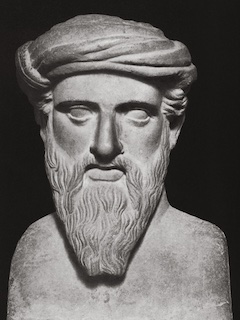
The community founded by Pythagoras was in fact a religious order with its own rituals, hierarchy, and initiation; its members were bound by strict discipline and obedience. Special attention was given to the development of musical culture and mathematical knowledge, as well as in-depth reflections and meditations.
The ideas of Pythagoras about the One, harmony, eternal foundations of the Universe, the immortality of the soul have had a fruitful impact on the development of ancient philosophy and science. While not possessing the religious genius of the same calibre as that of India or Israel, Greece nonetheless managed to secure great spiritual treasures for humanity in the area of sciences and religious thought.
Athens, 525–456 BC
From the 5th century BC, Greek theater began to boldly assert its voice to answer life’s most difficult questions. Theatre became the temple, the podium, and the book, all at the same time. The father of Greek tragedy was Aeschylus (525–456 BC).
At the heart of Aeschylus’ works was his trilogy about Prometheus, a Titan who dared to steal fire from Zeus to give to humans. This ancient myth served as a canvas for Aeschylus to express his most intimate thoughts.
The first part of the trilogy, the setup of the drama, has not survived to the present day. The second part, the tragedy Prometheus Bound, starts out with Zeus who, having no power to kill Prometheus, condemns him to eternal torment.
The heartless executioners of the sovereign’s will, Power and Force, lead the giant to a mountain: Hephaestus cannot disobey Zeus even though he wholeheartedly empathizes with Prometheus. A sharp blade pierces Prometheus’ chest, his hands are tightly chained to the cliff; and now this friend of the people, elevated—as if crucified—above the roaring sea, is left to wait for the eagle from Zeus to descend and torment him.
While the hammer blows could still be heard and the executioners were finishing their work, Prometheus remained silent. However, as soon as they leave, the Titan bursts into thunderous screams and reproaches. He calls on the whole world to be his witnesses; he appeals to Mother Earth, to Aether, to swift-winged winds, to rivers and waves: “See what I, a god, am suffering at the hands of gods.”[67]
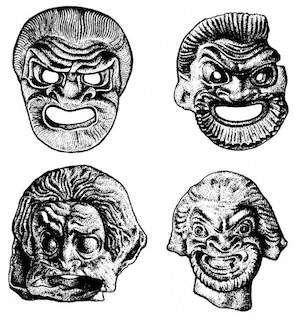
The chorus of the Oceanids responds to the sufferer’s cry, urging Prometheus to comply. Likewise, the good-natured Oceanus says, “Stop this kicking out against the whip. You know our present king, who rules all by himself and has no one he must answer to, is harsh.”[68]
Yet Prometheus knows that he is suffering for a good cause, which he will not renounce. He foresaw his own fate but still went ahead in the name of philanthropy. He is solid as the rock, which the waves beat in vain at his feet. At the entreaties of Hermes, sent by Zeus to elicit the secret of the future known only to Prometheus, the Titan replies:
Prometheus refuses to reveal the fate of Olympus, which he has learned from Gaia, to his tormentor.
Everything in this tragedy serves to bring out the king of the gods as a vengeful tyrant. Prometheus cries out how he loathes the gods as he denounces “arbitrary and cruel justice” of Zeus, their ruler, who has disgraced himself by retaliating against the defender of humanity.
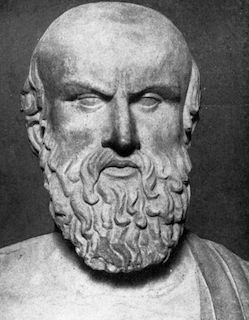
At the conclusion of the tragedy, Zeus carries out his threat, and the entire cliff, along with the executed, falls into Tartarus amid the howling sounds and bright flashes of lightning.
The viewer’s sympathy is, no doubt, on the side of Prometheus. And what about Zeus? Maybe he is not the guardian and the sustainer of the world, but a dreaded executioner? After all, some nations, as evidenced by the cult of Moloch, have come to accept this very notion.
Yet Aeschylus does not draw this conclusion. He says that if Zeus is like that, then we must rebel against him in the name of goodness and freedom. Aeschylus appeals to the freedom and courage of the Greeks, to their sense of human dignity. He denounces despotism and places an aureole about the one who sacrifices himself for people in the name of their salvation. It is no coincidence that in ancient times the rock of Prometheus was sometimes seen as a prototype of the Cross of Christ.
The last part of the trilogy (now lost), Prometheus Unbound, is devoted to reconciliation of the gods. In it Zeus retains his throne, but only because he himself has refused to be evil, changing his very nature. Truth has triumphed not as a result of a series of random events but because Fate, which now demands the same outcome as does the human moral sense, has decreed so. In other words, Fate for Aeschylus ceases to be an antagonistic principle but instead becomes the driving force towards a moral universe. Providence, still bearing the name of Zeus, becomes personified by the union of the supreme deity with Moira. In that, Aeschylus did not want to introduce a new religion but sought to renew the old one. His creed boils down to the fact that the divine truth, rather than the tyranny of dark and evil forces, ultimately prevails in the Universe.
Athens, 5th century BC
A younger contemporary of Aeschylus, the great tragedian Sophocles (497–406 BC) lived first in the heyday of Athens under the reign of Pericles and then in the ensuing years of the Peloponnesian War and the Great Plague of Athens. It had seemed, up until that point, that a life of freedom in a liberal civilized society would lead to the ultimate triumph for people, to the salvation from all the evils of this world. And suddenly a terrible and incomprehensible disaster struck, mercilessly destroying all plans and dreams. Pericles himself died of the plague in the prime of his days, failing to accomplish even half of what he had envisioned.
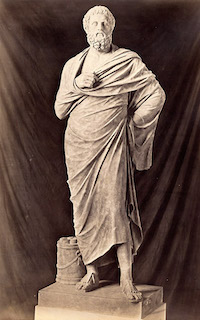
Unlike Aeschylus, Sophocles no longer believed in Providence, Justice, and civic ideals: he had witnessed first hand their collapse under the blows of unseen forces. He wrote his play Oedipus the King at the time when he was deeply affected by the events surrounding Pericles’ demise.
The tragedy resurrects one of the ancient Theban legends. There is a deadly outbreak in Thebes. Despairing subjects call on their king Oedipus pleading for help, for Oedipus is a great hero and defender of his people; he got elected as a monarch after defeating the bloodthirsty Sphinx, having solved its riddles.
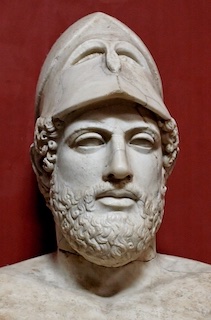
Oedipus consults the oracle and learns that a murderer of the former king Laius, still at large in Thebes, brought this disaster upon the people. But who is that man? Oedipus swears that he will track him down and immediately gets down to business; he calls an old blind prophet Tiresias and commands him to reveal the name of the criminal. And it is then that the inevitable truth begins to unravel.
Sophocles sets up the viewer for an impending doom: the fact that the plot is already familiar to the audience does not lessen the tension. Quite the opposite, anticipating the denouement, the spectator has a sense of foreboding from each casually uttered phrase, from every hint. It would seem like this particular word or that given plot twist would cause the terrible secret to remain hidden forever, but, alas, it was but a short respite, and Fate inevitably gets on with its ruthless onslaught.
Tiresias hesitates: he does not want to reveal the murderer’s name. But the king is insistent, growing frustrated and eventually furious. Then, the prophet cautiously alludes that there is “something worthy of reproach” in Oedipus himself. The ruler, however, turns a deaf ear to all the warnings; he relentlessly demands an answer and finally gets one:
Stunned, Oedipus does not doubt for a moment that the prophet is lying. It’s a conspiracy! Tiresias is about to depart, having publicly declared Oedipus to be a murderer of his father and a husband to his mother. The troubled king is holding back the blind man:
The king’s anger turns on his wife’s brother Creon—this must be of his doing: he wants to seize the throne. Queen Jocasta suddenly intervenes. She laughs off the prophecy: after all, it was foretold that Laius would die by the hand of their son, and therefore he ordered the child to be thrown into the forest with his ankles pinned. Laius was not slain by his own son but by a robber at a three-way intersection. How can anyone believe oracles after that?
The mention of the intersection makes Oedipus flinch; he hurriedly begins asking what Laius looked like and how the murder took place. He grows increasingly horrified with each new answer: the unimaginable begins to creep into his heart. Fear has gripped the queen as well.
Oedipus orders that the last witness be found, an old shepherd-servant of Laius commanded by him to slay the infant prince. Meanwhile, Oedipus himself tells Jocasta how, prior to arriving in Thebes, he met at the crossroads an arrogant old man in a chariot who refused to give way to him. The old man gave him a lash, and Oedipus, in a fit of rage, struck the insolent man dead to the ground and easily dispensed with his retinue. What if this dead old man and Laius was one and the same? Yet Oedipus continues to hope. Perhaps, this was a mistake, a mere coincidence? He is clinging to any chance. Jocasta consoles him, reminding him that the son by her and Laius did die in infancy.
They await the arrival of the old shepherd. Meanwhile, the chorus’s recitative is beginning to sound like a dirge:
The audience is now prepared for the disaster. Oedipus appears before us as a restless, agonized man, passionately trying to prove to himself his innocence. And at the same time, he is already doomed.
Then the dark clouds clear up for a brief moment. A messenger arrives from Corinth who reports that Polybus, Oedipus’ father, has just died. A new hope arises for the ill-fated king. He explains to the messenger that he fled from Corinth because it was foretold that he would kill his father and marry his own mother. But since the king Polybus died a natural death, there is nothing to fear. However, his mother is still alive. And then the messenger, thinking to comfort the king, reveals to him the secret: Oedipus is not the biological son of the Corinthian couple—he was found as a child in the forest and was adopted by Polybus. There is almost nothing left of hope: the old shepherd about to appear before Oedipus would finally smash to pieces whatever has still remained of it.
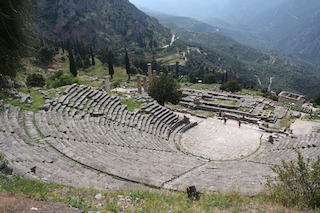
It is in vain that Jocasta is pleading with her husband to stop the interrogation; blinded, he seems to disregard the potential devastation that the eyewitness’s account can bring on him. He presumptuously declares that he is not ashamed of his low origin:
Alas! These are the last words of Oedipus as a king—he will no longer speak as one having authority. Now, he will discover what kind of “mother” Chance is to him, and a new Oedipus will be born: Oedipus the criminal, Oedipus crippled by Fate.
He threatens the shepherd into confessing. Indeed, he, Oedipus, was the son of Laius, the very son the old king wanted dead, fearing the fulfillment of the prophecy.
“Woe, woe is me! I’m accursed!” shouts the distraught king. However, Fate is preparing him yet another blow: Jocasta just hanged herself inside the palace. With a loud cry, Oedipus rushes to the bedroom of his wife-mother and stabs his eyes with the brooch pins of her belt: he no longer wishes to see the sun or anyone, he wants to be led away and remain in obscurity.
His disregard for the prophecy is ultimately avenged by Apollo. Oh, why was Oedipus not killed as an infant? Why was his life spared by a stranger? He is a son, but also a husband to his own mother; his own children are his brothers and sisters. “If there is some suffering more serious than all the rest, then it too belongs in the fate of Oedipus.”[75]
This nightmare of patricide and incest is exacerbated for him by the thoughts of the curse that his filth has brought upon his people. Oedipus becomes his own executioner.
In the last scene of the tragedy, it is no longer the proud and hot-tempered ruler standing in front of us, but a bent blind man filled with unspoken grief. As though plague-stricken, Oedipus flees the city. And in the meantime, the choir is singing of the vanity of human happiness, of the frailty of the mortals’ lot, of the omnipotence of Fate, which no one can ever tame, not even the conqueror of the Sphinx.
Once again, we see Moira towering over the world like the Gorgon’s head.46 She is not the highest Good Will but only the inexorable order of things, before which any person is completely powerless. Such is the reality of life according to Sophocles. His Moira has little resemblance to the Divine Providence: she only acts as the law of causation, indifferent to humanity. When a crime has been committed, no matter whether consciously or unwittingly, this tangible fact must entail equally tangible consequences. Here, we find the source of that ancient “fear of fate,” for which the masks of the Greek theater have remained as silent witnesses: the contorted grimaces of their delusional faces betray the overwhelming horror of a person facing a sudden and devastating retribution from Fate.
Yet Sophocles chose not to side with Fate in his portrayal of the struggle of Oedipus with Fatum: in depicting Oedipus’ defeat, he deeply sympathizes with the hero.
The king’s suffering gives him an aura of magnificence, inviting the audience to weep alongside him. Fate defeats Oedipus but only in appearance. He still remains free on the inside; grief and suffering purify him. He is a spokesman for the new spiritual principle, the free moral will of man. The viewer can see his inner strength and sense his innocence, even though virtually no words are said about it in the play. Oedipus thus becomes both a victim and a conqueror of Fate.
Asia Minor, 650–540 BC
The establishment of philosophy as an independent field of study allowed thinkers of the ancient classical world to discover the laws of human existence, the development of nature, and the Highest Principle, independent from religious revelation. First of all, this separation of science and faith allowed each of the two to develop without hindering the other. The study of nature, empirical knowledge, and abstract thought all require their own “rules of the game,” and the intrusion of religious doctrines into this realm has hampered science. Religion, on the other hand, does not depend on science, and the emancipation of science and philosophy from the tutelage of theological theories has opened up new possibilities for both scientific knowledge and religious faith.
At the same time, we should not forget that science and metaphysics are never completely autonomous. People who discover truth are not merely epistemological47 machines: in their efforts to solve the world’s mysteries, they often proceed from intuition. Scientific knowledge itself develops according to the laws of formal logic, but its postulates—regardless of whether scientists are aware of it or not—are certain unverifiable notions that they accept as self-evident. In other words, the starting point of science is always connected with faith.
The separation of these two approaches to understanding reality has greatly helped to clarify each of their natures and the boundaries between them. Yet these boundaries would get violated, and conflicts would arise. Theologians tried to impose their theories on science, and representatives of natural science and philosophy, forgetting about the apriority48 of scientific premises, unjustifiably endowed reason with omnipotence, seeing it as the only instrument suitable for perceiving all aspects of existence.
Such “rationalism” can indeed be called the “original sin” of the scientific worldview. Its error is in declaring reason to be the ultimate judge while ignoring all other layers of reality except for the empirical and rationally knowable. Rationalism dissects living sentient subjects—human beings—diminishing their abilities. People have long known that the “scientific” worldview depends on things other than pure observation and logic, namely, on the inner outlook, the reference point of the thinker, his vision of reality, i.e., faith.
After all that has been pointed out, it may seem strange that the main goal of Greek philosophy was in fact seeking God. And indeed, the eyes of the greatest minds of antiquity were turned towards Him as Primary Reality. Ancient Greek thinkers went on to assume the place of priests and prophets and were able to rise above popular primitive beliefs. Beginning with the rejection of certain traits of paganism, the Hellenic sages endeavored to develop the idea of Ultimate Oneness in their search for an integral worldview. All ancient science and philosophy revolved around this central concept. From their very first steps, the philosophers refused to cater only to practical needs and instead made the unselfish quest for truth their top priority.
Faith in the existence of a single supreme Principle guiding the Universe became the main idea of Greek philosophy. Let us recall by analogy the struggle it took for monotheism to finally become affirmed in Israel, and how the idea of polytheism remained prevalent in most ancient civilizations, and then we can begin to appreciate the feat of the Greek philosophers and understand the difficulties they had to face. Their intuition of Ultimate Oneness was achieved not through authenticity of revelation, but through the exertion of intellectual efforts striving to erect the invisible edifice of philosophy.
Out of the entire rich Greek philosophy, we focus here only on the teachings of three of its thinkers: Heraclitus, Socrates, and Plato.
Ephesus, 540–470 BC
Heraclitus (c.535–475 BC) built all his thinking on the fact that there is a unified law on which the entire Universe is based. Existence is a cosmic process. “Everything flows,” so there is nothing permanent: life gives way to death; being awake gives way to sleep; flowering gives way to withering; cold to heat. Ever descending and then ascending, the waves of existence are constantly flowing by entering a new phase or form of being. “You cannot step into the same river twice.”[76]
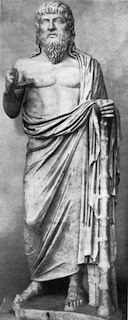
Opposites is one of the fundamental properties of the Universe according to Heraclitus. “War [strife] is father of all and the king of all. War is common to all… all things come into being through strife.”[77] And yet the creative power of “strife” is not just in the clash and confrontation between opposite poles but also in their union. “[Harmony] is an attunement of opposite tensions, like that of the bow and the lyre.”[78] Thus, through duality, unity is formed, which, in the process of growth, becomes again polarized for new synthesis. “The one is made up of all things, and all things issue from the one,”[79] Heraclitus argued. “This world, which is the same for all, no one of gods or men has made; but it was ever, is now, and ever shall be an ever-living Fire, with measures of it kindling, and measures going out.”[80] The fire of Heraclitus is not just a principle of oneness behind the observable world processes; it is “intelligent” by its nature: the supreme Deity (not identical with the mythological Zeus) and the “judge” of the world. Heraclitus was the first to call this universal law the Logos, which means word, thought, law, and mind. The Logos of Heraclitus is a principle that defines all the processes of this fleeting world, its rational essence, similar to that which people identify as their own intellect or reason. By analogy with human thinking, the Logos of the world manifests itself as a “design that formed all things.”[81,82] According to the philosophy of Heraclitus, the incontrovertible source of the Logos is the universal Fire.
For Heraclitus, the Divine is not a living personal principle, but rather a Force inseparable from the cosmos itself. He believed that after certain, very large periods of time, the cosmos returns to its original fiery state and then is born from Fire again. Therefore, there is no history as such: no new steps to perfection can lie ahead. The state of the Universe being created via the opposing forces and the state of humanity immersed in this “strife”—both appeared as perpetual to Heraclitus.
How can one reconcile this picture of a senselessly simmering Universe with higher Reason, the Logos? Heraclitus gives a decisive and rather harsh answer: “To God all things are fair and good and right, but men hold some things wrong and some right.”[83] This means that the Divine existence has a life of its own, in no way connected to nor regarding humanity. Humans are only passive board pieces born of the cosmic “game of draughts.” The Supreme Fire is “estranged from everything,” existing outside the human values.
Heraclitus tried to build theology without separating the Divine from nature, spirit from matter. It is, therefore, only inevitable that he ended up projecting onto the highest Reality the very things characteristic of the material world, i.e., nature’s determinism and transmoral laws.
Athens, the second half of the 5th century BC
Unlike Heraclitus, Socrates (c.470–399 BC) sought truth not in nature but in humanity.[84] What does it mean to be human? Why do we live and how ought we to live? Does truth exist or is it a mirage? These were the questions that began to preoccupy Socrates. He searched for what was good, beautiful, and true, and yet he spoke simply, resorting to examples and comparisons from everyday life. He taught people about good while at the same time mercilessly mocking them. Many were baffled by this ambiguity of Socrates, which nonetheless provides a crucial insight into the philosopher’s personality. Was it not some special integrity and discretion on his part that compelled him to put on the guise of a simpleton, play comedy, appear as if a madman? Could it be that the cunning irony and indefatigable talkativeness served him to safeguard the secret fire burning in his heart? It was no accident that Socrates, seemingly nothing more than a harmless babbler, proved to be a real “gadfly of Athens.”
It was a time of crisis in Athenian democracy, with total indifference to high ideals and a disregard for human rights within society. And then, a stocky man with a drooping belly began to appear in the Athenian squares; it would seem that his snub-nosed face with bulging eyes and thick lips could only cause pity and ridicule among the Greeks who placed no small emphasis on physical attractiveness. Yet, his huge forehead betrayed a powerful intellect. Socrates would often turn to the first person he met and pull the interlocutor into a discussion with just a few questions. His manner of questioning was intriguing and appealing; he seemed eager to let the debater bring him down to his knees. But in the end, it was Socrates who would befuddle even the wittiest of characters.
The philosopher first would try to expose any self-confident dogmatism and begin with a sincere admission: “I know that I know nothing.” For the sake of his mission, Socrates forsook all the comforts of life, becoming something of a mendicant hermit. However, he was no ascetic—his self-denial was his quest for freedom—he turned away from anything that could potentially enslave or entangle him.
On the pediment of the Delphic temple there was an inscription: “Know thyself.” The Greeks understood the meaning of this aphorism as follows: “Know that you are a mere human.”[85] Socrates, for his part, gave it a different meaning: a person must begin his exploration of existence with himself. In fact, what is the use of speculating about space, atoms, and motion of stars if your own life remains an enigma to you? The answer must lie in the depths of the human spirit rather than the vast expanses of the Universe. And this was not an abstract goal for him but a concrete task meant for each human life; he recognized it as an individual’s search for the highest good. People, in his opinion, did not value the very treasure they possessed—they had no proper knowledge of their own soul, which was why they became helpless and blind in the material world. Hence, the “fear of Fate” and hopelessness.
Socrates would ask: What do you live for? What’s your purpose and how do you define happiness? Do your friends covet wealth, fame, and pleasures? But check carefully: Is this a goal worthy of a human? And how easy it is to lose it all in a heartbeat!
When talking with youth, the sage would step by step debunk the prevalent myths exposing their deceitfulness. He would later tell his accusers: “I do nothing but go about persuading you all, old and young alike, not to take thought for your persons or your properties, but and chiefly to care about the greatest improvement of the soul.”[86]
The fleeting pleasures of life do not constitute genuine happiness, but this does not mean that true good can never be discovered. It is equivalent to the highest wisdom that makes a person’s life complete. You wander aimlessly, Socrates says, only because you have not discovered the foundations of the virtues inherent to us. Turn to yourself, to your mind, and it will teach you courage, show you the need for temperance, moderation, and truthfulness. You will realize that you should be fair to your fellow men and reverent to the higher powers.
Therefore, Socrates believes in a good purpose for human existence. Yet this meaning, he says, does not lie on the surface, but instead is given to us as an assignment. The philosopher’s dialectics—a tension between opposing arguments—serves as a tool to find the solution.
Here, he stops someone to his liking and begins asking his questions; he is attentive, serious, sometimes pretending to be naive—he is querying, refuting, clarifying.
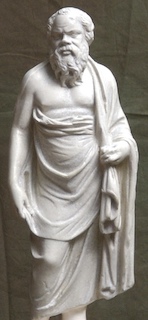
“And what, Friend, do you mean by this word? But wouldn’t it be a mistake to interpret it in this manner?” Surely his opponent knows what goodness and wisdom are. May he quickly enlighten poor Socrates! And then he gets increasingly entangled by the philosopher. “Yes, indeed, it is,” he is forced to concede. However, the sage is not content with a partial victory, he presses on: “Let’s consider this question more thoroughly. Are you following me? Pay close attention!”
Thus continues the unwinding of the thread of arguments, definitions, and conclusions. The interlocutor grows uneasy; he is so used to commonly accepted terms that he has never really delved into their meaning. Carrying the interlocutor’s thoughts to absurdity, Socrates would eventually demonstrate that his opponent produced a mere “bubble” and not a real child, and, prodding him to a further analysis, he would proceed to help his peer to “bring truth to light.” That is why Socrates called his method maieutics—spiritual obstetrics—his aiding the interlocutor to discover the truth for himself. A person must uncover pure thought within himself and set it free, and “this requires a clear causal connection and the validity of the arguments.” Thus, Socrates developed the basics of the inductive49 method of reasoning.
Despite his belief in the possibility of learning the truth with the help of reason, the irony remains that Socrates unequivocally emphasized that his method had limitations and was not intended to replace mystical knowledge. Reason is given to people; it is their asset, but the higher truths are revealed in a different way. He himself put “the council of the gods above all human relations.”[87] He always maintained his faith in the ultimate Good. Socrates saw it as divine Providence. And this aspect of the Supreme Existence was not revealed to Socrates by his dialectics: the source of his vision lay in the spiritual and moral experience of the sage as a person.
Socrates’ religious intuition is at the heart of his entire philosophy. Since God is Good, the world that He has formed is meant for joy, harmony, and beauty. Humans are intelligent and creative beings precisely because the Divine spiritual principle found its reflection in them. As for gods, they are those hidden forces, subject to the one divine Good, that affect a person’s life. It is in vain that people hope to bribe gods with offers without renouncing their own evil. Gods are helpers to people, but they can only assist in that which is good—the sole highest purpose for both gods and humans.
From all this, it is clear that Socrates’ “theology” stands closer to biblical teaching than all that ancient thought had achieved prior to Socrates. Socrates showed that faith and reason are compatible, that religion is not something irrational, and he demonstrated by his personal example that neither faith nor morality can be fully reduced to mere logic. A mysterious charm emanates from that Socrates who can stand immersed in contemplation for hours on end, who has a foreboding of the future, who can hear the voice of a “daimonion” (a divine being inside himself) and firmly believes in the reality of divine Good. And especially from that Socrates who willingly goes to his death for the sake of truth.
Athens, 399 BC
Socrates fostered in his adherents the ability to think critically. For this, he was declared a dangerous seducer, one who provoked the youths to disrespect domestic customs and beliefs and show contempt for authority.
In the years when Athens was defeated in the Peloponnesian War, which led to increased internal strife, Socrates became a “scapegoat” on whom society could vent its accumulated frustration. Several people accused Socrates of “corrupting the young, and not believing in the gods.”[88] Friends advised him to draw up an “apology”—a defense speech in court—but the philosopher refused.[89] “If I am to die unjustly,” Socrates said, “they who unjustly kill me will bear the shame of it.”[90] Although he could not subdue their ignorance and hatred by the power of his intellect, he still had at his disposal a superhuman ally—his death, the death of a sage and an honest man.
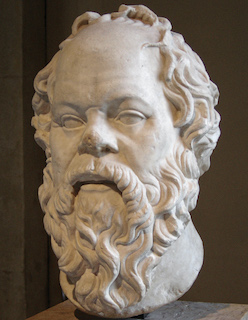
At the trial, Socrates said: “When the god gave me a station, as I believed and understood, with orders to spend my life in philosophy and in examining myself and others, then if I were to desert my post through fear of death or anything else whatsoever, it would be a terrible thing, and truly one might then justly hale me into court.”[91] Socrates compared himself to a gadfly, irritating a fat lazy horse. And if the Athenians, angry with him, kill him like those suddenly awakened from a dream, they would spend the rest of their lives in sleep. He prophesied to his judges that they would suffer a punishment far worse than death to which they sentenced the philosopher: eternal shame as the stranglers of freedom and reason. Socrates’ courageous and independent conduct at the trial angered the crowd, and he was sentenced to death.
In his final hours, Socrates, as was his custom, conversed with his students and friends. He did not condemn his executioners but rather pitied them. Undoubtedly, faith in Providence did not leave Socrates, and in the minutes at death’s door, it triumphed over the natural human fear of death. He himself performed an ablution in order to relieve the efforts of those who would bury him. Undeterred, without flinching, he took the cup of hemlock, and with the words of a prayer that his “sojourn” to another world would occur safely, he slowly drained the cup.
Thus ended the long journey of this amazing man’s life, a tireless seeker of truth. He believed in reason, but it was his trust in the goodness of the Supreme Principle that enabled him to meet death with a smile on his face. Taking the poison, he did not know what awaited him beyond the grave, yet he completely surrendered himself to the heavenly will. Indeed, it was the source of his courage and calm joy, which his students were so astonished by. It is no accident that the Church Fathers called Socrates “a Christian before Christ.”[92]
Athens, Megara, Egypt, Sicily, 399–387 BC
A student of Socrates named Plato (427–347 BC), shocked by the death of his teacher, continued his teacher’s work—the search for truth. He wrote “Socratic” dialogues seeking to recreate the vibrant and creative process of that search.
“The pages of the works by the philosophers who came long after him have long turned yellow and curled up, their elegant attire has faded, and their schemes now stand naked before reason like frozen trees in winter. But the throbbing Dialogues of Plato remain alive and will go on living. And there is no such person who at least once in his lifetime was not a platonist, who would not feel at moments how the wings of his soul grow.”[93] wrote Fr. Pavel Florensky.50 It is difficult to list all the thinkers from Aristotle and the Church Fathers and right up to the present day who, in one way or another, have not been influenced by Plato. Christian philosophers saw the teachings of Plato as a prologue to the New Testament.
The Platonic doctrine of the supreme divine Existence, the spiritual world, and the immortality of the spirit undoubtedly contributed to the understanding of the Gospel by the ancient classical world and helped give birth to Christian philosophy; however, “idealism” was fraught with risks of distorting Christianity by introducing ideas deeply alien to it. Of these, we can identify three main ones: abstract spiritualism akin to the Indian one; a pantheistic tendency; and the absence of the spirit of freedom, without which Christianity becomes unthinkable.
Plato was a man of action. Following the death of Socrates, he traveled to famous philosophers in Megara to study mathematics, Pythagorean theosophy,51 and ancient Orphic wisdom; he visited Egypt. Not only did he commit to seeking truth—he also sought to put it into practice. To this end, he traveled to the island of Sicily, to Syracuse, hoping to build an ideal state.
However, Plato’s ambitions went unrealized because he could not secure support from the ruler of Syracuse, and he decided to return to Athens. On his way there, he was sold into slavery, but someone rescued him by paying a ransom for his release.
Plato came to conclusion that conflict was inevitable between those who stand for truth and people who live by following their mere opinions and instincts. Thus, “that world in which a righteous man must die for the truth is not the real, authentic world. Another world exists, where Truth lives,” wrote Vladimir Solovyov52 in his study on Plato.[94] Refusing to recognize the chaos of visible existence as the ultimate reality, Plato with all his being was drawn to that invisible world, which he perceived as his heavenly homeland.
Fame came to Plato when he was about forty years of age. His name became among the most recognizable in all Hellas, and new students flocked to him. Plato’s followers acquired a small estate with a grove not far from Athens dedicated to the Attic hero Academus. There, the philosopher conversed with his students and wrote. Since then, this sanctuary of thought, the Academy, would attract, over centuries, many dissimilar seekers of wisdom: Aristotle and Zeno, Plutarch and Clement of Alexandria, Basil the Great and Gregory the Theologian—they all were disciples of the Academy.
Athens, 387–370 BC
The main idea that invariably attracted Plato’s attention, no matter what topic he was focusing on, was the existence of the eternal spiritual Reality. Plato’s philosophy was born out of a passionate protest against the evils of physical existence: seeking to break out of its darkness into the world of radiant Truth—this was a matter of life and death to the philosopher. Through painful conflict, the tension of his spirit reached that extreme point where the mundane cover of things cracked and revealed the authenticity of a higher plane of existence.
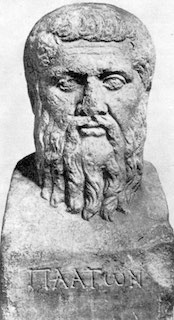
Plato, who often resorted to allegorical, “mythological” language, conveyed the essence of his teachings with the following myth. People live in a dark cave,[95] as it were, with a wide entrance stretching across its entire length toward some light. Ever since childhood, they have had fetters on their feet and necks, so that they cannot freely move but can only see what is right in front of them. And since they face away from the light, they can only see shadows cast from objects caught between the fire burning above and their dark cave wall. This image represents our visible world. People, who are bound by their sensory perceptions, take the shadows for true reality. And even having freed themselves from the shackles, they cannot immediately get accustomed to the idea that there exists a higher reality inaccessible to their senses and only gradually grow able to understand it.
Humans are capable of knowing the highest Reality because they are not only their bodies; they have a certain pivot point in their souls—the spirit, or, as Plato calls it, the “mind” which is found at the intersection of the two worlds. A person in his earthly life belongs simultaneously to both realms. The “soul” is connected to the perishable body only for a fixed period of time, and, unlike the body, it takes after that which is “divine, immortal, intelligible.” It is the dominant principle in humans meant to be in charge of the body. After separation from the body, the soul goes into a place similar to itself—divine, immortal, rational—where it achieves bliss and dwells among the gods forever. Then, due to its desire for life, the soul undergoes new incarnations, or metempsychosis, thereby losing its function of communicating with the divine. Philosophy helps to avoid the “series of births”; it is the only thing capable of “freeing” the soul—giving a higher meaning to the life of a sage and teaching him not to be afraid of death. A person acquires the higher knowledge through anamnesis or the process of recalling that which was known by the soul from eternity but has since been forgotten. In particular, according to Plato, the idea of Divine Oneness is precisely “a recollection of those things which our soul once beheld, when it journeyed with God and, lifting its vision above the things which we now say exist, rose up into real being.”[96]
Plato teaches that each physical phenomenon must correspond to one of our senses. This means that real intelligible objects, ideas (eidos), must correspond to our mind. They are not comprehended by reason proper but by a special kind of inward vision turned directly towards the invisible reality, that is intuitively.
Socrates spoke of the Divine as the ultimate Good and Beauty. Reflecting on this, Plato follows a similar line of thinking. Anyone who desires to comprehend Beauty and Goodness in their final depth, i.e., to know God, must strain his “mental vision” to rise upwards, “not introducing sight into his reasoning nor dragging in any of the other senses.”[97] And only having freed one’s spirit from things perishable, the mind can know what is true Beauty in its eternal essence, in itself. “The objects of knowledge not only receive from the presence of the Good their being known, but their very existence and essence is derived to them from it, though the Good itself is not essence but still transcends essence in dignity and surpassing power.”[98] Here the paths of contemplation and mysticism wonderfully converge; for intellect alone was never the starting point for Plato’s philosophy but also the mystical vision of the supersensible world.
The moment when Plato first proclaimed the Invisible as the foundation for the existence of the physical world became a great day in the history of human thought. This discovery would define the major paths of Western philosophy.
However, Plato encountered difficulties when interpreting the connection between spirit and matter. If the soul on earth is in exile, and the body is only an encumbrance for it, causing all kinds evils, then the highest goal for a sage is to prepare oneself for death—the moment when he can finally rid himself of this burden. And all that is left for him before that moment arrives is to seek consolation in “recalling” his past encounters in the heavenly realm.
It is not hard to see why “idealism” has become such an obstacle for accepting the reality of Incarnation and Resurrection. The Church’s doctrine of God-Manhood, of the Mysteries that sanctify matter, and of the impending immortality of a holistic person, would appear to the “idealists” as detracting from the purity of spirit, perfect in its immateriality.
Athens – Syracuse, 370–354 BC
Plato believed that a higher archetype of State exists in the realm of eidos. He saw this “Ideal Polis” as a harmonious organism whose interconnected parts are serving one another.
Plato believed that state order is the embodiment of the moral condition of its citizens. The moral principles themselves are rooted in the Eternal Good, which ought to govern the everyday life of each individual. Hence his conclusion that a social reorganization is inextricably linked to the internal transformation of people. It was a profound idea, the truth of which is hard to dispute. If one denies the objective meaning of justice, it becomes unclear why, for example, inequality and oppression are bad—after all, things that are hurtful for some are quite acceptable to others. Thus, the rejection of one objective truth about justice leads to ever-changing forms of injustice.
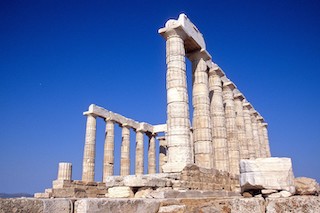
Plato developed these ideas in his book The Republic. The philosopher argues that society is not shaped by chance but by people’s need for one another. Labor is what connects people. Since the foundations of justice must be sought in the spiritual world, a person who is endowed with true wisdom is most suitable to manage the polis. This means that philosophers who enter the realm of eidos should run the state. Another group of people will be called upon to protect the state, and the other class will be its workers.
Education is of particular importance to the philosopher: its purpose is to make representatives of each class aware of their proper role. Children are taken away from their mothers immediately following their birth and are given to the state. They are only allowed to read books that have been carefully vetted. Family is abolished, and temporary marriages are arranged for soldiers at the direction of the rulers. People are brought up in such a way that they do not know personal needs and are always ready to sacrifice everything for the Homeland. Poets who do not share the spirit of the state get banished. For the good of the people, guards will vigilantly watch what citizens eat, how they are dressed, and what entertainment they engage in.
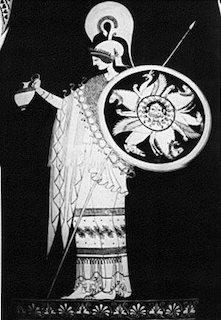
In caring for the “nation,” Plato apparently completely disregards the individual. He imperiously dispenses with traditional ways, he dictates and overturns; for him, people are just poorly placed pieces on a chessboard who must be rearranged in the correct order. An individual is of no significance to the philosopher, but, rather, it is the grand scheme of things that matters the most, which he institutes with the determination of a military commander. Plato is convinced that as soon as the order set forth by him is realized, universal happiness shall prevail in the state. He is not concerned with the cost it would take to bring it about.
In other words, Plato created a vision of a “closed” authoritarian state that dictates goals, interests, tastes, and even fashion to all its citizens. The functions of the state have been immeasurably expanded by Plato: he arrogates to the authorities the right to control the economic, cultural, and religious spheres. Such is the grim outcome of an attempt to find harmony without freedom.
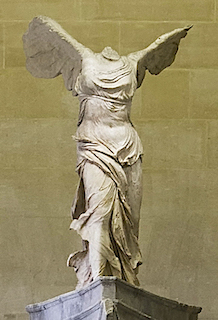
Whereas freedom requires an effort, creativity, and responsibility from each individual, here, everything is made clear, everything is decided, each question is already answered. This is an old temptation of humankind: to surrender oneself to this kind of serene existence. People, more than once, weighed down by the prospect of freedom, were eager to exchange it for “some lentil stew.”53
This “fear of freedom,” the inability and unwillingness to use it, are especially acute during transitional epochs when people shed their shackles without knowing what to do next; many are willing at such times to go back to slavery for the sake of peace and order.
Plato made an attempt to put his ideas into practice. It was unsuccessful, and this was a blessing because had it been realized, Plato would have been counted among history’s criminals—for good without freedom inevitably turns into evil.
Athens, 354–347 BC
In his final years, Plato had been trying to understand the nature of the forces of Good and Evil at work in the Universe. He claimed that the world was created by the Demiurge (Creator). The Supreme Mind, or Logos, created an integrated world in the image of eidoi (unseen forms), and ultimately in the image of perfection. The cosmos was created as a “single visible living organism”[99] possessing both intelligence and soul. The universal soul was created first and served as the unifying principle for the cosmos. Thus, cosmogenesis is the process of Logos acting in the realm of perpetual Chaos, even though traits of imperfection would remain inevitable in our “best of the worlds.” The formation of the Universe is now complete, and even the Demiurge himself is powerless to fully overcome the principle of chaos, which is inextricably entwined with the reign of Ananke—Necessity. Humanity has no choice but to reconcile itself with the existence of imperfection. A rebellion against evil, eschatological hope—all this seemed alien to Plato, who himself can be regarded as a successor of the magical worldview.
The greatness of Plato is in his vision of the higher spiritual world, where people can discover their heavenly homeland. Yet in addition to the sunlight of the Logos, his philosophy is permeated with the deceptive moonlight of the Dionysian dualism; Fate and Necessity menacingly sparkle like the distant stars in the night sky.
According to the Bible, the world unfolds before us as an incomplete or “open system,” which develops in an ascending line. The prophets were the first to appreciate this progression of time and to realize that our earthly events reflect the history of the struggle of the Existent One for His creation. The final goal of this struggle is the consummate triumph of the Divine Good. Initially, the prophets considered the elimination of all evil from the world to be the key to this victory, but gradually they came to understand the future Kingdom of God as a reconciliation of the Creator and humanity, their union in ultimate harmony. They viewed each person to be God’s vital coworker. Serving the Higher Will required of prophets to actively participate in the life of the society around them. And first and foremost, they became fierce critics of misbeliefs of their contemporaries.
The prophets forged a unique religious revolution, relentlessly overthrowing familiar pagan idols. They never made a cult of “the tradition of the fathers” as such. The prophets opposed the pagan tendencies of Israel with faith in the True One; they offered a religion of the human spirit in place of the magical understanding of worship; they posited universalism as an alternative to the nationalistic narrowness.
The prophets declared themselves to be successors of the religious teachings of Moses, which, for all its virtues, proved unable to defeat crude naturalism and peasant superstitions of the Israelites. A new spiritual rebirth of the people was required before the message of Moses could be heard and accepted in all of Palestine. This process was initiated by the ministry of the prophet Amos.
Northern Kingdom of Israel, 760–755 BC
Israel’s prophet Amos was the first of the prophets in the history of the Old Testament to write a book on parchment, in which he laid out his momentous visions and ominous predictions.
Based on the meager information that reached us, let us imagine how the life of Amos looked like prior to his prophetic call. He was a native of Tekoa, a small town in Judea a few kilometers from Bethlehem. This town was located to the very east of the populated part of the country. “Not a single village lies beyond this region,” wrote St. Jerome who used to live in those places, “No produce can grow on its dry sandy soil. Therefore, it’s filled with shepherds, so that the barrenness of the land is compensated with an abundance of livestock.”[100]
Even though Amos was a man of the masses in the real sense of the word—a poor shepherd—we would be wrong to assume him to be ignorant. On the contrary, this commoner possessed a broad outlook, was literate, thoroughly versed in the Scriptures, and knew the life of the people around him well.
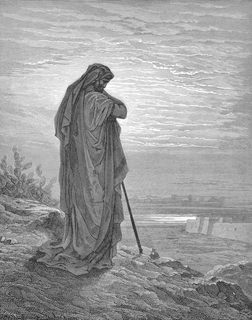
One day in around 760 BC, something caused him abandon his quiet life in the mountains and make a sudden trip to the north, to the bustling cities of Ephraim, leaving behind his native land of Judah.
A dramatic spiritual transformation took place; Amos himself referred to it as the central event of his life. In an instant, like a flash of lightning, an unusually bright light shone on him: the word of the Lord came to him like a tempest and a booming flame of fire.
Amos used to say, “I am not a prophet or the son of a prophet.”[101] He neither studied with clairvoyants nor received his ordination from people.
He was made a prophet by none other than God. In this, one of the most essential features of the biblical revelation, especially as compared to other religions, is made manifest.
From time immemorial, people would turn their eyes toward the Divine whenever they encountered incomprehensible natural phenomena or needed help in their earthly affairs. Visits to oracles and ascetic exploits, philosophical searches and ritual ceremonies—all this primarily spoke of people’s needs, their hardships, concerns, and aspirations. It was believed that favors from gods could be acquired through sacrifices—seen as the only way to bring the attention of gods to the people.
A completely different religious worldview is revealed to us in the Bible.
Yahweh, the invisible Creator of the worlds, does not for a moment remain indifferent to His creation, especially to humans, in whom His image is imprinted. The initiative in the dialogue with humans always belongs to God.
Divine revelation sounds like the voice of a Person who, while infinitely surpassing everything human, is nonetheless able to come into intimate contact with an individual.
Amos even avoids referring to Yahweh as God of Israel. Such a name would limit Him to a national faith. Instead, Amos prefers to call Him the Sabaoth, the God of the Hosts—“the Master of the star worlds,” “the Lord of the Universe.”
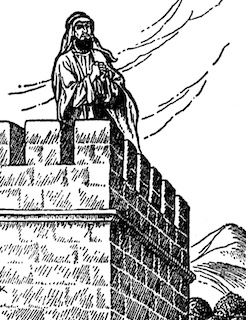
God “declaring His purposes to man” signifies people’s involvement in the process of the world creation. Yahweh, the supreme ruler of the world, reveals His will to people through the prophets. Amos declares that He “does nothing without revealing His secret to His servants, the prophets” (Am 3:7). Through the prophets, the Creator sets this world free from blindness and opens up for us the possibility to participate in implementing His Divine plan.
Amos’ words attracted crowds of listeners in Bethel, causing panic among the clergy and confusion in the entire city.
What could cause such a sharp opposition to the preaching of Amos from the powers that be? His threats against the royal house? Undoubtedly. Yet this was not all. Similar threats had been often uttered by prophets. Evidently, it was his prophecy about the demise of Israel that caused the most indignation.
Amos’ appeal to other nations is also full of bitterness and anger. What does the Lord, through His prophet, accuse the Gentiles of? It has nothing to do with the fact that they may profess false religions. Their sin primarily lies in trampling on their humanity. Even if they err about God, they nevertheless must discern between good and evil—the principle that the apostle Paul would later refer to as the law of conscience among the Gentiles.[102]
The prophet reminds them of their massacres in the captured cities, cruel treatment of prisoners, and abuse of defenseless women and children. None of it will be left without retribution: all people stand to answer to God, the Judge of the Universe.
This responsibility of the Gentiles implies their dignity and participation in the Creator’s plans and actions. Crimes of the nations are therefore not just a violation of the natural order, but, first and foremost, an opposition to the will of God regarding the world and humanity.
PEOPLE ARE EQUAL BEFORE THE FACE OF GOD: this was the gospel of the Jewish shepherd Amos. To realize how new and courageous his sermon was, it is worth remembering that in those days the Egyptians and the Indians used to call foreigners “sons of the devil,” and the Greeks considered barbarians to be “slaves by birth.” But why talk about antiquity, when even now, some twenty-eight centuries after Amos, hatred, contempt, and alienation continue to divide nations?
We do not yet see Amos preaching a world religion, but his universalism was an important step towards it. He believed that Israel became the people of God not because they were better than others, but as a nation destined to receive a Revelation, to be its vessel and bearer.
This calling had nothing in common with vulgar national exceptionalism. Indeed, Israelites by their nature were no different than, say, Ethiopians or Philistines. A bitter disappointment awaits those who say: “We are better than others,” or “we are exceptional,” for God’s truth is impartial.
This new vision of the world shook Amos to his core. Perhaps he himself had not been previously free from such widely held illusions. Thus, he began to preach the inevitability of the Lord’s Judgment with an even greater conviction. Babylonian poets celebrated their heroes, Egyptians praised their gods, pharaohs, and women, Homer glorified the valor of his champions and their weaponry; but Amos, the great poet of the East, was captivated by the idea of Divine Justice—his only queen and heroine.
“The prudent keep their mouths shut,” Amos would say, “during these evil times.”[103] He was well aware that his speeches would only make him the subject of hatred, but he could not remain silent even in the face of false accusations and threats.
The outward piety of the Israelites could not justify them in the least in the eyes of the prophet. Religion as bribery and deal-making with deities was an insult to Heaven. Any thought of buying one’s way out with God had to be rejected once and for all.
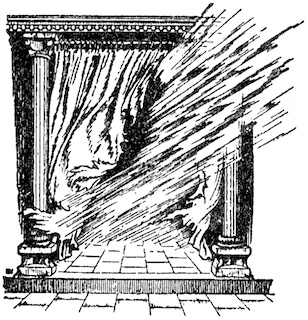
Some scholars tried to portray Amos’ ministry as his creating a kind of “ethical religion” and saw him only as a social reformer[104] who fought against oppression using religious lingo. However, such conclusions are without merit.
To Amos, the God-seer, devotion to justice was, above all, the fulfillment of God’s precepts. He knew the transcendent and superhuman source of all good, and God and Justice to him were truly one and the same. Social protest—a derivative of faith—comes second, not first, in Amos’ preaching.
To the minds of the ancients, the idea of sin was most often conflated with the notion of breaking the established rules. For Amos, however, sin is that evil which is introduced into the relationship between God and man.
What man needs is not a mere “conscience” or “humaneness” but a living knowledge of God and hearing of His words. At the same time, one cannot accept the Divine Word without keeping the commandments.
Amos foresaw that Israel would be expelled from their land, which they were proved unworthy of.
It is unlikely that he knew about the details of the events taking place far to the north, on the banks of the Tigris—the fact that would make his historical prophecy even more admirable. A military insurrection brought Tiglath-Pileser III (745–727 BC) to the throne of Assyria. He created an unprecedented war machine based on strict discipline and full financial support by the state.
With such an army, he was all but invincible, and, following almost a hundred-year hiatus, a new series of campaigns began. Tiglath-Pileser introduced yet another innovation. He realized that the former policy of levying tribute on subdued nations had been inefficient, and instead his new strategy became to deport the locals of the newly conquered lands, repopulating them with foreigners. Through such forcible displacement of the population, the king sought to prevent any pockets of national resistance. Separated from their homeland, people quickly assimilated and turned into mere “subjects of the king.”
The day was nearing when such a fate would befall Israel.
Samaria, c.750–740 BC
Amos was not alone in his prophecies, and another preacher soon appeared in Ephraim who spoke of Israel’s imminent demise—Hosea, a younger contemporary of Amos. He probably lived in Samaria and preached near one of its sanctuaries. There are reasons to believe that he was a priest: he was very knowledgeable about the liturgical practices as well as the religious condition of his people. From the way Hosea described the prophets and the priests, we conclude that he belonged to those who had become painfully aware of the spiritual crisis in Israel, those who refused to put up with the stagnation and degeneration of the faith.
Hosea looked back on Sinai as a trusted reference point for the religious life of the people. He vetted the events of his time with the Mosaic commandments and arrived at the same sad conclusions as Amos. However, Hosea neither became a mere foreteller of the gloomy end nor appeared as an arrogant sage, who, from the height of his moral superiority (similar to Heraclitus) passed judgment on human folly.
Tormented by sorrow, Hosea was at the edge of despair. He was gripped by grief and indignation, while his soul was longing for harmony and peace. His life experiences, although their details are not entirely known to us, had prepared Hosea to receive new depths of knowledge of God. What exactly happened to Hosea? His life story is befuddling to a reader: first he describes himself as being married to a “harlot,” and then later he professes his love for a promiscuous woman. Apparently, this was not to be read as an allegory, and both descriptions referred to the same woman in Hosea’s life.
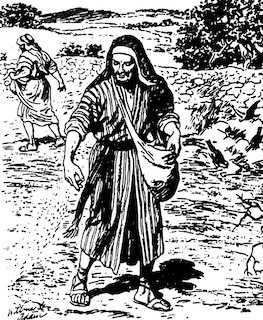
A failed marriage could hardly be seen as a tragedy by Socrates; not so much because of the philosopher’s own personality, but rather due to the fact that a typical Greek would not expect spiritual affinity and understanding from a woman.
Women in Israel, on the other hand, were not some speechless handmaids. The wives of a number of prophets shared in ministry with their husbands. Therefore, there was nothing strange in Hosea looking for sympathy and spiritual closeness in his wife. But instead, he found frivolity, indifference, and rudeness. It seemed like there came a point of a complete rift between the husband and the wife. Hosea could have gone to the court of his day, which strictly punished unfaithful wives, but his love did not allow him to do so; on the contrary, it eventually prevailed over the bitterness of betrayal, and Hosea brought his wife back to his house. The bright epilogue of the Book of the Prophet Hosea suggests that a strong and pure sense of love did triumph eventually, after all the trials.
The mental suffering that Hosea went through became the formative experience of his life that helped to manifest his prophetic gift.
Religion for Hosea is not so much a duty or an obligation, but, first and foremost, love for God. For the first time in the Holy Scriptures, the love between husband and wife becomes a symbol of the union of God and humanity. Sure enough, there is duty and obligation in marriage, but its essence is in the mystical union of the two beings. The same is true about faith; it is not based on requirements but on love—trust, affection, and unbreakable union. In this, Hosea already anticipates the Apostle Paul and John the Theologian.
The tragedy of Israel was in its infidelity to the love of God. Hosea saw the people’s betrayal of God not only in their direct apostasy to paganism but also in their distortion of Yahweh’s worship itself. Here, he was in full accord with Amos, the preacher of the religion of the Spirit.
“They make idols for themselves from their silver,” the prophet exclaims mockingly, “the work of craftsmen according to their own understanding. ‘Sacrifice to these,’ they cry, ‘and kiss the calf idols!’” (Ho 13:2).
Retribution is being prepared by the hands of sinners themselves, who “having sown the wind, will reap the whirlwind” (Ho 8:7). Even clearer than Amos, Hosea expresses the idea that the punishment is already contained in the very act of apostasy against God. It is not God the Avenger who arrives on the scene with a scourge of retribution, but the sad consequences are brought about on the trespasser by sin itself. God only created the state of affairs in the world such that the punishment for sin becomes inexorable.
Yet at the very moment when the verdict seems inevitable, among reproaches, lamentations, and ominous forebodings, the voice of God can be suddenly heard, not as that of an implacable Judge, but one uttering the words of infinite mercy and compassion.
God’s unquenchable love was revealed to the prophet whose own love overcame all the torments of the marital infidelity. God is the Beloved Who can forgive everything:
God, rejected and betrayed by people, suffers. This is the unfathomable mystery revealed to the prophet Hosea. This suffering is the pain of unrequited love; it testifies to the profound bond between the Creator and His creation.
He needs us: what a wonder! How can we even begin to grasp it?
“But God cannot suffer, for suffering is a sign of imperfection,” philosophers exclaim in embarrassment. “Yes,” the prophet replies, “there is such a thing as Divine suffering.” God suffers on the account of our imperfection.
Humanity is transformed in the face of the Lord’s passion. We are no longer worms trampled underfoot, nor a forsaken island in the sea of life, but God’s own children whom the Ineffable holds in HIS HAND, leading us with compassion through trials in order to bring us to repentance. This is how Hosea sees people. Whereas Amos hurls the sinner into the abyss of horror, Hosea uplifts the penitent to the gates of Heaven.
“For I am God and not a mere mortal!” Yahweh proclaims (Ho 11:9). These words sound like a thunderclap. Yet at the same time, the Ineffable and the Eternal One is mysteriously full of true and deep humanity. He is Justice, and therefore a Judge, but He is also full of compassion towards sinners. He Himself stops the arrows of His anger; His love is stronger than the law of retribution.
The prophet is not only a seer of love, but also a herald of freedom, which is revealed in the Almighty awaiting the return of His people.
It was Hosea, the last prophet of the Northern Kingdom, who spoke of God as Love, Who seeks love in return from each person. Hosea spoke at the time of Greek tyranny, the founding of Rome, and Assyrian invasions, when the glare of the bloody demise of Israel was already being seen. And when, centuries later, the Son of Man would enter under the roofs of the outcast, the despised, and the sinful, He would remind scribes, boastful of their piety, of the great words of this prophet: “I desire mercy and not sacrifice…” (Ho 6:6; cf. Mt 9:13, 12:7).
Jerusalem, 742–735 BC
A pillar of smoke rising above the Temple, battlements surrounding the fortress on the hill; steep slopes scorched by the sun, a wavy mountain chain enclosing the valley—this was Jerusalem eight centuries before the birth of Christ. The city had had a long history by then, and an amazing fate still awaited it. Paths of many nations and cultures would intersect here; for three millennia nations from the three different continents would dispute it; the adherents of the three world religions would make pilgrimage to its holy places.
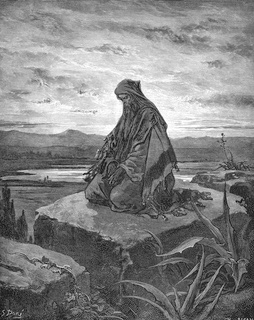
The City of David and Christ, the city of the Promises and the Gospel, Jerusalem had been associated with Sacred history from its very beginning.
It was in the atmosphere of this legendary city that Isaiah, the first great prophet to preach in Judea, was brought up. As Socrates was a child of Athens, so Isaiah became inseparable from Jerusalem, the spirit of which can be felt in all his sermons, in his teachings on the holiness of God, the Remnant of Israel, and the Messiah.
The biography of Isaiah reflects the history of his hometown of that era. Isaiah was called to ministry when he was around thirty years of age, and since that time, for nearly half a century, he remained a spiritual father to Jerusalem, an adviser to kings, an incorruptible conscience of his nation.
Isaiah must be rightfully recognized as one of Israel’s greatest authors. His monologues are imbued with the spirit of enormous epic power.
We must remember when we turn to the Book of the Prophet Isaiah in its present form that it is a collection of speeches compiled by his disciples. Not everything in this collection belongs to the prophet himself, some parts were written by his followers. It took the work of several generations of scholars to identify the authentic sermons of Isaiah and arrange them in their chronological order. The ancient compilers of the original anthology, however, viewed the preservation of the teachings of the prophet and his school as their main goal. That being said, a literary analysis of the book helped to recover the original order of Isaiah’s addresses and associate them with the prophet’s biography and stages of his spiritual development.
Isaiah was born in Jerusalem around 765 BC and, according to tradition, belonged to the royal family. Even if it is a legend, he was undoubtedly of noble birth, which is underlined by the role he played in the capital.
Isaiah’s youth overlapped with the period of a relative prosperity in the country. To the prophet, however, God’s favor was not tied to the country’s prosperity. While he shared the common faith in the chosenness of Zion, he refused to associate it with Canaan legends and pagan superstitions. The Temple, in his eyes, was a place of unique Theophany where the Lord revealed Himself to all of humanity.
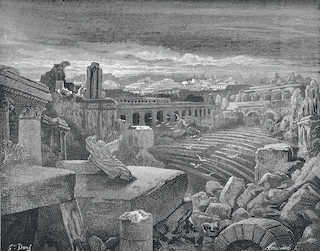
One day when Isaiah was praying in the Temple, he felt as if a flash of lightning suddenly split the darkness. At that instant, it was revealed to him that the Existent One was present there, One who truly dwelt among His people, walking alongside each person.
What was it? A subconscious sensation of the Most High? “A divine mystery permeating all things?” Who, in his moment of enlightenment, has not felt something similar, even if only once and to a weaker degree?
Yet this was not what happened to Isaiah. The prophet experienced the presence of God not as a tremulous touch of some unseen force, but as a real, almost painfully close, proximity of a personal Other, proximity that caused a mystical horror. It was something so overwhelming and at the same time so intimate, piercing like a gaze, a genuine discovery of God’s presence next to himself. He, Yahweh, striding over Sinai and the sea, above the clouds, winds and stars, incomprehensibly dwelt in this stern sanctuary among the oil lamps and gilded cherubs, in that House on the mountain in the midst of the holy city.
“I saw the Lord,” says Isaiah, “sitting on a throne, high and lifted up, and the train of His robe filled the temple.”
(Is 6:1)
“Woe to me, I am ruined!” went through Isaiah’s mind, “for I am a man with unclean lips, and I live among a people with unclean lips, yet my eyes saw Yahweh, the King of the Hosts…” (Is 6:5). From childhood he was taught that seeing the Most High was akin to entering a fire.
And then a seraph flew to Isaiah through the haze of the incense smoke. He held in his hands a lump of coal from the altar with which he touched the mouth of the prophet, and Isaiah’s whole being was permeated by a cleansing fire.
“Whom shall I send? Who will go for Us?” a voice sounded in the deep. Isaiah did not waver: “Here I am, send me!” (Is 6:8).
And then he heard devastating words about a blind and deaf people, a people with a callous heart, who turned away from God. The prophet must proclaim the will of Yahweh to the blind, but everything would be in vain, for they would not listen. And yet, Isaiah must speak. “For how long, O Lord?” Isaiah was vexed. The answer sounded like a verdict:
Although a sinner unfit to contemplate God, Isaiah, now cleansed, exclaims with filial boldness: “Here I am, send me!” The prophet has not drowned in God, nor has he remained prostrate before Him,—now he is standing in His presence, being transformed into His coworker.
This vision in the Temple became the revelation of the holiness of God. God is holy: this was the alpha and omega of Isaiah’s creed and his proclamation.
In the Upanishads or Plato, we also find the idea that the Divine in Its nature can never be defined in earthly terms. Isaiah expressed this same incommensurability of God with the world using the word “kadosh” or “holiness.” At the same time, however, Yahweh did not cease to be a living God for the prophet. He is a Person at work in the world, although His Character and the manner of His actions are completely unlike those of humans. Man can only know His will, but not know Him as He is. And if a union between the Creator and the creation is possible, it is only because God Himself seeks it, initiating a dialogue with man. This doctrine of “holiness” reiterates the mystery of God as being “entirely otherworldly.” It serves as a warning for people against creating an imaginary God in their own image and likeness.
The joy of God’s visitation was overshadowed for Isaiah by his realizing just how short the people came of the ideal of “holiness.” Applied to the people, “kadosh” or “holiness” meant “dedication to God.” The people of Yahweh were to belong to Him wholly and follow His ways. But what happened instead?
If we compare Isaiah’s preaching with the message of Amos, then their essential difference becomes immediately evident. For Amos, the Day of Yahweh was only darkness, a destructive whirlwind, whereas Isaiah saw in it something else. The promises of God cannot be utterly revoked: in the midst of universal decline and impending calamity, the holy Remnant of Israel will be preserved. It will be in this Remnant that everything that has once been promised to the people of God will be realized. The nucleus of the renewed people of God will be those who have been faithful to His “holiness,” who have committed themselves to the heavenly King.
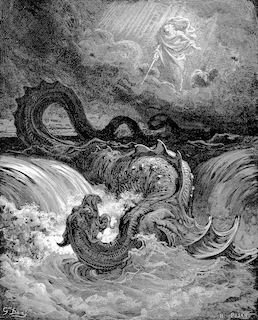
In those years, a religious movement known as “Ebionim Yahweh” or “the poor of the Lord” made itself increasingly manifest. It was in them that the prophet saw that holy Remnant who would be saved through all of history’s cataclysms.
A herdsman’s ethos prized simplicity and independence and rejected enrichment and usurpation of power. An oppressor, an apostate, and a “devourer of the poor” were often embodied by one and the same person. Yet the Bible unequivocally condemns poverty if it has been caused by idleness (Pr 28:19). The indigent, filled with malice, envy, and greed, could not be counted among “the poor of the Lord,” who refused to view their own poverty as a curse, but, in their own way, were proud of it.
The advocates of true piety often grouped around the Temple. Among them were the “poor of the Lord,” who also referred to themselves as “anavim.” This word is literally translated as “beggars,” but can also mean “meek” or “humble.”
The meaning of “meekness” and “humility” has changed drastically over time due to misuse and false associations; humility is now often conflated with hypocritical smarminess, adulation, and self-demeaning subservience. Meanwhile, humility in the Old Testament and Christian traditions can best be understood as spiritual sobriety and kindness, an opposite of infatuation by one’s own pride.
“The meek,” just as “the poor of the Lord,” were a remarkable spiritual phenomenon in the pre-Christian world. After all, it was the time of the rise to power of Assyria, the time of refined cruelty and state-organized genocides. Even though the mindless violence and blatant disregard for humanity have gained unprecedented proportions during the 20th century, our era is, nevertheless, distinguished from the past centuries by a strong sense of moral indignation against any such acts.
The situation was very different in the era of the biblical prophets. The annals of those times narrate, with an epic calm, the heinous abuse of humanity. And it was precisely at that time that the forces of good awakened in the world. The Anavim and the Ebionim, whom Isaiah recognized as the holy Remnant of Israel, stood at the origins of the Kingdom of God in the Old Testament.
During the days of the Gospel, the words “anavim” and “ebionim” continued to signify those had consciously embarked on the path of goodness and non-possessiveness. That is why some eight centuries after Isaiah, Christ in His Sermon on the Mount would be primarily addressing “the poor,” “the meek,” those persecuted, and seeking truth. And of Himself, He would say: “Learn from Me, for I am meek and humble in heart, and you will find rest for your souls” (Mt 11:29).
Jerusalem and Samaria, 736–727 BC
The idea of salvation and the need for it could only emerge at a particular stage of spiritual history when humanity realized that the Universe was not the best of worlds. It was then that new teachings arose, offering, each in its own manner, ways to escape the fatal power of evil—suffering, meaninglessness, and death.
This idea of deliverance lived in Israel too. For the Hebrew prophets, however, salvation was not about a political utopia or renunciation of the world but rather life with God. They spoke of deliverance only inasmuch as they believed that God Himself would be coming into the world.
That-which-is-to-come had always been a guiding light for the people of the Old Testament. The prophet Nathan foretold the eternal kingdom of the Messiah from the house of David; since eternity is inherent to God alone, such a Kingdom would have to be the Kingdom of God.
Who did the Israelites call the messiah in those days? “Messiah,” or more correctly “mashiach” (“Christ” in Greek), means “anointed one,” that is, a person who is consecrated by the Spirit of the Lord for ministry. This title was applied to prophets, priests, and primarily kings.
When performing the rite of anointing, olive oil was used. Just as fire was a symbol of spiritual power, and water a sign of purification, so oil signified preservation. The oil poured out on the chosen one betokened constant presence of the divine consecration. The ritual was performed during solemn coronations; thus, every Jerusalem monarch was, simply put, a “messiah.” However, the prophecy pointed to an extraordinary Messiah, the One who would rule over an indestructible Kingdom at the right hand of Yahweh.
These words about “beating swords into plowshares” are often repeated today, except the first half of the prophecy gets omitted. Meanwhile, the biblical poet never separated the coveted end to bloodshed from the spiritual revival of the world. The prophecy says that evil can only be defeated when people accept the Teaching and the Word of the Lord.
Deliverance was especially needed in those days, when the period of relative calm came to an end, and Judea entered a streak of wars. Two great powers—Assyria and Egypt—were preparing for a decisive battle, and the odds were clearly on the Assyrian side. Both Hebrew kingdoms faced a difficult task: how to adopt a proper stance, being caught between a rock and a hard place.
It was at this critical hour that the prophet Isaiah attempted to influence King Ahaz. In the presence of his entourage, the prophet solemnly proclaimed an imminent “sign of Yahweh,” indicating the inviolability of the holy city.
“Hear now, O house of David! Is it a small thing for you to try the patience of men, that you will try the patience of my God as well? And yet the Lord Himself will give you a sign: behold, a certain Woman will conceive and give birth to a Son, and give him the name Immanuel [God is with us]. He will eat butter and honey until he learns how to reject evil and choose good. But before the boy knows how to reject evil and choose good, the land will be deserted…” (Is 7:13–16).
The prophet demanded an act of faith from the king. The help of the Assyrians, however, was deemed as being more important than Yahweh’s help: the king of Judah chose the monarch of a major power over trusting in the Lord.
Most Jewish kings had little resemblance to the ideal Anointed One. The birth of an infant, who would be called “God is with us,” marked not only the deliverance of Zion from its enemies but also the coming of the future Kingdom of God.
Thus, the climax of salvation is all about the Kingdom of God and its ruler—the Messiah-Christ. This theme first enters the pages of the Old Testament timidly and with uncertainty but gradually grows stronger, gaining more significance, and eventually forms the focal point of the hope of Israel. The mystery of the Messiah as a Person, however, remained: who would be the Anointed One, the one to restore peace between the Creator and people?
715–688 BC
King Ahaz died in 715 BC, succeeded by his twenty-five year old son Hezekiah.
From the first days of his reign, the new king linked his policies to the ideas of the “reform party.” There is every reason to believe that Isaiah right away became close to the king, encouraging him to carry out his religious reforms.
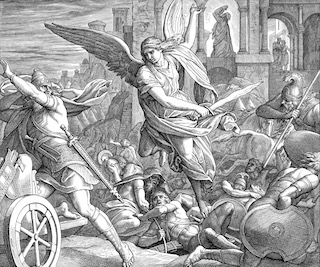
In the first year of his reign, according to the Bible, Hezekiah announced a nationwide solemn celebration of Passover in the City of David. Until that point, this Feast had not been associated with Jerusalem proper. Families in every city and village participated in a sacred meal that day, established since the times of Exodus. This celebration had long been linked to the Feast of Unleavened Bread, the kind of bread, which was normally prepared before the barley harvest. Hezekiah wanted to give these holidays, which were initially of the pastoral and agricultural origins, the feel of a Zionist celebration. As a commemoration of the deliverance from slavery, Passover was to become a day of celebrating the deliverance and giving thanks in the House of the Lord. Under the influence of Isaiah, the king also sought to awaken the spirit of repentance among the people. When announcing his decision in front of the assembly of priests, Hezekiah said: “The anger of Yahweh weighed heavily on our fathers, and now I want to make a Covenant with God so that He will turn away His anger from us.” Thus, return to the purity of the ancient faith became the main motif of his reforms.
Hezekiah vigorously promoted religious education. The staff of scribes, expanded under his patronage, began to organize and put the sacred books in order. The scribes of Jerusalem, also referred to as “the servants of Hezekiah,” gathered speeches of the prophets who had predicted the fall of Samaria, and composed new Sacred history by combining its both versions, from the North and from the South. They published a Collection of Wisdom Sayings. This collection, attributed to Solomon, marked the emergence of a new genre in biblical literature. And it was no coincidence that it arose during the years of peace and the promotion of education. There is no preaching fervor, impassioned denunciations, or arduous soul searching in the Book of Proverbs. Instead, it is down to earth, balanced, and unruffled; this book outlines not simply the right way of living, but one that is in harmony with the will of the Creator. Thus, the ethics of Proverbs coincides with the moral ideal of the prophets.
That peaceful and productive period lasted for only two years. Isaiah’s influence was hamstrung by those opposed to the reforms. The Assyrians had not troubled Palestine for ten years, and Isaiah tried to prevent Judea from being dragged into an impending war at all cost. However, he was removed from the king’s inner circle, and his advice was no longer wanted. War preparations were underway in Jerusalem. Their end would be disastrous: Hezekiah and his allies were not only unable to prevail over Assyria but were completely defeated. The country lay in ruins and thousands of people were driven away to a foreign land. Everyone had to admit that Isaiah was right after all.
And when the Assyrian king Sennacherib (Senacherim) invaded Judea a second time, around 688 BC, Hezekiah had no one to turn to. And just when all earthly chances of salvation had evaporated, a sudden change took place in Isaiah: he became a voice of hope and comfort for his people, for he was fully convinced that the dreadful enemy would never be permitted to eradicate the Remnant of Israel.
To this day, mystery envelops further events of the Sennacherib’s campaign. We only know one thing: something inexplicable thwarted all the plans of the vanquisher.
A huge mass grave was uncovered during the excavation of Lachish: the remains of more than one and a half thousand men were found there. It is most likely that a new kind of assailant, an epidemic, attacked Sennacherib’s army, in the face of which he found himself to be utterly powerless. Sennacherib was never again to return to Judea.
The deliverance of Jerusalem tremendously boosted Isaiah’s standing. His school became one of the most influential in the city. It seemed that all the trials were now behind and Israel was finally on the right track. The farsighted prophet knew, however, that this was not the case.
The line of David was destined to fall and be reborn. Only a small stump, a stub, was to survive from the once-powerful trunk. It would be an utter humiliation to the people and the Royal House. Yet God would keep it alive, and one day a Netzer—a young spring offshoot—would sprout out from the half-dead stump.
As before, Isaiah chose not call the Messiah a king, for his coming would reveal that the only King is the Lord Himself. All of Netzer’s glory would be derived directly from Yahweh: for wisdom, knowledge of God, and righteousness are all works of the Spirit. And the Anointed One himself would act by the power of the spirit.
The final verses of Isaiah’s majestic hymn, his swan song, leave no doubt that the messianic era would no longer mean simply freedom and justice; for it would bring peace not only as an end to wars and strife but peace in its deepest and most sacred sense. Indeed, the biblical word “shalom” (peace) means the fullness of life.
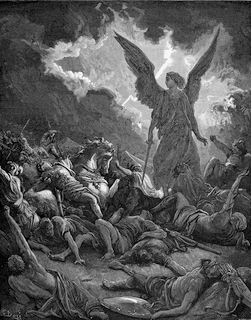
One can often hear a condescending remark that Isaiah’s belief in the bright future merely anticipated modern ideas of social justice “in a naive form.” Yet the history of European culture demonstrates that, on the contrary, it was these concepts that had the Bible at their root.
The prophets who lived in the era of spiritual and social disasters, on the eve of the destruction of their homeland, in the face of overpowering tyranny, these prophets were granted to behold the Kingdom of God. Their preaching was foolishness in the eyes of the world, and even they themselves were astonished at the mystery, which had been revealed to them.
Nineveh – Jerusalem, 687–640 BC
Faith built entirely on miracles essentially ceases to be true faith. A miraculous sign, as it were, infringes on the freedom of people, imposing on them salvation.
Following the retreat by the Assyrians, Isaiah’s contemporaries undoubtedly were inspired by the hope that Yahweh would vanquish Assur in a decisive final battle. Yet it soon became clear that the angel of the Lord had not finished the extermination of their enemies, but the opposite happened. Sennacherib not only outlived Hezekiah by several years, but Nineveh’s power even reached its apogee during the reign of his son Esarhaddon.
The proponents of the pro-Assyrian course took an upper hand in Judea. There was a tendency to go back to the policies of Ahaz, and the worship of astral54 deities grew widespread among the Jewish nobility of that time.
All sorts of enchanters, mages, and healers quickly multiplied in Jerusalem. The return to the cult of Moloch became the lowest point. Altars were erected in the Hinnom Valley (Gehenna) near the southwestern wall of Jerusalem, where hideous rituals of infanticide were practiced with increased frequency. Paganism celebrated its last and wildest orgy in the Holy Land.
The prophet Isaiah did not live to see those dark days of apostasy. Along with his religious reforms, the elite rejected the social demands of the prophet. Lawlessness and corruption prevailed in the country.
In the meantime, religious opposition began to make a comeback in Jerusalem. Those who had remained faithful to God in spite of mounting religious oppression sought their support and guidance in the traditions of Moses.
Formed during those turbulent and critical years, the Torah or the Pentateuch (the first five books of the Bible), is infused with the spirit of struggle. Written on behalf of Moses, it speaks about the oneness of God and the faithfulness of the Creator in a way that could only have been accomplished in the face of direct danger threatening the faith.
Jerusalem, 640–622 BC
The legacy of the prophets, which, for a long time, seemed to have been lost, began to revive at that troubled hour. The first was the prophet Zephaniah, a noble Jerusalemite from the school of Isaiah. During the divine service in the Temple, when both God and the king were to be praised, he suddenly announced that the cup of iniquity was full.
His were the words that still astonish listeners of the Latin hymn Dies irae:
The weakening of Nineveh and the preaching by Zephaniah made a deep impression on the young king Josiah. At the age of sixteen, he publicly announced that he was rejecting foreign cults and would henceforth follow the faith of his ancestor David.
The struggle for spiritual rebirth went hand in hand with the struggle for independence and unification of the country. It seemed that the dawn of Israel, despaired of by many, was finally at hand.
Only one person in Jerusalem did not share this general hope and enthusiasm. It was Jeremiah, son of Hilkiah, a young Levite from Anathoth.
Just as the great prophet Hosea has stood at the deathbed of the Northern Kingdom of Israel, so the mournful silhouette of Jeremiah symbolizes the end of the kingdom of Judah. First as a witness of its last heyday during the years of Josiah, and later of Jerusalem’s tragedy, Jeremiah was destined to be present at his country’s moment of agony and be taken away from the land alongside the people. Not having the calling of a leader like Moses or Elijah, nor being a great poet and founder of his school like Isaiah, he nevertheless left an indelible mark on the religious consciousness of the Old Testament. It is no coincidence that the Bible has more to say about his life and personality than that of any other prophet. However, if we intend to find some new doctrine peculiar to him, we will be disappointed: almost everything that Jeremiah taught had already been made known by his predecessors. A careful reading of his book, however, allows one to grasp one key feature behind the secret of his influence, namely, the author’s vivid individuality, which comes across more clearly with each consecutive chapter.
Jeremiah was the kind of messenger who retained his inner right to dissent on what he was commanded to proclaim. Jeremiah stands further than any other prophet from the Eastern mysticism, characterized by its ecstatic extinction of individuality.
In him we find a man who learned the secrets of direct dialogue with God.
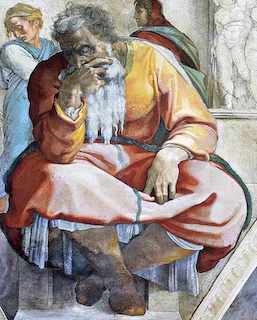
An unapproachable King of Glory, who appeared to Isaiah, a formidable Judge, who spoke through the mouths of Amos and Zephaniah—in the prophetic office of Jeremiah, He overcomes the distance and reveals His living Face to a person.
Timidness and hesitation took over Jeremiah when he realized what a difficult feat he was entrusted with: he could not help sympathizing with the decision of King Josiah to put an end to paganism in the country, but he saw all too well how superficial the “conversion” of the masses remained. “An appalling and shocking thing has happened in the land,” said Jeremiah, “The prophets prophesy falsely, and the priests rule at their direction; and My people love to have it so” (Jr 5:30–31).
Jeremiah was not a demagogue and knew not how to flatter the people. He began his struggle with Israel in the name of Israel and refused to cover up its sins because he sought its salvation. Patriots were indignant at his speeches, instead preferring to listen to those who prophesied of new victories in the name of Yahweh. Meanwhile, Jeremiah, more than any other prophet, loved his wretched people and their long-suffering land. It was the same austere love that led Dante centuries later to call Italy “a slave and a house of debauchery.”
Following a series of setbacks, Jeremiah realized that his calls fell on deaf ears; he returned to his hometown, having lost all hope of a genuine rebirth of Israel. Soon after, however, an event took place in Jerusalem that seemed to challenge his pessimism.
Judea and Israel, 622–609 BC
King Josiah was twenty-six—young, brave, energetic, and mostly free from the oversight of his old dignitaries—when a close circle of advocates for a new reform emerged at his court.
When the king ordered a major renovation of the Jerusalem Temple, a book of the Torah was discovered at the construction site.
A few days later, the heralds announced in Jerusalem that the king was calling for a general assembly at the Temple. Having ascended the dais, Josiah loudly declared that the holy book of the Torah, in which God proclaimed his Covenant to Israel, had been found in the Temple. The king ordered the scroll to be summoned and began reading it aloud to the people.
It was a significant moment in the history of Israel. God’s people, born not as a nation, but as a community of the faithful, were now returning to their true origin. Here, in front of the Temple gates, after many years of oblivion and apostasy, the people’s special destiny was being delineated once again. A different kind of unity, unlike their national tribal identity, arose at that hour—a spiritual unity, the kind that the prophets sought after, and which would ultimately be ushered in on this very spot in the holy city some six centuries later.
The events filling the thirteen years that elapsed between the finding of the Torah and the death of Josiah remain unclear to us. The efforts of the reformers probably did not weaken. The spirit of social justice permeating the Torah from now on would became the ideal for the Kingdom of Judah. For the first time in history, the state adopted such humane laws, which protected the interests of the poorest segments of the population. Recall that in the same year when the Torah was made public in Jerusalem, the laws of Draco55 were introduced in Athens, which were characterized by unprecedented cruelty, the laws that the Greeks themselves referred to as being written in blood rather than ink.
Unsurprisingly, these changes led Israel to a rapid flourishing. Yet Jeremiah did not become an enthusiast for the Jewish reforms. Probably, he did not attach much importance either to external changes in worship or the introduction of the new laws. The delicateness of his position was in that he could not oppose these innovations, but, as a deep and perceptive thinker, he could see their weaknesses and did not really believe in their efficacy.
“Knowing God” by and large was the major theme for the prophets. Their religious ideal can perhaps be best likened to St. Augustine’s motto: “Love God and do as you will.” In other words, a person’s lifestyle should naturally flow from his or her faith.
Not everyone, however, would find this path acceptable, and sometimes it could even pose a danger of moral relativism.56 Therefore, the priests needed to formulate their own Torah, which was written down likely during the era of Josiah. This is the so-called “Holiness Code” of Leviticus, chapters 17–26.
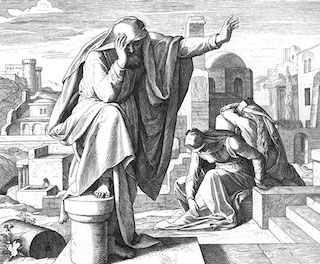
Similar to the Covenant Code and the Book of Deuteronomy, the Holiness Code is an expanded interpretation of Moses’ Decalogue. The main idea of the Code is consonant with the prophet Isaiah: Yahweh is holy and infinitely above the world, and this is why anything dedicated to Him—the sacrifice, the city, the people—must be separated from the world in order to be made sacred, pure, and worthy of God. While living among other nations, God’s people must see themselves as “holy,” i.e., belonging to God and being distinct from the pagan world.
A spiritual community cannot become stronger and grow if it does not distance itself from the world in some way and find its own path and the way of life. That’s why the priests tried to encompass the Israelites with a system of norms aimed at making their entire life radically different from that of pagans.
The Code especially condemns three types of offenses: idolatry, superstitions, and sins of the flesh. It is easy to see why, both from the historical context and the crux of the matter.
The world events at the time could, too, appear to the Kingdom of Judah as a sign of the approaching Messianic era. In those days, the king of Medes in alliance with Babylon began a campaign against Assyria. Such a crushing blow had never struck the Assyrians before. The hatred against the Empire became so great that it was in no position to receive any real support from anyone.
Even the Gentiles saw this fate of Assyria as a punishment for her crimes. The catharsis of historical retribution was, as it were, good news for those who had witnessed the rampage of Assyrian violence in agonizing bewilderment.
The collapse of Assyria opened the opportunity for the Egyptian pharaoh to regain Egypt’s control over the Syrian territories. The Egyptian army advanced to the north in the fall of 609 BC. When King Josiah received the message of the Egyptians marching across his land, he immediately ordered his army to block the Pharaoh’s path.
This was a mistake: the Jewish king overestimated his own strength when facing a huge and well-trained army. Furthermore, the outcome of the battle was a foregone conclusion from the outset: Josiah, who was standing on a chariot in the front ranks, was seriously wounded by the first shots of the Egyptian archers. Deprived of their leader, the Jewish army retreated in disarray. Bleeding Josiah was brought to the capital where he soon died. The whole country was grief-stricken.
The prophet Jeremiah wrote a funeral elegy on the account of the death of the reformer king. Although he loved Josiah, he was mentally prepared for such a tragic end. Jeremiah was not naive about the imminent forgiveness of Israel; instead, he knew that Israel could only attain its healing from spiritual maladies by drinking the bitter cup of disappointment and unfettering itself from empty patriotic illusions.
Judea, 609–597 BC
In those years patriotism, disarmed by the collapse of political hopes, began to degenerate into morbid nationalism. The disasters, as is frequently the case, fueled the nationalistic sentiments of the people.
Gradually, the old pagan rites began to reemerge. Here and there, the peasants again tried to appease the Baals out of fear of drought, and the women would look for abandoned Astarte amulets.
However, these apparent vestiges of the past could not change the appearance of general piety and tranquility. Peace seemed to reign in the country as the Egyptian yoke proved not to be too oppressive and mostly limited to paying the levy.
And that was the moment when Jeremiah was once again called to speak out against Jerusalem. As before, and not without hesitation, he chose to resume his struggle with his nation. An inner voice haunted him until he agreed to go and speak. Jeremiah had to tell people things most terrible and baffling: his words would cause the ground to fall out from beneath the feet of any devout Jew. The prophet declared war on the last two idols—the idea of national superiority and blind faith in the national holy site. Jeremiah was among the first teachers of mankind to proclaim a purely spiritual religion, which, while acknowledging the validity of symbols, temples, and rites, essentially stood above them. The prophet had to show that the Temple walls and the altar stones were of no value in and of themselves. He was about to dispel the myth of the inviolability of the Yahweh’s House in order to bring attention to the knowledge of God that had been obscured by the externals of the worship system.
The words of Jeremiah especially offended the Temple priests. “Death to him!” they shouted as the crowd grew bigger threatening to slay the prophet.
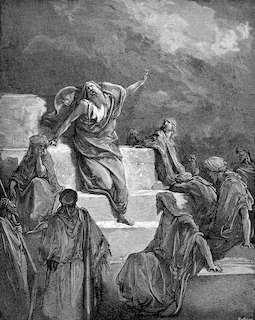
A seemingly peculiar situation transpired from that time on: the secular elite were more likely to side with Jeremiah, whereas the prophets and the clergy became his mortal enemies.
During those days, Jeremiah was visited by gloomy thoughts as he once again witnessed how all his efforts were being smashed against a brick wall.
Speaking out against the priests and the powers that be, Jeremiah did not remain silent about the sins of the commoners. He saw in them a constant source of relapse to paganism. Many of the “people of the land,” who had only recently smashed fetishes and thrown out household idols, were now tormented by their superstitious fears and guilt. A comet or any other unusual natural phenomenon would strike terror in their hearts.
In the end, all social classes turned against Jeremiah, who could not have acted any different. “The most compassionate of the prophets,” as St. Gregory the Theologian would refer to him, Jeremiah longed to live in peace with everyone, yet God required something different from him. “Woe is me, my mother,” he exclaimed, “that you gave birth to me, a man with whom the whole land strives and contends! Every one of them curses me” (Jr 15:10, cf. 20:14).
And finally, Jeremiah came forward with direct denunciations of King Jehoiakim.
It is easy to guess the rage with which the king met this prophecy. Perhaps the prophet managed to escape just in time, while the subsequent events diverted Jehoiakim’s attention. In short, Jehoiakim did not execute Jeremiah, but he forbade the prophet to speak at the Temple or leave his house in general.
At this time, new anxieties and worries befell the king. Judea was too weak to claim full independence, and it was necessary to decide which one of the warring great powers—Egypt or Babylon—to side with. Egypt was on the verge of total defeat.
The most natural step for Judea would have been to move under the auspices of Babylon, and Jeremiah declared this to be the only way to peace.
In January 597 BC, the regular troops of the Chaldeans already stood outside Jerusalem, and the king of Babylon Nebuchadnezzar himself arrived at the camp. Jeremiah urged the Judean king to promptly sue for peace.
On March 16, the gates of Jerusalem opened, and out of them emerged a delegation consisting of the king, the queen, and the highest dignitaries of Judea. Dressed in mourning garments, they proceeded to the Chaldean camp. Nebuchadnezzar received them severely as traitors but did not execute anyone. He spared the Kingdom of Judah; however, in order to prevent a rebellion, he ordered that the majority of military leaders, the city’s garrison, builders, swordsmiths, as well as almost all nobility and the rich be relocated to Babylonia. With these actions, Nebuchadnezzar hoped to eradicate the pro-Egyptian party.
Jeremiah knew that among the deportees there were many people who trusted him and sympathized with his work, such as the young priest Ezekiel. The prophet wanted to somehow support, strengthen, and direct them on the right path. Jeremiah urged his compatriots not to despair, to show resilience, and to avoid creating illusions: the captivity would be lengthy, lasting a lifespan, and would end only after a period of seventy years. During all that time, the Jews ought to live by faith in the coming liberation, purify their souls by repentance, and atone for their apostasy. And only after that, Yahweh would bring his people back to the land.
Jeremiah was proved to be right. The same people who made up the first batch of deportees, who went through the trials of exile and preserved their faith, would later lay the foundation for the revival of Israel.
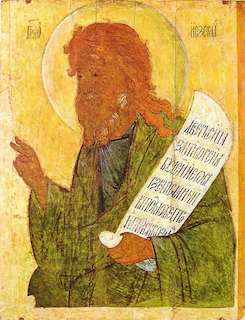
Babylon, 597–590 BC
The Jewish settlers in Babylon faced a difficult task: how to remain true to their religion without a religious center. They urgently needed a guide and spiritual leader, and Ezekiel became such a mentor to them.
A priest like Jeremiah and Isaiah, Ezekiel differed from them since, being deprived of the Temple, the scope of his work had to be reduced to the narrow confines of the settlers’ community. A writer rather than a tribune, he became a spiritual companion to his fellow expatriates.
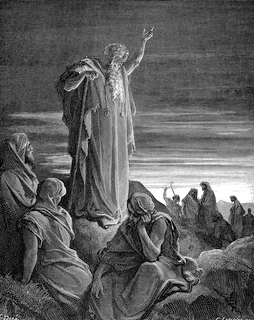
What was the primary task for Jeremiah and the other prophets who remained in Judea before the diaspora? They sought to overcome any remnants of the Canaanite superstitions and preserve peace with the outside world in order to advance ecclesiastical reforms. In Jeremiah’s eyes, Babylon was a “scourge of God,” asserting itself only through brute force. Ezekiel, on the other hand, had to live alongside this huge center of civilization, which in itself required further introspection.
On the fifth day of the summer month of Tammuz in 592 BC, the inhabitants of the village of Tel Abib saw the priest Ezekiel shaken, his countenance changed. For a long time, he was unable to utter a single word. Finally, by means of signs, he addressed the elders who had come to inquire of him the will of God. Then, one day, his mouth was opened and he told the Jewish leaders about the extraordinary visions that had been visiting him for some time.
Prior to Ezekiel in the Old Testament, only Moses and Isaiah had been granted to behold the Glory of the Lord in its greatness, unbearable to humans. And if previously it had appeared on the Mountain of God and in the House of the Lord, now it was made manifest to the prophet in a vision of a chariot on the plains of the pagan Chaldea. This meant that the Glory of the Lord knew no boundaries; the cherubim carrying it faced all four directions of the world; it moved with unrestricted freedom, not being tied to any particular location. Its previous presence in Zion was only by a special dispensation of God.
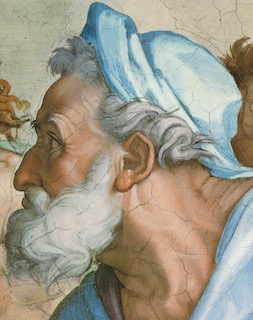
Ezekiel related another vision shortly after it visited him (Ezekiel, Ch. 8–11). A fiery figure grew in front of Ezekiel and lifted him into the air. He was translated to Jerusalem, in front of the northern gates of the Temple. Yet it was not the tangible city, the capital of Judea, but rather a mystical Jerusalem. “And behold, the glory of the God of Israel was there, like the vision that I saw in the plain.” Just as in Babylon, however, idols stood everywhere; and the leaders of the people were burning incense to the frescoes depicting beastly looking eastern deities on the walls of some strange secret chambers.
And then the Glory of the Lord descended from the chariot and stood at the threshold of the Temple, and the destroyers went around the city slaying the apostates. One of them took the hot coals from Merkabah, the Heavenly Ark, and threw handfuls of them onto the city. And when all was over, the cherubim spread out their wings, and the ophanim—the wheels full of eyes—were set in motion.
The Lord’s Glory then left that place, a place polluted by sin, being carried away by the living chariot.
It was a terrifying sight: the Covenant, which had been the hope of Israel since the times of Moses, was being severed; the gates were shut and the House was abandoned. “Oh Lord God,” the prophet cried, “Will you make a complete end of the remnant of Israel?”[105] After all, not everyone had apostatized; indeed, many did repent!
From now on, Israel’s path, as revealed through the prophet, was that of the Sojourning Church, which follows the invisible Chariot of God wherever it may go. The Congregation had to confront their own past, and realize that it was now up to them to decide whether to be with God or to depart from Him.
Thus, both Ezekiel and Jeremiah embraced the idea that Chaldea was to become a temporary shelter for Israel. They were convinced that the days of Jerusalem had been numbered. Their foresight was soon justified by the subsequent events.
Jerusalem, 588–587 BC
During a brief period of temporary respite when hopes were revived for a successful resolution of the recently erupted confrontation with Babylon, the sale of land began in Jeremiah’s hometown of Anathoth: the landowners likely intended to flee the troubled area. Jeremiah’s relatives offered him to buy back some of the land, for which he had the right as next-of-kin. Taking advantage of the fact that things had quieted down in Jerusalem’s vicinity, the elderly prophet decided to hit the road. However, he was detained by the guards at the city gates. The captain of the guards, who belonged to the war party, accused Jeremiah of wanting to defect to the enemy camp (the rumors reached the city that the Chaldeans were approaching again). He was severely beaten and thrown into the basement of the house of Jonathan, a scribe at the royal court.
It is not known how many days the prophet had to spend in prison, but during that time the situation around the city changed dramatically. The Chaldeans, after the first clash, forced the pharaoh’s army to retreat and put a blockade on Jerusalem. This time, the residents of the city had no one to turn to for help.
The agony of Jerusalem began to unfold right above the dungeon where the prophet was languishing in his death throes. After a few months, the besieged began to experience a food shortage. In the meantime, the Chaldeans were preparing a decisive assault.
One night, perhaps on the advice of one of Jeremiah’s sympathizers, the prophet was brought into the palace. “Is there any word from Yahweh?” the king inquired. He finally became convinced that the predictions of Jeremiah were being fulfilled. The prisoner was exhausted by his confinement and mental strain, but when a statement was requested of him, he summoned all his courage and said only what he knew to be the truth: “You will be delivered into the hand of the king of Babylon.” The king ordered Jeremiah to be kept in the court’s guardhouse, where the prisoner was granted relative freedom and gradually began to recover.
And then new energy welled up inside the prophet and his message to the people took a drastic turn. For a quarter of a century, he had only spoken about the abyss into which Judea was falling; but now, when the bottom of this abyss could already be discerned, the prophet, for the first time, began to speak of deliverance. He even reaffirmed his hopes through a set of specific actions. While visiting his relatives, to the amazement of everyone, he expressed his wish to make a formal contract to purchase the land.
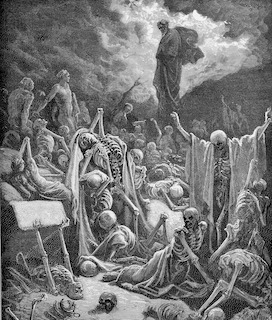
The prophet publicly explained his actions: “Thus says Yahweh Sabaoth, the God of Israel: ‘Houses and fields and vineyards will again be bought in this land.’”
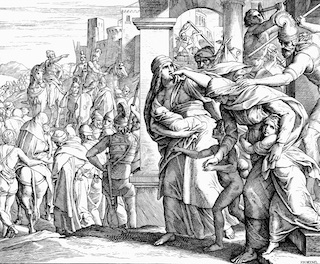
Jeremiah’s prophesy about the “Branch of David”—the Messiah—probably dates back to that very moment. “Behold, the days are coming,” says Yahweh, “when I will restore a righteous Branch for David, and he will reign as king and act wisely, and do justice and righteousness in the land. In his days, Judah will be saved, and Israel will dwell in safety” (Jr 23:5–6).
The Chaldeans besieged Jerusalem for many months. As a last resort, the king decided to desert the city under the cover of night; with his whole family and the remaining garrison, he quietly slipped through the eastern gates located near the palace garden. However, they did not succeed in getting past the enemy lines undetected: the escape was spotted, and a pursuit after them ensued. Now Jerusalem stood defenseless before the enemy. The Babylonian troops advanced to the streets of the city.
The Chaldean soldiers completed the destruction of the city walls on August 15, 587 BC. The cedar Palace and all the large buildings of Jerusalem got burned down. The Temple was completely destroyed—the soldiers set fire to the House of Yahweh. The Ark of the Covenant, that ancient holy relic of Israel, also perished in the fire.
Judea – Egypt, 587–580 BC
The disaster awakened the religious conscience of the people: they were repenting of their sins, making vows to God, lamenting their having heeded the false prophets and violating the statutes of the Torah. In the meantime, new waves of prisoners kept departing into captivity one after another.
These people, who had lost their homes, were depressed and embittered. Most had their relatives either dead or deported. They failed to comprehend how this could have happened, how Yahweh could have allowed the destruction of the Temple and Jerusalem.
In several days, the Jewish refugees began to make a temporary encampment in the Egyptian territory near the city of Tahpanhes. This was the exact same spot where Moses, some six centuries earlier, ordered the people to set up their first camp following the Exodus. And the vicissitudes of fate once again led the ill-fated wanderers to the land of Mizraim.
Both Israel and its religion seemed to be on their way to their sure demise. Was it not how other ancient nations and their deities faded away in history? First invasion by the conquerors, then destruction of the cities and temples, followed by the collapse of the nation. And only an epilogue appears to be missing in our story about the prophets; once Jeremiah and Ezekiel would pass away, and the exiles would dissolve among the foreign nations, the only thing left would be the words and acts of the biblical clairvoyants, similar to the written records of Babylon, Egypt, and Phoenicia—the relics of the days long gone.
Yet something different happened instead, a thing unexpected and humanly difficult to explain.
The exile and the captivity were not the end of Israel’s journey, but instead a new turn. It was not the end of the story of the people of God, but rather a beginning of a new chapter. It was no accident that Ezekiel saw the Glory of the Lord then dwelling outside the Temple and the City, in the place where living faith shone forth in the responsive heart.
And so among the colonnades of pagan temples, surrounded by the Jewish soldiers and the Egyptian peasants, in the Nile Delta, at the crossroads of three continents, the old prophet Jeremiah, a man who had gone through immeasurable suffering, could sense the joy of the Coming One. Time was fading. The Old Covenant was merging with the New.
“Behold, the days are coming, says the Lord, when I will make a NEW COVENANT with the house of Israel and with the house of Judah—not according to the covenant that I made with their fathers in the day that I took them by the hand to lead them out of the land of Egypt, My covenant which they broke, though I was a faithful husband to them, says the Lord. But this is the covenant that I will make with the house of Israel after those days, says the Lord: I will put My law in their minds, and write it on their hearts; and I will be their God, and they shall be My people. No longer will they teach their neighbor, or say to one another, ‘Know the Lord,’ for they will all know Me, from the least of them to the greatest of them, says the Lord. For I will forgive their iniquity, and their sin I will remember no more” (Jr 31:31–34).
Chaldea, 580–575 BC
Around 580 BC, Judea was a grim spectacle: it was deserted in the literal sense of the word. Fields and vineyards had been abandoned; an occasional hut of the poor and destitute peasants could be encountered now and then. The deserted cities looked like huge dumps of debris.
There were many among the exiles in Babylon who ended up bowing down before the strange altars. They no longer belonged to the people of Yahweh, seeing no sense nor advantage to it. At that point, the efforts of the prophets took on a new direction. Whereas previously their mission had been mainly to rebuke, now they began the work of healing.
When the news of the siege of Jerusalem reached Chaldea, Ezekiel suffered a family tragedy: his wife, whom he loved dearly and called “the delight of my eyes,” suddenly fell ill and died. At her funeral, the prophet held back his tears to everyone’s amazement and contrary to custom. When asked about the reason for this, he replied that he wanted to give a “sign” to Israel, urging them to courageously face the coming tragedy and to humble themselves before Providence. Ezekiel assumed the role of a shepherd for the people.
The public prayer and the sermon on the Lord’s Day, the Shabbat, became the linchpin around which the string of ordinary days revolved. When we view the Christian temple not only as a shrine but also as a place of fraternal meeting where the Word is proclaimed, we must remember that its beginning goes back to Ezekiel and the synagogue that he helped to found, where the spiritual life of the diaspora would concentrate for centuries.
No era in the history of the Old Testament gave rise to such a strong penitential movement as the years of exile. This can be best seen in the famous Psalm 50,57 the final lines of which directly refer to the Captivity.
The author is acutely aware of the fact that no person can completely free oneself from one’s sinfulness by his or her own efforts, and he thus sees salvation in the grace of God. Only God’s saving power can root out the innate human impurity and cleanse the heart. Here the word “heart” first appears in the Old Testament in this context, pointing to the coming miracle of spiritual enlightenment:
The psalmist understands the service to God the way Moses and the prophets taught about it: the sacrifice is a sign of the union with the Creator, but it is only an outward expression. The true sacrifice is faith and a pure heart:
Chaldea, 573 BC
Fourteen years passed after the burning down of the Temple and twenty-five years since the first batch of captives had been taken away to Babylon.
The tragedy that struck Judea was gradually receding into the past; the only reality for the children of immigrants was the life around them. Any changes to their circumstances were unlikely by all human calculations, but Ezekiel continued to speak tirelessly about the promised miraculous liberation of Israel.
In the days of the sad twenty-fifth anniversary of the Captivity in 573 BC, the prophet was again carried by the Spirit of God to Jerusalem.
The last chapters of the Book of Ezekiel are devoted to the description of this New Jerusalem. On their pages, we come across various numbers, numerous measurements, and specific details.
This is simultaneously a plan, a project, and an entire program. The message that the prophet addressed to the people is encrypted in a schematic blueprint. For example, he delineates the City of God with a well-formed square, which signifies a harmonious perfection and at the same time a cruciform reaching out to the four corners of the world (the symbol of universality).
But if so, are those not right who consider Ezekiel a utopian reformer similar to Plato?
Utopianists sought to lay out the characteristics of a perfect social order within the confines of the reality that surrounded them. Ezekiel, on the other hand, focused more on the need to drastically change the direction of life rather than the social system. We hear his call to make spiritual life the center of human existence.
The City of God would no longer be built in Zion, but on the land where the borders of the tribes meet, and it would no longer be called Jerusalem, but Yahweh-Shamma—“The Lord is here.” This is the final chord of the book, one that carries the single most important part of the prophet’s vision.
The gates through which the Glory has entered are now tightly shut; only a mysterious voice from the depths of the Temple indicates that the eternal flame of the Divinity dwells within the sanctuary. It would seem that God is near, and yet, at the same time, He is both far and terrible in His unapproachability. As before, no one can see Him and remain alive. We witness here a sign of Ezekiel’s genuine understanding of the nature of the divine.
If a person cannot help being in awe even before the sight of the immense creation, if one’s heart trembles while contemplating the endless ocean of the Universe, then what should one feel when approaching the mystery of the Transcendent,58 that superhuman power, absolute super-existence, and “holiness” incommensurate with the creature? Here all the anthropomorphic aspects of the Eternal One fade away and the sense of a sacred horror and reverence mixed with awe is born. Those who find the biblical image of God to be too “humanized” should reread these pages of the Bible that speak of Yahweh’s holiness.
The only thing that directly connects the Glory with the outside world is the “river of life,” which flows out from under the threshold of the Temple. It flows across the Holy Land, expanding and deepening, right down to the Dead Sea cleansing its waters of bitterness. The image of living water (which we again see in the Book of Revelation) means an inexhaustible flow of grace; it not only fills an individual but also cleanses the world, purging out the bitterness of sin.
The Church depicted by Ezekiel can be called Universal, although Israel would remain at its core. The prophet speaks of “gerim,” the aliens, who will have an equal share with the Jews (Ez 47:22–23). It is thus no accident that the City of God will be open to all four corners of the earth.
Nothing is heard of Ezekiel after 571 BC. He probably died soon after that. Yet his mission was accomplished—the best representatives of the diaspora fully embraced his program: to go back to the reborn land, having been purified from their historical sins, to build a new Temple and prepare for the coming of the great Day.
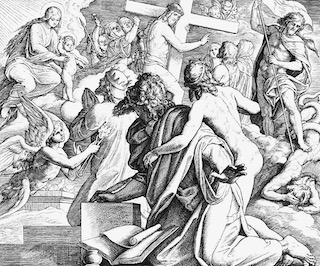
Chaldea, 562–550 BC
Here we near the Old Testament passage, both most mystical and sublime, which is intimately connected to the Gospel.
The voice of a chosen one of the Lord can be heard in the gloomy lull of the Captivity, proclaiming to Israel “new and hidden things” (Is 48:6). We do not encounter such depth of insight, strength, and freedom of spirit either before or after this prophet in the entire pre-Christian world. He is Israel’s greatest teacher, theologian, and poet.
But who was this man? It would seem that much should have been said of him in the Old Testament, or at least no less than of Isaiah and Jeremiah.
Yet an amazing fact is revealed here—one difficult to believe: an impenetrable veil conceals from us the face of the prophet whose very name we do not know.
His sermons and hymns are included in the Bible in the Book of Isaiah, and they had been attributed to the Jerusalem prophet for a long time. And even when it became clear that this was an error, the mystery identity of the nameless visionary remained unsolved. He is commonly referred to as Deutero-Isaiah or Second Isaiah.
Could it be that he bore the same name as the 8th-century BC prophet and they were later conflated to be the same person? We have, however, nothing to confirm this conjecture with.
It is possible that the prophet deliberately hid his identity behind the famous name.
Most probably, it was much more than a pseudonym as it points to spiritual continuity and deep connection to the same legacy.
Of all Israel’s titles used to describe it, Deutero-Isaiah preferred the word “Ebed”—a servant. And it is easy to see why: he saw God’s people primarily as His messenger to the world.
To Deutero-Isaiah, the notion of “Israel” has more than one meaning. In fact, there are two servants of the Lord. While it is true that one of them would often fall away from God, there is also the other Israel: the Israel of the prophets and the God-seers, the Israel of the faithful and the unwavering, the Israel of the “meek” and the “Lord’s poor.” It is this Israel who would become the true Ebed-Yahweh, the doer of Heaven’s will on earth.
At some point, the prophet starts to discern a mysterious Person at the head of the chosen people who would embody the highest calling of Israel—the great Prophet on whom the divine anointing would rest.
It was already Isaiah of Jerusalem who recognized that the Messiah would have to act differently from the kings of the earth; and now his follower speaks about it with greater clarity that leaves no room for doubt.
Yet the Messiah, as the prophet sees him, would not only be a teacher to the nations. For indeed, it is impossible to heal the illness of sin through teaching alone; this would require a special feat on the part of the Servant of the Lord. The meek Teacher would become an Intercessor and an Advocate for humanity.
The Messiah would share the fate of persecuted prophets, and His sufferings for people would mysteriously bring them salvation.
How would that be? This the prophet cannot know, but he discerns the Purest One of all the earth as if with his own eyes, the One who would deliver Himself into the hands of evil forces only to become the Redeemer of sinners.
The seer himself is terrified at the vision of the afflicted Servant. He stands in awe, along with earthly kings and nations, marveling at the voluntary sacrifice:
This would not be some bewildered disoriented victim, but a Martyr who would freely and knowingly offer Himself to the slaughter:
Here lies the threshold and the demarcation line of the Old Testament.
The New Testament employs the imagery and the language of Deutero-Isaiah when speaking of the Atonement. The Evangelists and the Apostle Paul have adopted his symbols of the Lamb and the Sacrifice, which would henceforth become inseparable from any attempts to express the mystery of Salvation.
One should not overlook the fact that lamb in the Old Testament was a sacrifice brought by the people. It was with such a blameless lamb that Deutero-Isaiah compared the Servant of the Preeternal One.
Should we then view God as some kind of despot who demands blood in order to wash away the offense? Ancient and medieval theologians, who only saw propitiation, appeasement, almost a bribe of the formidable Deity in the sacrificial rite, sometimes arrived at such monstrous and absurd interpretations, like the one in which the Blood on the Cross was viewed as a ransom for humanity paid to the devil.
But if this were to be the true meaning of the Atonement, how could it be possibly reconciled with Love?
The Bible refers to sacrifice as the most ancient expression of piety (Gen 4:3).
From the most distant times, blood represented the life principle. Rituals involving blood were used by their participants to seal their “blood” relationship, to signify a bond connecting their lives. The main idea behind sacrifice was to serve as a sign of communion with the Supreme, the union of people with Him, and through Him—with each other.
By eating the meat of the animal during the sacrament, the ancients sought the same thing: to attain oneness with God by tangibly identifying with Him.
Therefore, the idea of blood sacrifice was based not so much on a transaction but on a thirst for genuine communion with God.
In light of this, it becomes clear why the greatest prophet of the Old Testament and then the New Testament after him treasured this symbol and referred to it whenever they spoke about the salvation of the world.
Following Jeremiah and Ezekiel, the prophet Deutero-Isaiah saw in the liberation of Israel a sign of the approaching Kingdom of God. It was as if the new exodus from Babylon merged in his sight with the universal salvation. Here we see a contraction in the historical perspective, which marks so many visionaries. This mistake of the prophet would play a special role in the life of his contemporaries. At the same time Deutero-Isaiah’s conviction that the atoning act of God was about to be accomplished right there and then gave his words extra gravity.
Soon after his first addresses, stirring news reached him from the east. A figure arose, towering above nations and kingdoms, whom Deutero-Isaiah saw to be presiding over God’s destinies.
It was Kurush Achaemenid, or Cyrus II the Great, the Persian king, to whom the states of Asia bowed one after another. Unlike the previous world’s conquerors, he did not leave burned cities in his wake, did not force people’s relocation to foreign lands, did not destroy their temples. Many hailed Cyrus as a long-awaited liberator. His appearance should bring much-anticipated freedom to Israel.
There was yet another reason why the events in Iran (or Persia) could have attracted the prophet’s attention. A new religious movement, consonant with biblical teaching, recently emerged in the lands of Persia.
Chaldea, 562–550 BC
There is a cryptic passage in the Nativity story of the Evangelist Matthew about certain “wise men from the east” bringing their gifts to Bethlehem’s Infant.
The word for “wise man” is “magus” in the original language of the Gospel, which typically means someone skilled in sorcery. But what possible motives could have drawn pagan spellcasters to Bethlehem?
Meanwhile, the word “magi” had a definite meaning in antiquity—it denoted priests of the Iranian religion, which, by the time of Christ’s Nativity, had become widespread not only in the East but throughout the Roman Empire.
Just like Israel, the most original thing about Iran was its religion.
This religion did not leave much in terms of written records. The only piece of evidence that reached our time is the holy book of the Parsis, a small tribe that fled to India from the persecution of Muslims. It was through them that Europe obtained the Avesta,[106] the “Iranian Bible.” This name denotes the same thing as the Vedas, i.e., “knowledge,” though, of course, spiritual rather than scientific.
The first exposure of Europeans to the Avesta occurred in the 8th century. Years passed, new translations of the Avesta appeared, dictionaries were compiled on its basis, and it became evident that the patchwork nature of this book, as in the case of the Vedas, was the result of the stratification of many heterogeneous layers.
Although a significant part of the Avesta was penned at the change of the eras or even during the Middle Ages, it contains much of what had originated in ancient times. These archaic layers introduce us to an already familiar world. They feature gods and goddesses of heaven, fire, earth, sun, and water: Ahura, Mithra, Haoma, and Yima. These are none other than Asura, Mitra, Soma, and Yama of the Aryans. Obviously, the Avesta’s myths about them are echoes from the time when the Iranian ancestors were one people with the Aryans migrating towards Hindustan. Even the name Aryanam (Iran) comes from the word “Arya.”
This overlap in the religious traditions of these two groups bear witness to their common origin,59 though it is impossible to establish the exact time when the two branches separated from one another (most likely in the beginning of the 2nd millennium BC). We will not dwell on these early forms of paganism here.
We note, however, two special traits about the religion of the ancient Iranian peoples, which would subsequently play an important role.
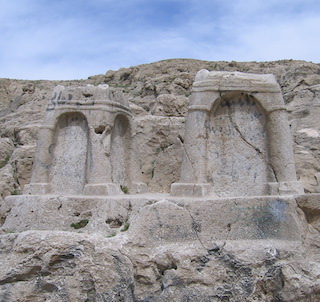
The first trait is fire worship. Archaeologists found its traces already in the ancient settlements of Khwarazm, one of the centers of Iranian culture. The unquenchable fire was an old sacred symbol among the inhabitants of Iran and neighboring areas. Pure flame played the role of sacred imagery and signified the eternal light of the Divine. Fire was revered as a cosmic element, in analogy to water for other nations. The ancient Germanic tribes, the relatives of the Aryans, believed that the world would at some point be consumed in fire in order to be reborn to a new life. This myth, captured in the Germanic Edda, acquired among the Indians the form of a belief in “kalpas”—gigantic periods of time between the successive worlds getting consumed by a Deity.
The second trait is the preservation, along with the pantheon, of the worship of the supreme God, who was called Asura-Dyaus-Pitar among the Indo-Aryan people. Subsequently, identified with the sky god Varuna (Uranus, Perun), he became known as “Asura Vishvaveda”—the Omniscient Lord.
In Iran, he was venerated under the name of Mazda Ahura (Ahuramazda), which also means the Omniscient or the All-Wise Lord. As in the Vedas, however, the image of the Omniscient Lord of the ancient Iranians was obstructed by a host of other gods and their spouses—the goddesses of earth and water.
This was the background against which a powerful religious movement arose in Iran, which transformed the old and not very original beliefs into a new religion of salvation. Subsequently, undergoing various changes and rebirths, it became the state religion of the Persians, which influenced late Judaism and permeated the religion of the Romans. Catharism, Bogomilism, Paulicianism,60 and the religion of the Russian “volkhvs” ultimately all owe their existence to it. Its echoes can also be found in the most recent occult and philosophical systems.
The provenance of this religion is reflected in the Gathas, or hymns. The form and language of the Gathas betray their ancient origin. These hymns, similar to those found in the Vedas or the Bible, are marked by the traits of personal poetry.
The Gathas tell us of a prophet who commandingly knocks on the door of a pagan temple to cast out its gods. He calls himself Zarathustra.
The high priest of the Parsis was called Zarathustrema, that is the Highest Zarathustra, and, thus, this word represents not a personal name, but a title, or an honorary designation, like Buddha or Christ. Therefore, if someone called himself Zarathustra, it certainly does not mean that he was a fictional character.
The Avesta has also preserved the personal name of its prophet. He was called Spitama.
Who was Spitama? He did not call himself a priest or a magus, for these titles were handed down within the family from generation to generation, and the magi like the Israel’s Levites formed a closed clan. Not being a magus by birth, Spitama referred to himself as a “mantram,” a psalmist, and only in one place (and even this is debatable)—as a “chosen one.”
According to the legend, Spitama was twenty years old when he left home and settled in seclusion in the territory of present-day Azerbaijan.
Unlike Brahmins and Greek philosophers, he was not preoccupied with abstract questions. Instead, his dream was to establish truth, peace, and justice here on earth. In this, he shares a special kinship with the prophets of Israel.
The outskirts of Iran during the youth of Spitama were constantly troubled by unrest and wars. In one of the passages of the Gathas, we hear the voice of the “Soul of the Cow” (a creature symbolizing peaceful peasants), who is complaining to Mazda about the troubles caused by the enemy raids. The “Soul of the Cow” expects Mazda to send down a man into the world who would bring justice to people.
To Spitama, the nomadic ravagers and the ancient gods whom they worshiped make up one satanic army. He refers to these gods using the old Aryan term “daevas” (gods), but in his depiction, they are no longer gods, but rather demonic forces.
Following decades of prayer, meditation, and searching, Zarathustra discovered for himself God of Righteousness, the Creator of the Universe, in the being of the ancient Mazda Ahura.
A one God religion! Does it mean we ought to recognize in Zarathustra a brother and a like-minded person to Israel’s prophets, and him as a pagan forerunner of Christ on Iranian soil? In essence, it would not be wrong to think that way.
And yet it would be a mistake to equate the Gathas with the Old Testament. With all the striking similarities, they differ significantly in a number of fundamental points.
Although the prophets of the Bible recognized the need for human moral involvement, they always emphasized that a true salvation can only come from God. For this reason, they insisted on the futility of politics and believed that one should not trust in “horses and chariots” (cf. Ps 19:8).61
Spitama, on the other hand, was looking for a figure of power, one who would also his follower. He was certain that he could not succeed without this kind of support:
His great success came unexpectedly. Vishtaspa himself, the ruler of Bactria and the territories of Khwarazm, Sogdiana, and other neighboring lands, put his trust in the mission of Zarathustra and welcomed him at his court.
Now Spitama was free to proclaim his doctrine. Mere preaching, however, seemed inadequate to him. He believed it was necessary to wage war with arms against the followers of the daevas. A daeva-worshipper was a pathetic “non-Aryan,” a “two-legged creature,” and a “human-insect.”
This hatred against the polytheists and the daevas was later proclaimed as the first item in the Zarathustrian creed:
I curse the daevas. I declare myself a Mazda-worshipper, a supporter of Zarathustra, hostile to the Daevas, fond of Ahura’s teaching.
(Yasna 12:1)
“Human-insects” must be mercilessly exterminated, whereas the coreligionists ought to live in harmony.
I pledge myself to the Mazdayasnian religion, which causes the attack to be put off and weapons put down; which upholds kin-marriage, which possesses Asha; which of all religions that exist or shall be, is the greatest, the best, and the most beautiful: Ahuric, Zoroastrian.
(Yasna 12:9)
Biblical prophets spoke of moral responsibility of the Gentiles before God, thereby allowing some element of respect for their religious worldview. Zarathustra, on the contrary, was utterly uncompromising about it.
As a result, Zarathustra’s preaching led to religious wars.
This is the first difference between the Iranian prophet and the prophets of the Bible. The second one is related to Zarathustra’s understanding of the problem of evil.
The solemn words of the teacher from the famous “Gatha about Reward and Punishment” declare to the coreligionists the fundamental principles of existence:
Thus, Zarathustra—this passionate fighter against evil—pays, as it were, involuntary tribute to evil by declaring it to exist “from the beginning.”
From these words, one of the twins appears to be Mazda himself, who “clothes himself with the solid vault of the firmament of heaven” and bears the name of the “Most Holy Spirit.” His eternal adversary is called Violence and Lie. Eventually, Violence and Lie would be declared hypostases of an evil spirit, known in Zoroastrianism as Angra or Angra Mainyu (Greek “Ahriman”), which means “Destructive or Adversarial Spirit.”
This title is akin to “Satan” (the adversary) in the Bible. Whereas Satan is a creature that has fallen from God in the cause of self-affirmation, Angra Mainyu, on the contrary, is the eternal rival of God, akin to a second “evil” Creator. One of the later chapters of the “Iranian Bible” states that Mazda created all the beautiful lands for human habitation, whereas Angra Mainyu created warlike tribes, sorcerers, superstitions, winter cold, and other disasters.
How can this be reconciled with Spitama’s monotheism? Why was it that he, being a worshipper of one God, saw in the origins of evil a self-perpetuating and self-existing principle?
Dualism (a two-god religion) was not the creation of Spitama himself. Most likely, it was a concession made by the prophet to ancient tradition.
The picture of the Universe as an arena of struggle where the world structure is still being created was a great discovery of the human spirit, a true insight into the essence of created things. However, an Achilles’ heel of all such doctrines was the deification of the much feared chaotic principle in nature. That is why the cosmic battle appeared to the ancients as endless.
This view was also espoused by Zarathustra, who, nevertheless, became the only person outside the Biblical world to reject its pessimism. His living faith in God revealed to him the coming victory of the Good. And in this, he begins to approach the position of the Bible.
Whereas the Greeks reached the highest peak in the philosophical understanding of the idea of God, and the Indians became unsurpassed in “natural mysticism,” it was the religion of Zarathustra that came closest to experiencing the Living God apart from the biblical revelation. And yet Zarathustra’s approach to God was “human, all too human” in its nature. The concept of a holy war sullied its purity, and a concession to the traditional dualism left a vulnerable spot in Zoroastrianism, dooming it to defeat.
Among Zarathustra’s legacies, his teaching on moral freedom turned out to be the most beneficial and lasting. He taught that it took an active and conscious choice of the principle of good rather than a blind and subservient submission to the precepts to be able to join the ranks of Mazda warriors.
Yet the prophet’s dreams of the coming triumph of his teachings were not destined to materialize. During his lifetime, Mazdeanism did not spread beyond Bactria, and the religious wars ended with the enemy invasion of Bactria and the death of the elderly Zarathustra.
Bactria became a part of Cyrus’ Persian Empire around 546 BC. Its accession was peaceful according to Herodotus and Ctesias.
Cyrus pursued humane policies throughout his kingdom: he respected local traditions and beliefs, did not allow mass killings or torture of prisoners, preserved self-administration in the cities, and imposed moderate taxes.
Rumors of these events must have reached the Jewish captives in Babylon. Deutero-Isaiah closely watched the successes of the new ruler of the East. After the Assyrian and Chaldean atrocities, Cyrus appeared as a messenger of universal peace. If he were to come to Chaldea, Israel’s captivity would surely end.
Perhaps realizing that the struggle of Cyrus with Babylon would be inevitable, Deutero-Isaiah decided to address the Persian king directly. At the time, the prophecies that had been uttered even by foreign seers were given great significance. Therefore, Cyrus could not have remained indifferent to the words of the Jewish sage.
Merchants from Iran often visited Babylon, and an echo of the religious ferment that arose surrounding the teachings of Spitama following the annexation of Bactria could have reached Deutero-Isaiah.
No other biblical prophet is as persistent in coming back to the theme of the Universe’s creation as Deutero-Isaiah. It appears to not have been a coincidence, and that the prophet already knew about the Iranian doctrine of the two spirits and wanted to affirm monotheism as clearly as possible. He appears to be confronting someone as he speaks with great fervor and passion that God cannot have a “twin.”
But in this case, does the prophet make God responsible for cosmic evil? Does it not sound like a blasphemy?
To the prophet, God is the source of life and good, whereas evil stems from betrayal of Him.
Deutero-Isaiah knows that evil forces oppose God. He is the only author in the Bible who directly speaks of the cosmic battle between the Creator and the monster of Chaos (Is 27:1, 51:9).
Yet the struggle of Chaos with God and the victory of the Creator is not a battle of the “twins” as in Zoroastrianism, but rather the triumph of the Kingdom of God over the evil will of the creation, over the forces that were granted freedom but who have perverted the ways of the Creator.
Still, for many people at the time, as well as for many today, Zarathustra’s explanation seemed more convincing. Not everything that appears simple and clear in one’s mind corresponds to the deep mystery of life, which can hardly be conveyed as a strict logical model. Deutero-Isaiah sets a boundary for the mind aspiring to comprehend the mystery of God’s destinies; he bears witness to the inscrutable immensity of the Creator, of the unfathomable nature of the Godhead. Blissful humility born out of the panorama of the Universe is one of the surest paths to God. It is this awe, rather than the cleverest metaphysics, which can lead an individual to a genuine contact with the supreme Reality of the Existent One.
Thus, we see that even though the rebellion against false gods in Iran could have evoked joy and sympathy in the Jewish prophet, he nonetheless opposed with every fiber of his being the temptation of setting an evil “twin” next to God.
Babylon, 546–538 BC
It is unknown whether the prophecies of Deutero-Isaiah ever reached Cyrus, and if they did, what his reaction was. Then the time came when the prophet himself could check how well-substantiated his hopes turned out to be. After the annexation of Bactria, Cyrus’ army moved to Babylon. By that time the Persian king knew that Babylon would offer no resistance.
After the Persians entered Babylon on the 12th of October of 539 BC, the city surrendered to the mercy of the victors. The order in the occupied capital was exemplary: Cyrus ordered to strictly monitor that there should be no robberies; temple buildings were cordoned off by the troops who guarded them against any trespassing. The Persian king granted immunity to the city and declared himself a worshiper of the god Marduk, and by doing so he completely won over the local priesthood.
The Jewish prophet was in a position to celebrate: the people could see firsthand that the “man of righteousness,” whose arrival he had previously hailed, was indeed a liberator and not a tyrant. But, on the other hand, the manifesto of Cyrus unequivocally showed that there was no hope for his conversion to the true God. The man who made sacrifices to Marduk, brought the idols back to cities and became friendly with the priests, was hardly going to abandon paganism. This was a great disappointment for the prophet and a blow to his heart’s innermost hopes.
It would be unfair to say, however, that Cyrus completely ignored the captives who had been awaiting him. Soon after his victory, he received a Jewish delegation, and in the spring of 538 BC he issued an edict concerning the Jews. The decree spelled out that all Jews could return to their ancestral homeland if they so desired.
Hence, following half a century since the collapse of Zion, the gates of captivity became once again wide open.
At the time when the “exodus” was not yet possible, the Jews used to talk often about it, passionately yearning for their freedom. But when it finally became a reality, fear of the unknown, hesitation and doubts took hold of many: why leave a wealthy civilized country, where now, under Cyrus’ auspices, life would flow peacefully and calmly? How to make up one’s mind to go to that empty abandoned Judea, where there was nothing but ruins? Here in Babylon, everyone enjoyed the fruits of a highly developed culture, but there, it was a remote province that had turned feral following the decades of desolation. To those who had been born in the land, their memories of it continued to mean something, yet for the “children of the exile,” the land of their fathers became but a myth.
At the Sabbath gatherings, Deutero-Isaiah began to give what we would now call Zionist speeches. His sermons did not merely focus on a national revival; the “exodus” to him was a religious struggle of universal proportions. His convictions in that regard could be summarized as follows: the one God of all mankind has chosen the Israelites to become His messengers to the whole world.
The wealthy did not even want to hear about leaving Babylon, for it meant impoverishment for them. The most patriotic among them restricted themselves to making donations to equip a caravan.
What could the prophet say to challenge the reasoning of level-headed people who viewed the “exodus” as some crazy undertaking? He could only refer to the fact that God’s work could in no way turn out to be futile. All impediments would dissolve like smoke before the power of the Lord. Yahweh has His own plans, and He knows how to bring them about:
In those hectic days, the thoughts of Deutero-Isaiah were completely preoccupied with the ancient saga of the Exodus; he lived by it, and in his eyes, both events—the old and the new—as if merged into one. The times of Moses became projected onto the era of Cyrus. The prophet paints Israel’s journey to the Promised Land with miraculous colors: the desert would bloom like a garden turning into Eden.
Enchanted by this unearthly vision, the prophet was able to infect the indifferent with his passion, persuade the doubtful, and strengthen the weak. By the springtime, the caravan was ready to set out on its journey.
Jerusalem, 538–530 BC
With Damascus now behind them, the caravan was headed straight south moving along the edge of the desert.
Upon entering Jerusalem, everyone was filled with the joy of repatriation but also sadness at the sight of the dull plains at the locations of the former Temple and the royal palace. The city of their dreams emerged before them in the form of a bare hill, where thorny bushes grew among the debris and rubble.
The opportunity to start the construction of the Temple finally arrived the next spring in 537 BC. Its layout was based on the description of Ezekiel. The groundbreaking ceremony for the Temple turned into a celebration.
Meanwhile, the inhabitants of Samaria learned about what was happening in Judea and sent their men offering help in this pious deed. The emissaries conveyed that the Samaritans had long ago accepted the religion of Israelites and that their commitment to maintaining the Yahwistic culture dated back one and a half centuries.
What a significant moment! Could it be that the prophecy about the nations coming to Zion to honor one true God was beginning to be realized?
Yet it was precisely at this historical moment that a deep fracture opened up between the Jewish community and the world.
The Samaritans were greeted with an outright hostility and suspicion, and their help was categorically refused.
What was the reason behind this unexpected refusal? Why were the ideals of the prophets betrayed?
The leaders of the Jewish community doubted the purity of the faith of anyone who had avoided the captivity. Besides, the old enmity between the North and the South played a role too. Lastly, the settlers in Samaria from the East continued to honor, alongside Yahweh, the gods of their native lands, whereas the leaders of the Jewish community sought to preserve the purity of faith at all costs.
Without a doubt, Deutero-Isaiah was saddened by the outcome of the negotiations. He was hoping that Israel, as the Servant of God, would demonstrate missionary zeal, but the people were not yet ready for it.
The prophet engaged in a fight against the air of exceptionalism and isolationism.
The people of the Old Testament were not some peculiar beings cut from a different cloth than everyone else. It is no coincidence that Scripture portrays them in all their human weakness and contradictions. They, like us, were characterized by spiritual ups and downs. While erecting their Temple, they had factions, quarreled, became jealous, sought to benefit themselves, and tried to shun difficulties. Yet it was precisely because they were just like us that their story has remained so vital and important. Weak and earthly, they nonetheless were making their difficult ascent, sometimes straying and falling down.
How many times did Deutero-Isaiah have to admit that his hopes had been in vain! Still, even at the end of his earthly journey, the vision of the Golden City blazed bright before his eyes. It was a New Jerusalem, not this impoverished city lying in ruins, that continued to be the indestructible pillar of his faith and the object of his affection.
Here we must part ways with Deutero-Isaiah—this mysterious anonymous giant of the Bible. He represents the high point in the Old Testament consciousness; very few of those who came after him would be able to rise above it.
Jerusalem, 530–428 BC
Following years of inaction in Jerusalem, the people resumed their interrupted work on the Temple Mount. The solemn consecration of the Second Temple took place on March 12, 515 BC in conjunction with the feast of Passover. The Bible is silent about the period from 515 to 445 BC. The wave of the messianic fermentation, which had previously started in Jerusalem, had by now subsided under new blows of fate.
This, however, also had its own positive consequences, for the misfortunes had caused the best people in Israel to reflect upon its destiny. This is evidenced by one of the most remarkable books of the Old Testament—the Book of the Prophet Jonah.
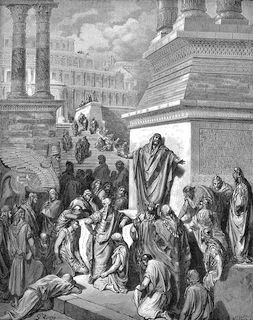
We should not be misled by the fact that it is usually placed among the prophetic writings; this work belongs to a completely different genre of the “Aggadahs”—the name given to Jewish edifying tales and allegories.
The main goal of an Aggadah is to teach a moral lesson. The historical books63 of the Old Testament also pursued this goal, but they contained genuine historical facts taken from the annals. An Aggadah, however, by its very nature is unconcerned with the historical authenticity of its narrative, and the idea behind its story completely outweighs the events’ historicity.
The Aggadic form of the biblical teaching was previously little taken into account by the interpreters of the Book of Jonah; instead, they wanted to see in it a description of genuine events. This approach inevitably distracted from the main thing: skeptics turned the story of the hapless prophet into a target for ridicule, whereas its proponents sought ways to prove that a person could stay unharmed for three days in the belly of a “big fish.” However, both the fish and the fantastic plant that grew overnight to the size of a tree, indicate an allegory, a didactic legend. And if we are to look at this book from this position, then its mockery proves to be pointless. In fact, the idea that this book contains puts this masterpiece at the forefront of the Old Testament.
It is not difficult to guess what prompted the author to write the Book of Jonah. The fiercest messianists of Judea were probably expecting an imminent collapse of pagan strongholds, obliterated by a cosmic storm. Yet everything remained in its former place. Many viewed that as Yahweh turning back on His word and murmured openly. How could He spare the Gentiles?
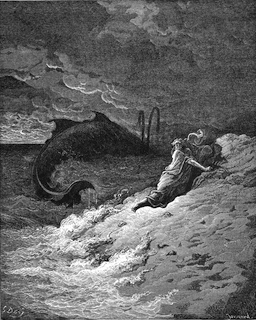
And then, in response to this arrogant and surly bunch who looked in vain for the destruction of foreign monarchies, a teacher in Israel wrote the Book of Jonah.
It tells the story of a prophet sent by God to preach in the epicenter of the pagan world—Nineveh. This city was not picked accidentally, as Nineveh became the worst kind of abomination in the memory of Israel.
Having received a heavenly command, Jonah has no intention whatsoever to take concern for the salvation of the Ninevites. An impetuous and temperamental man, he does not hide the reasons for his disobedience: he knows all too well that Yahweh is “gracious and long-suffering God, abounding in love and One who relents from sending disaster,” so He can be counted upon to spare the sinners should they repent.
Having reasoned thus, Jonah, without further ado, boards a merchant ship and decides to “flee from the face of Yahweh” to faraway Tarshish in Spain. His naïve ploy, however, is unsuccessful: God sends a storm, and Jonah realizes that the ship can sink because of him. He asks the merchants to throw him into the water, and as soon as they fulfill his request, the sea calms down.
The recalcitrant prophet did not drown: Yahweh sends a gigantic fish that swallows Jonah and spits him out ashore three days later. Here again, God commands Jonah to go to Nineveh.
Realizing the futility of his resistance, Jonah finally sets off. He carries out the order of Yahweh to the letter, announcing that if Nineveh does not turn away from its wickedness, it will suffer destruction after forty days.
“Then the Ninevites believed God,” the storyteller narrates, “and they proclaimed a fast, and put on sackcloth, from the greatest to the least of them” (Jnh 3:5). The formidable king of Assyria himself got off his throne and, casting off his mantle, sat on ashes dressed in rags. The public fast was kept not only by people but even by cattle.
Such sincere contrition, of course, diverted the wrath of the Lord from the wicked. And Jonah was deeply enraged by this result of his own preaching. Hot-headedly, he began to blame God: “Wasn’t it what I said when I was still in my country?” He anticipated that Yahweh would spare the Ninevites.
“Has it really upset you?” The Lord inquired. Jonah said nothing, yet his silence spoke volumes. Secretly hoping that a bolt from the sky would still strike Nineveh, the prophet pitched a tent near its walls and began to watch what would happen next.
And then the Lord taught a lesson to the stubborn man: He had grown a broad-leafed tree overnight that protected Jonah from the ruthless midday heat. Jonah was very happy about his unexpected cool shade. But the next morning a worm ate through the stem, and the plant withered. The author of the story continues:
“And it happened, when the sun arose, that God prepared a scorching east wind; and the sun beat down on Jonah’s head, so that he wished death for himself, and said, ‘It is better for me to die than to live.’ Then God said to Jonah, ‘You are very upset about the plant, aren’t you?’ And he said, ‘Greatly so, even to death!’ But Yahweh said, ‘You have had pity on the plant for which you have not labored, nor made it grow, which sprang up overnight and died overnight. And should I not pity Nineveh, that great city, in which there are more than one hundred and twenty thousand people who cannot discern between their right hand and their left; and also much cattle?’” (Jnh 4:8–11)
This is how this book ends, and the answer to God’s question suggests itself: the Creator cares about all nations, even as sinful as the Ninevites, and the salvation of the Gentiles is no less important to Him than the salvation of the Jews.
For the first time in this book, scribes, the successors of the prophets, had established themselves as a new spiritual force in Israel. Yet the views expressed in the Book of the Prophet Jonah would be constantly contended by the spirit of intolerance introduced into Judaism by another scribe from Babylon, Ezra, who was proclaimed a religious leader of the Jews in 428 BC.
Ezra interpreted the Law as a contract: God gave the people His precepts regulating all aspects of their lives, but they ignored the terms of the Covenant. Having fulfilled everything to the letter that the Law required, Israel would be made worthy of its chosenness and would find itself in God’s good graces.
It should be noted that legalism would later give rise to the narrowness of dry literalism, Pharisaic self-complacency, and arrogance. A fixation on external rules and rituals would sometimes assume grotesque forms. Ezra demanded from the Jews an unconditional isolation, a complete separation of the community members from foreigners, viewing their segregation from the pagan world to be the main condition for the salvation of Israel. He managed to completely transform Israel from being a nation into a religious order of sorts.
Speaking of the struggle between the two trends in Judaism, prophetic universalism and legalistic isolationism, one can be tempted to superficially view Ezra as a sole evil genius of Israel, who undid the cause of the prophets. Following their return from the captivity, however, the Jews did require time to retreat and immerse themselves in the reflections. The fruits of Ezra’s reform would benefit sages, scribes, and rabbis for the centuries to come by allowing them not to waste their energy on fighting the pagan influences but instead focus on their work to spiritually cultivate the people.
India, 272–232 BC
Some moments in history can be described by the following words: “a triumph of spirit.” Undoubtedly, such was the time when Buddhism flourished in India during the reign of King Ashoka (272–232 BC).
At the beginning of his reign, he showed himself to be a harsh and even cruel man. According to legend, the king killed his half-brothers and executed others without hesitation while seeking the throne. During the war with the eastern principality of Kalinga, Ashoka killed more than one hundred thousand people and took into captivity a hundred and fifty thousand prisoners. Reportedly, he subjected the prisoners to terrible tortures and sent them to hard labor.
Eventually, all these atrocities began to weigh on Ashoka himself. According to tradition, the courage of a Buddhist monk, who ended up in shackles in one of the state dungeons, aroused remorse in the king and contributed to a radical change in both the character and politics of Ashoka.
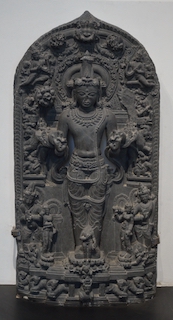
Around 264 BC, the king embraced Buddhism, and the subsequent years of his reign do not cease to surprise us.
Having turned to the Buddha, the Dhamma, and the Sangha,64 Ashoka made a solemn announcement that he was shocked by the human suffering caused by war and vowed that such reprisals would never happen again. He demanded that he be informed of public affairs at all times, without fear of interrupting him from work or rest. Ashoka also began to show concern for the health of his subjects—he planted groves, built infirmaries, and had many new wells dug on his orders. “Ensuring the welfare and happiness in this world and the next” for the people entrusted to Ashoka’s care had become the king’s new mission.
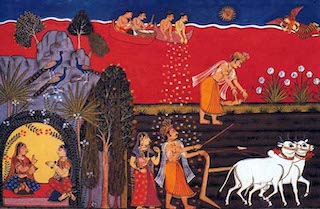
The reign of the Buddhist king is an almost unbelievable occurrence, exceptional in world history. It demonstrates the kind of power that religious and moral principles can have when realized in society.
The achievements of the Buddhist king are without parallel, and it was through no fault of his own that the contradictions found in the Buddha’s doctrine became increasingly manifest as it came in close contact with the world.
India, c.180 BC
Most people are intrigued by yoga because of its exotic nature or because it affords extraordinary feats. Others are attracted by yoga’s methods to maintain and improve their health. Even though there is something of a profaning65 fad in all this, the interest in yoga per se is quite justified. Whereas Buddhist morality was one of the pinnacles of pre-Christian ethics, yoga, on the other hand, combined a thousand years of experience of introspection and psychotechnics unparalleled in antiquity. Having become a school of self-discipline, asceticism, and contemplation, it has indisputably earned its place among the great achievements of humanity.
Indian ancient seals have been found dating back as early as the 3rd millennium BC that depict figures sitting in the yogic “lotus position.” This proves that yoga originated in the pre-Aryan era among the country’s indigenous people.
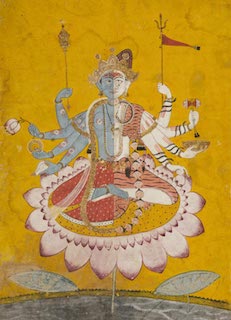
The main principles of yoga were formulated by guru Patanjali, the author of the “Yoga Sutras.”
Reflecting on the Divine, one could not help asking oneself the following question: why is the Deity not accessible to people with the same clarity as the phenomena of the visible world or the inner self-awareness? To this, Brahmanism replies, The Sacred is here, It is nearby, It is in everything, It is in you; but you are unable to contemplate It because you are fully immersed in the false and the perishable. That’s why, from the scriptures or your own deductions, you can only learn about It. A direct perception of God, on the other hand, must be preceded by a preparation that would enable you to pursue the mysteries of the One and Eternal Deity. This is the purpose of yoga.
Yet through the process of meditation and exercise, the person can discover only the self, and not God. Human efforts alone are insufficient to soar up to Heaven. We can explore nature (including our own) ourselves, but the act of knowing God is an encounter, an interaction of two worlds, two wills. In the “Yoga Sutras,” however, everything starts and ends with the human.
India between the 2nd century BC and the change of eras
Hinduism came to the forefront of history almost without a struggle, as if imperceptibly. This was facilitated, firstly, by the Indians’ tendency to bring different gods together, which allowed greater tolerance between their worshipers. The second feature of Hinduism is also associated with its pantheistic worldview. Any religion seeks to find means of overcoming the distance between the human and the Supreme. Pantheism, on the other hand, simply ignores this distance. The conviction that all the worlds are closely interconnected and permeated by the Divine creates a sense of closeness to the Sacred. That’s why the religions that see the world as populated with hosts of spiritual powers have always had a special appeal.
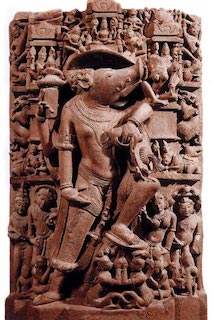
When the archaic gods made their comeback, many pre-Aryan customs were brought back alongside them. Primitive totemism, although in a reinterpreted form, gained a second wind: since God could manifest Itself in everything, then all mountains, plants, and animals should be seen as Its incarnations. Nowhere, with a possible exception of Egypt, did the animal cult hold sway as strongly as in India. The veneration of cows, monkeys, and snakes has remained an inherent characteristic of Hinduism to this day.
Having absorbed diverse rites, beliefs, and superstitions, Hinduism itself began to resemble an outlandish interweaving of forms and shapes that adorn the facades of Indian temples. Gods and demons, people and animals, all merge into a single amalgamated ornament, which reflects the peculiar worldview of the Universe’s multifaceted existence. Myths about avatars,66 enchanting legends about Rama and Sita, stories of the amorous adventures of the shepherd boy Krishna—all these became effective channels of Hinduism, which gave all classes, occupations, and ages their due. This comprehensive religion attracted everyone: hermits and warriors, farmers and townsfolk. It embraced centuries-old ceremonies, signs, and customs. Hinduism has become the faith of the people, both nourishing and being inextricably fused with its rich culture. All this ensured Hinduism’s victory over the followers of Buddha.
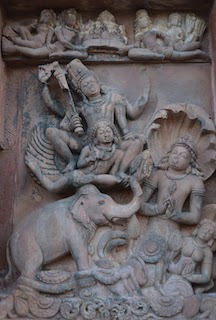
Such was the spiritual situation on the banks of the Ganges when the first preachers of the Gospel appeared here. But whereas the Hellenistic world was to the apostles their own, India remained alien and obscure to them. That’s why the success of their mission was very limited. Only many centuries later, Christians would learn to appreciate the spiritual wisdom of the East and be able to engage the locals using their own vernacular.
West and East, 4th–3rd centuries BC
The civilization of the Hellenistic period, more than any other period of antiquity, comes closest to resembling the 19th and 20th centuries.
The first shock to the Greeks came with their “discovery of the world.” During the campaigns of Alexander the Great, they encountered many nations with refined ancient cultures. The soldiers, followed by the merchants and colonists, were faced with new and befuddling encounters at every turn. Having passed the deserts and snowy ridges of Asia, they found themselves in cities with peculiar architecture, bewildered by the sounds of unknown languages, strange beliefs and customs. Incomprehensible laws, outlandish idols, altars of fire-worshipers, Indian ascetics, and bizarre rituals—human sacrifices on one hand and the prohibition to sacrifice even animals on the other—in short, there was plenty to be confused about.
Earlier, the philosophers had already undermined the public’s belief in the inviolability of the foundations of the state. The destructive ideas of the sophists, the projects of Plato, and the studies by Aristotle convinced the Greeks that the civil order was something conditional, at the mercy of the will of people. The political life of the Polis was losing its traditional points of support; it was becoming increasingly difficult for the people to bear the burden of freedom.
This state of affairs was exploited by the Diadochi, the military commanders and successors of Alexander, who followed the contagious example set by the Macedonian conqueror. The image of a young man who, having conquered half the world, declared himself a god stood before them as the ultimate fulfilment of their own ambitious dreams.

Gone were the days of small kingdoms or republics, where all full citizens could assemble at the main square to decide their own affairs. The federation, a free alliance of the countries, also did not succeed. A multinational empire—this tomb of freedom—required strong power by its very nature. The fragility of the connections to its constituent parts, kept together only by the force of arms, would constantly manifest itself. Therefore, the empire’s government would have to maintain its repressive apparatus on the ready and expand its bureaucracy.
Alexander’s bold dream of intermingling the entire population in his empire, turning it into a single nation ruled by a king-god, did not materialize. However, from now on, the Hellenes and the “barbarians” alike found themselves equally yoked as royal subjects. This situation, which hurt the pride of the Greeks, was compensated by the fact that the Hellenistic culture became the leading one in Asia and North Africa. Its influential canons, crystallized out over the centuries, beginning with the Cretan-Mycenaean period to the times of Pericles and Aristotle, won people over with their remarkable monolithic character and completeness.
The eastward flow of Greek migrants, which had started under Alexander the Great, continued for another century after his death. Patronized by kings, the colonists from Athens, the Aegean Islands, and Ionia moved further and deeper into Asia and Africa. The common vernacular of the Greeks (koine) started playing the role of a global language.67 It allowed the Greeks to feel at least partially at home wherever they went: be it on the banks of the Amu Darya or at the borders of India.
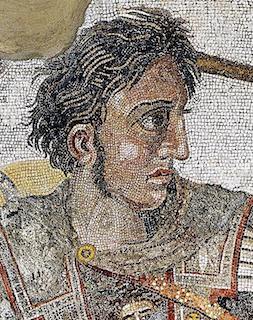
The world was gradually becoming Hellenistic. At the same time, Hellenism itself was changing: the simplicity and severity that had been valued by previous generations were being replaced by the desire for comfort, sensuality, pampering, and the love of luxury. A craving for the exquisite, the nerve-stimulating, and the erotic became a distinguishable trend in literature and art. Many writers of that time point to signs of a widespread moral decline.
A departure from religion in a developed society is always accompanied by rampant superstitions. Charmers, healers, interpreters of dreams, and magi would firmly and permanently establish themselves in cities. Thinking people turned for answers to philosophers whose influence grew more than ever. For the first time, philosophy became popular among all walks of life. Philosophers were preoccupied with the plight of an individual rather than the destinies of the Universe and humanity. Among the Greek thinkers of that time, we see primarily moralists and life coaches. This makes them similar to the sages of India and China, who preached in the same era.
Greek philosophy became not so much a science for the curious, but a panacea that promised salvation and inner peace to an individual. The four schools of the Hellenistic period were Skepticism, Epicureanism, Cynicism, and Stoicism, all of which became widespread among the masses.
Athens and Elis, 3rd century BC
Epicurus (341–271 BC), son of a poor Athenian settler, spent his childhood on the island of Samos, the birthplace of Pythagoras. His mother was an exorcist and a soothsayer who earned her living by her art. As a child, Epicurus was forced to accompany her whenever she went fighting the demons, and the horror of the constant proximity of something sinister affected the boy: he developed a dislike for his native religion which he associated with his mother’s craft.
The expulsion of the emigrants from Athens forced Epicurus in 322 BC to move to Asia Minor. There, he wandered for several years, sometimes in extreme poverty, studying philosophy and giving lectures. Gradually, he developed his own belief system. The core of Epicureanism was not in cosmology but in a new attitude towards life.
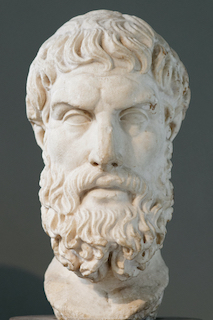
At thirty-two, Epicurus began to preach his doctrine and set it forth in writing. He returned to Athens in the summer of 306 BC, where he quickly found students who later became his loyal and loving friends. Invariably calm and enlightened, he made them as if members of one family. Following the example of the hearers of Plato and Aristotle, they acquired for Epicurus a piece of land near the Dipylon Gate. There, in a shady garden, all those who wished to take part in the dialogues of the sage came together. The philosopher would treat them with bread and spring water and would teach them how to find joy in things most simple and essential.
What was the topic of conversations held among the myrtle and flowers of the Epicurus’ Garden?
To begin with, the philosopher always rejected any accusations against him in impiety or atheism, despite the fact that he viewed the Universe to be a conglomeration of atoms. “Truly there are gods,” he declared, “and knowledge of them is evident; but they are not such as the multitude believe.”[107]
Epicurus denied the existence of a purely spiritual essence and considered even the gods to be of material nature.
Their being was pictured by him to be the pinnacle of the world’s perfection, and that’s why he viewed them to be free from any onerous burden like ruling the world. The realm of people and the realm of gods, according to Epicurus, were practically two uncoupled domains. Therefore, this should eliminate any fear of the divine. And the fear of Fate was just as meaningless.
People must throw the thought of death out of their heads. “Death is nothing to us,” Epicurus argued, “for good and evil imply awareness, and death is the privation of all awareness.” Death does not concern either the living or the dead, “seeing that, when we are, death is not come, and, when death is come, we are not.”[107]
Having thus done away with “the most awful of evils,” Epicurus was confident that he had found the secret to a happy life. Vanity, ambition, greed, and lewdness—all of these, according to the philosopher, were diseases that wore people down, depriving them of their inner balance. “It is not great sums of money nor vast possessions nor exalted occupations nor offices of authority which produce happiness and blessedness, but rather freedom from pain and calmness and a disposition of the soul that sets its limitations in accordance with nature.”[108]
Preaching abstinence, Epicurus believed that moral behavior was the norm for people and that the human nature itself was predisposed towards virtue. He overlooked the tragic internal conflicts of human character that Sophocles and Euripides portrayed with such poignancy.
Epicurus denied that there could be anything higher than humanity, thus demanding that people should contend with the world and with themselves. The biblical Job rebelled against evil and demanded justice, for he knew that the world and the individual had a higher purpose. Epicurus did not believe that the world’s existence had a higher meaning or that there was an ultimate Truth, and, instead, he meekly accepted life for what it was.
Skepticism, similar to Epicureanism, offered its own direct path to an unassailable inner peace.
Pyrrho (365–275 BC) from the Peloponnesian city of Elis is considered to be a patriarch of the skeptics. Like Epicurus, he sought the secret of happiness, viewing it as freedom from the shackles of the world.
Recognizing that feelings did not provide a true picture of existence and that the mind was unable to furnish indisputable evidence, skeptics elevated doubt to a self-sufficient principle completely denying the possibility for any theoretical statement to have an objective value. They believed that we are doomed to live by “opinions” alone, that there could be no rational criterion found that could serve as a sufficiently solid foundation for a worldview. This was an indisputable contribution in the history of human thought made by the Pyrrhonists.
The practical meaning of philosophical skepticism was seen in abstaining from judgments, in forbearance, and in dispassion. In this regard, Pyrrho came to share Epicurus’ position, and Greek thought once again intersected with Buddhist teaching. The path of Pyrrho, however, was leading to a dead end, unable to offer a way out or solutions to life’s fundamental problems that humanity yearned for.
Athens and Corinth, 5th–3rd centuries BC
It is generally believed that crowds of ragged youth who roam the roads and streets of big cities have appeared only in our era jaded with civilization. However, the ancient world also knew its “hippies”; they were similar to the modern ones in many ways, but, unlike the latter, they professed a clear and developed philosophy of minimalism.
Such outbursts of disgust for civilization have accompanied it for many centuries, from Lao Tzu to Rousseau and Tolstoy. This is not a coincidence: it is closely connected to the contradictions inherent to civilization as such.
The most serious attempt to “return to nature” proceeds from the idea that people should seek guidance from something higher than themselves. The “natural Order” reflecting the Divine existence is often seen as such a basis. “Everything is good as it comes from the hands of the Author of Nature; but everything degenerates in the hands of man,”[10] said Rousseau, speaking out against the conventionalities and artificialness of civilized life. In Greece, the cynics became the protagonists of a similar protest. The theoretical foundations of their teachings were rather weak; cynicism was not so much a theory but rather a mode of being. And in the era when people were losing ground, this way of life—provocative and simultaneously accessible to both the poor and the rich—could aid in personal self-fulfillment.
Diogenes of Sinope (404–323 BC) is the best known among the cynics, even notoriously so. His desire to live simply assumed grotesque forms. An educated man, a writer, and a moralist, he began to walk half-naked through the streets, spend nights in a large jug for grain (“the barrel of Diogenes”), lap up water like a dog, and relieve himself in public, claiming that: “natural cannot be shameful.” He even tried to consume raw meat.
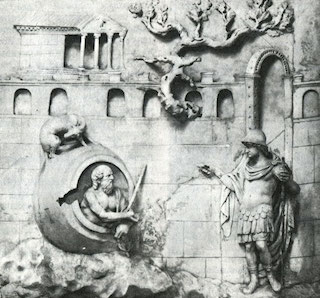
One thing bothered him: there were few people who wished to follow his example. He walked the streets with a lantern in broad daylight, declaring that he was looking in vain for at least one real human.
Cynicism became very popular in the 3rd century BC. And that’s when this teaching also began to deteriorate. Cynics gradually turned into merely “being cynical” in the modern sense of the word. They advocated for animal-like selfishness and taught others to endure the death of loved ones with indifference. The ideal of being industrious had been replaced by an excuse for parasitism and asceticism—by one’s ability to live at the expense of others.
Civilization has the potential for great darkness—but is it not the fate of everything created by humanity? The vices of civilization are our vices. At the same time, we cannot fail to recognize that in civilization people can realize their creative potential inherent to them. Cynics, as the saying goes, threw the baby out with the bath water. They transferred their negative disposition towards city life to culture in general, preferring a semi-animal lifestyle, and this was a serious transgression against spirit and culture.
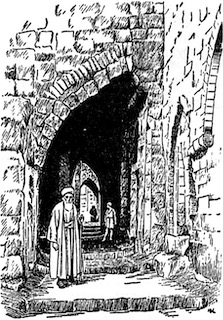
Still, cynicism did not go unnoticed in the history of human thought. Having purged it the extreme deformities from it, the Stoics assimilated several of its principles into the core of their own worldview, which reached its prime during the Hellenistic period.
Athens, 315–200 BC
The moral dilemma for the Stoics was surprisingly simple. They failed to appreciate the drama of the human will, which, when confused, can lead to paralysis of the mind. The words by the apostle Paul, “I do the very thing that I hate,”[109] would make no sense to them, for they believed that the mind could only will that which was good. Indeed, they unconditionally trusted in the power of the mind.
Stoicism has become a sort of escape from the world. A fully dedicated Stoic is free from attachments, like a yogi or a Buddhist monk. He has no family, no desire for glory, no drive for gratification. He views pleasure as foolishness. He is stern, sober, never surprised by anything nor afraid of anything. He is indifferent to all the vicissitudes of life. He says to others, “It is your good fortune not to need any good fortune.”[110]
Stoicism was not able to create a new kind of religion, and, in fact, it never even aspired to do so. Whereas religion engages deep questions of life, stoicism remained only a form of “ideology” for most of its adherents.
Jerusalem, 420–400 BC
The books of the Bible that were written between 400 and 200 BC capture the intensity of spiritual life of that period: disputes, searchings, and new religious ideas. The Proverbs, Job, the apocalyptic writings, and Ecclesiastes are like the peaks of an underwater ridge, the foot of which remains hidden in the deep sea. They also give us a glimpse into the life of Israel at the time.
During that period, Israel’s sages were quietly carrying out their tasks, collecting ancient parables, writing psalms and poems, and composing anthologies. Their most important task was not to refute someone but to share their own understanding of human life and its ways. Thus was born the Book of Proverbs of Solomon.
One of the modern authors remarked that transitioning from the books of the prophets to the Book of Proverbs feels like descending from heaven down to earth. And in fact, this book largely contains thoughts about family life and parenting, about the occupations of city dwellers and farmers, about friendship and integrity, poverty and wealth, hard work and idleness.
Yet there is much more than meets the eye hidden behind this book’s maxims for everyday life. The case of Proverbs vividly illustrates how Divine revelation can gradually penetrate the depths of human mind without violating its natural order and ultimately lead the person to the knowledge of the Creator’s will.
While the Greeks regarded wisdom as a virtue, it is the virtue that is praised as a true wisdom in the Book of Proverbs because the wise is not someone who possesses the knowledge about the ways of the world (which pales in comparison to the actual world), but those whose lives are aligned with God’s precepts. In contrast, violating God’s will is akin to insanity or suicide.
At the same time, the sage of the Book of Proverbs is in no way inclined to view good as something easy or “natural.” He knows human nature and its predisposition to evil all too well, and that obeying the voice of conscience and reason does not come naturally to humans.
Imbued with a biblical realism, the sage does not look for the source of morality in humans, but looks for the moral pivot higher, in the metaphysical realm. People choose between good and evil that they encounter in themselves, and they must follow good as the highest principle established by the Creator. Thus, true wisdom is indelible from faith in the Creator and one’s intention to keep the commandments; as an ultimate fulfillment of God’s commandments, it counters human sin and frailty.
The next book in the biblical wisdom series bears the name of Job, which broaches the topic of suffering. From its very beginning, Israel used to turn to the Existent One as a source of consolation during the times of affliction and distress. Now, once again, Israel would lift up its voice to converse with its Maker about human suffering. We find this striking dialogue in Job, the most tragic and heroic book of the Bible.
Judea, c.400 BC
The Book of Job, remarkable in its depth of thought and poetic beauty, has long attracted theologians and philosophers, artists and poets. Lomonosov versified it, Goethe borrowed its plot for the prologue of his Faust, Pushkin used to say that this book contained “the whole of human life”; he specifically studied Hebrew in order to translate Job.
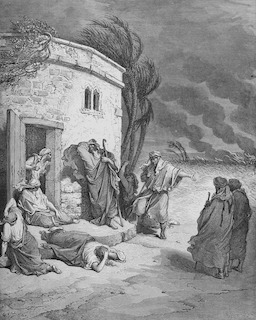
The great Greek tragedians, contemporaries of the author of the Book of Job, most often sought to answer this question in terms of ancestral retribution or some secret, even if unconscious, sin (as was the case with Oedipus). The Indians made references to reincarnation and karma.68 There is nothing of that sort in the Book of Job. It rejects any notion of hereditary guilt, and Yahweh Himself acknowledges the protagonist to be “a blameless and upright man, one who fears God and turns away from evil” (Job 1:8). God appears to take pride in his faithfulness, referring to him as “His servant” when pointing out Job to Satan. Thus, the problem of tragic fate of the righteous was posed in an extremely clear and unequivocal form.
Job is not an anointed one, nor a prophet, nor a martyr who took the sins of people upon himself; he is just a regular man, one of many. Therefore, all attempts to see him as an archetype of Christ are really groundless. The only thing that sets Job apart is his uprightness. Should not this quality, according to conventional wisdom, have shielded him from all evils? Instead, he, a righteous and innocent man, was subjected to the most severe trials. Does this mean that we can never expect justice? Who is He, then, who presides over the ways of the world, and what place has He appointed for those on earth? Job, as it were, speaks on behalf of Abel and all the victims who have followed after him.
It is difficult to appreciate the full depth of Job’s despair if one is not familiar with that era’s Jewish understanding of human beings. The human in the Bible is not some “ensnared spirit,” but a holistic living being, a unity of spirit and flesh.
When the bond of spirit and flesh is destroyed, the human being, according to the Jews, effectively ceases to exist. Egyptian priests, Greek philosophers, and followers of Hinduism had long been inspired by the belief that the existence of a person did not end with his or her last breath. Although they understood the afterlife in different ways, a vast spiritual expanse unfolded before those who recognized their immortality.
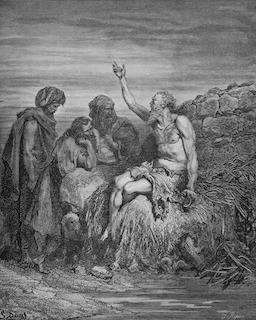
For a long time, this perspective was missing in the Old Testament. Only the earthly world was illuminated by the light of faith for the Jew. To him, Yahweh alone possessed true life. Everything else received from Him but a temporary existence. Death returned flesh back to earth, while carrying the soul to the realm of shadows, the place where the light of God did not penetrate.
This lack of faith in immortality led to a sharper realization of the value of life and all things earthly. If people wanted to experience the fullness of their existence in the time allotted to them, they had to do good and shun evil. Here, while they were still alive, they could reap the fruits of their deeds. These rigid enclosures were one of Israel’s greatest spiritual trials, but, at the same time, they protected the people from dreamlike spiritualism. In a similar manner, the gardener sometimes encloses the plant from all sides in order to fortify it.
Does not the weakening of the sense of immortality have, perhaps, the same providential69 purpose in our days? Indeed, faith in an eternal world was too often abused to the detriment of moral requirements of religion. Characteristically, the Gospels speak very little of the afterlife even though it is always implied. This means that the idea of eternity should never displace people’s considerations for the moral tasks of this temporary life.
Job does not concern himself with past events from Sacred history; nor does he want to hear about future generations. He questions God about himself. Lying flat in the dust, this grief-stricken man is, in fact, standing tall. It would have been easier for Job had he been actually guilty. But he knows his own innocence, and that makes it even worse. After all, he always believed that God could do no such thing to him. And now that it has happened, his entire world comes crumbling down. He is alone—absolutely by himself—in the grips of pain that devours him.
The Book of Job already contains the entire “Karamazov” revolt against God and the world; it also contains a complete set of existential70 human problems—frailty, insignificance, oppression by fear and uncertainty. For the human race, the world is full of horrors; it is a nightmare from which it is impossible to awake.
In his complaints and indictments, Job comes to the very edge of the cliff; he is about to go off at any moment with nothing left other than his bitter rebellion.
The most incomprehensible thing is that even though he brought God to trial, Job still remains a man of faith.
From the bottom of his abyss, Job accuses God of cruelty while secretly hoping that he himself is mistaken.
Job’s trust is at the very core of his relationship towards God. Both his reason and his feelings tell him that all his pleas are in vain, but he never ceases his crying out. The silence of the Heavens cannot shake this righteous man.
And then the voice of the Lord came from an unexpected storm. Having appeared to Job, God does not pull the cover off the mystery. Does this mean that the answers do not exist in principle? No, only that all the explanations would be inadequate in this case.
Job could have been told about human immortality, future recompense in eternity, and the resurrection. Yet something else tormented him, namely, why does God allow evil to exist in the world?
We find only a subtle hint of an answer in Yahweh’s address to Job. It speaks only of what has already been revealed to the author, which is just one thing: human thought is unable to contain all the plans of Providence.
All the paths of the Creator are aimed at the ultimate good of the world no matter how mysterious they may appear to people.
In essence, Yahweh’s entire monologue comes down to that point. Yet it is Job’s reaction and response to the Theophany that provide the real key for the understanding of the book. He “places his hand over his mouth” (Job 40:4) bowing down in humility and reverence. Why?
All his questions have disappeared by themselves in the presence of the Lord. Even such a great poet as the author of the Book of Job was unable to express this mystery. His creation is beautiful precisely due to this humility and the absence of a satisfying explanation.
The Book of Job does not negate God’s justice; it only shows that not everything is explainable through restitution. Hence, there lies the great significance of this book, which emerged during the time in the history of the Old Testament when the old theology was undergoing a tragic crisis.
Judea, c.350 BC
The Book of Job bears witness of the intellectual ferment and heated debate that concerned Israel when its thinkers tried to find solutions to the burning problems without referring directly to the Law and Sacred history. Opposing points of view clashed in a tense spiritual struggle. Yet even against this backdrop of unhampered discussion, Ecclesiastes (or the Preacher) might still seem like a provocative book.
As if gripped by some cruel pleasure, the poet peers deeply into the scene of perpetual cycles. It seems that he has forgotten everything that the prophets of Israel proclaimed before him. It is a worldview of someone bereft of the light of Divine revelation. Life in this world becomes devoid of meaning and purpose.
The main thing that distinguishes the ethics of Ecclesiastes from that of the prophets is the weakening of the bond between religion and morality. The prophets drew their strength from their faith to preach the effectual good. Humaneness and faith were inseparable for them. This connection is no longer distinctly felt in this book.
Ecclesiastes does not have the inspiration afforded by faith, and thus he can only count on ordinary pleasures of life.
And this is precisely where the Preacher suffered his most brutal defeat. Everything that was attractive and enticing to him turned out to be “meaningless.”
He built himself beautiful mansions, planted vineyards, orchards, and flower gardens with playing fountains. He acquired slaves and concubines, surrounded himself with songsters and songstresses. His heart was gladdened by the riches day and night.
This gloomy refrain about meaninglessness is the leitmotif that runs through the entire book.
The view of the Jews that Yahweh is everything and man is nothing took on an extremely cold and detached form for Ecclesiastes. God comes across as being indifferent to the world, which He has left to meaningless goings around on its own in accordance with the prescribed rules. It is not even known whether He wishes well for His creation. And whenever people may hope for there to be some kind of moral world order, they turn out to be mistaken. There is no real reward for the good, and, indeed, what reward can there possibly be other than “vanity of vanities”?
There is hardly a book in all literature with such an utterly hopeless worldview. Without pathos, calmly, and impartially, the Preacher demolishes all the pillars of life, leaving people with only a miserable semblance of hope. Well-being in this life was viewed as a reward promised by God, but if this central gift turned out to be poisoned, then what is the point of it all?
At first glance, it seems incomprehensible that such a book could become a part of the Bible. It is known that teachers of Judaism had argued extensively before deciding to give it a place next to the writings of the sages, the Prophets, and the Law. But they did it nonetheless.
The Jerusalem philosopher offered people a bitter cup, but it was a medicinal drink. The belief that the highest good was somehow confined to the earthly realm was an obstacle to Israel’s religion. Ecclesiastes smashed down this barrier.
The value of water is truly known in a desert. Similarly, the thirst for eternity only awakens when a person realizes the transient nature of all things earthly. In this lies the great significance of the negative experience of Ecclesiastes.
Judea, 168–166 BC
Then came the moment when this little dispute-torn fortress of the Old Testament had to withstand the most fierce assault it had ever experienced before.
Antiochus IV Epiphanes, the second son of Antiochus the Great, is one of the most aberrant and demonic figures of the Hellenistic period. Both Antiochus’ character and fate were highly unusual.
Following the death of his brother Seleucus IV, who was murdered by the courtiers, Antiochus became the ruler on the Syrian throne of the Seleucids. Rome approved of his candidacy, hoping to make him a willing tool of its own policies. The senators realized later, however, that they had miscalculated.
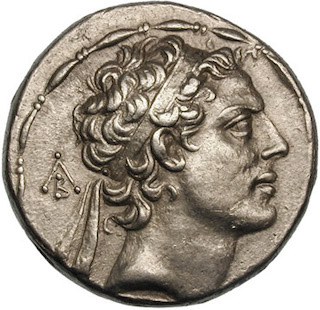
Antiochus IV’s ultimate dream was the total Hellenization of his state. He sought to impose Greek customs and cults that he held dear and to suppress all national centers of resistance.
The king’s plans did not encounter any serious obstacles with the sole exception of the stumbling block of Judea.
In the biblical tradition, Epiphanes became the prototype of the Antichrist. From the Book of Daniel to John’s Revelation, sacred writers would ascribe Antiochus’ traits to the Enemy of God. For the first time in history, a man decided not only to completely eradicate the Jewish religion but also to become the first monarch after Alexander the Great to take his divine title seriously. He viewed the God of Israel as his adversary who had to be overthrown.
In the fall of 168 BC, Antiochus ordered that the daily service in the Jerusalem Temple be ceased, and he dispatched his emissaries to the cities with a decree that all those living in the king’s territories should henceforth be regarded as “one people and should give up their particular customs.” Jews were forbidden to read the Scriptures, keep the Sabbath, circumcise, or even be called Jews. The death penalty awaited anyone found in violation of the decree.
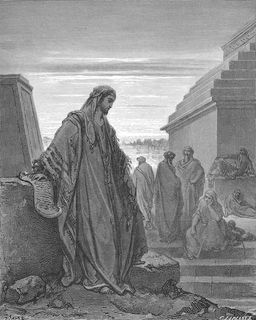
The officials traveled around the country enforcing the government crackdown. The scrolls of the Bible that fell into their hands were either torn or burned.
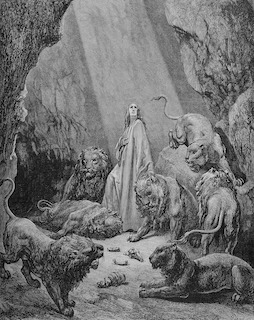
One day, in a secret hideaway where the scribes had hid their Bible scrolls, a new book was discovered. Its arrival was timely. It was read, rewritten, and retold avidly. It is easy to see the reason why this book caused such excitement: it dispelled the darkness and restored trust in the Providence of God who was at work through earthly events.
The book was named after Daniel the sage.
Daniel knows that the nearing of the Kingdom of God will be accompanied by rampant evil and lawlessness in the world that has a tendency to deteriorate because of the destructive forces constantly at work on this planet. Yet he does not forget, even for a minute, that there is another channel running in the opposite direction to that downward stream—an ascending one, whose destination is the Kingdom of God. The prophet speaks of the end of history as a new phase on the paths of mankind. The future is created in a confrontation of these two principles, and it will find its fulfillment in the triumph of the Heavenly City. The purpose of that City is to take the creation to a higher level—the realm of Divine light.
The book of Daniel, born in difficult times, is imbued with an anticipation of the great battle between good and evil. Christ would later repeat its words when describing the dusk of the Old Testament era; its language would become the language of the Jewish and Christian apocalyptic writings.
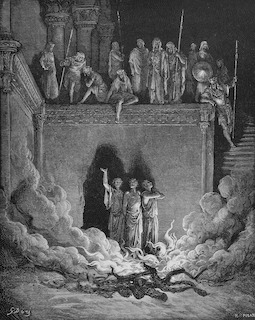
Like living water, Daniel’s words fell on the tormented hearts. The Son of Man was coming, who would lay the foundation of a new world. And one particular prophecy regarding the fate of those who had remained faithful to their final breath especially inspired the people. They had perished, yet their death was but a temporary sleep. Then, on Judgment Day:
At the end of time, the Archangel Michael, the patron of the Old Testament Church, would take up arms against the satanic army and defeat it. The entire Book of Daniel is characterized by a sense of closeness of the invisible forces participating in the universal drama. It was revealed to the prophet that human affairs were decided by the spiritual battle that went on between the forces of light and darkness.
Judea, 160–63 BC
A dignified righteousness (tzedakah) in its traditional form was seen as a spiritual ideal second to none by the high clergy and nobility. Perhaps, that is why they called themselves “Zadokites” or Sadducees.
In practical life, the Sadducees proved themselves to be flexible pragmatists, pursuing selfish goals and prone to compromise. They surrounded themselves with luxury, yet deemed it necessary to keep the general populace in constant check. To this end, the Sadducees upheld the harsh principles of the ancient criminal law.
In their struggle to ensure their position at the court, they would eventually transform into a dominant political party. The Council of the Elders, or the Sanhedrin, consisted mainly of its members. Naturally, the commoners viewed these callous arrogant people with near hostility.
The Pharisees, on the other hand, isolated themselves not only from the ruling elite but also from anyone who, in their opinion, knew little about or poorly observed the Law.
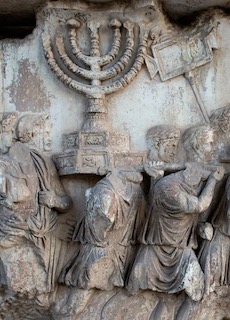
The Pharisees were “esteemed most skillful in the exact explication of their laws”[111] even if their interpretation was of a peculiar kind. Unlike the Sadducees, they did not view Scripture as a dead relic or a strictly fixed code; at least in principle, the Pharisees proceeded from the notion that faith cannot be limited to a book. They maintained that living spiritual continuity, or the ecclesiastical Tradition, played a role no less important than the canonical books.
Of course, the Oral Tradition is more easily clogged by human speculations, by “traditions” with a small ‘t.’ The Pharisees sought to avoid this by maintaining continuity between generations of scribes and developing principles for interpreting the Bible. Yet it was here that the stiffness of their spiritual creativity was manifest. “Traditions of the elders” were canonized and elevated to the same rank of universally binding truth.
Still, the Pharisees did not allow the spirit of piety to disappear from among the people, thereby preventing their degeneration into a secular nation ruled by secular rulers. Thanks to them, the Bible never turned into a fetish but continued to be a genuine book of life.
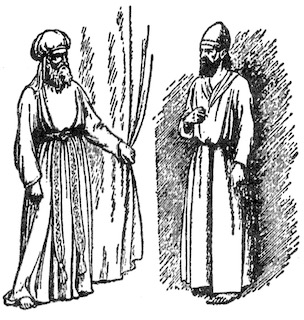
Eventually, synagogues and schools ended up entirely in the hands of the Pharisees. All the best that emerged from the depths of the nation of Israel at the threshold of the New Testament, can be credited to Pharisees.
However, while paying credit to Pharisees, we should not idealize them. Many things in their movement such as casuistry and ritualism played too large a role, clipping the wings of free prophetic inspiration.
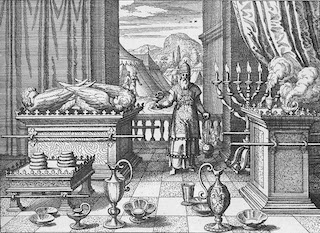
The third direction in Judaism was the Essenes. Believing that those in power and the entire nation had gone astray, they formed a kind of “Church within the Church” while awaiting the swift judgment of God.
This sect hardly fit into the framework of the traditional view of Judaism. A monastic charter, uniforms, joint ownership of property—none of it had been previously seen in the history of Israel.
Ancient historians say that the Essenes owned neither money nor slaves; everyone had to work. Their ideal was strict piety.
The origin and history of this semimonastic order have long remained a mystery. Only in the middle of the 20th century, the discoveries in the desert near the Dead Sea shed new light on the Essene movement. Most historians believe that the leather manuscripts and the ruins of the villages discovered in the Qumran region belonged to the Essene communities.
The study of the Qumran Caves Scrolls led historians to the trail of the leader or even the founder of the sect. His name remains a mystery; in the texts, he appears as the Priest, the Chosen One, the Seeker of the Torah, the Unique Teacher, and most often as the Teacher of Righteousness.
He thought of establishing a community of “the children of light,” believing that when the Supreme Judge of all is revealed, those who “expressed their willingness to join the elect” will be saved.
The first traces of the settlement on the shore of the Dead Sea date back to the 40s and 30s of the 2nd century BC. This means that the Teacher managed to acquire a piece of land in Qumran. He called on all those “faithful to the Law” to come out like Abraham from the midst of sinners in order to prepare themselves for the last days.
The people who settled in Qumran liked to identify themselves simply as “Israel” because they believed that they alone deserved that great name. The Old Covenant had been violated for generations. Here in the wilderness, the Essenes hoped to enter a New Covenant with God, which would be made with the pure Remnant, the poor ones eagerly awaiting the Lord’s Day.
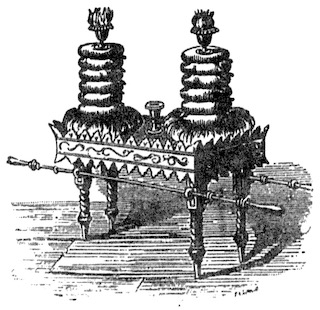
Yet in preparing to enter the Kingdom of God, the Qumran Teacher in the end created an actual cult of exceptionalism. His desire to keep the purity of faith gave rise to a repulsive sectarian pride.
This trend was not the only thing that overshadowed the moral character of the Essenes. Their legal hairsplitting left even the most stubborn formalists among the Pharisees far behind.
At the turn of the 2nd and 1st centuries BC, the Essenes began to settle in cities. The sectarians, who now lived “in the real world,” naturally developed contacts with foreigners. Some Essenes even tried to disseminate their views.
Nevertheless, the departure from the desert by some of the Essenes did not mean they had rejected their principle of exclusion. They continued to treat people of different convictions with condemnation and hostility. They were especially hostile to the Sadducees. Then again, they did not spare the Pharisees, either, calling them “smooth interpreters.”[112]
By this time, Rome had survived the fighting over the Gracchus’ reforms and the dictatorship of Sulla, crushed the Spartacus revolt, and began to launch an open front offensive on the east. In 66 BC, Gnaeus Pompey crushed the military power of the Kingdoms of Pontus and Caucasus, and, two years later, arrived in Syria.
The Jews had already begun to realize that it was impossible to avoid a new foreign rule. The only question they had was which of the contenders for the throne the Roman commander would recognize. One of them, Aristobulus, made a number of tactical mistakes, and Pompey therefore took the side of the other, Hyrcanus. However, Aristobulus did not agree with this decision, and when Jerusalem opened its gate to the Roman, he fortified his troops inside the Temple citadel preparing to withstand the assault.
The blockade lasted three months. Finally, on October 10, 63 BC, the fortress was captured. The Roman soldiers burst into the sanctuary. Even inside the Temple itself, they were met with desperate resistance. Amid the general turmoil, the priests continued to perform religious services.
Aristobulus was taken prisoner and sent to Rome. Following the capture of the Temple, Pompey entered the Holy of Holies. However, having satisfied his curiosity, he did not touch anything, for the Romans were accustomed to being tolerant of foreign cults.
Rome was on its way to becoming the world power. A new chapter in history had begun, and a generation was already born who would become the contemporaries of the events of the Gospels.
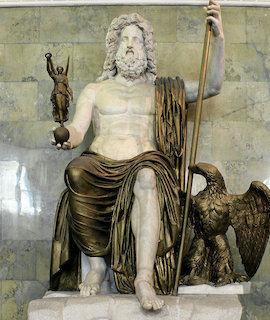
Italy, c.650 BC
The astounding success of the Romans attracted admiration and provoked resentment among contemporaries. Efforts to unravel the secret of Latin fortune were made at different times by Polybius and Augustine, Montesquieu and Hegel. Mussolini wanted to resurrect the former glory of Rome, but life itself proved the futility of his dream: although many elements of the ancient Roman spirit remained, something essential was lost forever.
Who were the architects of Orbis Romanum, the “Roman world”?
It was said in ancient times that this city had a second, secret name that could be obtained by reading the word Roma in the Eastern fashion—from right to left. Then it would sound like Amor or Love. The spirit of Rome is as paradoxical and dualistic as any significant phenomenon of world culture. In point of fact, the Romans, while not possessing a religious genius, were nevertheless reputed to be pious—something they were proud of. Although Rome persecuted the Church for three centuries, it also became one of the world centers of Christianity. Its civilization was even more secular than that of the Greeks, yet the Church Fathers considered Rome a bastion of faith.
The inseparability of civic and religious spirits had a beneficial effect on the moral life of the Romans. Their strong traditional virtues—fidelity, honesty, modesty, courage, respect for elders—surprised people everywhere. The attitude of the Romans towards the law was not purely secular either. In fact, their commitment to order stemmed from their belief in its higher meaning.
Yet the religion itself, which nourished the civil and legal consciousness of Rome, suffered from the stranglehold of Roman law.
Formal duty as the main motivator reigned among the Latins even in the domain of faith both impoverishing and enfettering it. When ministering to the Supreme Being, people only went as far as carrying out their duty. At the same time, their hearts remained largely indifferent. Roman prayers hardly even deserve this name; they were limited to the mechanical pronunciation of formulas and prescribed gesturing. Cicero rightly said that “the whole religion of the Roman people is divided into rites and divination.” Religious life was treated as an integral element of the civil system, and anyone lax about rituals risked being numbered among the enemies of the state.
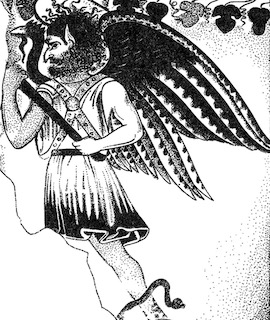
The Latin word ‘religio’ means ‘to bind.’ Religious ceremonies connected people with the gods and each other. Yet this connection was viewed as something formal. It was believed that people fulfilled the terms of their contract with the Higher Powers only by observing all the ceremonies in strictest adherence to every subtlety and technicality. In this, the Roman was no less a stickler than a Jewish legalist. The life of a Roman was entwined in thousands of prohibitions and restrictions enshrined by antiquity. For example, the priest of Jupiter was not supposed to have touched a horse, dough, or beans; he had no right to spend more than three days outside his house nor tie knots on his clothes, and so on.
By and large, we can say without exaggeration that the early Roman religion was all form nearly devoid of content. Their unconscious veneration of the Transcendent had not developed into true faith but remained in its infancy waiting for future times. Neither ritualistic legalism nor blind adherence to tradition, however, could extinguish the desire of the Romans for something more inspiring than their official cult. Eventually, this yearning found its realization in Christianity. But before the Gospel would come to the Romans, they undertook to satisfy their spiritual hunger by turning to the beliefs of the Etruscans and Hellenes, the Asians and the Egyptians.
Italy, 650–204 BC
The Etruscan civilization remains a mystery to this day. The Etruscans emerged in Italy a hundred years prior to the founding of Rome, but no one knew where they had come from. These mentors of the Romans disappeared as a people long before our era having mixed with other Italian tribes. Since then, their smiling statues and painted tombs have remained silent similar to the ruins of Crete; of the nine thousand surviving Etruscan inscriptions most have yet to be decoded.
The frescoes and mosaics in the tombs speak of the underground spirits and demons—the disgusting monsters that inhabited the Etruscan underworld.
The Romans took the “techniques” of augury with the utmost seriousness, which was prompted by their belief that the gods could reveal the future. The Etruscans were known as unsurpassed masters of this art: they were often invited to ascertain the will of the gods.
Strabo, a geographer from Pontus, lists many other customs and rites that Rome inherited from the Etruscans. Yet not one of them went beyond the primitive ceremonies. Consequently, the contact with Etruria could not truly enrich the religion of the Romans.
Rome borrowed some of its purification rituals from the Greeks. By the 4th century BC, the south of Italy was already densely populated by the Hellenistic colonists.
Apollo became the first Olympian to conquer the Romans. One of the reasons for his popularity was the fact that Apollo had long been considered a god who grants purification from defilement. That’s why Tarquin the Elder (616–579 BC) declared himself a devotee of Apollo. It was during his rule that the sacred books, supposedly delivered to the king by the Sibyl, a priestess of the Hellenic god, appeared in Rome.
According to the legend, one of the prophetesses who lived in Eritrea received immortality from Apollo on the condition that she should never again see her native land. After that, the Sibyl settled in Cumae, where she was surrounded with care and respect, and her predictions were heeded as the voice of Apollo himself. Over the years, the Sibyl realized how burdensome eternal life became for her. The Cumans took pity on the prophetess and brought her a handful of Eritrean soil. Glancing at it, the Sibyl fell on the ground and breathed her last. She finally found the peace she wanted.
Along with the Sibyl’s books, the first apocalyptic stream, albeit weak at the time, entered the stable Italian world. Apollo worshippers believed that Apollo would prevail in the struggle between the gods. From the hints of ancient writers, we can conclude that the Sibyl predicted the downfall of the latest ten-century epoch and the advent of a new era.
The Republic was established in Rome in 509 BC. The Etruscan troops, who were trying to return the throne to the king Tarquin the Proud banished by the Romans, had been defeated. The patrician Senate became the permanent governing body.
Even among the Jews, who rarely admired pagan countries, we find a positive assessment of the Roman republican system. Moral rigor and order were acquired at the cost of a rigid regime, which also hampered creativity and talent. The role of sacred autocracy had been replaced by the dictates of civic duty.
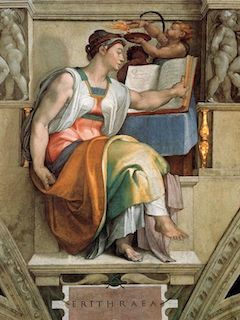
The energy of the nation, constrained by the state machinery, inevitably sought a way out in a foreign expansion. From Rome’s defense, the Republic went on the offensive. It seemed like the Roman people were constantly compelled by an irresistible thirst for conquest to expand their country’s borders.
The Romans entered into alliances with the Carthaginian State back in the 4th century BC. However, following the conquest of Italy, both states were inevitably set on a collision course. The question at stake was who would dominate the seas of the western Mediterranean.
The new adversary was an unusual one. If Rome, as a rule, previously dealt with related peoples, then in Carthage, it met a world deeply alien and repulsive to it.
Carthage subjugated the indigenous Berber tribes of the Numidians and gradually spread its empire throughout the northern coast of Africa.
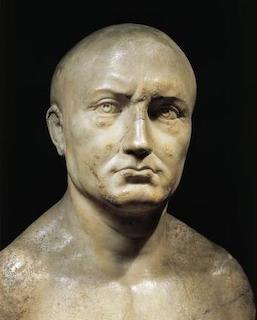
It was truly a stronghold of merchants. Trade routes from all over the world passed through its huge port. Ivory and marble, crockery and fabrics, precious stones and incense, carpets and weapons were all brought here to the border of the Black Continent. The military power of Carthage relied on the army of mercenaries who were recruited from the Sicilians, Greeks, and Berbers.
Rome was much poorer and weaker than Carthage, whose plantations, navy, and customs brought in countless riches. Therefore, for a long time, the Senate preferred to live in peace with Africa. Only when the Romans gained sufficient strength, and direct interests of the two states clashed, did a war become inevitable.
The intense animosity of the Romans towards the Punes (as they used to call the Phoenicians), however, was not only due to political reasons. They hated the very spirit and religion of Carthage.
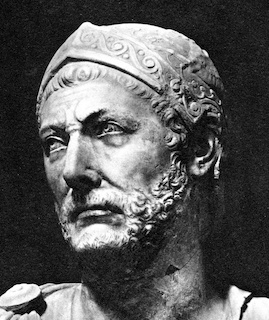
Savage customs, perversions, human sacrifices, and ritual prostitution persisted among the Punes until the Hellenistic period.
It is said that Hannibal threw three thousand of the Imerians on the altar of Baal. The same fate constantly hung over hundreds of young men and women from the best Carthaginian families.
The Romans themselves were far from being soft-hearted, but their disgust at the Carthaginian customs was too great to allow for reconciliation.
The outcome of the struggle between the two colossi was decided once the cohorts of the Roman citizens forced the African mercenaries to retreat.
Africa, Spain, and Syracuse were now in the hands of the Roman consuls. The triumphal parade that welcomed Scipio the Elder, the victor over Hannibal, surpassed anything that the Romans had previously seen. Yet a different kind of victor also emerged in those days: the same man who defeated Carthage was himself captivated by Greek culture and decided to promote its triumph on Latin soil. From now on, the fate of austere Rome would be firmly connected with the Hellenic genius. The end of the Punic Wars was marked by the beginning of the Greco-Roman era, which brought the victors many new worries and surprises.
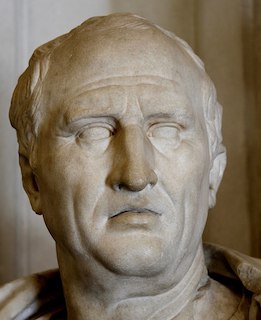
Italy, 204–120 BC
Roman history was no longer the history of only Italy. The Celts, Spaniards, Berbers, Syrians, and Greeks came under the auspices of the Capitol. The victors preserved the traditions of the conquered peoples. Like Alexander, they felt that their power needed some additional unifying threads besides sheer violence. They themselves had little to offer to the world. The only thing that attracted everyone were the rights associated with Roman citizenship, but it was the period of time in which the inhabitants of the provinces were granted citizenship rarely and reluctantly.
As before, the Romans continued to believe that their strict observance of rituals ensured the triumph of the empire over their rivals.
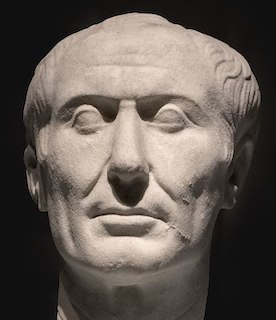
Meanwhile, the traditional religion did not satisfy the Greeks themselves. The Hellene began to look with hope to the mysterious cults of the Orient rather than Olympus.
It was not long before the Latins with all their seriousness in cult affairs had to see for themselves that the Greeks took their own religion rather frivolously. The secular spirit stripped Greek myths of their mystical halo. And even though the philosophers tried to salvage Greek mythology, they themselves fomented a considerable temptation, and gradually Roman society began to be infected by skepticism.
The growth of freethought was accompanied by a weakening of moral principles. Subsequent changes in lifestyle greatly influenced the character of the Romans. Gone were the days when the ambassadors of King Pyrrhus could catch sight of a Roman military commander cooking turnip stew out in the countryside. Visits to Carthage, Corinth, and Pergamum and exposure to the foreign opulence made the people not want to live like their ancestors; they came to love comfort, exquisite cuisine, and entertainment. Sound peasant morality and the Spartan way of life of the previous generations had been forgotten.
Wars also reduced the cost of slaves. There were now many of them, not only in mines and on construction sites but also in the fields. Work began to seem like something contemptible befitting only slaves. Patrician youth indulged in idleness, reveling, sought to outperform one another in all kinds of vices, something that Rome had previously viewed with disgust. The much vaunted Roman integrity had disappeared: politicians became treacherous, soldiers were more concerned with looting, and merchants would do anything for profit.
Circus performances and gladiator fights, which the government leveraged in hopes to neutralize the aggressiveness of the masses, turned into a bloody obsession for the Romans. Naturally, it was not always possible to placate the rootless, and public gatherings would often erupt in fist and knife fights.
The years of coups, civil wars, and dictatorship were approaching. As any other empire, Rome had to pay a heavy price for its control over the subject peoples.
Italy, 120–80 BC
Educated Romans, rather than just blindly copying other people’s beliefs, sought to create their own worldview on the basis of a fusion of Hellenism and Latinism. In this, they were aided by the Stoics, who at the time were everywhere vigorously promoting their teachings. Wise men, dressed in shabby cloaks, advocates of moderation and temperance—they could be found in the homes of consuls and taverns, bazaars and schools.
The first preacher of Stoicism in Rome was a Greek by the name of Panaetius (185–110 BC), a native of the island of Rhodes.
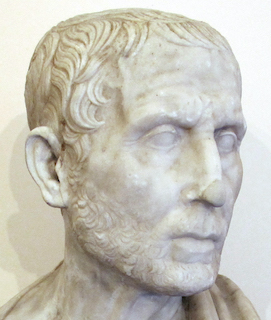
Panaetius taught that God and the Universe are one and co-eternal. The Logos, the internal law of the Universe, permeates all things including humans. Life is harmonious if it corresponds to the cosmic order, the Logos. Upon death, all the elements of a person return to the cycle of nature, and his image is preserved only in the memory of the descendants.
The happiness of the sage is comprised of balance; he must value the gifts of nature but also maintain Spartan equanimity at the time of trials.
Similar to other Greek philosophers, Panaetius was dismissive of popular beliefs, while his friend the historian Polybius openly declared that religion had been created to keep the crowd in line.
However, the Romans could not have dismissed the entire problem as easily. Instead, they wanted a clear and comprehensive solution.
Therefore, when the disciple of Panaetius, Posidonius of Apamea (135–51 BC), undertook the reform of the Stoa71 bringing it once again closer to being a religion, he ended up with more followers than any other thinker of that time.
Residents of Rhodes, where the philosopher settled, regarded him highly. The fame of Posidonius had spread throughout all Hellenistic cities. Visitors from all lands traveled to the island to hear his lectures. Among them were well-known politicians such as Pompey and Cicero. Many were particularly impressed that such a learned person defended the ideas of God and the immortality of the soul.
Posidonius became the founder of religious Stoicism.
The source of Posidonius’ ideas was his intuition for a higher spiritual Reality or Existence, one which is found outside the appearance of temporary things. But this Existence, unlike the Buddhist Nirvana, is also connected with matter. Following Plato, Posidonius considered the Universe to be an integral organism, “living, rational, animate and intelligent.”[113] It is completely permeated with the “life force” of the Divine Being, or the “fiery pneuma” of the World Soul. Just as God is the inner essence of the Cosmos, so the human spirit is a messenger of the Logos, a guest from unearthly realms of nature. The human spirit is akin to the universal Spirit and is only temporarily linked with the body. Humans can know both Existence and the Universe precisely because they belong to both worlds.
For Posidonius, the cosmic hierarchy of beings is subject to the law of cycles, and, in this, the philosopher remained a true son of paganism. In an effort to combine science and religion, Posidonius also preserved in his system the ancient myth of an endless cyclical universe.
According to the philosopher, the dynamics of the Universe’s cycles is wholly dependent on the Divine Being, who is simultaneously its Destiny or Fate. “All things happen by fate,” said Posidonius, “[which] is defined as an endless chain of causation, whereby things are, or as the reason or formula by which the world goes on.”[114] Fate operates with the principle of cosmic sympathy, that is, the mutual interconnectedness of individual parts of the Cosmos. Since it encompasses every level of being, the movement of celestial bodies should also influence the events taking place on earth. Only one step remained from here to the recognition of astrology, and Posidonius made this step. By his doctrine of “sympathy,” he justified demonology, witchcraft, and the art of divination.
When the commander in chief Sulla was dubbed “Happy,” people gave a special meaning to this nickname. They viewed success as a special gift of the stars and Fate. Sulla himself, who unabashedly robbed temples, believed in his star and never parted with his talismans. His rival Marius, too, took his Syrian soothsayer with him wherever he went. People no longer trusted augurs, but they believed in magic and horoscopes.
According to the Sibyl, the period of ten centuries that had begun with the Trojan War expired in 83 BC. For the Romans, this meant an end to the human race—the final act of the drama preordained by the eternal stars. The night was drawing near.
Those who had previously put their hopes in the government now gave up their hope, losing all interest in life. Suicides became more frequent. To the followers of Epicurus and the stoic Panaetius, death promised the peace of oblivion. Cicero openly expressed similar views.
Whereas Romans had previously centered life’s meaning around civic duty, it no longer held the same significance to them. The individual, as it were, finally came to the forefront, increasingly reflecting on one’s own fate and its significance: “Where did I come from? Why do I live? Where am I going? What awaits me after death?”
The new, individual character of faith required new forms of fellowship. Fraternities, alliances, secret societies that connected people closer than the state or their ethnicity began to multiply everywhere.
One of the common characteristics of the emerging alliances throughout the Empire was veneration of the Oriental deities.
The people of the West coalesced around the gods revered in Syria and Egypt, Phrygia and Persia, giving them new names.
Mithras-worshippers would gather for prayer in the dungeons and cave temples, whose walls were decorated with zodiac signs and cosmic imagery. The culmination of their worship was the moment when the veil was pulled back and the “brethren” contemplated the statue of Mithras, typically depicted slaying a giant bull.
Roman soldiers willingly resorted to the patronage of this powerful deity, and, upon their return from the military campaigns, they took the seeds of Mithraism to all corners of the Empire.
The remains of the cave-Mithraea have been preserved to this day in Africa, Britain, on the Danube and the Rhine. They were built according to the same layout, which points to the uniformity of the rites and the doctrine among the brotherhoods scattered all over different regions.
140–50 BC
Jewish emigrants, both war prisoners and freedmen, began to settle in Italy starting from the 3rd century BC. Observing these people, the Romans noted their puritan morals—something that the Romans valued themselves and regretted the loss of. The rejection by the Jews of corruption and perversions that had been brought to Rome from Greek cities was striking. Jewish Old Testament communities in their organization resembled other religious brotherhoods, which had gained popularity among the Romans. There were, however, no secret ceremonies involved, and anyone could hear inspirational prayers and hymns in the synagogues. Visitors could strike a conversation there and get acquainted with the teaching that gave answers to life’s principal questions. The prayer houses (synagogues) differed from temples in that their doors were open to anyone.
Many Romans grew annoyed that this subjugated people stayed independent without losing their dignity. Some reproached the Jews for their wealth, others for penury; some accused them of “Sabbath laziness,” others of excessive dynamism. Thus, anti-Semitism arose in ancient times long before Christianity (contrary to the popular belief). The persecution of the Jews began when the religion of the Covenant scored its first victories in the pagan environment. In other words, the appearance of “proselytes” was one of the root causes of ancient anti-Semitism.
The term “proselytes” is the Greek translation of the word Gerim or “aliens.” In the Hellenistic period, this was the name of all non-Hebrews who professed Judaism. The Jewish religion demanded its proselytes to completely break with their old consciousness, abandon sacrifices to the Olympians, and cease to participate in state religious ceremonies. They were required to unconditionally surrender themselves to the Existent One—the Creator of heaven and earth that the Bible taught about. The most that a person who had accepted Judaism could afford in keeping with the proper tolerance was to congratulate his pagan neighbors on the day of their religious holiday. Otherwise, there could be no compromise between him and his past.
It was at this point that the primary tension arose, which subsequently led to a clash between Rome and Christians.
The Jewish mission in Rome was accompanied by as intense a struggle as Hellenization. In both cases, however, neither hostility nor government measures could create an impenetrable barrier: the number of proselytes throughout the Empire kept increasing.
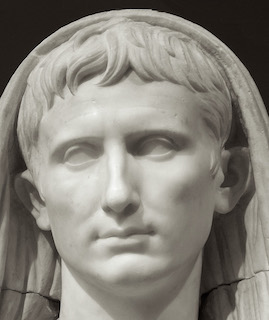
Philo wrote, “Our laws… lead after them and influence all nations, barbarians, and Greeks, the inhabitants of continents and islands, the eastern nations and the western, Europe and Asia; in short, the whole habitable world from one extremity to the other.”[115] An especially large number of converts could be found in Antioch and Damascus; yet, it was Alexandria that became the focal center of Jewish preaching.
Proselytism became one of the most remarkable phenomena of Roman life. The neophytes were introduced at some level to the Jewish faith despite the unfavorable position of the Jews. Indeed, the people of the Bible had just lost their independence following a hundred years of their self-government and had to endure oppression in the diaspora (scattering) time and again. A potential inquirer could have questioned their religion using the logic similar to Prince Vladimir’s a thousand years later: if the Jews were in such an unenviable position, does it mean that their religion was false or that perhaps God had turned away from them? And yet, contrary to such considerations, the Old Testament faith was proving to be so compelling that proselytism continued to spread.
Roman Empire, 66–7 BC
Humanity languished before the advent of the Redeemer. But while some were looking in His person for a messenger of another world, others were willing to accept a salvation from an earthly ruler and god.
Such figures as Caesar, Augustus, or Napoleon always become objects of idolatry, which takes the form of mass psychosis. People were ready to sacrifice their lives for them and went to die with their names on their lips. The secret of the leaders’ hypnotic influence lies not only in their ability to control the crowd, in their unbounded energy and their charm. They also conquered by the fact that they seemed to embody the power of the elemental pre-human world. They drove to their goal, sacrificing entire nations, and succeeded. This elicited awe mixed with adoration, and gave rise to a demonic idolizing of absolutism. Here lies the source of the cult of authoritarian leaders throughout history. The masses were only a means to them, and it was these very masses, drawn by their primitive instinct, who followed them like an obedient herd.
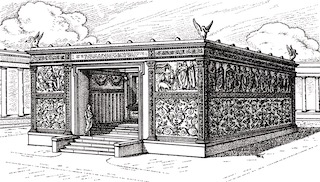
In 29 BC, the first temples dedicated to the genius of the living Emperor appeared. As always, Augustus acted with caution pretending to yield to the will of the people. At first, altars to him were erected not in Rome, but only in the Eastern provinces, where people had long been prone to idolizing monarchs. A little time passed, and the Egyptian priests obligingly substantiated the theory of Caesar’s divinity. Even in Judea, Herod built two temples to the god Augustus.
Yet even then, not everyone fell victim to this mass madness: there are subtle hints indicating the presence of opposition.
After all, why did Caesar end up having to exile poets and confiscate books that were deemed unacceptable to him? Why was a law issued against pamphleteers? This means that some were already beginning to grow vexed by all the unrestrained praise.
Judea, 37–7 BC
As if in response to these pretensions of the man-god, a hymn of a different kind was announced to the shepherds of Bethlehem. This hymn was addressed to all those who had not bowed to a false messiah, and it announced the coming of the true Kingdom of God and peace between earth and Heaven. According to the Evangelists, Jesus Christ was born “in the days of King Herod” (see Mt 2:1; Lk 1:5).
His reign was marked by the last attempt in the history of Israel to create a secular monarchy, an attempt that would prove unsuccessful. Even thirty years after his coronation, Herod, sometimes called the Great, still lived in fear and expected a stab in the back at any time.
Herod devoted all his extraordinary abilities to outdoing his neighboring rulers and prove that he merited the title of a king. He renovated cities, built fortresses, palaces, and hippodromes. His energy and imagination were inexhaustible. Augustus too recognized that Herod was created to rule all of Syria and even Egypt.
Hoping to win the love of the pious, the king set about implementing a grandiose project: a complete reconstruction of the Temple. Never before had the House of God attained such splendor.
The beauty of Herod’s capital impressed not only Jewish pilgrims but also foreigners who came to visit Jerusalem. Many of them, such as the Consul Agrippa and the commander Vitellius, made sacrifices in the Temple, where a special court was set aside for the Gentiles. Augustus himself sent precious vessels as gifts to the Temple. The residents could be proud of their city and its pearl—the House of the Lord.
The king, of course, was appreciated for his efforts, especially during the famine or when he had cleared the roads of robbers. However, he himself was still viewed as something of an outlaw sitting on the throne of David.
The life of his royal court—and it was no secret to anyone—was universally abhorred. Herod was plotted against day and night. The idea that he was not seen as being worthy of power became an obsession with the king that deprived him of sleep.
The darker the reign of Herod became, the stronger the hope grew among the people.
Among those “waiting for the Consolation,” the Evangelist Luke names the elder Simeon and the prophetess Anna; apparently, the priest Zechariah, his wife Elisheva (Elizabeth) and, finally, the young Mariam from the town of Nazareth belonged to their number as well.
Nazareth had been well known to the first Christians: many visited this quiet village among the hills, where, it seemed, time itself stood still. Nazareth did not hear the heavy tread of the legionnaires and the piercing sounds of fanfare. Only the cicadas rang among the olives, and the shepherd’s horn summoned the scattered herd of goats at dawn.
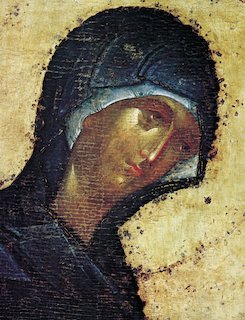
It is of no small significance that this forgotten place became the confluence point between heaven and earth. Nazareth represents the yardstick of greatness of a different kind than others, to which human vanity has become accustomed. Just as the universal flame of constellations and galaxies is born in the depths of the microworld, so too the axis of spiritual history went in those days not through Rome, Alexandria, or Jerusalem, but through an inconspicuous village surrounded by vineyards.
Cohorts marched, mobs screamed in amphitheaters; senators and jesters, bacchantes and poets, traders and philosophers all applauded the aging Augustus. Gloomy Herod wandered about his palace; Jewish scribes argued, bending over the scrolls. Denizens of the Empire closely watched financial transactions and hippodromes. Few of them ever heard of distant Nazareth, and, of course, no one knew about the house where the heart, hidden from the world and open to God, experienced an inexplicable Encounter. Meanwhile, centuries later, the thoughts of millions of people would be riveted to Her poor cell. Augustus and Herod would be a thing of the past, but She would remain the eternal Companion of the human race.
Now in the sixth month the angel Gabriel was sent by God to a town of Galilee named Nazareth, to a Virgin betrothed to a man whose name was Joseph, of the house of David. The Virgin’s name was Mary.
(Lk 1:26–27)
This was like the first burst of light, the light of the Glory of God. According to tradition, it caught the Virgin at the Nazareth well. And then there was silence, full of awe and sacred horror that had seized Miriam.
And she was troubled at his words and was pondering what kind of greeting this could be.
(Lk 1:29)
And then the second wave comes—the news of her election and calling:
Fear not, Mary, for you have found favor with God. Behold, You will conceive in Your womb and bear a Son, and you shall call His name Jesus. He will be great and will be called the Son of the Most High. And the Lord God will give to him the throne of his father David, and He will reign over the house of Jacob forever, and His kingdom will never end.
(Lk 1:30–33)
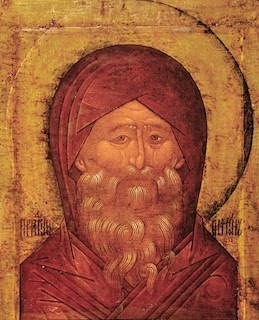
The Transcendent entered the life of Mariam. She herself could not immediately grasp and comprehend that experience; more than once, she would be seized with fear and amazement in the face of what had happened.
The mystery of Jesus is inseparably connected to that of the Virgin.
The pre-Christian world did everything in its human power to discern the meaning of life and to find God. From now on, the Ineffable has revealed Himself to the world, revealed in a truly divine way—without violating human mind and will.
Rejected and persecuted, “having nowhere to lay His head” (see Mt 8:20; Lk 9:58), Christ draws to Himself only those who have freely loved and accepted Him, who have recognized Him under the “form of a slave” (Phil 2:6–7). Just as the white color encompasses the whole spectrum, so the Gospel embraces the faith of the prophets, the Buddhist thirst for salvation, the dynamism of Zarathustra, and the humanity of Confucius. It sanctifies all that was best in the ethics of the ancient philosophers and the mysticism of the Indian sages. At the same time, Christianity is not a new doctrine, but the News of a real fact, an event that took place on two levels—earthly and heavenly. Limited to a location and epoch, this event transcends the temporal.
All roads converge to it; and the past, present, and future are measured and judged by it.
The first historical evidence about Christians comes to us from the Roman historians Cornelius Tacitus (56–120 AD) and Suetonius (69–126 AD). The Roman official Pliny the Younger (61–113 AD) too wrote about Christians around the same time. Although these testimonies were written in a dismissive and even scornful tone, they indicate with certainty that Christ was executed under Tiberius (c.30 AD), that “the turmoil among the Jews in Rome began because of a certain Chrestus”[117] (c.50 AD), and that in the years 64 AD under Nero and 112 AD under Trajan there were persecutions of Christian communities whose numbers increased so much that the Roman government was forced to take notice of them.
However, in order to learn about the earliest period of Christianity, we ought to turn to sources written by the Christians themselves. The most ancient of them are the Gospels—narratives about Jesus Christ, written in the period between 40 and 90 AD. That’s how we learn about the events associated with the emergence of Christianity, which shaped not only the culture but also the whole appearance of modern civilization. The word “gospel” in Greek means “good news.” Two of the four canonical Gospels were written by the disciples of Jesus Christ, and the other two by the disciples of these disciples. The Gospels belong to the second part of the Bible, called the New Testament.
“There is a book,” wrote Pushkin (Russian poet, 1799–1837) not long before his death, “whose every word is interpreted, explained, preached in all the ends of the earth, applied to all possible life circumstances…. This book is called the Gospel, and such is its allure, always new, that if we, satiated with the world, or overcome by depression, accidentally open it, we lose all power to resist its sweet beckoning and become spiritually immersed in its divine eloquence.”[118]
63–4 BC
In the spring of 63 BC, columns of Roman soldiers appeared on the roads of Palestine. The army was led by the 43-year-old commander Pompey the Great. Infuriated by the treacherous policies of the rulers of Palestine, Pompey quickly marched on Jerusalem.
After a three-month siege, one of the towers of the Temple citadel was destroyed, and the Romans poured into the Temple enclosure. Exercising the right of the victor, Pompey decided to inspect the famous Jerusalem Temple, including the Holy of Holies, a place where only the Jewish High Priest could enter once a year. In the tense silence, the curtain was drawn back—Pompey and his officers were overcome with amazement. They had expected to see something extraordinary. But it was empty: it was inhabited by the Unseen. With an eerie feeling, the disconcerted Romans left the Temple without touching a thing.
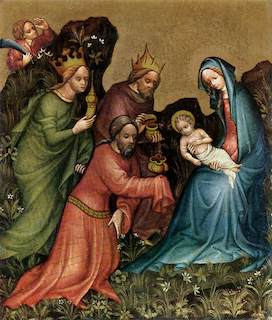
At that time, their own age-old beliefs and myths began to elicit ridicule among many Romans. Religion was losing its influence, becoming only a civic duty. That’s why, having become acquainted with the religions of the East, the Romans were avidly drawn to them. Occult teachings, magic, astrology, and divination found many followers. The religion of Israel, Judaism, was the only one that worshipped not folk heroes or deified forces of nature, but the One God—the Creator of all things visible and invisible. This God spoke about Himself to people through the world He had created, and also revealed Himself to sages and prophets as a Spiritual Principle that imposes high moral requirements on humanity. In Judaism, any images other than plant ornaments were strictly prohibited. One of the main features of Judaism was the belief that at a certain time God would send His people a Messiah, a Deliverer, who would free the people from all evil and be revered by all other nations of the earth. In the last decade before the beginning of the new era, this anticipation had spread throughout the Roman Empire.
Nazareth, 7 BC – 27 AD
Time of events in the modern chronology is indicated by the number of years that had passed either before or after the “new era” (or “common era”): “BCE” or “CE.” The beginning of the new era was taken as the time of the Nativity of Jesus Christ. This manner of timekeeping was proposed in the 4th century CE and was soon adopted by all European countries. Prior to this, all the countries of the Mediterranean used the founding of Rome as their reference for the annual time reckoning. For example, the birth of Jesus Christ itself was believed to have occurred in the 754th year from the foundation of Rome. Only in the 20th century, it was established from a comparison of all historical information about the events of that time that the birth of Jesus Christ occurred earlier than the date previously adopted in the 4th century. Thus, at present, it can be stated that the Nativity of Christ took place about the years 7–6 “Before Christ.”
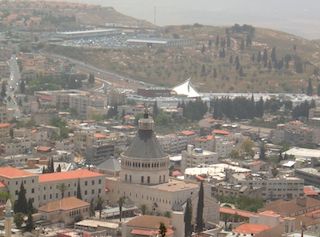
The Gospels of Matthew and Luke contain a story about the birth of Jesus during the reign of King Herod. The other two Gospels, of Mark and John, begin their story from the time when Jesus was already going out to proclaim His teaching. He was about 30 years old.
King Herod the Great ruled over Judea from 37 BC to 4 AD. Having seized power with the support of the Romans against the popular will, he sought in vain to win popular support. Herod embarked on numerous construction projects; the country became autonomous during his reign of thirty-three years. Ambitious and cruel, Herod constantly lived in an atmosphere of fear, anxious about conspiracies. His wife and two sons fell victims to his own suspiciousness.
During the reign of the Emperor Augustus, he was ordered to conduct a census throughout Palestine. Each household had to go back to the city where the head of the family had come from. So Joseph and Mary found themselves in Bethlehem, a small ancient town near Jerusalem. Mary was expecting a Child. It was impossible to find a room in the inn due to the influx of people. Mary and Joseph had to stay in a cave that served as a shelter for the sheep. There Mary gave birth to her Son, Jesus. Local shepherds—the first to have seen the Infant—told of the unusual signs which brought them to the cave.
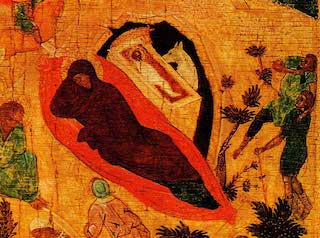
When Mary came with the Infant to the Jerusalem Temple for purifying rituals, the perspicacious old man Simeon foretold a great future for Her Son. Simeon blessed the stunned parents and added, turning to Mary: “Behold, He is appointed for the falling and rising up of many in Israel…. And a sword will pierce Your own soul” (see Lk 2:34–35).
Two years later, a small caravan came to Jerusalem from the East. The sages-astrologers, called the Magi, were inquiring of everyone about “the newborn King of the Jews” since they saw an extraordinary new star in the sky. In their opinion, it testified to the birth of a great King in Judea, whom they came to worship. Word of this reached Herod. From the high priests, he learned that according to the prophecies, this could happen in Bethlehem. Having called the Magi, Herod inquired about the time of the appearance of the star and enjoined them to find out everything about the Child and then inform him. The power-hungry old man planned to destroy this unexpected rival. The Gospel says that after worshipping the Infant Jesus, the Magi did not return to Herod, but proceeded to their homeland by a different route.
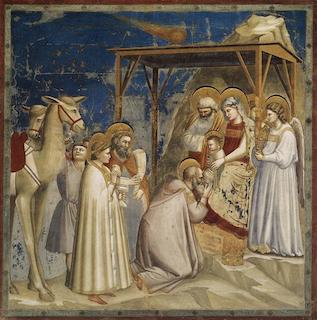
The enraged king gave an insanely cruel order to slay all children in Bethlehem under the age of two. He would stop at nothing when it came to his power.
However, He whom the murderers sought was already far away from the town. Joseph’s family fled shortly after the departure of the Magi. They set out to Egypt, one of the nearest centers where Jews lived outside Palestine and where those persecuted by Herod often escaped to.
When the news of the death of Herod reached Egypt a few years later (4 AD), Joseph returned to his homeland and settled in northern Palestine, in the small town of Nazareth, where he had lived with Mary before.
What was Joseph’s family life like in Nazareth? Only Matthew and Luke tell us rather sparingly about Jesus’ childhood. In any case, from His very youth, Jesus could observe people diligently tending their flocks, workers in the vineyards tying up vines, sowers planting in the spring fields, and reapers with sickles cutting down the crop of grain. Later, all these scenes from everyday life would be reflected in His parables. Jesus became a wood- and stone-worker like Joseph. Joseph probably died when Jesus was about twenty years old. During the time of Jesus’ ministry, He was called the “Son of Mary,” and that meant that Joseph was no longer alive.
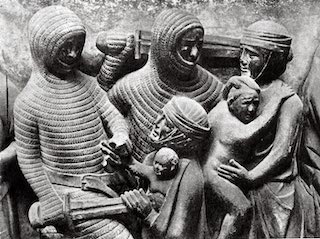
The development of any personality—especially an extraordinary one—is always a mystery; much less are we allowed to penetrate into the secret of Jesus’ soul. Only one thing appears indisputable: He was free from the internal conflicts that tend to torment people from childhood. Probably, in his free hours, Jesus, as in the later years of His preaching, loved to withdraw to secluded places for prayer. There, on the hills of Nazareth, full of spiritual and physical strength, He awaited a sign to cast the first seeds of His message into the world. And the sign was given.
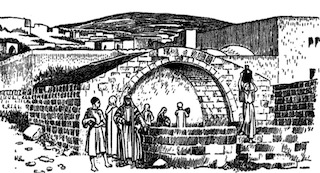
27 AD
One day a group of representatives of the clergy and religious teachers left Jerusalem’s gates and set off on the road leading to the banks of the Jordan. Rumors about a young hermit named John, who called himself “a voice of a harbinger,”[119] prompted them to make this journey.
John came from the priestly class. He lost his parents early. He was most likely adopted by the Essenes, who often raised orphans and, hiding in secluded places, led an ascetic lifestyle.
John too led the life of an ascetic. He wore a rough shepherd’s clothes made of camel wool, did not cut his hair, and did not drink wine. His food was sun-dried locusts and wild honey. When he turned thirty, he left the desert, came to the Jordan Valley, and began his preaching. “Repent,” said the prophet, “for the Kingdom of Heaven is near!” (Mt 3:2). His words quickly found a wide response. People from the surrounding towns and villages came to the river in droves. The prophet spoke of Judgment of the world, and it seemed that everything around John breathed a premonition of imminent great events.
As the symbol of the advent of the Messianic era, John chose the rite of immersion into the waters of the Jordan. Just as water washes the body, so repentance cleanses the soul. John demanded that people reassess their entire life and sincerely repent. Before ablution (Greek “baptizo”) people confessed their sins.
What was it exactly that John wanted? According to the testimony of the Jewish historian Josephus Flavius, John exhorted the people “to lead righteous lives, practice justice towards one another and piety towards God.” John said of himself that he was sent to prepare the people for the coming of God’s Messenger, the Messiah, and he, John, was His Forerunner.
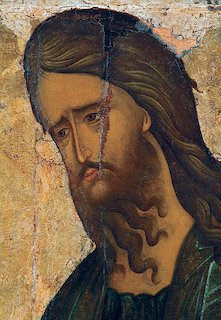
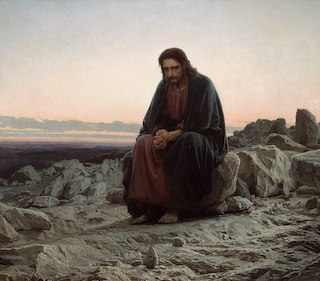
Listening to John, the people were in constant expectation. Many knew that the Messiah would long remain unrecognized. Consequently, John’s words, “He stands among you” (Jn 1:26), made their hearts beat faster. At this point, the Man from Nazareth appeared on the shore among the crowd. It was a pivotal encounter. The hermit in his hair-shirt with an emaciated face was the embodiment of the thorny path of pre-Christian religion. The new revelation, however, was being brought by a Man whose outward appearance seemed no different from any commoner from Galilee.
Following His baptism, Jesus immediately left the bank of the Jordan and went deep into the desert. There, among the naked lifeless hills, He spent more than a month in fasting. On the way north to Galilee, Jesus briefly visited the place where John preached. When John saw Him, he said, turning to the people around him: “Behold the Lamb of God, who takes away the sin of the world” (Jn 1:29). The word “Lamb” was evocative of the prophets who had been persecuted and slain. John repeated his testimony in the circle of his disciples, after which Andrew and John began to seek a meeting with Jesus. They came to the house where He was staying and spent the whole day there. The next day, Andrew found his brother Simon Peter and triumphantly declared: “We have found the Messiah.” The startling news spread quickly among the Galileans who came to Jordan. Most likely, these simple-hearted people decided that the King they found was hiding only for a time, and the hour was coming when He would take the throne, and they, having recognized Him, would gain great glory in the Messianic Kingdom. Thus, to the north—to Galilee—Jesus came no longer alone but in the company of His followers.
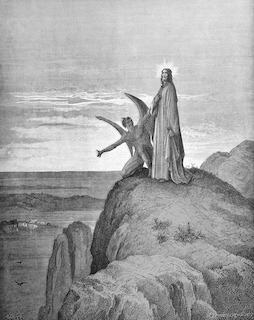
Spring 27 AD
It may have seemed initially that Jesus’ preaching was a mere continuation of the mission of John the Baptist. Both spoke of the proximity of the Kingdom of God, both called the people to repentance and accepted ablution—water baptism—as a rite of passage. Unlike John, however, Jesus Himself went to the people. He went around cities and settlements. On Sabbaths, His speeches could be heard in prayer houses, and on the rest of the days—out in the open. Sometimes the crowd was so large that Jesus sat in a boat and from there addressed the people on the shore.
Living in Galilee, the Teacher would always rise early and greet the sunrise in the solitude of the hills. Jesus’ day was filled with hard work: until nightfall, the sick followed on His heels awaiting relief from their infirmities; believers eagerly caught all of His words; skeptics asked Him challenging questions or entered into arguments with Him; scribes required an explanation of difficult passages in the Bible. Sometimes Jesus and His disciples even had no time to eat. However, in the Gospels it is only said twice that the Teacher became very tired. We usually see Him indefatigable and full of energy. “My food,” He said, “is to do the will of Him who sent Me and to accomplish His work” (Jn 4:34).
The Evangelists paint Christ as profoundly human. He is saddened, surprised, rejoicing, hugging children, admiring the flowers. His speech breathes forbearance for human weaknesses, yet he never relaxes His expectations. He speaks with tenderness and kindness but can also be strict and even harsh. Usually meek and patient, Jesus is severe on hypocrites. Nevertheless, internal discord is alien to Him. He always remains Himself. Jesus is far from morbid exaltation or from the frenzied fanaticism characteristic of many ascetics and founders of religions. Illuminating sobriety is one of the main features of His character.
Writers have never managed to create a convincing image of a hero unless this portrait is offset by personal flaws. The Evangelists constitute an exception, and not because they were unrivaled literary masters, but because they depicted an unrivaled Personality. Jesus did not turn away from the world, did not hide His spiritual treasures from it, but gave them generously to people. “When,” He said, “people light a lamp, they do not put it under a bushel, but on a candlestick, and it gives light to everyone in the house” (see Mt 5:15; Mk 4:21; Lk 8:16, 11:33).
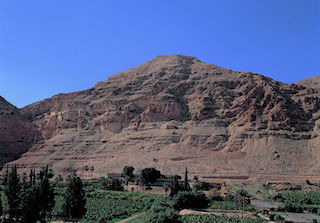
Time and again His words sounded like a magnificent recitative, reminiscent of the hymns of ancient prophets. He often spoke with aphorisms, posed questions, all without neglecting logical arguments. Jesus especially loved examples from everyday life, parables. They most fully embodied His teaching. As He presented familiar pictures of nature and life before people, Jesus often allowed the audience to draw their own conclusions from His stories. Thus, avoiding abstract words about human brotherhood, He gives an example about a Jew who, having suffered at the hands of robbers, receives help from a Gentile Samaritan. Such stories sank into human hearts and were more effective than any discourse.
All the first followers of Jesus were likely young. Foremost among them was a fisherman from the city of Bethsaida, Simon. Jesus gave him the nickname of Cephas, a stone, which in Greek sounds like Peter. Another disciple was Andrew, the brother of Simon-Peter. Two other disciples, the brothers James and John, were also fishermen. There was a customs office in Capernaum. When He visited it, Jesus met a tax collector there, the publican Matthew and said to him: “Follow Me.” Matthew immediately joined the disciples of Jesus. Later this man was probably the first to begin to write down the words of Christ. In addition to these five disciples, there were others among the followers of Jesus, all of whom came from Galilee. The only Southerner was Judas—a native of the city of Kerioth.73 It was he whom Jesus entrusted with the custody of the community’s funds. By doing so, He probably wanted to underscore His trust for Judas.
The name of this man has since become a symbol of baseness and treachery. However, it is doubtful that Christ wanted to bring a moral monster—a morally hopeless creature—close to Himself. The drama of Judas was connected with the loss of his faith in the Teacher, the disenchantment, which gave rise in him to a sense of embitterment and pushed him to take the treacherous step. In any case, to believe that Judas was governed by greed alone is to unduly oversimplify the Gospel’s tragedy.
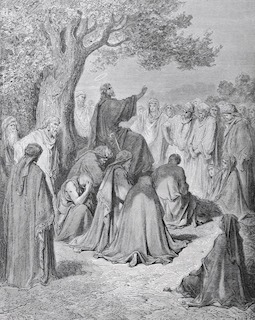
Jesus Christ called His teaching the Joyful or Good News (Greek: Evangelion). He brought to the world neither new philosophical doctrines nor knowledge of the mysteries of the netherworld. Instead, He radically changed the very attitude of people towards God. The Good News of Jesus speaks of the highest calling of people and of the joy that is given to them by unity with the Creator. It is not easy to describe in brief the inexhaustible wealth of the Gospel, so we will focus only on its main aspects.
Heavenly Father and Divine Sonship. The preaching of Jesus is not addressed to the “masses,” the nameless throng, but to each individual. In a crowd, the spiritual level of people tends to decrease, and so they end up in the grip of herd instinct. In any person is contained a whole world, infinitely valuable in the eyes of God. “Which of you, having a hundred sheep, and having lost one of them, would not leave the ninety-nine in the wilderness and go after the one that was lost, until he found it? … I tell you there is more joy in heaven over one sinner who repents than over ninety-nine righteous persons who need no repentance” (see Mt 18:12–14; Lk 15:4–7).
Of all the names by which the Creator is known in Scripture, Jesus prefers the word Father. From Christ, people learn that the Creator of the Universe can be conversed with one-on-one, as with a loving Father, who awaits our reciprocating love. Neither temple ceremonies, nor even communal prayer can replace fellowship with God in a private, intimate conversation with the Father. In the only prayer that Jesus gave to the disciples, He teaches to pray in simple words, with love and trust (see Mt 6:9–13; Lk 11:2–4).
OUR FATHER, WHO ART IN HEAVEN! We are Your children, and our homeland is with You.
HALLOWED BE THY NAME. May we be in awe of Your sacred mystery.
THY KINGDOM COME, THY WILL BE DONE ON EARTH AS IT IS IN HEAVEN. We are waiting for You to reign in all Your Creation, for Your plan to be fulfilled, and for You alone to become our King and Lord.
GIVE US THIS DAY OUR DAILY BREAD. Sustain our life now, for we trust that You will take care of tomorrow.
AND FORGIVE US OUR DEBTS AS WE FORGIVE OUR DEBTORS. The filial debt, which we pay You so poorly, is reciprocal love. Teach us to love and forgive each other as You love and forgive us.
AND LEAD US NOT INTO TEMPTATION BUT DELIVER US FROM EVIL. Protect us from evil coming from outside and from within ourselves.
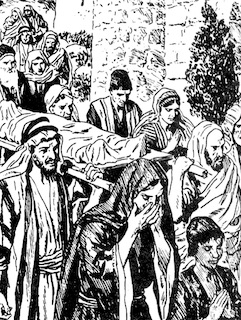
FOR THINE IS THE KINGDOM AND THE POWER AND THE GLORY FOREVER. AMEN.
Note that it is the will of the Lord that occupies the first place in this prayer rather than human desires. When people approach Him, they should not seek only their own. In the Gospels, the problem of evil is a practical problem, a life task.
The commandment of love. The evil with which man comes into the closest contact lives inside himself: the propensity for violence, a blind rebelliousness seeking self-affirmation at the expense of others and boundless reach of instincts. This evil feeds on the sense of self, the “I,” as the only center of worth. The dissolution of self in the elements of society, in the collective, would seem to limit the rebellion of the individual, but at the same time, it levels and erases one’s personality. The way out of this impasse was given in the biblical commandment of the Old Testament, long before Jesus Christ: “Love your neighbor as yourself” (Lv 19:18; Mt 5:43, 19:19, 22:39; Mk 12:31; Lk 10:27). It calls for our struggle against our egocentric origins, for the recognition of the worth of the self of another. The commandment of love for one’s neighbor is concretized by Jesus in a simple rule: “In all things whatsoever ye would that men should do unto you, do ye also unto them” (Mt 7:12; Lk 6:31).
The Gospel is not a formal schema of “virtue,” which can be reduced to prohibitions only. St. Augustine, who lived in the 4th century AD, wrote: “Love God and do as you will,” i.e., our attitude towards people should organically flow from our faith. He who has come to know God can’t help loving His creation.
And what should the disciples of Christ do if they encounter the misdeeds of others? At the sight of the weakness of one’s neighbor, a person should not pass sentence on him, but rather be compassionate, being mindful of one’s own sinfulness. “Judge not,” Jesus warns, “lest ye also be judged; for with what judgment ye judge, and with what measure ye measure, so shall it be measured unto you” (Mt 7:2; Mk 4:24; Lk 6:38).
By gathering sinners to Himself, Jesus wanted to stir up in them repentance and thirst for a new life. His goodness and trust often worked genuine miracles.
The old and the new. For people listening to Jesus, it was important to decide how His teaching related to the ancient Mosaic Law. Religious teachers of Israel from the time of Jesus, the Pharisees and scribes, often added hundreds of petty rules to the Law. Jesus, on the other hand, returned the Old Testament to its origins—to the Ten Commandments of Sinai, the true Mosaic legacy preserved by the prophets. Jesus deepens and complements the ethical requirements of the Law. If the Law forbade murder, then Jesus calls to banish from the heart hatred—the root of the offense. If the Law condemned marital infidelity, then Jesus speaks of the danger of immoral feelings. If the Law required that an oath be observed, then Jesus considers it altogether superfluous: “But let your ‘Yes’ be ‘Yes,’ and your ‘No,’ ‘No.’ And anything more than this is from the evil one” (Mt 5:37).
People by nature hate their enemies, but the disciples of Jesus Christ must overcome evil with good. They should fight vengeful feelings. Moreover, they must do good to their wrongdoers. “That you may be the sons of your Father in Heaven, for He makes His sun rise on the evil and the good, and sends rain to the just and the unjust…. Be perfect, therefore, as your Heavenly Father is perfect” (Mt 5:45, 5:48). This is the breathtaking height to which Jesus calls people.
Jesus affirmed a new view of women from the very beginning of His ministry.
For Socrates, a woman was just an obtuse, importunate creature. Buddha did not allow his followers to even look at women. In the pre-Christian world, women most often remained silent slaves, whose life was limited to exhausting work and household chores. It is no accident that in one of the Jewish prayers were the words: “Thank you, God, that you have not created me a woman.” Christ returns to woman her human dignity, which has been taken from her, as well as the right to have spiritual aspirations. From now on, her place is not only at the family hearth. Thence, among the closest followers of Jesus, we see quite a few women.
Later, when the hour of trial came, the first Christian women did not desert their Lord as did His other disciples. The women were on Golgotha at the moment of His death, accompanied the Teacher’s body to the place of His burial, and the Paschal Mystery of Resurrection was first revealed to them.
The Gospel broke down the barriers that divided people. Everyone who becomes a Christian acquires a second citizenship, enters, as it were, into a nation in which “there is neither Greek nor Jew…. but Christ is all, and in all” (Gal 3:28; Col 3:11).
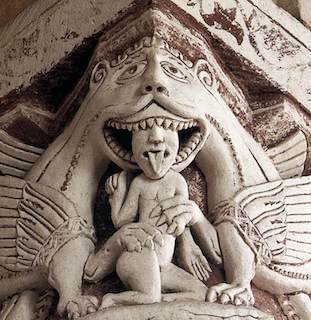
Earthly life and life eternal. Conviction that there is another life, one that continues after the disintegration of the body, lived in the minds of people since ancient times. Plato, for example, argued that our earthly journey is but a prelude to eternity.
The Old Testament religion was an exception in this respect. For a very long time, it did not find an answer to the question of the posthumous fate of the human being. The notion of Sheol, the dreary realm of the dead, was established in the Old Testament, whereas the actual “continuation of life” was seen primarily in one’s descendants. Only in the 4th century BC, Israel heard the good news of eternal life. It was not, however, the “immortality of the soul” that was revealed to Israel, but rather a coming rebirth, resurrection of the entire person—a new heaven and a new earth, where the truth will reign and all evil will be conquered.
Jesus Christ fully confirmed faith in the resurrection of the dead. Yet, always pointing to the reality of the “age to come,” He did not preach abstract spiritualism, for which earthly life is a mere phantom.
The Gospel teaches not only about the hereafter, but also about how we should live today. Immortality, resurrection, and the Kingdom of God that the Gospel speaks of are inseparable from the things which are being accomplished in this world. If a person neglects his earthly service, he then betrays his true purpose also. Then again, inevitable catastrophe awaits those who devote all their energy only to the material. Life is short and can end at any moment. And at any moment a person can be asked to give an account on how he lived his life, what he used his abilities and talents for.
Jesus called on His followers, “Do not lay up for yourselves treasures on earth, where moth and rust destroy, and where thieves break in and steal, but lay up for yourselves treasures in heaven, where neither moth nor rust destroys, and where thieves do not break in and steal, for where your treasure is, your heart will also be there” (Mt 6:19–20).
During the time of the prophets, people gathered around them who called themselves “spiritually poor.” They were not needy in the usual sense of the word, but rather righteous people who sought freedom from vanity and avarice. According to Jesus’ words, his disciples too should be like that: “Blessed are the poor in spirit, for theirs is the Kingdom of Heaven” (Mt 5:3). “The poor in spirit”—those who have chosen voluntary poverty in order to acquire spiritual gifts of grace—are poor for the sake of the spirit.
The Kingdom of God. What is the Kingdom of God, the Message of which occupies such an important place in the preaching of Jesus? This concept in Judaism was often associated with the external triumph of Israel and fabulous prosperity on earth. The prophets believed, however, that the accession of God would above all else cast out every evil and transform the Universe. In apocalyptic literature that spoke of the end of history, both views were intertwined. Even so, the idea that the coming of the Messiah would usher the Kingdom was the general hope shared by nearly all the Jews.
Jesus speaks of the Kingdom of God, sometimes calling it also the Kingdom of Heaven, as His Kingdom, His dominion in the world and in the hearts of people. The Kingdom of God is “not of this world” (Jn 18:36), it is above anything transient. Shattering the power of evil, it brings to earth the laws of Heaven. This spiritual reality cannot be put on a par with any earthly happiness. Earthly happiness is fragile; little is required to dispel it. The Kingdom of God is living in the truth of God, and it is this life that brings a person the highest satisfaction and happiness. The Kingdom of God is inherited by peacekeepers and the merciful, those pure in heart and persecuted for righteousness. There those who mourn will be comforted, “the poor for sake of the spirit” will be made rich, and those who hunger for Truth will be filled.
Thus, the Good News of Jesus Christ is news of salvation from spiritual death, news of the world’s communion with the Divine life as its highest goal. This Kingdom is already present in our world when the Lord reigns in the people’s hearts. It brings to those who enter into it not oblivion, but a bright, joyful sense of the closeness to the Heavenly Father.
“But I say unto you…” Is what the Gospel calls people to do even possible, is it within human power? After all, even having loved an ideal, people often do not find the strength to rise to it. Another powerful force holds them down bending to the ground: people seek wealth, carry the millstone of worry around their necks, and waste the precious days allotted to them wallowing in petty things.
Who can pave the way to the Kingdom? Who will lead people there?
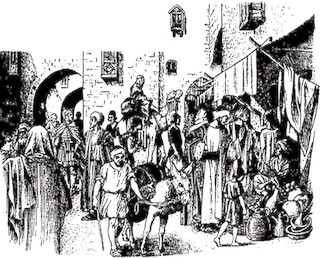
And then people hear the word of Jesus the Nazarene: “Where two or three are gathered in My name, there I am in the midst of them…” (Mt 18:20). So is He the Messiah? The long-awaited Comforter of Israel? Everyone saw that Jesus preached “as one having authority, and not as the scribes and Pharisees” (Mt 7:29; Mk 1:22). How were they to understand His words: “But I say unto you”? Jesus is not only the Shepherd; He is the Door, the Gate through which the sheep can enter. This is what He taught about Himself.
He is the Mediator between Heaven and earth. “No one,” says Jesus, “comes to the Father except through Me” (Jn 14:6). But then why did He act so cautiously, why did he hide His office from the people, forbidding them to call Him the Messiah?
Spring 28 AD
“The life of Jesus,” says Gilbert K. Chesterton (English writer, 1874–1936), “went as swift and straight as a thunderbolt. It was above all things dramatic; it did above all things consist in doing something that had to be done.”[120] Indeed, the disciples could not help feeling that Jesus had a plan, like the far-reaching plan of a commanding general. He demanded from them the determination to stand to the end. His Gospel did not have anything in common with a dreamy complacency and feebleness.
The battle with the kingdom of evil will not be easy. All the sins and prejudices that have taken root in people will rise up against the Messiah. Jesus’ purposefulness both fascinated and frightened the disciples. However, they interpreted His words in their own way, thinking that the Teacher was hinting at a revolutionary explosion, which would usher in His coronation in Jerusalem. And when Jesus headed there for Passover, they decided that the day when the Kingdom of God would be “taken by force” (Mt 11:12) was at hand.
Jerusalem in those years was ruled by an envoy of the Roman Emperor—the Procurator Pontius Pilate. His cruelty, greed, and petty tyranny were well known everywhere. Incidents provoked by the illegal actions of the Procurator often resulted in mass carnage. Every Passover, the ruler expected a revolt, and thus he always traveled from his residence in Caesarea to Jerusalem for the holidays to personally ensure that order be maintained. Pilate’s precautions were completely justified. He commanded a small army of three thousand men, while the Zealot nationalists and their supporters were only waiting for a leader to rally their multitudes against the Romans.
Apparently, Jesus’ disciples secretly wanted Him to become that leader. However, the Teacher seemed to completely ignore the problem of the foreign occupation. He was troubled not by the political, but by the spiritual state of the people. When the new Teacher appeared in the Jerusalem Temple, He immediately confounded everyone. Having made a whip of ropes, He drove sheep and oxen intended for sale as sacrifices out of the Temple enclosures. He authoritatively demanded an end to this outrage in the proximity to the Holy place: “Do not turn My Father’s house into a house of trade!” (see Jn 2:16).
The first visit to Jerusalem ended only in a clash with religious leaders. When Jesus interpreted the Law in the spirit of the teachings of the prophets, the scribes accused him of encroaching on the “traditions of the elders.” When He said that charity is more pleasing to God than rituals, it was, in the eyes of the Pharisees, an attempt to undermine the entire ritual system of pious living.
Such blind devotion to the letter and form may seem strange to us. However, we must take into consideration that ritualism is a persistent ailment rooted in the depths of the human psyche. For this reason, much passion has raged through history around rituals, and much blood has been spilled on account of controversies over religious ceremonies. A similar disease, like a persistent neurosis, has often affected Christians, who have forgotten that, for Christ, love of God and other people is incomparably greater than any external precept.
Adherents of the letter, ritual, and the ancient way have at all times been characterized by the same inertness. The drama of the Pharisees is associated with a typical manifestation of what later came to be called “Pharisaism.” The elders of Jerusalem, just as the Brahmins of India or the Russian Old Believers, lived in constant fear of “defilement.” They were said to be so zealous that they were ready to “cleanse the sun itself.” But in their pursuit of piety to hasten the arrival of the Messiah, the leaders of Israel—not realizing it—ended up turning their back on the One who brought to them the News of salvation.
From that time Jesus would visit Jerusalem more than once, but He would not be recognized there. Those who entered His community were mostly Galileans, the inhabitants of the northern part of Palestine; yet He remained a foreigner to the Southerners.
Spring–summer 28 AD
The writers of the Gospels testify that the people “marveled” at the teaching of Jesus, but His power in overcoming the elements and diseases was no less impressive. He was described primarily as a miracle worker. Subsequently, even Christians were often eager to view miracles as the main proof of the superhuman nature of Jesus. However, He, Himself, rejected this idea. Jesus made it clear that power over nature was part of God’s plan for people. If they attain unity with the Spirit, nothing is impossible for them. In miracles, the depth of things—another dimension where the laws of the corporal world are overcome and freedom reigns—is revealed. When people come into contact with this dimension, then, according to Christ’s word, “the Kingdom of God has come upon them” (Mt 12:28).
Anyone who wants to prove that the phenomena called miracles are unthinkable does not take into account how little is yet known about the mysteries of existence. But why do even those people who are inclined to believe the most amazing accounts of the yogis view the stories of the New Testament with skepticism? There is a spiritual reason for this. Accepting the Gospel requires an innermost decision, a change in one’s attitude towards life.
Jesus often pointed out the close connection between the state of the body and the soul. Having once healed a paralytic, He warned him: “See, you have been made well. Sin no more lest a worse thing happens to you” (Jn 5:14).
In that tumultuous and fractured era, mental illness became widespread. The Gospels reveal an epidemic of spiritual ailments, which had been largely unheard of during the Old Testament era. Especially frightening was a mysterious type of insanity—obsession or demonic possession. The afflicted would cry out in an unnatural voice, speak on behalf of the demons that inhabited the person, sometimes allegedly claiming that a whole army of demons lived inside. Christ, by His very presence, had a stunning effect on these wretched individuals: His single word of authority or His touch was often enough to free the soul from the dark forces that possessed it.
The news of healings in Galilee had been a source of concern to the guardians of the Law in Jerusalem from the very beginning. When the Teacher visited Jerusalem for the second time, His actions and speeches aroused even greater indignation. This time, He openly proclaimed that His miracles were a sign that His mission had originated from above. Life and blessing come from God, thus, the One who is sent by Him to earth is also called to heal and give life.
The orthodox could no longer bear such speeches. Not only had the Nazarene broken the Law but He also called Himself the Son of God. The scribes surrounded Him and demanded that He give them such a “sign from heaven” (see Mt 12:38, 16:1; Jn 2:18) that would convince everyone. But Jesus rejected this demand. “A wicked and adulterous generation seeks for a sign,” He said, “but no sign will be given to it except the sign of Jonah the prophet” (Mt 12:39). These words contained an allusion to the events described in the Old Testament Book of the prophet Jonah. Jonah’s preaching among the denizens of the Assyrian capital of Nineveh produced the repentance of the Ninevites, the punishment of God was rescinded, and the city was spared from the imminent destruction. The meaning of Jesus’ words is that His very preaching is a sign—a sign of God calling to people. For those who do not see this, any other signs of God’s love will be futile.
Fall 28 – spring 29 AD
Apart from the short travels to Judea, Jesus did not leave Galilee for a year. But from the very beginning, Jesus prepared his disciples for the idea of spreading the Gospel more widely. The Twelve were chosen for this purpose. Jesus called them messengers (“apostles” in Greek). Their every day and every step would henceforth belong only to God and the people. They would go to the sufferers, bringing them spiritual and physical healing. They would receive shelter and food from those who received them as messengers of Jesus Christ.
After the Twelve divided into pairs and left for the neighboring towns, Jesus was left alone. Soon afterwards He heard the news about the death of John the Baptist. Herod Antipas, the ruler of the northern part of Palestine, married his brother’s wife Herodias. But first he had to divorce his first wife, the daughter of an allied Nabatean king, which caused a severance of diplomatic relations with Nabatea. In Judea itself, Herod’s divorce was met with unanimous condemnation.
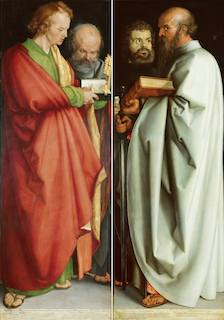
John the Baptist, while still at large, had openly spoken out against this incestuous marriage. He did not stop reproaching Herod even after he imprisoned him in the citadel. The prisoner continued to be dangerous to Herodias even there. On Herod’s birthday, when the feast was in full swing, Salome, the daughter of Herodias, to the unspeakable delight of all the guests, performed a salacious Syrian dance. “Ask me for whatever you wish,” shouted the drunk king. Salome, on the advice of her mother, demanded: “Give me now on a platter… the head of John the Baptist.” Antipas’ face darkened. However, in order to keep his word in front of the guests, he ordered the bodyguard to go down to the dungeon. He returned shortly with John’s bloodied head in his hands. They placed it on a platter, and Salome took the ghastly gift to her mother.
Thus perished the predecessor, the Forerunner of Jesus. He was a little over thirty years old. Yet he died as he lived, an unyielding witness to God’s truth. From that time on, Herod Antipas was haunted by fear. When he heard about Jesus, he claimed to those around him that that was the righteous man he had executed, risen from the dead.
Summer–fall 29 AD
One day after prayer, Jesus turned to the Twelve with the question: “Who do people say that I am?” “Some say John the Baptist,” they answered, “others say Elijah, and others Jeremiah or one of the prophets.” “Who do you say that I am?” Simon-Peter answered on behalf of them all: “You are the Messiah (Greek: Christ), the Son of the Living God!” “Blessed are you, Simon,” spoke Jesus solemnly, “For flesh and blood (i.e., human nature) has not revealed this to you, but My Father who is in heaven. And I tell you: You are a rock (Greek: “petros”), and on this rock I will build My Church, and the gates of hell shall not prevail against it” (Mt 16:13–18).
Jesus’ question, “Who do people say that I am?” continues to sound to this day; and today many are prepared to see in Him only a prophet or a teacher of morality. But what, then, did the unique attraction of Jesus Christ consist in? Was it only in His moral doctrine? After all, Buddha, Socrates, and Seneca each offered high ethics.
Here we enter the most mysterious and decisive realm in the entire New Testament. Suddenly, a wide chasm is opened between Jesus Christ and all the philosophers, moralists, and founders of religions. All of them recognized themselves to be mere people who had found a truth and were called to proclaim it. They clearly saw the distance separating them from the Eternal. And Jesus? With calm confidence, this Teacher, who was a stranger to falsehood and self-aggrandizement, proclaimed Himself to be the Only Son of God. He spoke not as a prophet in the name of the Existent One, but as the Existent One Himself.
In order to better understand the essence of Peter’s confession, “You are the Christ, the Son of the Living God,” we must once again return to the distant past. The world, according to the Bible, has long existed in a fallen state and stands in need of healing. Awareness of the imperfection of the world led to the development of “salvation doctrines.”74 Those can be reduced to three types. For some (e.g., Plato), the solution lies in a better organization of society. For others (e.g., Buddha), the answer is in mystical contemplation and flight from life. The third path arose in Israel and Iran. They had a conviction that evil was surmountable, and that there would be a future transformation, which is itself the highest goal of human life.
Scripture depicts a spiritual catastrophe that struck the world in the story of the fall of the first people who desired to rule the world independently of their Creator, in other words, “to be like gods.” Sin destroyed or weakened many of the gifts of humanity; it spread like an epidemic, letting out everywhere its poisonous roots.
The Bible’s central good news is that God did not desert the fallen world. He called the righteous who in the midst of darkness and insanity remained faithful to Him. They knew that the day would come when the barrier that separated the world from God would fall. The Creator of the world Himself would enter the world; He would be made manifest and close to people. The universal revolution will be preceded by the appearance of the Messiah-Christ. But when the prophets tried to describe the appearance of the Messiah-Savior, He was portrayed by the majority of them as a mighty Conqueror. Only a few depicted Him without the outer glow.
Jesus revealed that Theophany had taken place in His Person and that He was the promised Messiah. The Immeasurable and All-Encompassing took on human form and voice in the Carpenter from Nazareth, “the Son of the Living God.”
He walked the earth, not overpowering people with His might but leaving their freedom intact. Jesus was seeking not slaves, but children and brethren who would love Him unselfishly and follow Him. The Messiah’s appearance “in glory” that no one could resist would have had an element of compulsion.
The stumbling block was the fact that the preaching of Jesus was not sanctioned by the official church authorities. The teachers and hierarchs of the Old Testament Church remained deaf to the Gospel. They were in bondage to traditions bestowed upon them once and for all. They were set on their infallibility, and as a result, found themselves adversarial to the work of God. The very fact that the sentence on Christ was pronounced by the religious leaders of Israel is the greatest tragedy of humanity.
September–December 29 AD
The miracles performed by Jesus, His bold preaching, and the very charm of His Person attracted many to Him. There are even several mentions in the Gospels that people wanted to make Him king. But Jesus did not come to establish an earthly kingdom based on external power, but to open people’s hearts to God and the good. This explains Jesus’ coldness to loud expressions of public admiration. The enthusiasm of the masses springs up easily and just as easily preys upon those prone to subservience and leader-worship. Such should not be the children of His Kingdom. Christ required of everyone a spiritual and moral feat.
Jesus’ refusal to go along with the passions of the crowd and agree to the role of a populist leader apparently caused a decline of His influence in Galilee. It was clear that someone’s hand was directing people against Him. He was no longer allowed to preach freely in synagogues as before. Jesus was forced to leave Capernaum forever. The path to Nazareth was also closed to Him. The ring quickly tightened. In the autumn, Jesus went to Jerusalem for the Feast of Tabernacles, not publicly, but as if in secret.
The Feast had already lasted for four days and was in full swing. Music sounded incessantly and trumpets blared, drowning out the hubbub of the people; clouds of smoke from burnt offerings were rising from the Temple altars. Celebrating the end of the harvest, the people enjoyed themselves, sang, feasted, prayed. All of the available space in Jerusalem was strewn with tents, hastily constructed from branches. Their camels, carts, and mules stood nearby. The Feast was also a time of commemoration of the people’s wandering in the desert and living in tents.
Suddenly, the attention of those present was drawn by a dispute between some scribes in one of the corners of the Temple gallery. All were astounded by this unknown Man with a Galilean accent. “Is this not the Man whom they seek to kill?” guessed the Jerusalemites. Then why was He acting in the open?
“If you abide in My Word,” Jesus taught, “you are truly my disciples, and you will know the truth, and the truth will make you free! … Truly, truly, I say unto you, whoever commits sin is a slave of sin” (Jn 8:31–32, 34). Apparently, there were many people who recognized in Jesus a messenger of God, and this prevented an attempt on His life at the feast of Tabernacles. The healing of a man who had been blind from birth also affected some of the Pharisees. That this strange Teacher had such power could not be an accident. Yet intoxicated with a sense of their own superiority, these people could not recognize the Living Truth that came to them in the person of Jesus of Nazareth.
Jesus was able to enter the Temple freely, accompanied by a crowd of disciples. He would spend nights with his friends in the village of Bethany near Jerusalem and preach in Solomon’s Porch during the day. It went like that up until the middle of December when a new collision occurred during the Feast of Hanukkah—the commemoration of the victory of the Maccabean Revolt over the Gentiles. The heroic feats of the past nourished the dreams of a strong leader who would overthrow Rome’s power. The crowd expected Jesus to take decisive political action. Instead, Jesus said: “You do not believe, because you are not of My sheep…. I and the Father are one” (Jn 10:26, 30). A murmur of horror swept across the crowd. He made Himself the Son of God! He must be punished immediately for His blasphemy. This time, Jesus escaped death only by a miracle.
December 29 – 2 April 30 AD
There were about three months left until Passover, and Jesus was no longer able to live near the capital. He went to the Transjordan area for the season of the winter rains. There, beyond the Jordan, the Teacher and His disciples were in relative safety.
In the spring, news came that Lazarus, the brother of Martha and Mary, was dangerously ill. Jesus often stayed in the house of these people in Bethany when visiting Jerusalem. It took them no more than two days to reach Bethany. Jesus had not quite entered the village when Martha ran out to meet him. “Lord,” she said, weeping, “if You had been here, my brother would not have died.” “Where have you laid him?” asked Jesus. The people led Him to the crypt, blocked with a stone slab according to custom.
“Take away the stone,” the Teacher ordered. The entrance to the cave was opened, Jesus raised His eyes to heaven and immersed Himself in prayer. “Lazarus, come out!” shouted Jesus, and His voice, like a thunderclap, resounded in other worlds. When the deceased appeared at the threshold of the cave, wrapped in a funeral shroud, the people backed away in horror. “Unwrap him and let him go,” said Jesus in the ensuing silence (see Jn 11).
In this event, Jesus demonstrated to His disciples His power over life and death. The resurrection of Lazarus was to prepare them for the Paschal Mystery.
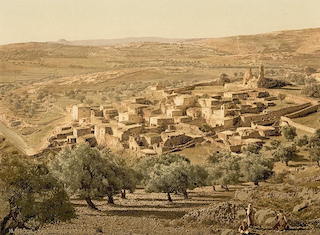
However, there were also people there who considered it their duty to report what had happened to the Sanhedrin. A council of the highest Jewish clergy was immediately called. The Sadducees, the ruling priestly aristocracy, feared that the movement surrounding the Nazareth Teacher might grow into a rebellion and provoke a punitive campaign by the Romans. Joseph Caiaphas, the High Priest, declared that they must eliminate the “false Messiah” without hesitation. The death of one Man was better than a calamity that would befall the entire nation. Apparently, the case was postponed upon learning that Jesus had left the village.
About ten days before Passover, Jesus announced to His disciples that He intended to enter Jerusalem before the holiday. They set out quickly and traveled almost without stopping. It was as if Jesus were hurrying towards His death. The road snaked among the hills. In some places, people who were heading to Jerusalem began to appear. Gradually, Jesus found Himself at the head of a large crowd of pilgrims. Many recognized Him and greeted Him with joy. And others approached Him asking to be accepted as His disciples.
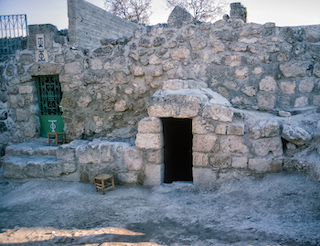
On Friday, March 31, the travelers entered Bethany, where a celebration had been set up in honor of the Teacher’s arrival. Many of His friends gathered. When the Sabbath was over, Jesus made preparations to enter the city. For this, He chose a donkey—an animal long considered a symbol of peace. Instead of a saddle, clothes were placed on the donkey’s back, and, having mounted it, Jesus began to approach the entrance to Jerusalem. A King who proclaimed peace, He rode unarmed, surrounded by pilgrims who shouted, “Hosanna to the Son of David!” The disciples triumphed. The long-awaited day had finally arrived!
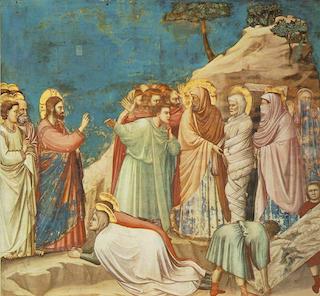
The hierarchs were at a complete loss. They did not expect such an outpouring of popular love for the Galilean. Meanwhile, Jesus rode through the festive streets and, having dismounted the donkey, entered the Temple premises along with His disciples. They expected of Him some words and actions, but He looked around the sanctuary in silence, like a King wishing to inspect His possessions. Upon returning to the Temple on Monday morning, He did what He had done three years ago: He commanded the merchants to leave the grounds of the House of God. When the buyers and sellers were about to express their indignation, Jesus overturned the tables of the money-changers and the benches with the birds intended for sale.
This was the first act of the Messiah who appeared openly as such to the people. It was directed against the belittlement of the Temple. The second act was healing of the sick who clung to Jesus from all sides.
However, the apostles realized more clearly with each passing day that the Messiah in Jerusalem was, as it were, in a hostile camp. They spent most nights in the Gethsemane grove on the outskirts of the city. But in the morning Jesus went again into the noisy city, where His listeners waited and His opponents lay in wait for Him.
On Wednesday, Judas secretly entered the palace of the High Priest Caiaphas. He proposed his plan to the Jewish authorities: to seize Jesus at night outside the city without attracting the attention of the crowd. Judas likely informed them that Jesus, in his opinion, intended to declare His Kingdom on the day of Passover. Judas even decided to profit from his betrayal and accepted thirty silver coins offered to him. Having taken the money, he returned to the Teacher as if nothing had happened.
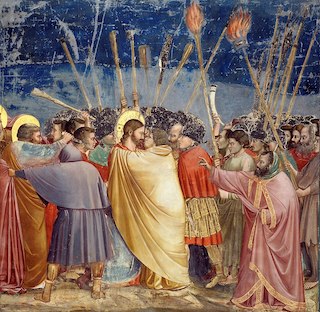
The evening of the 5th to the night of the 7th of April 30 AD
On Thursday morning, Jesus commanded the apostles to prepare for the Passover meal, a feast held annually to commemorate Israel’s deliverance from Egyptian slavery. He wanted to hurry to be able to celebrate Passover in the circle of His disciples, and He ascribed great significance to this last celebration in His earthly life. Jesus sent His disciples to one of His secret followers in the city to make all necessary preparations for the sacred meal in his house.
When evening came, Jesus and the disciples reclined on low couches in accordance with the then custom: John next to Jesus, Peter opposite Him; Judas also was positioned nearby. The sacred event of Holy Thursday that was to become the most important sacrament of the Christian Church, which would be imprinted in prayers and hymns, in the works of Giotto, Dionysius, and Leonardo da Vinci, took place in an atmosphere of unassuming simplicity.
Jesus said a prayer over unleavened bread. “This is the bread of suffering that our fathers ate in the land of Egypt,” the Teacher recited the traditional words of the sacred Old Testament meal. This time, though, Passover heralded the suffering of Jesus Christ, the Messiah. As this holy Bread was broken, so would His flesh be delivered into executioners’ hands. “Take, this is My Body, which is broken for you,” said Christ, and added, “Do this in remembrance of Me.”
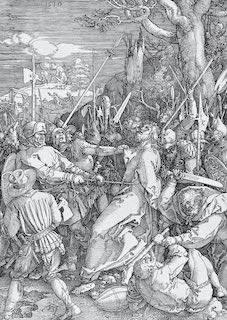
Next, Jesus took up the common cup of wine and said: “Drink of it, all of you. This is My Blood of the New Testament, which is poured out for many for the remission of sins…. Do this always in remembrance of Me.” The apostles passed the Cup around. Thus was performed the Passover of the New Testament. The recollection of the deliverance from Egyptian slavery became a recollection of the deliverance from the bondage of sin, the deliverance that comes to those who believe in Jesus Christ and unite with Him in their life. The most important sign of this union became the sacrament of the breaking of bread or Thanksgiving (Greek: Eucharist). With the singing of a psalm, they left the house and went through the sleeping streets to the city gates (see Mt 26:26–28; Mk 14:22–24; Lk 22:17–20).
6–7 April 30 AD
Jesus and His disciples left the city for the Mount of Olives. Having crossed the Kidron Valley, they entered the Garden of Gethsemane. It was a small, walled private lot, where an olive grove was located. Entering the garden, the disciples began to settle down to rest. Jesus went off to the side and, falling on his knees, began to pray fervently. He was praying; the apostles were sleeping; and in the streets of Jerusalem, one could already hear the footsteps of the guards.
Soon the garden was lit up with lanterns and torches; noise and voices were heard. A crowd of people appeared at the entrance. At the head was a Roman officer with soldiers, followed by armed temple attendants. Judas pushed forward. He promised to give a sign to avoid any mistake during the arrest in the garden at night.
“Greetings, Rabbi!” he said, kissing the Teacher. “Friend, this is what you are here for,” said Jesus, “Do you betray the Son of Man with a kiss?” (see Lk 22:47–48)
Jesus was immediately surrounded by the guards and bound with ropes by their rough hands.
Night and morning of 7 April 30 AD
The convoy took the Prisoner to the High Priest Caiaphas. The rest of the night Jesus endured the mockery of the hierarch’s attendants. The morning came. The Lesser Sanhedrin, which consisted of twenty-three men, gathered at Caiaphas’ house. It included priests and elders. The fate of Jesus was decided in advance with the full unanimity of the entire college.
Witnesses came forward with accusations such as: He wanted to destroy the Temple, He forbade paying taxes to Caesar. Yet none of it was enough to warrant a death sentence. Jesus Himself did not utter a word. Caiaphas could wait no longer. “I adjure You by the Living God,” he exclaimed, “tell us if You are the Messiah, the Son of the Blessed One?” “I am,” was the answer. This was an unprecedented testimony, and Jesus rarely spoke so directly about His Messiahship (see Mt 26:63–64; Mk 14:61–62).
Tearing his clothing, as was customary at hearing sad news or blasphemy, Caiaphas cried out in hypocritical horror, “What further need do we have of witnesses? You have heard the blasphemy. What is your decision?” “He deserves death,” decided the members of the Sanhedrin. The council, however, had no authority to execute anyone. They still had to deliver Jesus into the hands of Pilate to be judged according to Roman law.
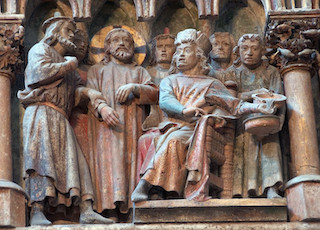
7 April 30 AD
On Friday morning, Pilate was informed that the rebel who had been arrested the night before was brought into his court. “What charge do you bring against this Man?” asked Pilate. When he learned that Jesus was a preacher of false theories in their eyes, he said, “I find no guilt in this Man.” He realized that he was dealing with a Preacher who was hardly a threat to Roman authority. Pilate decided to punish Jesus with scourging and then release Him for the sake of the feast of Passover. However, the people, incited by the hierarchs, began to demand that Barabbas, a rebel notorious in the city, be released instead. The townspeople not only knew Barabbas but also viewed him as a hero, whereas Jesus was an outsider whose name meant little to them.
Jesus, savagely scourged, had barely appeared on the platform when the shouts rang out over the square: “To the cross! Crucify Him!”, “Release Barabbas to us!” The accusers of Jesus put forward a new and most compelling argument: “He called Himself the Messiah-King. If you release this man, you are not a friend of Caesar.” Pilate knew then that his own well-being was at stake.
Giving in to their demands, rather than following his conscience and the letter of the law, the Procurator ordered water to be brought and, as the eastern custom required, ostentatiously washed his hands: “I am innocent of the blood of this Righteous Man.” The Condemned was handed over to the soldiers.
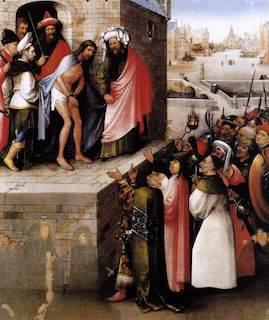
At noon on the Passover Friday, April 7, 30 AD, the procession, having left the Pretorium, the Procurator’s palace, moved through the narrow streets of Jerusalem. According to the cruel practice, the condemned had to carry the crossbars on which they were to be crucified. Mutilated by the scourging, Jesus walked with difficulty. After exiting the city, they turned toward a hill not far from the road. For its shape, the hill was known as Golgotha or “Skull,” on the top of which crosses would be placed. The Romans always crucified the convicts along the busy roads to intimidate the recalcitrant by this spectacle.
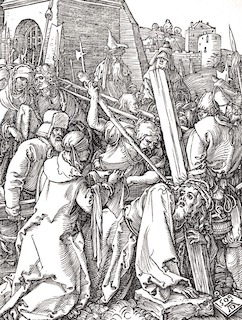
Crucifixion was one of the most inhumane forms of execution invented by the ancient world. The condemned were nailed naked to a post with a crossbar and left there to die slowly. Their wounds ached unbearably, the sun burned their head, and asphyxiation tortured them.
The soldiers tore Jesus’ clothes off Him leaving only a loincloth. The Condemned was placed on the cross. There was a dreadful sound of hammer pounds driving enormous nails into His wrists and feet. Those standing nearby heard Jesus say, “Father, forgive them, for they do not know what they are doing” (see Lk 23:34). After the crosses with the crucified were erected, the convoy had to remain in place until the last breath of the condemned. Meanwhile, the wind began to blow. Dark clouds covered the sky. It seemed as if the sun hid itself so as not to witness the madness of people. By three o’clock in the afternoon it became dark as at twilight.
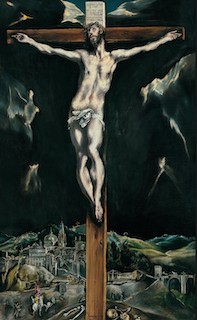
The last words of Jesus were: “Father, into Thy hands I commit My spirit” (Lk 23:46). Suddenly a cry burst from the Sufferer. Then His head fell on His chest, His heart stopped. He was dead. The Son of Man had drunk from His Cup to the last drop. Golgotha emptied. Two secret disciples of Jesus, Joseph and Nicodemus, wealthy and reputable men, received permission from Pilate to take the body of Jesus. With the help of servants, the body was taken off the cross and moved to a nearby garden. The lot belonged to Joseph, who had prepared himself a crypt there.
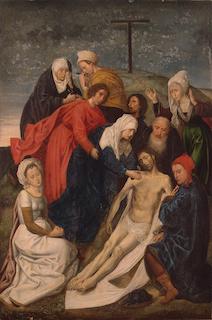
They wrapped the deceased Jesus in burial cloths, carried Him into the cave, and covered the entrance with a round stone slab. Two women from among His close disciples were present at that moment.
And the apostles? They knew nothing of the place of His burial. Terror seized them. For now they had been spared. But how long would it last? And even more than that, they were tormented by the thought that the One who had borne witness to the truth and promised to lead them into the Kingdom of God, now lay breathless. Did it mean that Jesus was really not the One they had taken Him for, the Messiah and the Messenger of God?
9–14 April 30 AD
There is much that is incomprehensible in the annals75 of history, but its most inconceivable event is the life of Jesus of Nazareth. It is rightly believed that the mystery of Christ’s death and resurrection transcends the limits accessible to human knowledge. However, there are also tangible facts that are within the historian’s line of sight. At the very moment when the work of Jesus Christ, having barely begun, seemed to have perished forever, and His disciples had lost their faith, everything suddenly and radically changed. Those who had just deserted the Teacher and renounced Him, boldly proclaimed the Resurrection of Jesus Christ. The testimonies of the Apostle Paul together with the Paschal narratives of the Gospels prove the reality of the spiritual resurrection of the disciples and their resolute fervor to preach the Good News.
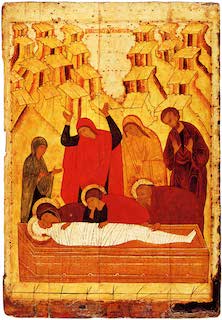
The Sanhedrin needed its own official line: it was announced that Jesus’ disciples stole His body at night and began to spread rumors that He was alive.
But if the apostles participated in the forgery or knew about it, where would they have found the strength of spirit and the courage to stand up for a deliberate deception, especially in the face of death? Or could it be that, perhaps, the Body of Jesus was taken away by someone else? The proponents of that theory forget that the disciples at first thought the same thing and became even more despondent. The change in them took place only after they saw the Risen Jesus.
The Apostle Paul’s expression “spiritual body” (1 Cor 15:44) appears to be key to understanding the Passover Mystery. It means that a unique victory of the Spirit took place in the garden of Joseph, which, rather than destroying the flesh, gave it a new and higher form of existence. For the apostles, the Resurrection became the guarantee of the invincibility of Good that was personified in Jesus.
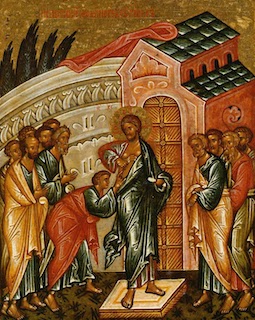
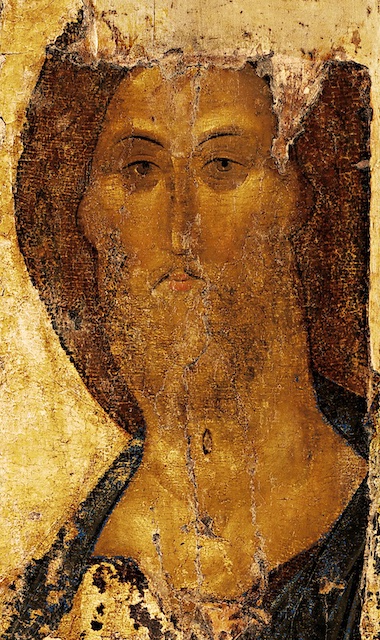
The Gospels tell us how Jesus came to His disciples when they were inside a locked house, joined them on the way to a neighboring settlement, and appeared on the shore of the Sea of Galilee. Each time it was a real encounter that opened the eyes of the disciples to the presence of Jesus. In those bright days, the apostles were completely reassured in their faith. Of the Twelve, only Thomas did not see the Lord. When he heard the ecstatic words of the other disciples, he could not share their excitement. There must have been a mistake! On one of the last days of Passover, the disciples gathered together in a certain house. The doors were tightly locked: the fear of persecution had not yet calmed down. And then again, they all suddenly saw Jesus. He turned to Thomas: Come, reach out your hand and see for yourself!
“My Lord and my God!” was all the Apostle could muster. He thought no more of needing proof. “You have believed,” said Christ, “because you have seen Me. Blessed are those who have not seen and yet have believed” (see Jn 20:24–29).
The last words of the Risen Lord on the 40th day after Passover were: “Go and make disciples of all the nations, baptizing them in the name of the Father and of the Son and of the Holy Spirit, teaching them to observe all that I commanded you; and lo, I am with you always, even to the end of the age” (Mt 28:19–20).
Centuries have gone by. Empires rose and fell, civilizations perished, the face of the earth changed, but the Church founded by Jesus Christ of Nazareth rises like a rock amidst this raging sea. The faith, which in its early days was professed by only a few dozen people, today guides a billion inhabitants of the earth, who speak different languages and have created countless forms of culture.
Christianity combined the wisdom of Athens and the aspirations of the East with the Rome’s dream of universal “accord”; it condemned the oppressors, elevated women, and helped to eradicate slavery. The Christian “leaven” became in Europe and the New World a source of dynamism, which had not been known in all fifty thousand years of prior human existence.
Thunderstorms and hurricanes swept over the Church, external and internal dangers lay in wait for her. The lust for power by leaders and paganism of the crowd, worldly and ascetic temptations, the onslaught of adversaries and the sins of Christians, strife and schisms—all this at times seemed to endanger the very existence of the Church. But she surmounted all historical battles and crises.
The secret of her invincibility is in the Son of Man, who, according to the words of the Apostle, “is the same yesterday, today, and forever” (Heb 13:8).
The unenlightened human consciousness seeks external grandeur, worships visible power; yet this is not what the Gospel affords. Every soul which has attained Jesus Christ now knows that man is not a lonely wanderer in the black cosmic vastness, but a child of God, a co-participant in the Divine plans. In Him, the hidden and incomprehensible Creator became close to us, and this fills life with joy, beauty, and meaning. There is no longer the “terrible silence of the abyss”; the light of Christ and the love of the Heavenly Father have risen above all.
E. Pusey, The Confessions of S. Augustine: Revised from a Former Translation, John Henry Parker, Oxford, 1843, p. 1.
A. Men, A. Macnaughton, The Wellsprings of Religion, St Vladimir’s Seminary Press, United States, 2017.
Galatians 4:4.
Matthew 13:33.
M. Born, I. Cohen, My Life & My Views, Charles Scribner’s, New York, 1968, p. 112.
C. Dawson, Progress and Religion: An Historical Enquiry, Sheed & Ward, London, 1938, pp. 80–81.
A. Armstrong, Enneads: With an English Translation by A.H. Armstrong, Vol. 7, Harvard University Press, Cambridge, Mass., London, 1966, p. 315.
A. Einstein, D. Rowe, R. Schulmann, Einstein on Politics: His Private Thoughts and Public Stands on Nationalism, Zionism, War, Peace, and the Bomb, Princeton University Press, Princeton, 2007, p. 229.
E. Gilson, J. Delhomme, G. Marcel, Existentialisme chrétien: Gabriel Marcel, (In French), Plon, Paris, 1947, p. 15.
J.-J. Rousseau, Emile, D. Appleton and Company, New York, 1909.
A. Einstein, A. Calaprice, F. Dyson, The Ultimate Quotable Einstein, Princeton University Press, Princeton, 2013, p. 325.
M. Planck, Scientific Autobiography and Other Papers, Williams & Norgate, London, 1950, p. 186.
V. Shiltsev, Lomonosov’s Discovery of Venus Atmosphere in 1761: English Translation of Original Publication with Commentaries, 2012.
F. Bacon, B. Montagu, The Works of Francis Bacon, Lord Chancellor of England: Life of Bacon and notes, W. Pickering, London, 1834, p. ccccxliv.
P. Plotinus, S. Mackenna, The Ethical Treatises: Being the Treatises of the First Ennead with Porphyry’s Life of Plotinus, and the Preller-Ritter Extracts Forming a Conspectus of the Plotinian System, P. L. Warner, publisher to the Medici society, London & Boston, 1926, p. 89.
L. Tolstoy, D. Patterson, Confession, Norton, New York & London, 1996, p. 74.
M. Planck, H. Roos, A. Hermann, Vorträge Reden Erinnerungen, (In German), Springer Berlin Heidelberg, 2001, p. 156.
A. Schweitzer, C. Joy, Albert Schweitzer: an Anthology, Beacon Press, Boston, 1947, p. 120.
O. Pfleiderer, D. Huebsch, Religion and Historic Faiths, T. Fisher Unwin, New York, 1907, p. 12.
T. Huxley, Evolution and Ethics, Macmillan & Company, London and New York, 1893, p. 31.
G. Lessing, H. Nisbet, K. Ameriks, Lessing: Philosophical and Theological Writings, Cambridge University Press, 2005, p. 54.
N. Berdyaev, S. Janos, The Philosophy of Freedom, frsj Publications, United States, 2020, p. 135.
Genesis 1:1.
E. Darwin, Zoonomia, Thomas and Andrews, Boston, 1809, p. 401.
E. Schrödinger, What is Life?: And Other Scientific Essays, Doubleday, New York, 1956, p. 83.
P. Teilhard de Chardin, The phenomenon of man, Harper & Row, New York, 1965, p. 171.
F. Engels, C. Dutt, Herr Eugen Dühring’s Revolution in Science: (Anti-Dühring), International Publishers, New York, 1966, p. 310.
K. Marx, Capital, Vol. III, Progress Publishers, Moscow, 1965, p. 820.
J. Sartre, Existentialism and Human Emotions, Citadel Press, New York, 1985, p. 23.
N. Berdyaev, The Meaning of the Creative Act, Collier Books, New York, 1962, p. 212.
G. Flaubert, E. Marx-Aveling, Gustave Flaubert, e-artnow, 2017.
Ref. 26, p. 272.
c.f. Genesis 3:8.
E. Ludwig, Goethe: The History of a Man 1749–1832, Blue Ribbon Books, New York, pp. 621–622.
Ref. 22, pp. 138–139.
Colossians 1:18.
G. Derzhavin, Ode to God (1784), [English translation online; accessed 10-August-2020].
F. Tyutchev, F. Jude, The Complete Poems of Tyutchev in an English Translation, Poem “Our Age” (1851), Durham, 2000.
S. Frank, B. Jakim, The Meaning of Life, Eerdmans Publishing Company, 2010, p. 81.
Genesis 3:5.
1 John 5:4.
J. Pritchard, Ancient Near Eastern Texts Relating to the Old Testament with Supplement, Princeton University Press, Princeton, 2016, p. 385.
C. Hayes, Introduction to the Bible, Yale University Press, 2012.
A. Men, History of Religion: Magicalism and Monotheism, Vol. II, (In Russian), Slovo, Moscow, 1991.
Exodus 14:11.
Exodus 14:13.
c.f. Exodus 3:17.
L. Giles, The Sayings of Lao Tzŭ, Orient Press, London, 1904, p. 20.
Ibid., pp. 20, 22.
Ibid., p. 31.
Ibid., p. 19.
Ibid., p. 25.
Ibid., pp. 41–42.
J. Legge, The Sacred Books of China: The Tao te ching of Lao Tzŭ. The writings of Chuang Tzŭ (books I–XVII), Dover Publications, New York, 1962, p. 357.
M. Dawson, A. I. for Scientific Research, The Ethics of Confucius: The Sayings of the Master and His Disciples Upon the Conduct of "the Superior Man," Putnam, New York, 1915, p. 282.
F. Müller, The Upanishads, The Christian Literature Company, New York, 1897, p. 101.
V. Seshacharri, S. Sastri, The Upanishads and Sri Sankara’s Commentary, Natesan & Co., Printers and Publishers, Esplanade, Madras, 1898, p. 101.
B. Baba, Srimad Bhagavad Gita: solution of life problems, Ch. 9, v. 32, Ramchadra Ambadas Joshi, Poona, India, 1950, p. 249.
The Numerical Discourses of the Buddha: A Complete Translation of the Anguttara Nikaya, The Book of the Threes, Sukhumala Sutta (39), Wisdom Publications, United States, 2012, pp. 239–240.
N. Namoli, O. Potparic, T. Bodhi, B. Bhikkhu, G. Buddha, J. Gibson, The Middle Length Discourses of the Buddha: A Translation of the Majjhima Nikaya, Ariyapariyesana Sutta (26), Wisdom Publications, United States, 1995, p. 256.
M. Walshe, S. Thera, The Long Discourses of the Buddha: A Translation of the Digha Nikaya, Maha-satipatthana Sutta (22), Wisdom Publications, United States, 2005.
S. Chatterjee, D. Datta, An Introduction to Indian Philosophy, Rupa & Co., New Delhi, 2014, p. 118.
M. Walshe, S. Thera, The Long Discourses of the Buddha: A Translation of the Digha Nikaya, Maha Sudassana Sutta (17), Wisdom Publications, United States, 2005.
A. Murray, The Odyssey, William Heinemann and G.P. Putnam’s Sons, London and New York, 1919, p. 207.
G. Davenport, Conjunctions 1984, Poem 71, 61.
Euripides, I. Johnston, Bacchae, Richer Resources Publishing, United States, 2008, p. 10.
Aeschylus, I. Johnston, I. Crowe, Prometheus Bound, Richer Resources Publications, United States, 2012, p. 11.
Ibid., p. 20.
Ibid., p. 53.
Sophocles, I. Johnston, Oedipus the King, Richer Resources Publications, United States, 2007, p. 20.
Ibid., pp. 24–25.
Ibid., p. 44.
Ibid., p. 55.
Ibid., p. 65.
Ibid., p. 67.
Plato, C. Reeve, Cratylus, 402a, Hackett Publishing Company, United States, 1998, p. 33.
B. John, Early Greek Philosophy, Heraclitus, Fragments 53 (44) and 80 (62), Adam & Charles Black, London, 1920, pp. 136–137.
Ibid., Fragment 51 (45), p. 136.
Ibid., Fragment 10 (59), p. 137.
Ibid., Fragment 30 (20), p. 134.
Ibid., Fragment 41 (19), p. 134.
J. Hastings, Encyclopaedia of Religion and Ethics, Vol. 6, Scribner, New York, p. 593.
Ref. 77, Fragment 102 (61), p. 137.
Plato, H. N. Fowler, Plato in Twelve Volumes, Vol. 9, Plat. Phaedrus 230 d, Harvard University Press, 1925.
Xenophon, E. C. Marchant, Memorabilia. Xenophon in Seven Volumes, Xen. Memorabilia, IV, 2, 24, Harvard University Press, Cambridge, MA, 1923.
Plato, H. N. Fowler, Plato in Twelve Volumes, Vol. 1, Plat. Apology, 30 a, b, Harvard University Press, 1966.
Ref. 85, Xen. Memorabilia, I, 1, 9; I, 3, 4.
Ref. 86, Plat. Apology, 24 a, b.
Ref. 85, Xen. Memorabilia, IV, 8, 5.
Ibid., Xen. Memorabilia, IV, 8, 9.
Ref. 86, Plat. Apology, 28 e, 29 a.
S. McComb, Homiletic Review 1905, 49, 180.
P. A. Florensky, Theology Bulletin 1909, (In Russian), 285.
V. S Soloviev, Politics, law, and morality. Yale University Press, 2014, p. 235.
Plato, P. Shorey, Plato in Twelve Volumes, Vol. 5 & 6, Plat. Republic, 514 a and on, Harvard University Press, 1966.
Ref. 84, Plat. Phaedrus 249 c.
Ref. 86, Plat. Phaedo, 66 a.
Ref. 95, Plat. Republic, 509 b.
Plato, W. Lamb, Plato in Twelve Volumes, Vol. 9, Plat. Timaeus 30, 31, Harvard University Press, 1925.
Jerome, Preface to Commentaries on Amos in Three Books, Book I.
Amos 7:14.
Romans 2:14.
Amos 5:13.
E.g., see Chas. F. Kent, The Old and New Testament Student 1892, 14, 332–344.
Ezekiel 9:8.
J. Darmesteter, Dhalla, B. N. Dhabhar, L. Mills, J. H. Peterson, C. Bartholomae, Avesta, English Translation, [Available online; accessed 18-August-2020].
Epicurus, R. Hicks, Letter to Menoeceus, [Available online; accessed 19-August-2020].
H. Usener, E. Anderson, Epicurus: Fragments, [Selections from the classic compilation of Hermann Usener (1834–1905); fragment U548; available online; accessed 19-August-2020].
Romans 7:15.
L. Seneca, A. Stewart, L. Annaeus Seneca Minor Dialogues: Together with the Dialogue On Clemency, Of Providence, VI, G. Bell and Sons, London, 1912.
F. Josephus, W. Whiston, The Wars of the Jews or History of the Destruction of Jerusalem, Josephus, Jewish War 2.8.14; available online; accessed 19-August-2020.
The (Cairo) Damascus Document (CD) 1:18; Pesher Psalms [4Q171] I 27.
D. Laertius, R. Hicks, Lives of Eminent Philosophers: Books 6–10, Diogenes Laertius, VII, 142, Harvard University Press, 1925.
Ref. 113, Diogenes Laertius, VII, 149.
P. of Alexandria, On the Life of Moses, Philo on Moses II, IV (20); available online; accessed 19-August-2020.
A. Men, S. Brown, Son of Man, Oakwood Publications, United States, 1998.
Suetonius, A. Thomson, T. Forester, The Lives of the Twelve Caesars, Claudius, XXV, G. Bell and sons, London, 1901, p. 318.
A. Pushkin, Complete Collected Works, Vol. 7, (In Russian), USSR Academy of Sciences Press, Moscow and Leningrad, 1948, p. 443.
Matthew 3:3.
G. Chesterton, The Everlasting Man, Hodder & Stoughton, London, 1927, p. 240.
In 1983, there appeared an article titled “The archpriest Alexander Men as a commentator of Sacred Scripture” under the name of Fr. Sergey Antiminsov (a pseudonym), which contained criticism of Fr. Alexander’s approach to the Bible and biblical studies in general. Fr. Men responded to this criticism with two letters of his own in 1984. Below is the translation of his second longer letter that explains his position.
∗∗∗
Dear Father, I respond to some of your perplexed questions raised about the Bible and its patristic interpretations. I do this mainly to show that my view of the subject is not something novel but has existed in the Church previously.
1. We all believe that the Bible, including its Old Testament sections, is the Word of God. But is it only God’s? Should we espouse the view that the sacred authors wrote it as if “from dictation by the Holy Spirit”? This approach to divine inspiration was held by some Jewish commentators and a number of the Early Church writers. However, by and large, it was not accepted by patristic exegesis. For example, according to St. Augustine, God in the Bible “speaks as a man… through a man” (The City of God, Book XVII, Chapter 6). St. John Chrysostom points out that the writer of Genesis condescendingly “humbles himself and adapts himself to the ordinary use of men” (Homily 3 on Genesis, 3). The Lord Jesus Himself explains that the permission to divorce did not reflect the will of God but rather was a concession to the human “hardness of hearts” (Mt 19:8).
The Holy Fathers have repeatedly pointed out the differences in style, language, and personalities among the God-inspired writers. For example, according to St. Jerome, Jeremiah “seems to be more rustic than Isaiah and Hosea” (Prologue to Jeremiah). In other words, the sacred authors of the Bible were able to transmit God’s Revelation to us without losing their personal characteristics and traits that their own era had imprinted on them.
Furthermore, the sacred authors drew not only from direct inspiration but also from traditions and literary sources that they had access to. For example, there are quotations in the historical books of the Bible from the writings that have not reached our days—the epics and the chronicles (in particular, see Jos 10:13, 2 Sam 1:18, 1 Ez 2:3–7). Let me remind you that St. Luke also embarked on his Gospel “after carefully examining everything from the beginning,” taking into account the works of the “many” who had written about Christ before him.
Among the sources used by the Old Testament men, there could be traditions that had preserved information about the events of the distant past in a poetic form, and not in the form of strict factography. One example is found in the story of Daniel where it is stated that the successor of Nebuchadnezzar was the Persian King Darius; meanwhile, it is now known from the documents that he was succeeded by the Babylonian Nabonidus; Darius reigned half a century later. But this does not in the least detract from the spiritual and theological meaning of the narrative.
The presence of “various kinds of inaccuracies—historical, chronological, and topographical—as well as differences among the sacred writers” is acknowledged in the Orthodox Theological Encyclopedia (1900–1911), printed with the permission of the [Russian] Church censorship (see article on “Inspiration”, v. 2, p. 736). This is an indication that, following the example of God, they were granted to be genuine co-authors of the Spirit while retaining all the characteristics of their human nature. This idea of the divine-human nature of the Holy Scripture was formulated at the First Congress of Orthodox Theology in Athens (1936), particularly in the talks of the representatives of the Greek Orthodox Church, the archimandrite Antoniadis and Prof. Vasilios Vellas—the architect of the modern Greek biblical scholarship. A representative of the Russian theologians, Boris Ivanovich Sove (read about him in Theological Works [Scientific Theological Journal published by the Moscow Patriarchate], Issue 4) said the following at the Congress: “The mechanical literal understanding of divine inspiration of the sacred books—the heritage of the Jewish and the conservative Protestant theology—cannot be defended by Orthodox theologians as one deviating into a kind of “monophysitism,” and it must be corrected in the light of the Chalcedonian dogma of God-Manhood. The involvement of the human element in the writing of the Bible with its limitations explains the nature of the Old Testament books as historical sources, their irregularities and anachronisms, which can be corrected by extra-biblical data that have enriched, especially in recent decades, the historical account of the Ancient East. The false apologetic view of the Bible as an encyclopedia of history and social sciences should be abandoned. The divine writers of the Old Testament were first and foremost theologians and teachers of the law. The doctrines of Creation, Flood, etc. are to be viewed in this perspective. The value of the Bible is in its theology.” (Put’ [Voie or The Way—a Russian periodical published in Paris between 1925 and 1940, edited by N.A. Berdyaev and B.P. Vysheslavtsev] Issue 32). The same view was expressed at the ceremonial Act at the St. Sergius Orthodox Theological Institute (February 1944): “Since patristic thought has also established the position of full responsibility of the role of human psyche and its reflection in the writings of the sacred authors, the methodological analysis of the text and content of the Bible as informed by scientific knowledge are dogmatically justified. The critical work is relevant here because it comes along with the human element (fully present here) that warrants it. Fully present—for the Bible is not only the word of God, but also human word in their harmonious unity, or more precisely, the divine-human word.” (A.V. Kartashev, On the Biblical Criticism of the Old Testament, Paris, 1947, p. 72).
This earthly, human aspect of Scripture is studied by the discipline of isagogics whose scope includes textual, historical, and literary criticism.
But perhaps the Church Fathers rejected science in general, and we therefore have no right to use its findings for interpretation and study of the Bible? Such an opinion does in fact exist, but it is not endorsed by the Fathers themselves.
2. One of the characteristics of the patristic tradition is reception—the acceptance of all that is valuable, which is contained in science, philosophy, and culture in general. Whereas for the first generations of Christians, the question of the relationship between faith and culture wasn’t at all relevant because of the impending end of the world; beginning from the 2nd century, the Church Fathers, nevertheless, recognized, too, some value in culture. St. Theophilus of Antioch referred to Plato as “the wisest of the Greeks” and found him to have some accord with Christianity (To Autolycus, Book III, Chapter 17); he expressed a similar opinion about the Greek tragedians (Ibid, Book II, Chapter 36). St. Justin the Martyr pointed out that a number of philosophical and scholarly views were in fact arguing “the same things” as what the Christian doctrine stated (The First Apology, Chapter 20). Most apologists even explained the basics of the faith “using philosophical principles, while staying faithful to the revealed Truth.” (Bishop Filaret Gumilevsky, The Historical Doctrine of the Fathers of the Church, v. 1, p. 72)
Clement of Alexandria wrote on the issue of faith and knowledge, “I am not oblivious of what is babbled by some, who in their ignorance are frightened at every noise, and say that we ought to occupy ourselves with what is most necessary, and which contains the faith; and that we should pass over what is beyond and superfluous… Others think that philosophy was introduced into life by an evil influence, for the ruin of men, by an evil inventor.” (The Stromata, Book I, Chapter 1). He goes on to say, “Some, who think themselves naturally gifted, do not wish to touch either philosophy or logic; nay more, they do not wish to learn natural science. They demand bare faith alone, as if they wished, without bestowing any care on the vine, straightway to gather clusters from the first.” (Ibid, Chapter 9). The friendship with God “is caused by… faith combined with knowledge” (Ibid, Chapter 6).
That is why most Church Fathers and Teachers did not neglect to receive a higher education in then pagan schools (St. Basil the Great, St. Gregory the Theologian, St. Gregory of Nyssa, St. John Chrysostom and many others). Moreover, they did not consider it to be their exclusive right. For instance, St. Basil advised Christian youth to read and study pagan literature (“Address to young men on the right use of Greek literature”). The saint himself widely used the works of Aristotle, Pliny, and other naturalists to describe the animal and plant world in his “Hexaemeron.” At the same time, he obviously remained within the limits of ancient science (in particular, following Aristotle, he believed that mice, toads, and insects can spawn from mud [Hexaemeron IX]; in another example, St. Augustine refused to believe that people could live on the opposite side of the earth). This cannot force us today to return to the scientific views of the Greco-Roman era only because they were espoused by the Church Fathers. But on the other hand, they bequeathed to us the very principle of allowing to incorporate the findings of science into theological understanding of the faith.76
The Church Fathers themselves worked intensively on the isagogics of Scripture, clarifying the original text, comparing translations, answering the questions about the authorship of the sacred books, even though these books had already been long recognized as canonical (e.g., the works of Origen, St. Jerome, St. Theodoret).
Should we just copy the patristic isagogics? Or, following the example of natural sciences, should we rather focus on the principles themselves? One modern theologian replies, “If we consider the writings of the Church Fathers to be a witness of truth, we ought to be with them in spiritual continuity. This does not mean that we should blindly repeat everything that is written by the Holy Fathers, but rather it involves the assimilation of certain internal logic, intuition, the sequence of the development of patristic thought” (Apr. John Meyendorff, Introduction to Patristic Theology, p.10 [in Russian]). A.V. Kartashev writes, “The Church Fathers were not magicians and sorcerers in the field of scientific knowledge. They, and not only they, but even our closest ancestors, for example, even the theologians of the 18th century, could not know the countless facts that have enriched us in the 19th and 20th centuries, the era of numerous archaeological excavations” (A.V. Kartashev, On the Biblical Criticism of the Old Testament, Paris, 1947, p.76).
3. First of all, it is the very possibility of discussing the dating, authorship, composition, and sources of the divinely inspired sacred books rather than the specific conclusions of the patristic isagogics that are important to us. It should also be emphasized here that the Church Fathers and Teachers allowed great breadth and latitude of opinions in this scholarly area, because science cannot affect the dogmatic truth of divine inspiration. Fr. Sergei Bulgakov wrote, “The authority of the sacred books does not depend on the historical accuracy of the inscription of their authorship, but on the Church’s assessment of the content of these books” (Two Cities, v. 2, p. 53). The same thought was expressed in another way by A.S. Khomyakov, who said that if they had proved that the Epistle to the Romans was not written by the apostle Paul, the Church would have said: “It came from me.”
Here are a few examples of how the views of the Church Fathers were varied on the provenance of the Old Testament books.
St. Jerome believed that a part of the Pentateuch was written by Ezra (“The Perpetual Virginity of Blessed Mary”). He also thought that the Book of Joshua was not compiled by him, whereas St. Theodoret comes to the conclusion that the Book was not written by “Joshua but by someone living later” (St. Jerome, Letter to Paulinus; St. Theodoret, Commentaries on the Book of Joshua, Question 14). The saint says the same thing about the Book of Judges (Commentaries, Question 2). St. Jerome ascribes the Books of Kingdoms to Samuel and Ezra, whereas St. John Chrysostom and St. Athanasius to Samuel, Nathan, Gad, Isaiah, and other prophets (refer to their Old Testament Synopses). Some fathers ascribed the Book of Judith to her, while others to Achior or Eliakim, etc. There was no consensus regarding the authorship of the Books of Tobit, Esther, Job, Chronicles. The Archbishop Filaret of Riga, having studied various views of the Church Fathers, came to the conclusion that the question on the authorship of Ecclesiastes “remains open” (Bp. Filaret, On the Provenance of Ecclesiastes, Kiev, 1885, p. 21). Some Church Fathers believed that the Wisdom of Solomon was written by him, while others refuted that.
It is worth noting that the Church Fathers extended a similar breadth of their isagogical research to the New Testament. St. Dionysius the Great when comparing the Book of Revelation and the fourth Gospel came to the conclusion that they had been written by two different individuals. He acknowledged the sacred authority of the Apocalypse (“I should not myself venture to reject the book”) but he did point out that there were too many differences between it and other Johannine writings for them to have the same author. The saint wrote, “And yet once more one can estimate the difference between the Gospel and Epistle and the Revelation from the literary style. For the first two books are not only written in irreproachable Greek, but are also most elegant in their phrases, reasonings and arrangements of expression... That this [author] had seen a Revelation and received knowledge and the gift of prophecy, I do not deny, but I observe his dialect and inaccurate Greek style, which employs barbaric idioms and sometimes even faulty constructions” (“On the Promises”, Eus., H. E. vii. 24 and 25).
Note that a number of books whose authors were believed to be known and that were highly regarded (the Book of Enoch, Psalms of Solomon, The Assumption of Moses, and others) were rejected by the Church and declared to be apocryphal. This once again confirms the position that the canonicity was not determined on the basis of the name of the author appearing in the title of the book.
4. Continuing the works of the Church Fathers, Christian isagogics has achieved considerable results in clarifying the dating, authorship, and composition of the holy books. In particular, there arose a whole school of Orthodox exegetes who showed, quite convincingly, that the authorship of Moses, David, and Isaiah should be understood in a broad sense. They are authors in spirit, bearers of the original Sacred Tradition. The Pentateuch, the Psalms, and the Book of Isaiah rightfully bear their names. But in the literal sense, they only laid the foundation for these books, which were finished by other inspired men—the prophets and the sages.
S. Trubetskoy and the academician B.A. Turaev can be considered as the founders of this school. Turaev taught in the theological school, contributed to the Theological Encyclopedia, and was a member of the Local Council of the Russian Church in 1917–18. No one ever questioned his loyalty to Orthodoxy. In his magnum opus History of Ancient East we read, “The attribution of individual biblical books to certain authors must be understood in many cases not in our own but in the Eastern sense. The East did not know literary property: authorship and individual style in writings became manifest with sufficient clarity in an almost modern sense only in the books of the prophets.” (v. 1, p. 6).
These principles were also shared by the professor I.D. Andreev of Moscow Theological Academy as well as Fr. A. Yelchaninov—one of the most eminent Orthodox writers and pastors of our time. He expressed his views on the Old Testament in a book on the history of religion (1910), which he wrote in co-authorship with Florensky and Bulgakov. And finally, these isagogics findings formed the basis for the course on Holy Scripture, which was offered at the St. Sergius Orthodox Theological Institute, where it was taught both orally and in writing by such prominent Orthodox biblical scholars as A.V. Kartashev and its rector, the protopresbyter Alexis Knyazev. Today, the concepts of this school have become dominant: there is not a single Orthodox (and Catholic) biblical scholar who enunciates different views. It is something worth considering by those who persist in denying the findings of modern biblical isagogics (I’m not talking about Baptists who continue to stand on the positions of the old fundamentalism).
5. In conclusion, I will touch upon problems of exegesis. Is there a single patristic interpretation of the Old Testament?
At the aforementioned Congress of Orthodox Theologians, it was stated that the holy fathers “are of tremendous value for the Orthodox Old Testament researcher, who, nevertheless, must take into account the differences in interpretations of the fathers, without automatically raising any of them to the level of Tradition of the Church. Orthodox biblical scholars rightly draw attention to the Church interpretation (liturgical, iconographic) of the Old Testament, identifying the Church-wide exegetical Tradition while separating out later and accidental elements.”
There are many such differences in patristic writings. I will give just some examples.
St. Ephrem the Syrian considers the words in Gen 1:1 to be an indication of the beginning of creation in time; however, St. Theophilus of Antioch, St. Ambrose of Milan, St. Augustine, and others see here an indication to the eternal “beginning” in which the “begotten Son” abides (Jn 1:1). In the Epistle of Barnabas, the six days of creation are interpreted as six thousand years, whereas Clement of Alexandria considered creation to be instantaneous with the “six days” serving only as a description of its structure. Papias, St. Justin, St. Irenaeus, St. Hippolytus, and others interpreted the prophecy about the Kingdom of God in the spirit of chiliasm, to which St. Dionysius the Great strongly objected. St. Augustine had a different understanding of Genesis in different periods of his life. St. Ephrem the Syrian interpreted the earthly paradise literally, but St. Ambrose was inclined to think of it as a spiritual reality (On Paradise, 2). St. Gregory the Theologian saw in Eden the image of the highest communion with God (Mystical Songs, 7). The tree of knowledge was also understood differently. St. Ephrem the Syrian considers it to be a physical tree but endowed with special properties, whereas St. Gregory the Theologian understands it as “contemplation of things divine, forbidden to the imperfect” (Oration 38). Meanwhile, St. Anastasius of Sinai in his commentary on “Six Days” believes that the nature of the trees in paradise remains unknown and that this knowledge is not necessary for the Church (8, 89). According to St. Ambrose, the biblical serpent is an allegory of sensuality (On Paradise, 2), but according to St. John Chrysostom it was an animal that Satan used as a tool (On Genesis, 2). Based on the fact that both man and woman are jointly called Adam (Gen 2:7), some fathers believed that Adam and Eve stood for reason and senses respectively (St. Ambrose, Ibid; St. Augustine, on Genesis against the Manichees, 2,12). I repeat, these are only a few examples of how the Fathers interpreted Scripture differently.
It is completely unfounded to think that the Fathers considered the literal exegesis as the only correct one. Even such an advocate of literal interpretation as St. John Chrysostom pointed out that much is written in Scripture figuratively “out of considerateness for the way human beings speak” (on Genesis, Homily 3). Talking about the word “breathed” (life into man) the saint writes: “Because if they wanted to assign a mouth to God on the score of Scripture’s saying, ‘He breathed into him,’ they would have to equip him with hands too, since it says, ‘He formed the human being’” (Ibid, Homily 13). He continues, “God… planted a garden… what would be likely to be said about this sentence… by those rash enough to interpret in human fashion everything said about God? … What does that mean, pray? did he have need of tools...?” Explaining other anthropomorphisms of the Bible, the saint writes: “Don’t take the words in human fashion; rather, interpret the concreteness of the expressions from the viewpoint of human limitations” (Ibid, Homily 15). Following these instructions of St. John Chrysostom, one can ask whether we have the right to interpret the words “the Lord swept the sea by a strong east wind all night and turned the sea into dry land” (Ex.14:21) as if God drove the waters like a sailor with an oar? No, this biblical expression means that God used the elemental forces of nature to save the Israelites. The miracle does not become less important as a result. A huge number of miracles in history and in our own lives occur in such a way that an unbelieving mind perceives each of them merely as an accident or a coincidence. This way the volition of faith is preserved. It is not a coincidence that God’s greatest miracles—when His power directly changed the course of world affairs—took place in secret (Incarnation and Resurrection; recall that the Risen One did not appear to His enemies).
The kind of temptations that a literal understanding of the sacred texts can lead to is illustrated by Abba Serenus in relation to the interpretation of the words of the Savior about carrying the Cross. He said, “...some most earnest monks, having indeed a zeal for God, but not according to knowledge understood [this passage] literally, and so made themselves wooden crosses, and carried them about constantly on their shoulders, and so were the cause not of edification but of ridicule on the part of all who saw them… Some [passages] are capable of being taken suitable and properly in both ways, i.e., the historical and allegorical” (St. John Cassian, Conference 8, Chapter 3). St. John Chrysostom also wrote that “one passage of Scripture must be understood as is, but another—in the figurative sense; yet another in the spiritual sense, and yet another in the dual sense: both figuratively and the spiritually” (Homilies on Ps. 46). The Alexandrian patristic School preferred the allegorical method of interpretation, while the Antiochian—the literal one. At the same time, St. John Cassian saw four different sides to exegesis (Conference 14, Chapter 8).
I will end with the words of such an eminent theologian as Fr. Sergei Bulgakov: “The Church does not object to the study of the Word of God by all means possible, particularly the methods of scientific contemporary criticism; moreover, it does not decide beforehand on the findings of that criticism, provided only that a pious and religious sentiment is preserved toward the sacred text as toward the Word of God” (The Orthodox Church, SVS Press, p. 15). As to the Church Fathers, I will quote the opinion of the recognized patrologist Fr. G. Florovsky. He writes about faithfulness to Patristic Tradition that it “does not mean some sort of ‘restoration’ or some repetition of or return to the past. ‘Following the Fathers’ always means moving forward, not backwards, it means fidelity to the patristic spirit and not just to the patristic letter. One must be steeped in the inspiration of the patristic flame and not simply be a gardener pottering around among ancient texts” (The Ways of Russian Theology, 1937).
Thus, to summarize:
1) The Bible, being the Word of God, is also a human word and therefore represents a divine-human phenomenon. Its earthly, human aspects can be studied by means of science.
2) The Holy Fathers recognized the legitimacy of applying the findings of sciences to theology and to biblical studies in particular. Like any science, the biblical isagogics cannot be limited only to the data of the patristic era, but is being complemented by the new findings.
3) The canonicity and the inspiration of the holy books are not determined by the name in their title but by their content. On this basis, the Fathers freely investigated the problem of the authorship of the sacred books. Today’s biblical studies continue the same work.
4) The absolute majority of modern Orthodox experts of the Old Testament recognize the main achievements and conclusions of the historical textual criticism without encroaching on its divine inspiration.
5) The Church Fathers did not have a single generally accepted method for interpreting the Bible. Therefore, it is impossible to consider any particular exegesis to be the only Orthodox one.
The archpriest Alexander Men
January, 1984
Babylonians, see under Mesopotamia
Bacchanalia, 59, 60
Bacchus (god), see Dionysus
Bacon, Francis, 62
Berdyaev, Nikolai, 63, 64, 65
Bergson, Henri, 66
Bhagavad Gita, 67, 68
Born, Max, 69
Brahmanism, 70, 71, 72
Buddha/Buddhism, 73, 74, 75, 76, 77, 78, 79
Eightfold Path, 80
Nirvana, 81
Pancha Shila, 82
Sangha, 83
Trishna, 84
Caesar, Julius (emperor), 85, 86
Caiaphas, Joseph, 87, 88, 89
Canaan, 90, 91, 92
peoples of, 93, 94
Carthage, 95, 96, 97
Chaldeans, see under Mesopotamia
Chaos, 99, 100
Chesterton, Gilbert, 101
China, ancient, 102
art of, 103
Church (as founded by Christ), 104, 105
Cicero, 106
city, 107, 108, 109
urban revolution, 110
civilizations, ancient, 111, 112
classical antiquity, 113
Greek influence, 114
philosophy, 115
spirituality of, 116
Confucius, 117, 118, 119, 120, 121
cosmos, 122, 123, see also Universe
covenant (with God), 125, 126, 127
New Testament, 128
creation
as kenosis of God, 129
Crete, ancient
Creto-Mycenaean culture, 130
cult, as worship, 131
cynicism, 132, 133, 134, 135
Cyrus II (king), 136, 137, 138, 139
Daniel, book of, 140, 141, 142, 143
Darwin, Charles, 144
Darwin, Erasmus, 145
Zoonomia, 146
Darwinism, 147
David, 148, 149, 150
City of, see Jerusalem
offspring of, 152
Dawson, Christopher, 153
death
problem of, 154, 155, 156, 157
Diadochi, 158
Diogenes, 159
Dionysus (god), 160, 161, 162, 163, 164
Dostoevsky, Fyodor
Ivan Karamazov, 165, 166
Egypt, ancient
Hyksos, 167, 168, 169
Mizraim, as name, 170
paganism, 171, 172
people, 173
societal structure, 174
Einstein, Albert, 175, 176
Elijah, 177, 178, 179
emanation, 180
Epicurus, 181
Epicurus/Epicureanism, 182, 183, 184, 185
epistemology, 186
Esarhaddon (king), 187
eschatology, 188, 189, 190, 191
Essenes, see under Judaism
eternity, 193
Etruscans, 194
evil, 195
connection to freedom, 196
problem of, 197, 198, 199, 200, 201, 202
evolution, 203, 204, 205, 206
as ongoing creation, 207
Ezekiel, 208, 209, 210, 211, 212, 213, 214, 215
Ezra, 216, 217
excessive legalism of, 218
faith, 219, 220
and freedom, 221
and science, 222, 223
Fate, 224, 225, 226, 227
fetishism, 228
Flavius, Josephus, 229
Florensky, Pavel, 230
Frank, Semyon, 231
freedom, 232, 233, 234, 235
fear of, 236
Gathas, 237
Gautama, Siddhartha, see Buddha
God
Yahweh, 239
as Divine Essence, 240
Elohim, 241
holiness of, 242, 243, 244
knowledge of, 245
love for man, 246
unapproachability of, 247
Yahweh, 248, 249, 250
Goethe, Johann Wolfgang, 251, 252
Gospel (as Good News), 253, 254
Greece, ancient, 255
Achaeans, 256, 257, 258, 259
peoples of, 260
religion of, 261
spirituality of, 262
Gregory of Nazianzus, 263
gurus, 264
Hades, 265
Hannibal (general), 266
Hathor (goddess), 267
Hebrew
name origin, 268
Heraclitus, 269, 270, 271
Herod the Great (king), 272, 273, 274, 275
Hezekiah, 276
Hezekiah (king), 277, 278
Hinduism, 279, 280, 281, 282
avatar, 283
history
as becoming, 284, 285, 286
Homer, 287, 288, 289
Horus (god), 290
Hosea, 291, 292, 293, 294
Huxley, Thomas, 295
Hyksos, see under Egypt
Hyrcanus II (king), 297
illumination, spiritual, 298
immortality, 299, 300, 301
disbelief in, 302
India, ancient
Aryans, 303, 304, 305
religions of, 306, 307
Iran, see Persia
Isaiah, 309, 310, 311, 312, 313
Deutero-Isaiah, 314, 315, 316, 317, 318, 319, 320, 321, 322
Ishtar (goddess), 323
Israel, ancient, 324
as God’s chosen people, 325, 326
as Old Testament Church, 327
Bene-Israel, 328
conquest of Canaan, 329
diaspora, 330, 331
exile, Babylonian, 332, 333, 334
exodus from Egypt, 335, 336
Kingdom of Judah, 337
Northern Kingdom, 338, 339, 340, 341
pagan beliefs of, 342, 343, 344, 345
prophets of, 346
Remnant of, 347, 348, 349, 350
return, from Babylon, 351, 352
spiritual symbolism of, 353
theocracy of, 354, 355
Zealots, nationalists of, 356
Jehoiakim (king), 357
Jeremiah, 358, 359, 360, 361, 362, 363, 364, 365, 366, 367
Jerome of Stridon, 368
Jerusalem, 369, 370, 371, 372
as central place of worship, 373, 374
fall of, 375
Mount Zion, 376, 377
New Jerusalem, 378
Second Temple, 379, 380
Temple, 381, 382, 383
Jesus Christ
as son of David, 384
baptism of, 385
burial of, 386
crucifixion of, 387
followers of, 388
humanity of, 389
humiliation of, 390, 391, 392
Incarnation of, 393, 394
Last Supper, 395, 396
mystery of, 397, 398, 399, 400, 401, 402, 403, 404
rejection by Jewish authorities, 405, 406
resurrection of, 407, 408
signs by, 409, 410, 411
teaching of, 412, 413, 414, 415, 416, 417, 418, 419, 420, 421
year of birth of, 422
John the Baptist, 423, 424, 425
martyrdom of, 426
Jonah, book of, 427, 428, 429
Joseph (Old Testament), 430
Joshua, 431
Josiah (king), 432, 433, 434
Judaism, ancient, 435
Essenes, 436, 437, 438, 439
Hellenization, struggle with, 440
Pharisees, 441, 442, 443
proselytes, 444, 445
Sadducees, 446, 447, 448
karma, 449
Kingdom of God, 450, 451, 452, 453, 454, 455, 456, 457
koine, Greek, 458
Krishnaism, 459
Lao Tzu, 460, 461, 462, 463, 464
Tao Te Ching, 465
Lessing, Ephraim, 466
Logos, 467, 468, 469, 470, 471
Lomonosov, Mikhail, 472, 473
magicalism, 474, 475, 476, 477, 478, 479
rituals, 480
worship of ruler, 481
man
as conscious being, 482
as image of God, 483, 484
body of, 485, 486
Fall of, 487, 488, 489, 490, 491, 492
soul of, 493, 494
spirit of, 495, 496, 497, 498, 499, 500
twofold nature of, 501, 502
man-god, 503
as opposite of Christ, 504
worship of, 505
Marcel, Gabriel, 506
Marduk (god), 507
Marx, Karl, 508, 509
Mary or Mariam (Theotokos), 510, 511
materialism, 512
Merkabah, Ezekiel’s vision of, 513
Merneptah (pharaoh), 514, 515
Mesopotamia, ancient, 516
Akkadians, 517
Arameans, 518
Assyrians, 519, 520, 521, 522, 523
Babylonians, 524, 525
Chaldeans, 526, 527, 528, 529, 530
religion of Sennaar, 531
Shinar or Sennaar, 532, 533
Sumerians, 534, 535
Messianism, 536, 537, 538, 539, 540, 541, 542, 543, 544, 545
of Essenes, 546
Redeemer, 547
Suffering Servant, 548, 549
Minos (king), 550
miracles, nature of, 551, 552
Mithraism, 553
Moira (goddess), see under Fate
Moloch (god), 555, 556
monotheism, 557, 558, 559, 560, 561, 562, 563, 564
morality
and freedom, 565
and religion, 566
autonomous, 567
Moses, 568, 569, 570, 571
historicity of, 572
Mother Goddess, 573, 574, 575
Mounier, Emmanuel, 576
muni (ascetic), 577, 578
Nabatea, 579
Napoleon (emperor), 580
Nazareth, 581, 582
Nebuchadnezzar (king), 583, 584
Nero (emperor), 585
New Testament, 586
Gospels, 587
Nineveh, 588, 589, 590
noosphere, 591, 592, 593, 594, see also immortality
Northern Kingdom, 596
Old Testament, 597
and Oral Tradition, 598
apocalyptic writings of, 599
Ecclesiastes, book of, 600, 601, 602, 603
Holiness Code, 604, 605
Job, book of, 606, 607, 608, 609, 610, 611, 612
Law, 613, 614, 615
Proverbs, book of, 616, 617
religion of, 618
Sacred history, 619, 620
source, Priestly, 621
source, Yahwist, 622, 623, 624, 625, 626, 627
wisdom literature of, 628, 629
worship system, 630
Olympians (gods), 631, 632, 633
morals of, 634
Orpheus/Orphism, 635, 636, 637
cosmology of, 638
paganism, 639
Palestine, see Canaan
Panaetius, 641, 642, 643
pantheism, 644
Patanjali, 645
Pelasgians, see also Greece
Pericles (statesman), 647
Persia, 648
Aryans, connection to, 649
gods of, 650, 651
religion of, 652
Pfleiderer, Otto, 653
Pharisees, see under Judaism
Philistines, 655, 656
philosophy, 657
search for God in, 658
Phoenicians, 659
Pilate, Pontius, 660, 661
Planck, Max, 662, 663
Plato, 664, 665, 666, 667, 668, 669
Academy, 670
anamnesis, 671
authoritarian state, 672
idealism, 673, 674
The Republic, 675
Pliny the Younger, 676
Plotinus, 677, 678
Pompey the Great (general), 679, 680
Pompey, Gnaeus (statesman), 681
poor, of the Lord, 682, 683, 684, 685
Posidonius, 686, 687, 688
Prometheus (titan), 689, 690
prophets, see also revelation
universalism of, 692, 693, 694, 695, 696, 697
Punes, 698
Pushkin, Alexander, 699, 700
Pyrrho, 701, 702
Pythagoras, 703, 704, 705
Qumran, 706
Ra (god), 707
rationalism, 708
religion, 709
“death” of, 710
and morality, 711
anti-, 712, 713
as encounter with God, 714
as reflection of Existence, 715
as sense of awe, 716, 717, 718
Christ as fulfillment of, 719
definition of, 720, 721, 722, 723, 724
emergence of, 725, 726
importance for culture, 727
primitive, 728
pseudo-, secular, 729
rituals of, 730
variety of, 731
resurrection, 732, 733, 734, 735, 736
revelation
nature of, 737, 738
Rigveda, 739, 740
religion of, 741, 742
rishi, 743
Rome, 744, 745
citizenship of, 746
Empire of, 747, 748, 749
law of, 750
nature of, 751
Republic of, 752
spirituality of, 753, 754, 755, 756
war with Carthage, 757
Rousseau, Jean-Jacques, 758
sacrifice, 759, 760, 761, 762
meaning, spiritual, 763, 764
salvation, 765, 766, 767, 768
Samaritans, 769
Samuel, 770, 771
Sartre, Jean-Paul, 772
Saul (king), 773, 774
Schrödinger, Erwin, 775
Schweitzer, Albert, 776
science, 777
and faith, see under faith
faith as basis for, 779
progress of, 780
Scipio the Elder (general), 781
Seleucids, 782
Sennacherib (king), 783, 784, 785
shamanism, 786
Sibyl, 787, 788
Sinai, 789, 790, 791
skepticism, 792
Socrates, 793, 794, 795, 796, 797, 798
as “Christian before Christ”, 799
death of, 800
dialectics, 801
maieutics, 802
spirituality of, 803
Solovyov, Vladimir, 804
Sophocles, 805
Oedipus the King, 806, 807, 808, 809, 810
Spitama, see Zarathustra
stoicism, 812, 813, 814, 815, 816, 817
Sudducees, see under Judaism
Suetonius, 819
suffering, 820, 821, 822
by God, 823
meaning of, 824
Sumerians, see under Mesopotamia
syncretism, 826
Syrians, ancient, 827
Tacitus, Cornelius, 828
Tao, 829, 830
Tarquin the Elder, 831
Tarquin the Proud, 832
Teilhard de Chardin, Pierre, 833
theomachy, 834
Tiberius (emperor), 835
Tiglath-Pileser III (king), 836
Titanomachy, 837
Titans, 838
Tolstoy, Leo, 839
The Confession, 840
totemism, 841, 842
Tower of Babel, symbolism, 843
Trajan (emperor), 844
Tree of Knowledge, symbolism, 845
Tree of Life, symbolism, 846
Universe, see also cosmos
as coming into being, 848, 849
origin of, 850, 851
Upanishads, 852, 853, 854
Vishtaspa (ruler), 855
Vladimir (prince), 856
Zarathustra/Zoroastrianism, 860, 861, 862, 863, 864, 865
and moral freedom, 866
dualism of, 867, 868, 869
victory of the Good, 870
Zephaniah, 871, 872
Zeus (god), 873, 874, 875, 876
ziggurat, 877